
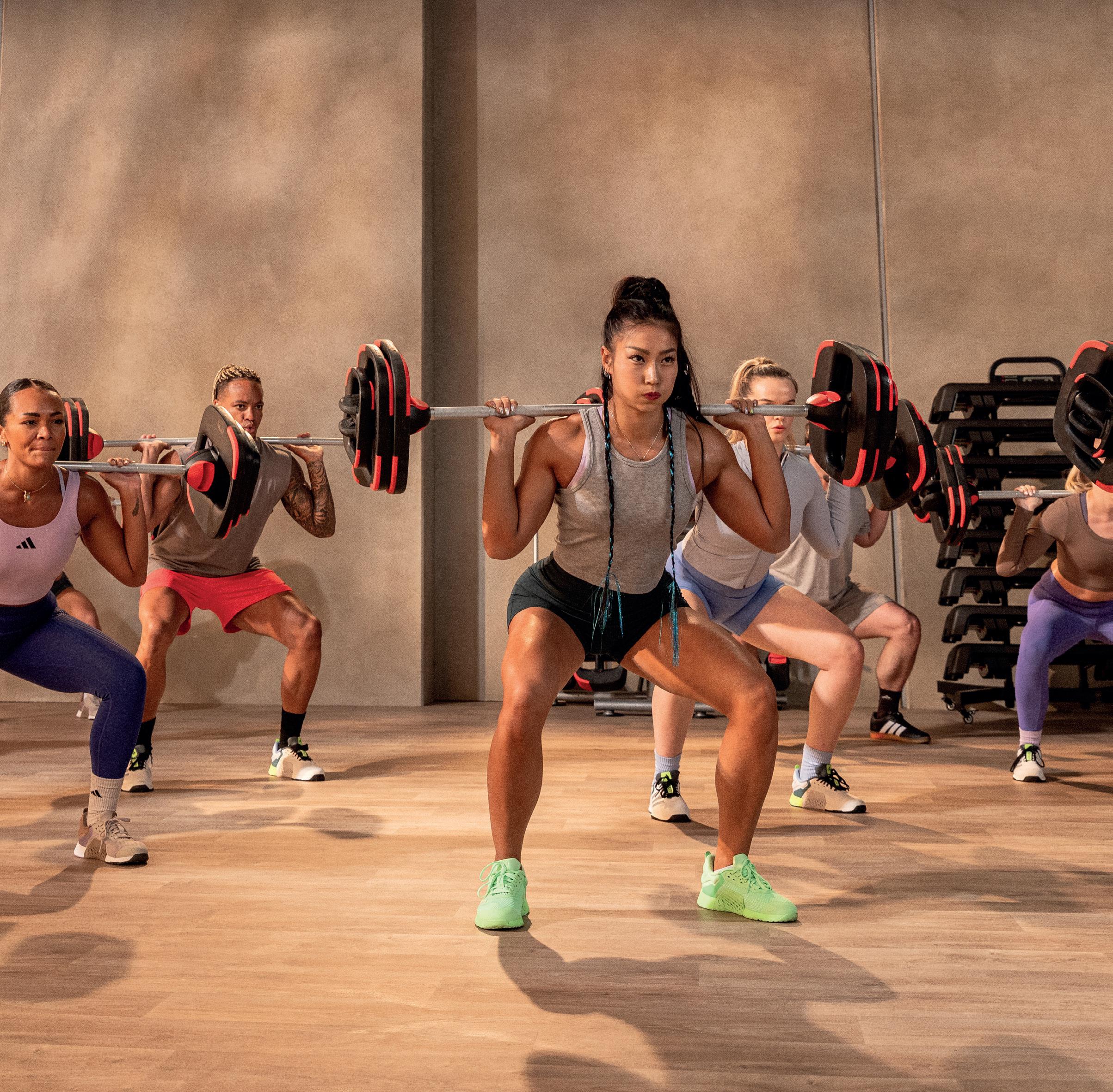



Introducing BODYPUMP HEAVY™ by Les Mills: tempobased weightlifting with traditional lifting techniques, slow moves and long recoveries. Backed by the science of BODYPUMP™ – the world’s most loved strength class for over 30 years – BODYPUMP HEAVY makes serious lifting, seriously fun, so members keep coming back for more.
Preview Now. Bring it to your studio today. Scan to learn more.



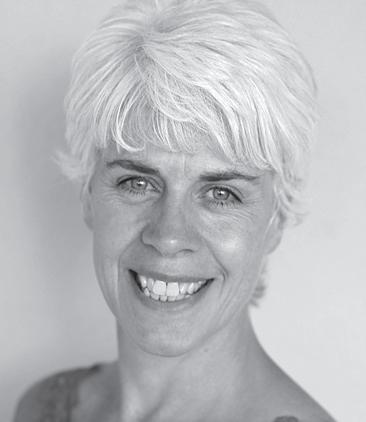
As our sector emerges as one the biggest areas of consumer expenditure, it’s exciting to see strong growth in demand. Now we need to increase supply to ensure quality of experience
e’re in the thick of a historic shift in the sector, as we move from being supply-driven to being demand-driven.
Balancing supply and demand has always been a challenge in this market. Throughout the 80s and 90s, when the first big waves of construction build-out occurred, the sector was very volatile.
Spates of overbuilding during this period undermined investor confidence, but were a classic characteristic of an emerging industry.
Today we’re in a different world, with fitness, health and wellness one of the biggest areas of consumer expenditure, demand beginning to outstrip supply and the need to create more capacity at every price point.
Operators are reporting that visitation is up since the pandemic, with more visits per member and growing membership levels creating a squeeze on space, especially at peak times.
The impact of some aggregators and keenly-priced insurance company deals are further driving up volumes.
Also contributing to the challenge is the move towards wellness, which is seeing more consumers being mindful of sleep patterns, gut health and circadian rhythms, meaning there’s greater awareness of the optimum times to exercise and resultant pressures on capacity.
Some operators are telling us extreme peak periods are undermining the customer experience, with queues for equipment and a general feeling of overwhelm that some members find offputting.
Consumers driving growth to this degree is a dynamic we haven’t been used to historically, but it’s a great problem to have. The most oversubscribed operators will accelerate rollouts, while looking for ways to reduce pressure at peak times and new approaches to sweating their existing assets.
The hospitality industry is ahead of us on this and practised at optimising every inch of real estate by doing things such as moving offices and back of house
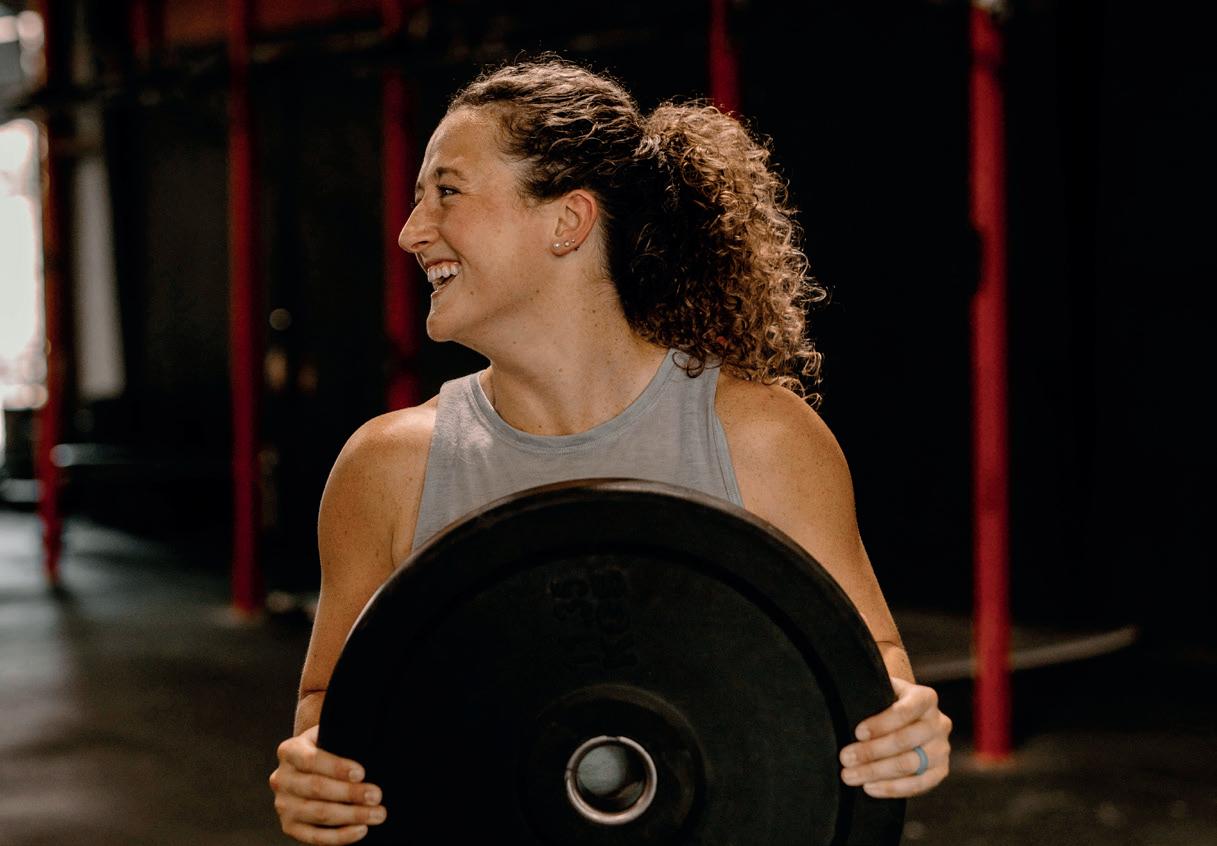
Some operators are telling us that ‘extreme peak periods’ are undermining the quality of the customer experience
functions off-site to free up floor space for customerfacing functions. I even went to a restaurant once that stored all its food off-site and had a refrigerated van ferrying ingredients from chilled storage throughout the day to free up more space for tables.
The bigger picture for our sector is that demand is going to keep growing, putting pressure on facilities and we need a battery of solutions to deal with this, including growth, pricing reviews and facility optimisation, with the aim of ensuring the customer experience remains an excellent one. ●
Liz Terry, editor lizterry@leisuremedia.com



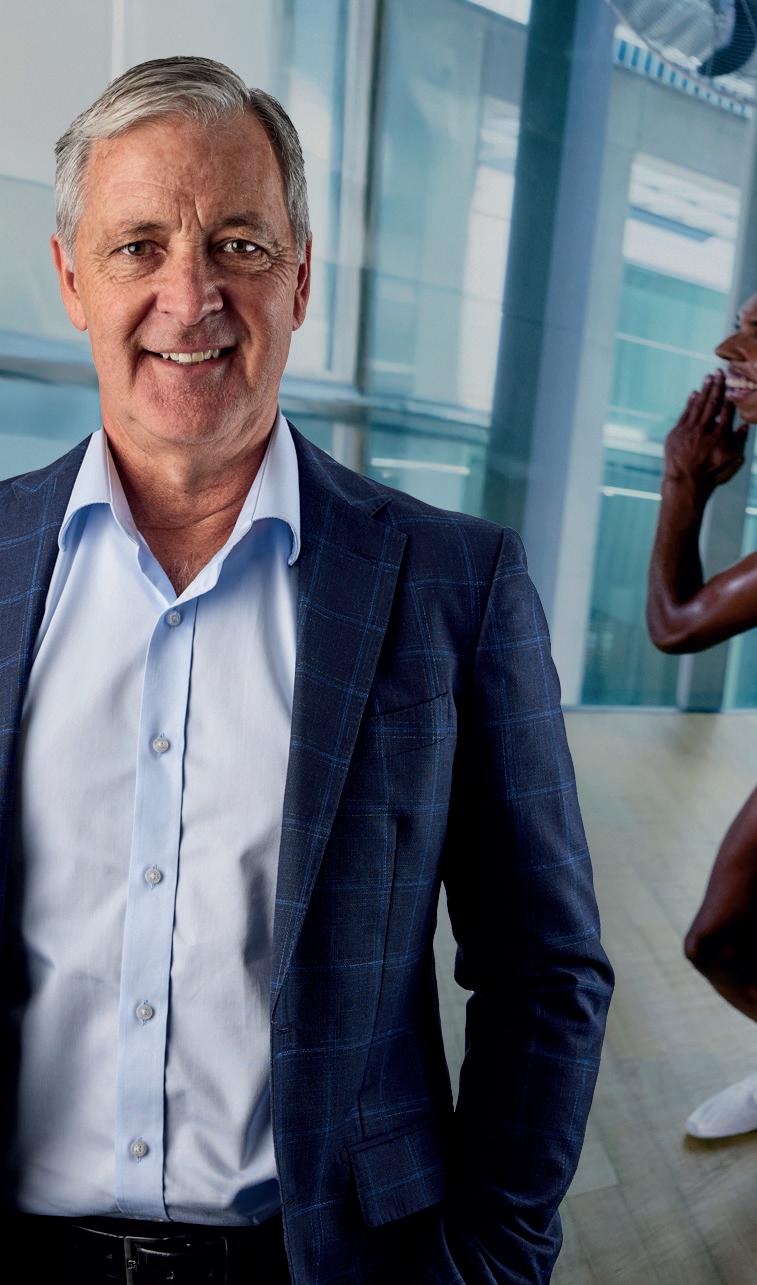








05 Editor’s Letter
The sector has flipped from being supplyto demand-led, with this being a major focus of the HCM Summit, says Liz Terry
12 HCM Zeitgeist
The benefits of brain headsets and vagus nerve stimulation, new PureGym classes and Peloton’s expansion into cross training
16 HCM news
Xponential Fitness sells Lindora and hints at BFT plans. The Gym Group celebrates its 250th UK site
24 HCM buzz
Everlast Gyms and Myprotein announce a new partnership



Greg Oliver on FLG’s ‘premium value’ proposition


30 HCM Collabs
Aion becomes Life Time’s official vest supplier, while Fitness First becomes Germany’s official Hyrox partner
32 HCM people
Natalie Davies-Lane
The leisure business and commercial manager of Move Southwark talks to HCM about the experience of bringing leisure services back in-house
38 HCM people
Lafina Diamandis
The founder of Deia Health talks about lifestyle medicine and the increased appetite for wellness spaces that overlap with healthcare
44 Interview
Greg Oliver
Growth is on the cards for Fitness and Lifestyle Group as it adopts a premium value market positioning. Its CEO and MD talks to Kate Cracknell
62 Everyone’s talking about Talent
The challenge of attracting and retaining talent is greater than ever before, as Vicky Kiernander reports
74 Life lessons
Elaine Jobson
When the Jetts CEO received a shock cancer diagnosis, she found her own way to share the news with stakeholders


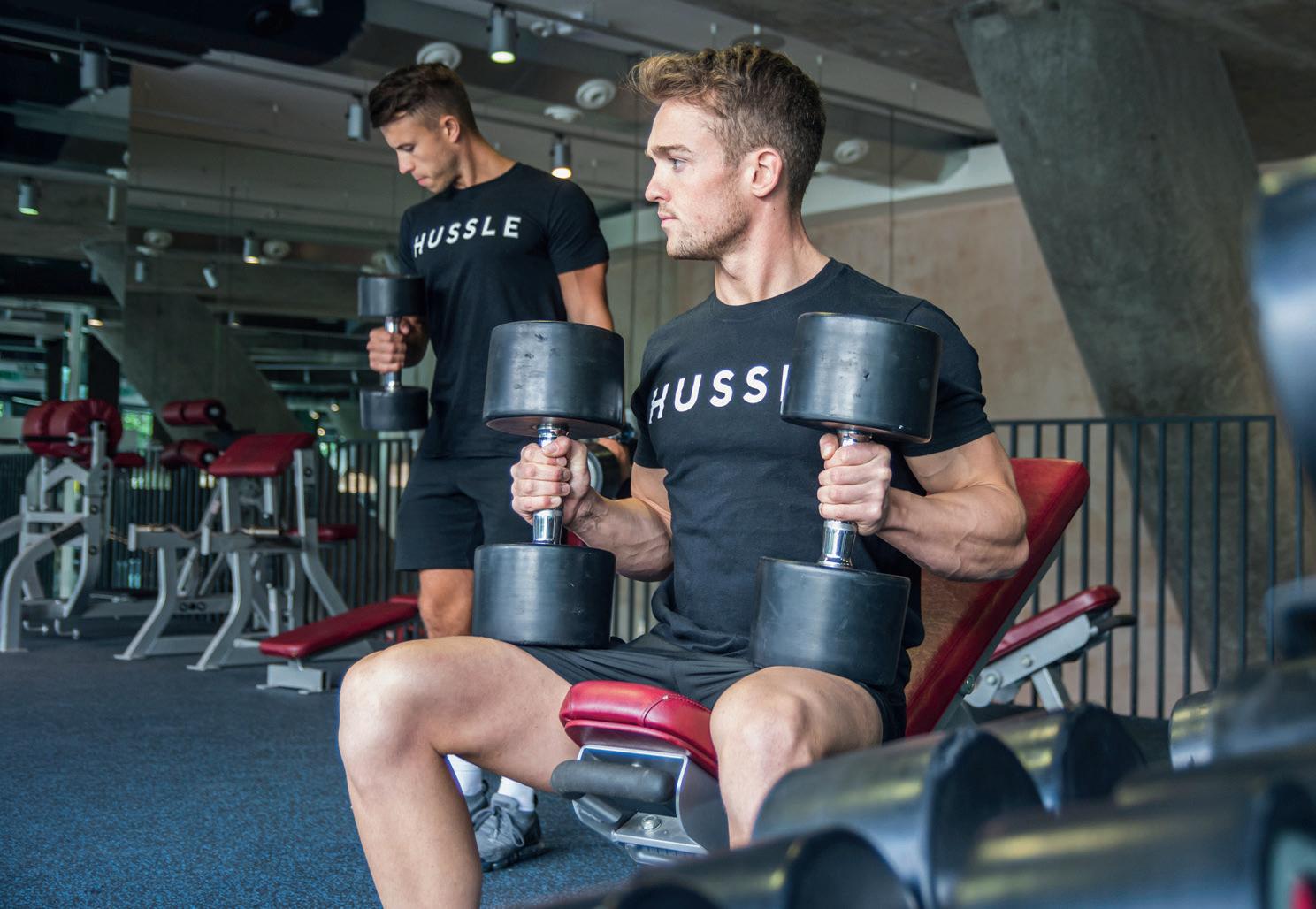
80 World of fitness
Huge opportunities exist in emerging markets, while Millennials and Gen Z are driving growth across the whole industry, says the HFA Global Report
88 Working well
Workplace wellness schemes now go well beyond gym memberships, with increasingly-aware employees looking for wider wellbeing services
100 A second renaissance
We’re in the middle of a 21st century Renaissance, driven by Gen Alpha, who are more focused on health and community, says analyst and founder of Leisure DB, David Minton

We take a look at the latest health, fitness and wellness equipment from leading suppliers in the market
If you’re in procurement, the HCM Directory is part of an extensive network of resources designed for you that includes www.HCMmag.com/CompanyProfiles
Broken hearts are real and exercise, such as swimming and cycling, can help heal them, says a research team from the University of Aberdeen


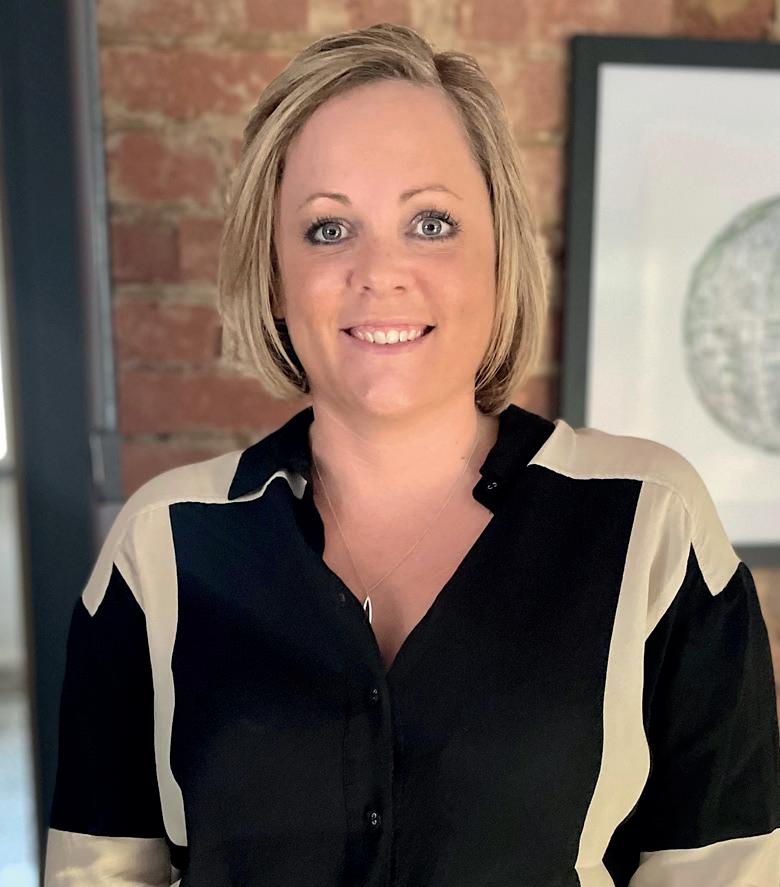



theteam@leisuremedia.com

Editor Liz Terry
+44 (0)1462 431385

Managing editor
Julie Cramer
+44 (0)1462 431385

Editor-at-large
Magali Robathan
+44 (0)1462 431385
Publisher Jan Williams
+44 (0)1462 471909

Head of news
Kath Hudson
+44 (0)1462 431385

Assistant editor Helen Andrews
+44 (0)1462 431385
Email us:
Customer service
+44 (0)1462 471901
Advertising
+44 (0)1462 431385
Subscriptions
+44 (0)1462 471910
Circulation
+44 (0)1462 471932
Finance
+44 (0)1462 471930
Credit control
+44 (0)1462 733477
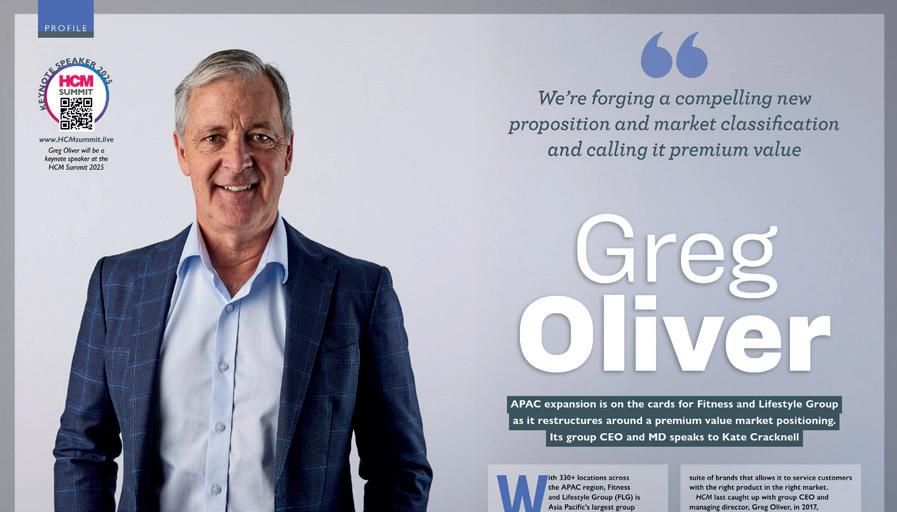
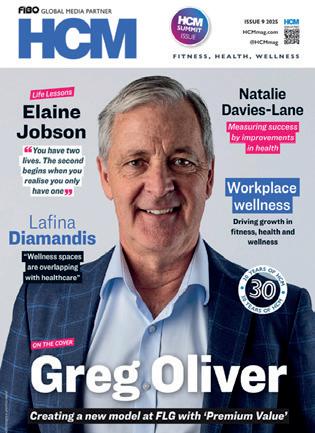
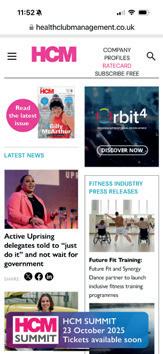
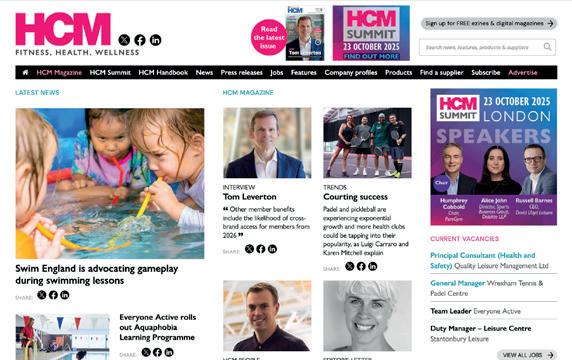
HCM digital
Read free online and enjoy extra links and searchability www.HCMmag.com/digital
HCM magazine is available in print from www.leisuresubs.com
HCM PDF
A PDF edition is available to read offline at: www.HCMmag.com/pdf
Fit Tech magazine www.fittechglobal.com www.fittechglobal.com/archive
HCM Handbook www.HCMhandbook.com www.HCMhandbook.com/pdf
HCM Online library www.HCMmag.com/archive
HCM Ezine & Instant Alerts www.leisuremedia.com/subscribe
Leisure Opportunites jobs & news www.leisureopportunities.co.uk
Buyer Search Engine www.fitness-kit.net





www.hcmsummit.live


To subscribe to HCM in print (Health Club Management): log on to www.leisuresubs.com , email subs@leisuremedia.com or call +44 (0)1462 471930. Annual subscriptions: UK £45, Europe £57, rest of world £80, students (UK) £22.
Style: HCM follows an editorial house style which precludes the use of marketing devices in body text and headlines when it comes to company names and registered trademarks. CamelCase and logical capitals are allowed. Contact the editor for more details – lizterry@leisuremedia.com.
Copyright details: HCM (Health Club Management) is published 12 times a year by Leisure Media, PO Box 424, Hitchin, SG5 9GF, UK. The views expressed in this publication are those of the authors and do not necessarily represent those of the publisher. All rights reserved. No part of this publication may be reproduced, stored in a retrieval system or transmitted in any form or by means, electronic, mechanical, photocopying, recorded or otherwise, without the prior permission of the copyright holder, Cybertrek Ltd 2025. Print and distribution Printed by The Manson Group Ltd. Distributed by Royal Mail Group Ltd and Whistl Ltd in the UK and Total Mail Ltd globally.
©Cybertrek Ltd 2025 ISSN 1361-3510 (print) / 2397-2351 (online)






































































Discover
to
Kath Hudson distills the essence of the latest HCM news to tap the trends driving the direction of the sector


In response to customer demand, Freedom Leisure is keeping Guildford Lido, in Surrey, UK open and heated through the winter. Energy efficient boilers are allowing the heating to stay on and a modern pool cover is being fitted to reduce heat loss.
http://lei.sr/D9V8c_H
Guildford Lido is a much-loved community resource

An NHS trust has achieved strong results with people who have depression by using Flow Neuroscience brain-stimulation headsets. Worn on the head, the device gently stimulates the parts of the brain which regulate mood, sleep and motivation. Seventy one per cent of those in the NHS pilot saw a reliable reduction in symptoms.
http://lei.sr/M4s7k_H

Snozone is looking for acquisition opportunities in the fi tness sector

Europe’s largest indoor ski slope operator, Snozone, is looking for acquisitions in the fitness industry. Both individual and portfolio acquisitions are being sought in order to make the business more of a year-round operation.
http://lei.sr/S9w5N_H
PureGym has shaken up its group exercise timetable with the addition of three new concepts. Strike is an MMA-inspired non-contact class involving punches, kicks and cardio; Step is a choreographed step class and Pump uses weights for an all-over workout.
http://lei.sr/r4V7N_H

PureGym’s new classes were launched on National Fitness Day


A new vagus nerve stimulator will shortly be coming onto the market. UK medical professional, Jane Ollis, has developed Sona in response to the amount of stress and burnout she witnessed. The ear-worn device stimulates the vagus nerve and uses adaptive AI to deliver personalised nervous system support.
http://lei.sr/R8Q6x_H
http://lei.sr/Y9g9y_H
All of the UK’s 107 stroke centres have now been equipped with an AI tool which can read brain scans immediately and inform whether emergency surgery is needed. It’s estimated this could triple the rate of recovery by allowing appropriate treatment to start faster. Early adopters have seen the number of people who regain functional independence after a stroke improve from 16 per cent to 48 per cent.
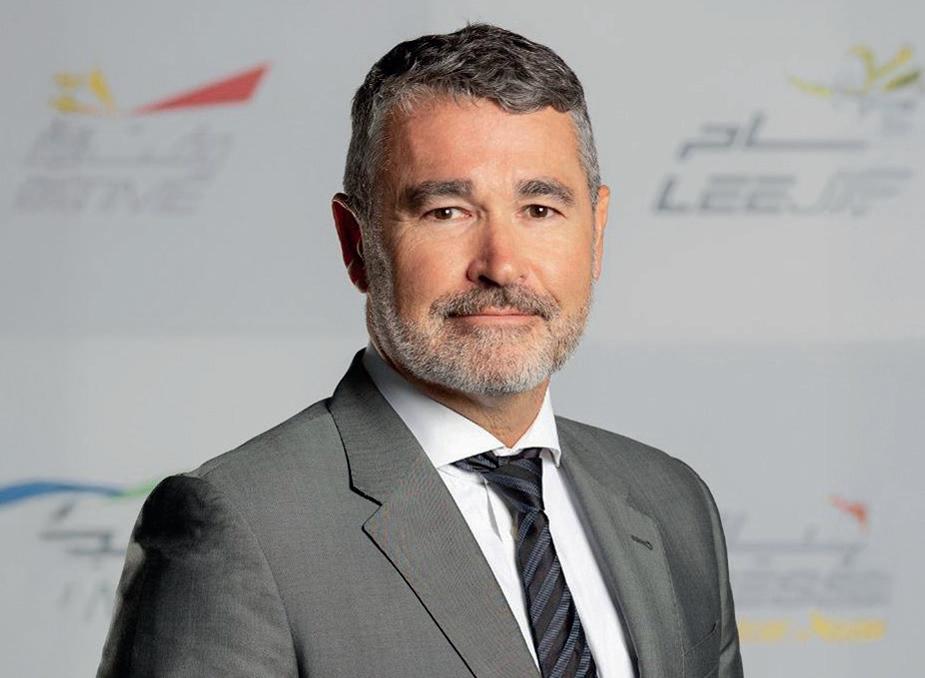
Devon-based public sector operator, Plymouth Active Leisure has appointed two big hitters to its board as non-executive directors: public sector expert, Mark Tweedie and private sector legend, Justin Musgrove. CEO, Rhys Jones, says Musgrove’s “expertise in strategy, business transformation and brand development will be invaluable as Plymouth Active continues to grow and innovate”.
http://lei.sr/w7H6N_H

AI is speeding up diagnosis and treatment of strokes
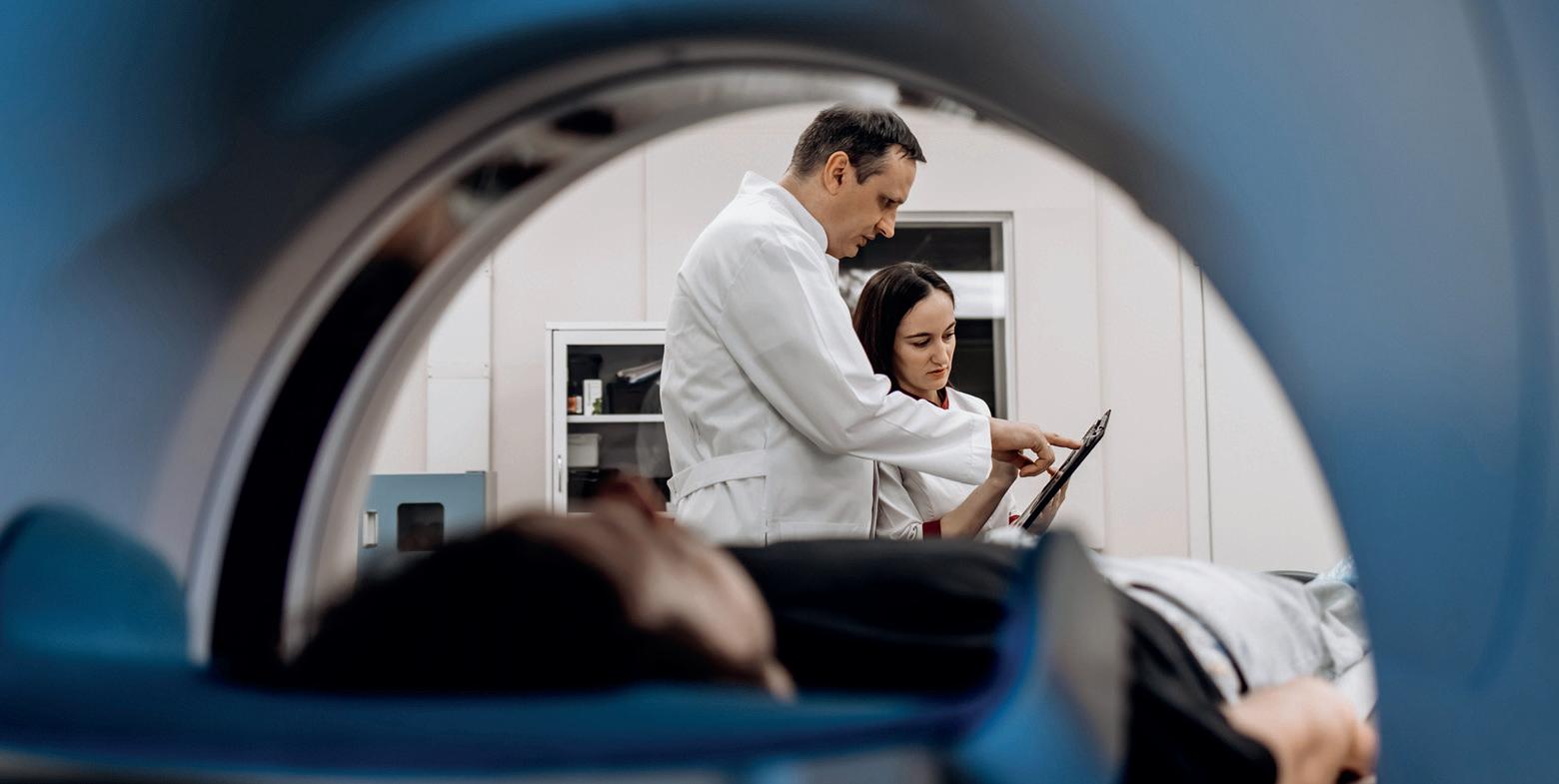
Johnson Health Tech, owner of Matrix Fitness, has launched a training centre and showroom in the south east of England to allow customers to see and specify Matrix solutions.
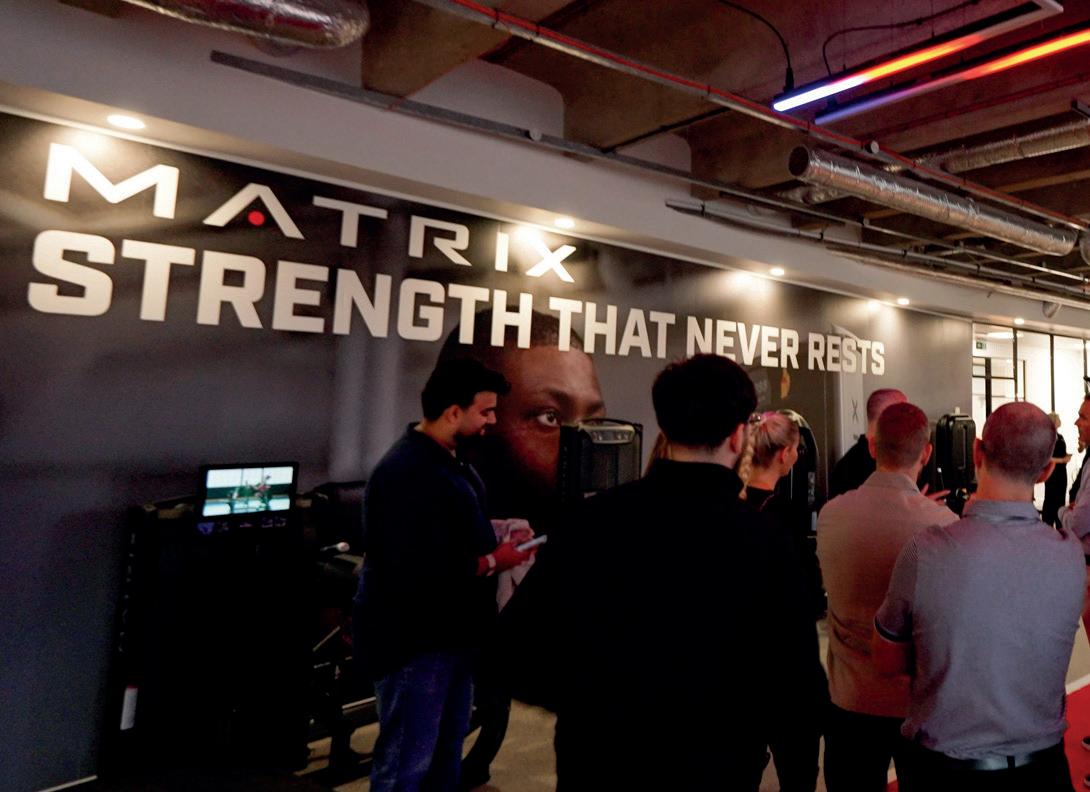
The showroom highlights Matrix solutions
UK Active research finds that 72 per cent of people with mental health conditions say exercise helps them stay in work, yet only 16 per cent feel able to meet the recommended activity guidelines.
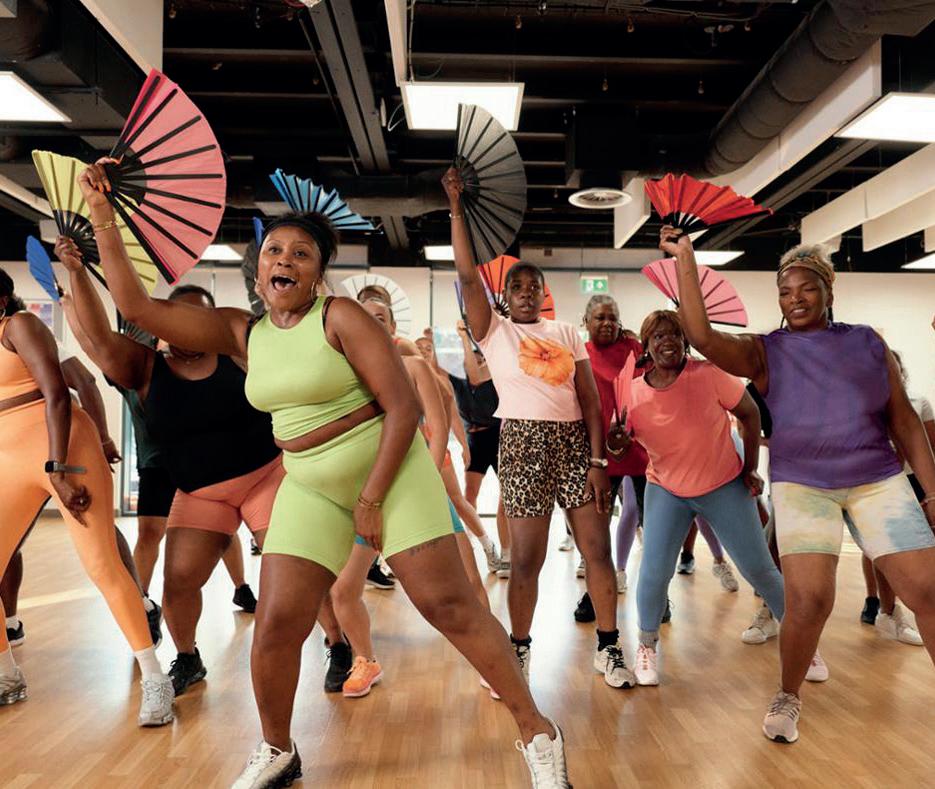
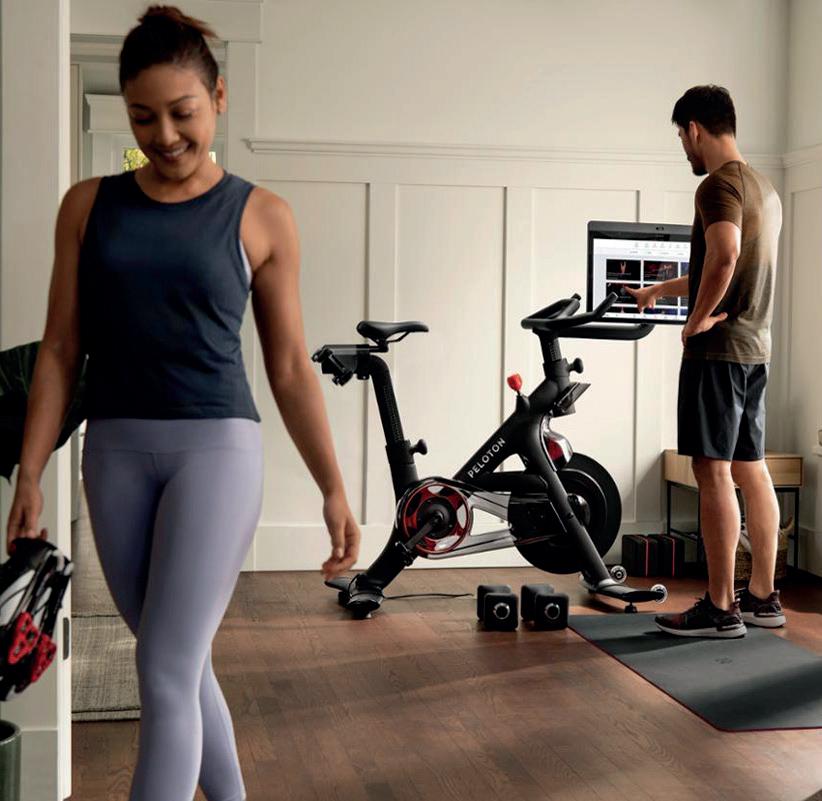
Peloton has introduced a Cross Training Series to maximise the benefits of both cardio and strength workouts. “This is the start of a new chapter for Peloton,” said CEO Peter Stern. “We’re doubling the value of our hardware with the Cross Training Series by delivering world-class cardio and strength in a single machine.”

The National Governing Body for Swimming has launched resources to inspire swimming teachers to introduce games into children’s swimming lessons. Swim England says this supports water confidence and independence.

European consumer preferences and data will provide insights into global target markets

A fear of water affects around 12.8 million people in the UK. Everyone Active is now training more than 2,000 instructors in an Aquaphobia Learning Programme.
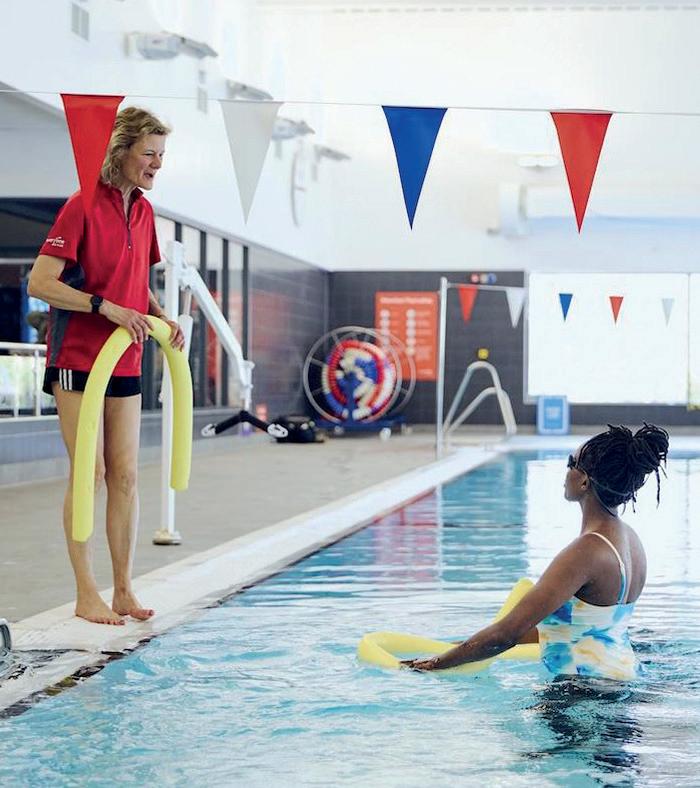
Probability study, WellSurvey, is expanding its research to include European consumer data. It started last year in the US using 1,002 consumers who live in the top half of homes defined by income. The European data will yield insights which can inform the development of new products and experiences to fuel industry growth.

The Daphne Steele Building in Huddersfi eld holds a Platinum Well Building Standard
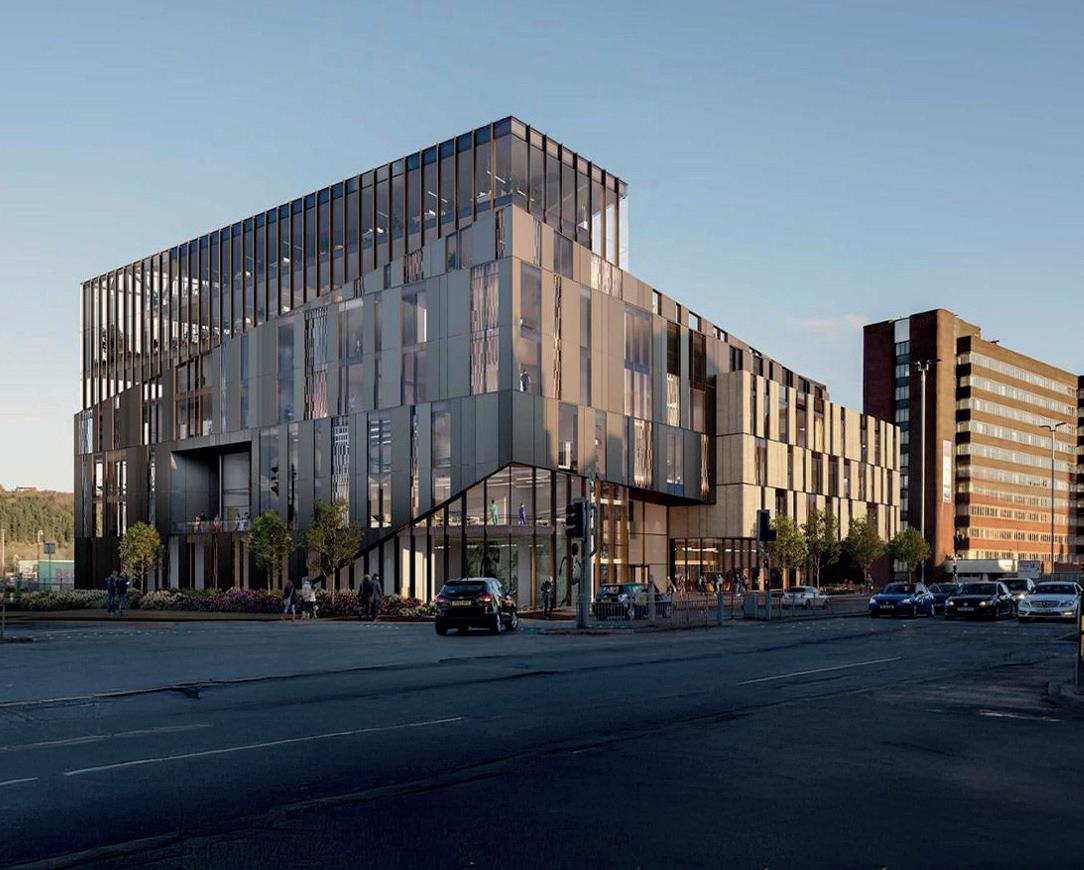
The Global Wellness Institute says wellness real estate is becoming more widespread – its researchers have found wellness in developments that range from residential, mixed-use, commercial, educational, healthcare and hospitality.
Construction has begun on David Lloyd Club’s latest site at St Neots in Cambridgeshire, UK and is expected to open in Q3 2026.
Centrepiece of the new club will be the 100+ station gym and group exercise studios, hosting more than 100 classes a week. Other facilities will include heated indoor and outdoor swimming pools, premium cushioned acrylic indoor tennis courts and outdoor padel courts.
David Lloyd Clubs’ signature wellness offering, the Spa Retreat, will offer a variety of experiences,



The new site in Cambridgeshire, UK, offers a mix of health and wellness
including a Himalayan salt sauna, a fire and ice room, a rainforest experience shower, a revitalising citrus steam room, plunge pool, and a swim in/out hydrotherapy pool. The Spa Garden will offer a plunge pool, hydrotherapy pool, loungers and a sauna.
Hospitality facilities comprise a clubroom, business lounge, a clubroom with a family zone and an indoor soft play area for children.
Stuart Caswell, new club acquisitions director at David Lloyd Clubs said: “We’re excited to join the Wintringham Park community and to offer a fantastic health and wellness facility for all ages, as well as creating jobs for the community. We look forward to opening our doors and welcoming new members next autumn.”
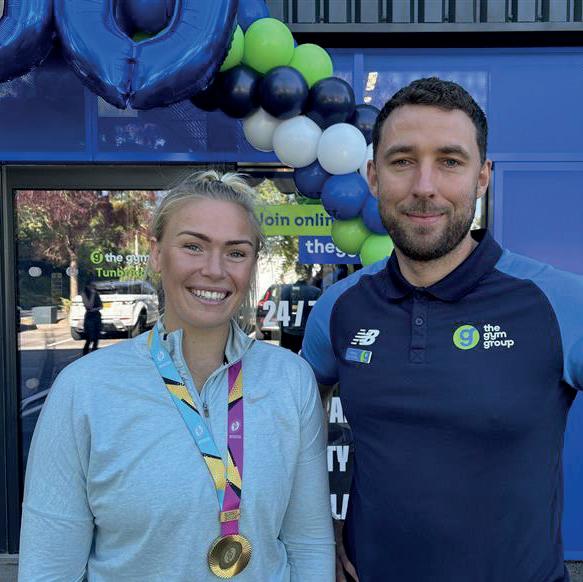
Fresh from her Women’s Rugby World Cup victory, Rosie Galligan was at the official launch of a milestone site for The Gym Group.
The Tunbridge Wells club is the low-cost operator’s 250th site and features the new design aesthetic, top-quality kit, multiple Olympic lifting rigs and a class programme which includes yoga, Hyrox and specialist female-focused classes.
As part of The Gym Group’s national partnership with NHS Charities Together, the new site will pair with Maidstone and Tunbridge Wells NHS Charitable Fund to deliver fundraising and volunteer initiatives, aligning with its mission to create healthier communities across the UK.
General manager, Harry Rochester, said having Rosie at the celebrations made the event extra special and the team are looking forward to helping the local community to achieve their fi tness goals.
Galligan said the low-gym will help to make fi tness more accessible to the local community: “This brand-new gym is the perfect space to build both physical and mental strength, supporting more people with their fi tness and wellbeing.”
The Gym Group is running an opening offer of 24/7 access and unlimited classes for £14.99.
US boutique franchisor, Xponential Fitness has completed the divestiture of another brand –Lindora, its metabolic health business.
Xponential’s latest strategy is to focus on core brands. The latest divesture follows the recent sale of boxing brand, Rumble, and indoor cycling business CycleBar to Extraordinary

“We are now seeing studios be successful in increasingly rural and low population areas”
Brands, prior to that Row House and Stride were offloaded.
In its Q1 results it was announced that there would be a sharpened focus on Club Pilates, Pure Barre, Yoga Six and StretchLab, raising questions about BFT.
Club Pilates is the jewel in the crown. President, Tianna Strateman, told HCM that master franchise agreements are in place in many new territories, both overseas and the US.
“There’s definitely room for more in the US, we’re now seeing studios be successful in increasingly rural and low population areas,” she said. “Around the world there is tons of white space and we are partnering with some really great master franchisees.”
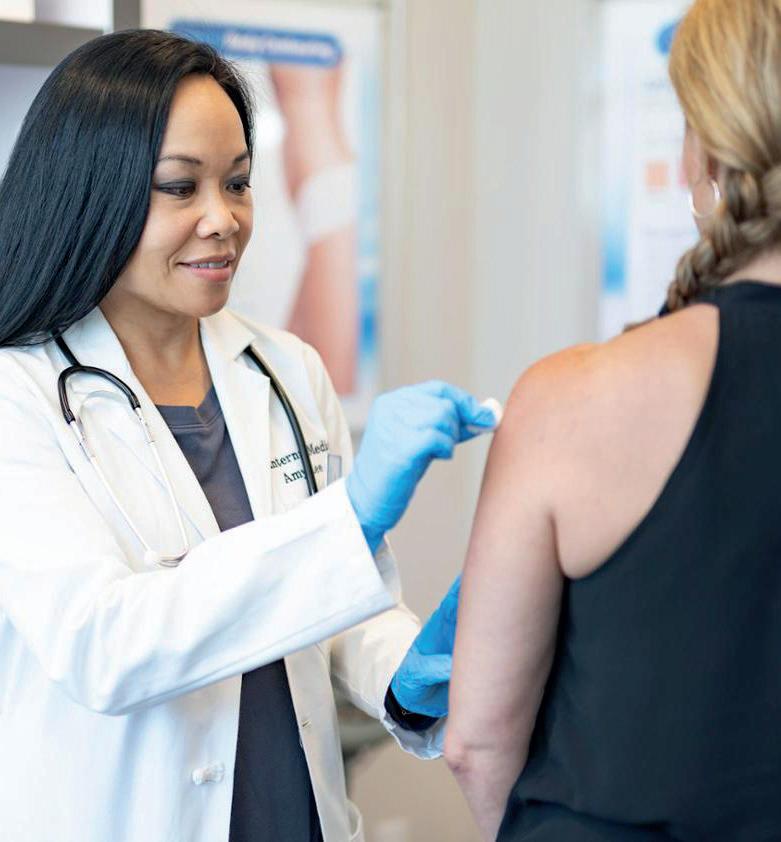
European operator, Go Fit has announced record profits and the investment of €150 million in eight facilities before 2028.
The company closed 2024 with a record turnover of €84.1 million, representing a 9.4 per cent increase in year-on-year growth, achieved through cost efficiency and higher sales.
This year Go Fit launched a €20 million sports centre in Santa Cruz, Tenerife and at the end of the year it will launch its first site in Italy, at the former Turin flower market.
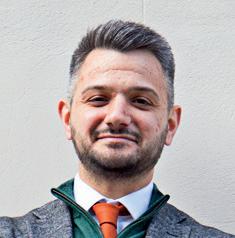
“Our trajectory ahead is truly exciting” Steven Ward

A further €150 million will be invested in the pipeline of eight new sites, bringing the estate to 30. Three projects are already underway in Milan and Bologna in Italy and Vitoria in northern Spain.
Steven Ward, strategy director of Go Fit said: “These results reinforce our foundations ahead of a period of
sustained growth where we’ll bring our unique model to new territories in partnership with local authorities and social value minded landowners.
“Our trajectory ahead is truly exciting, and we look forward to having a transformative effect on more communities.”
http://lei.sr/y6u6E_H
Backed by KSL Capital Partners, Oaknorth has provided a £75 million leveraged finance loan to premium UK fitness and wellness operator, Third Space. This new facility refinances a portion of the existing capital structure and provides a £25 million capex facility to support Third Space’s expansion into new locations, including London’s Oxford Street, Queen’s Park and Chelseas.
This is Oaknorth’s largest leveraged finance loan to date, displaying its

“This

Third Space consistently innovates, including the recent Performance Lab
confidence in the London collection of 13 health clubs which has more than 42,000 members and has seen revenues increase by more than 90 per cent since 2022.
Colin Waggett, CEO of Third Space, says: “This transaction marks another important milestone for Third Space as we scale across
London. With Oaknorth’s support, we’re well positioned to bring the Third Space experience to even more communities.”
The next launch is The Whiteley, on 12 December, part of the redevelopment of the former department store.
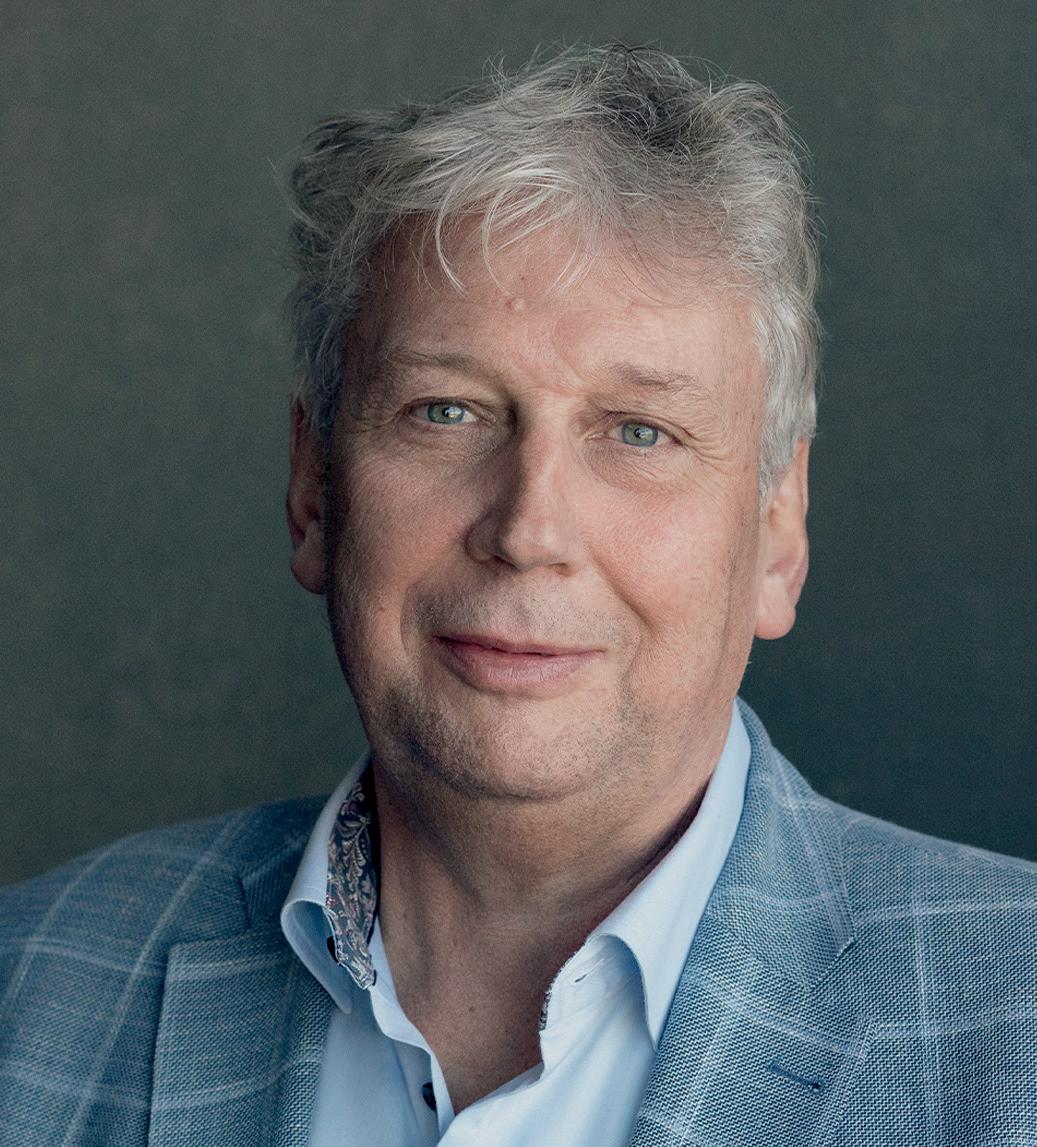
David Stalker has been announced as the new chair of UK Active. With more than 35 years’ of industry experience, Stalker is former president of EuropeActive, interim executive chair of Kuwait Active and has board and advisory positions. He was previously chair of CIMSPA and CEO of Myzone, as well as being CEO of UK Active from 2008 until 2015. He says: “Having previously served as CEO, it has been hugely rewarding to witness both the growth of the organisation and the sector we serve, and I’m looking forward to playing my part in continuing this growth.
“Throughout my career I’ve championed the recognition of physical activity as a cornerstone of health and wellbeing and will
continue to advocate for its role in improving the physical, mental and social wellbeing of our communities.”
Melinda Nicci has also joined the board of directors of UK Active as the organisation’s new digital lead, bringing specialist knowledge of health technology and AI.
She has extensive experience in executive positions across the fitness, health and wellness industries, having worked for more than 35 years with brands ranging from Virgin Active and LA Fitness.
Nicci says: “I’m excited to help our sector capitalise on the opportunities presented by advances in technology and drive the positive change we can bring to communities by working together.”



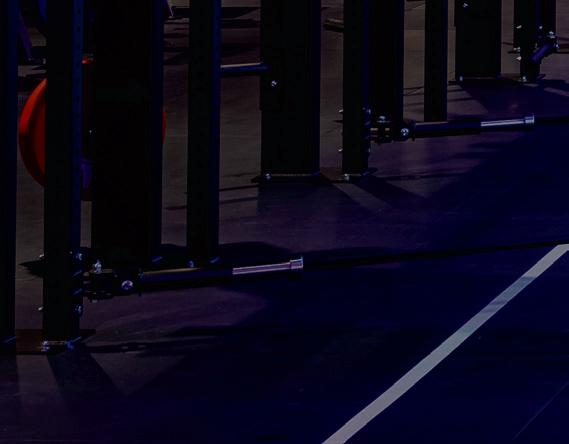







Core Health & Fitness empowers boutique operators to maximise every square metre with equipment that’s versatile, space-efficient, and designed to elevate the member experience.

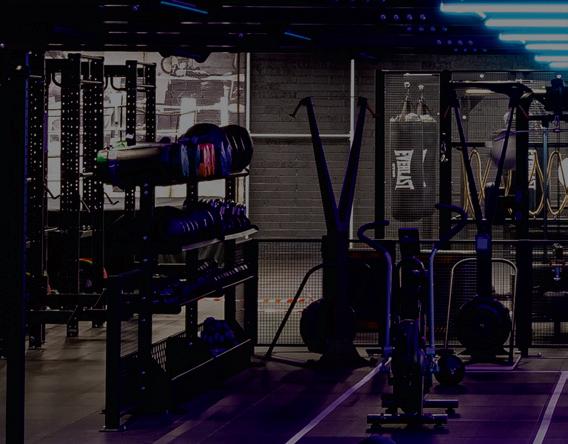
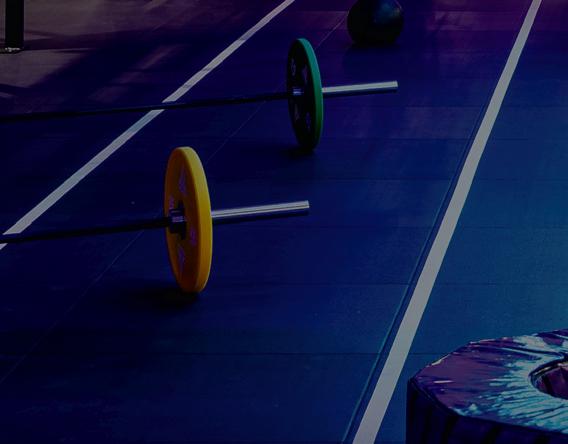

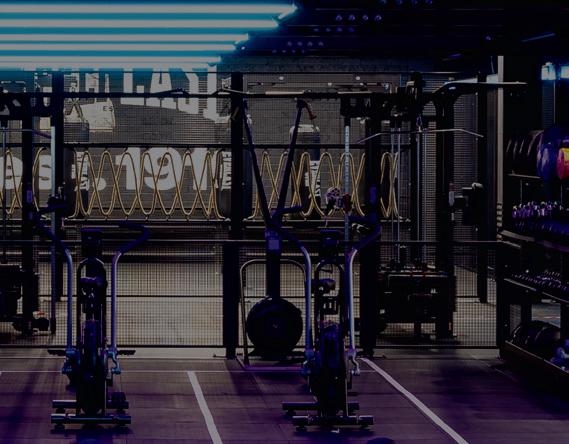
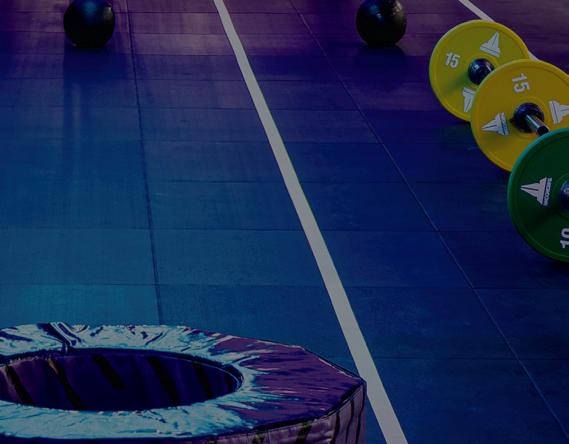



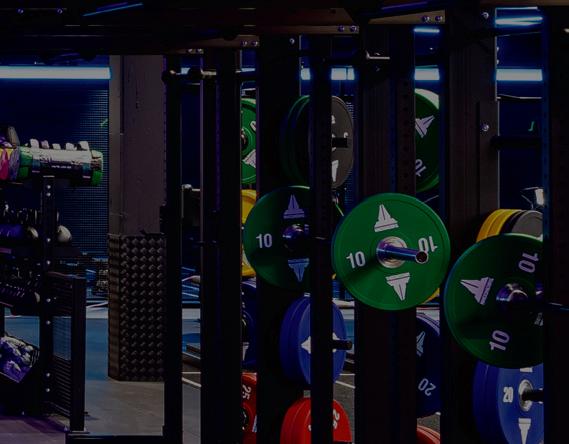
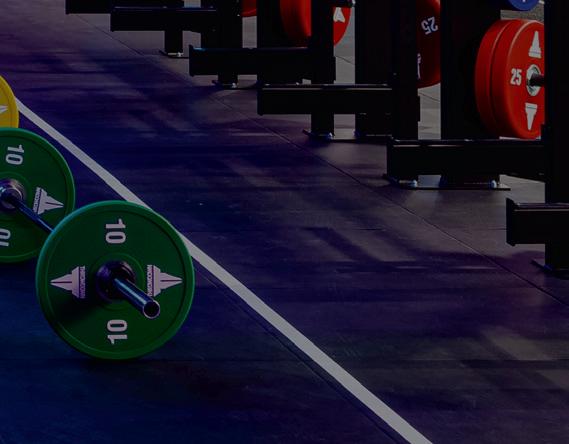


DESIGN A BOUTIQUE EXPERIENCE THAT’S UNIQUELY YOURS — WITH CORE HEALTH & FITNESS.

SCAN THE QR CODE TO LEARN MORE



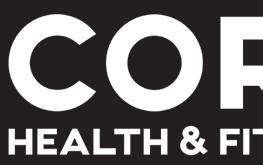
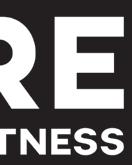
Work is underway on a £19.7 million waterfront leisure centre in Newport, which will be one of the UK’s first net zero leisure centres.
Replacing an ageing facility, Newport Leisure Centre is being built to BREEAM standards and will be powered solely by renewable energy.
Expected to be completed in the spring, the facilities will include a modern leisure pool, with a lazy river and slides and a teaching pool. There will also be a fitness suite, community space, a café and relaxation area.
Councillor Dimitri Batrouni, leader of Newport City Council, said: “This is one of the most eagerly anticipated new developments in the city and will provide fantastic new swimming and leisure facilities.
More than 55 per cent of the costs are being met by external funding, including £7 million from the Welsh government’s £110 million Transforming Towns Programme and the UK government.
LA Architects have designed the centre and Welsh company, Wynne Construction, is building it.
People will enter into a triple height foyer with acoustic timber panels on the walls and ceiling. The building will also have a garden and an active exercise roof giving ecological benefits.
Around 100sq m of glass have been salvaged from the old leisure centre and will be transformed into key details in the new building, by designer, Dr Tyra Oseng-Rees.
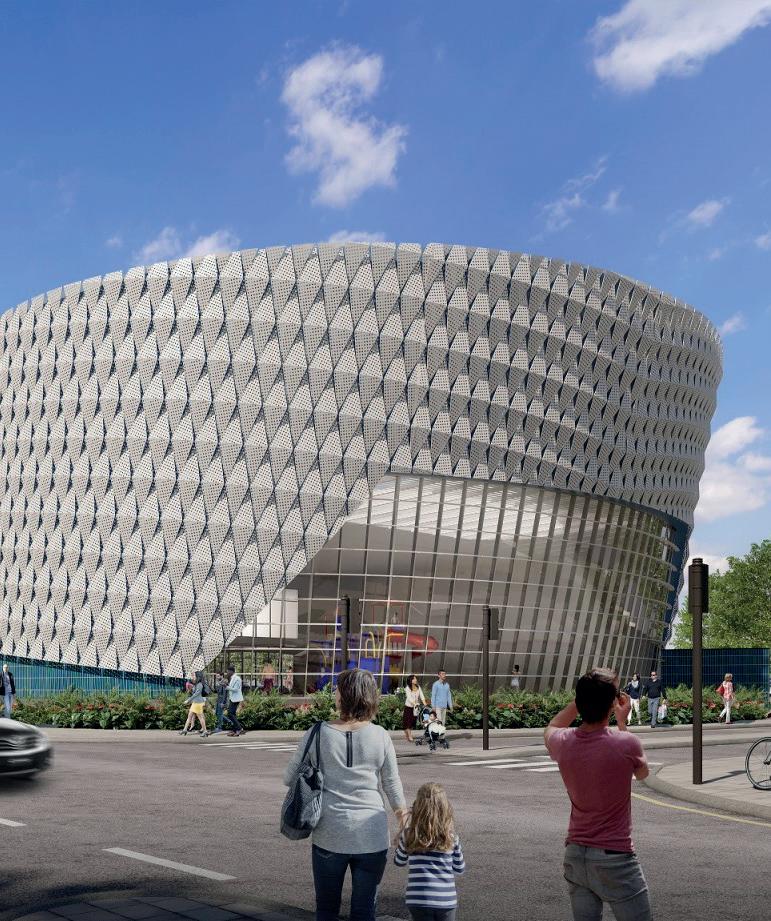
GLL has confirmed it is taking over the Jubilee Hall Gym in London’s Covent Garden next month.
The iconic site will be converted to the Better brand; £250,000 will be invested and a refreshed programme of activities will be introduced.
Jubilee Hall Trust announced last October that it would be surrendering its lease. Like many operators, it came out of the pandemic with limited cash reserves only to be hit by the energy and cost of living crises.

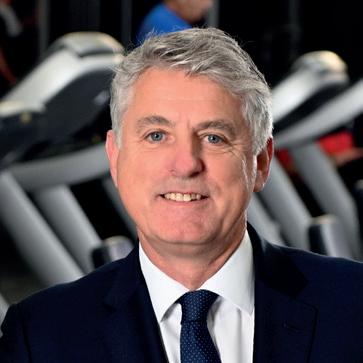
“We will rejuvenate the facilities and improve the member offer”
Peter Bundey

CEO, Jon Giles, says the arrangement gives the charity a brighter future, freeing it up to focus on its three other centres in London’s Hampstead, Southwark and Westminster, as well as managing outreach community programmes, such as GP Referral and Healthy Hearts.
It’s also currently working with the Royal Free Hospital
in London to develop cancer Prehab and Rehab programmes.
Peter Bundey, CEO at GLL says: “We we’ll rejuvenate the facilities, improve the member offer and increase membership numbers, creating a space welcoming to all regardless of age, fitness levels or financial means.”









Define your strength, fitness and functional training zones with one of our anti-slip rubber floor coverings or maybe utilise our bespoke, seamless polyurethane surfaces to transform your health and wellbeing spaces. Whatever your flooring requirements are we can help to create exceptional training environments for your members.



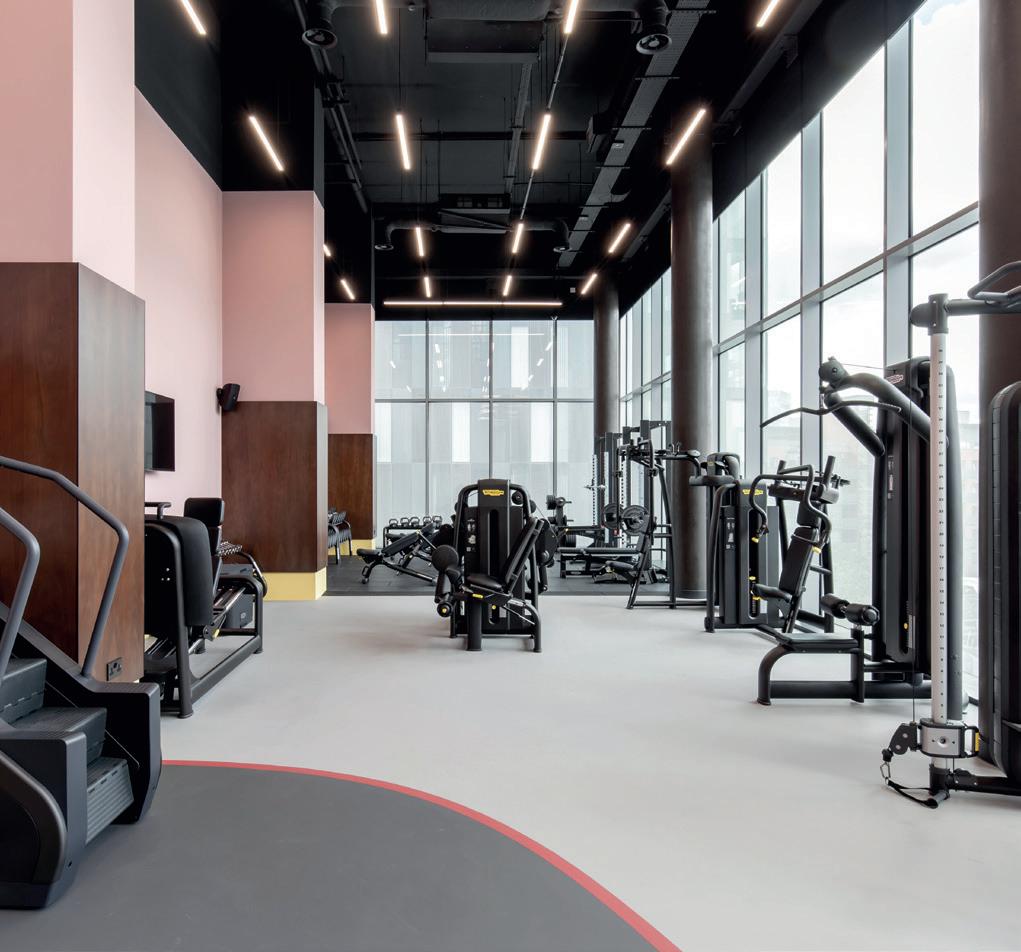
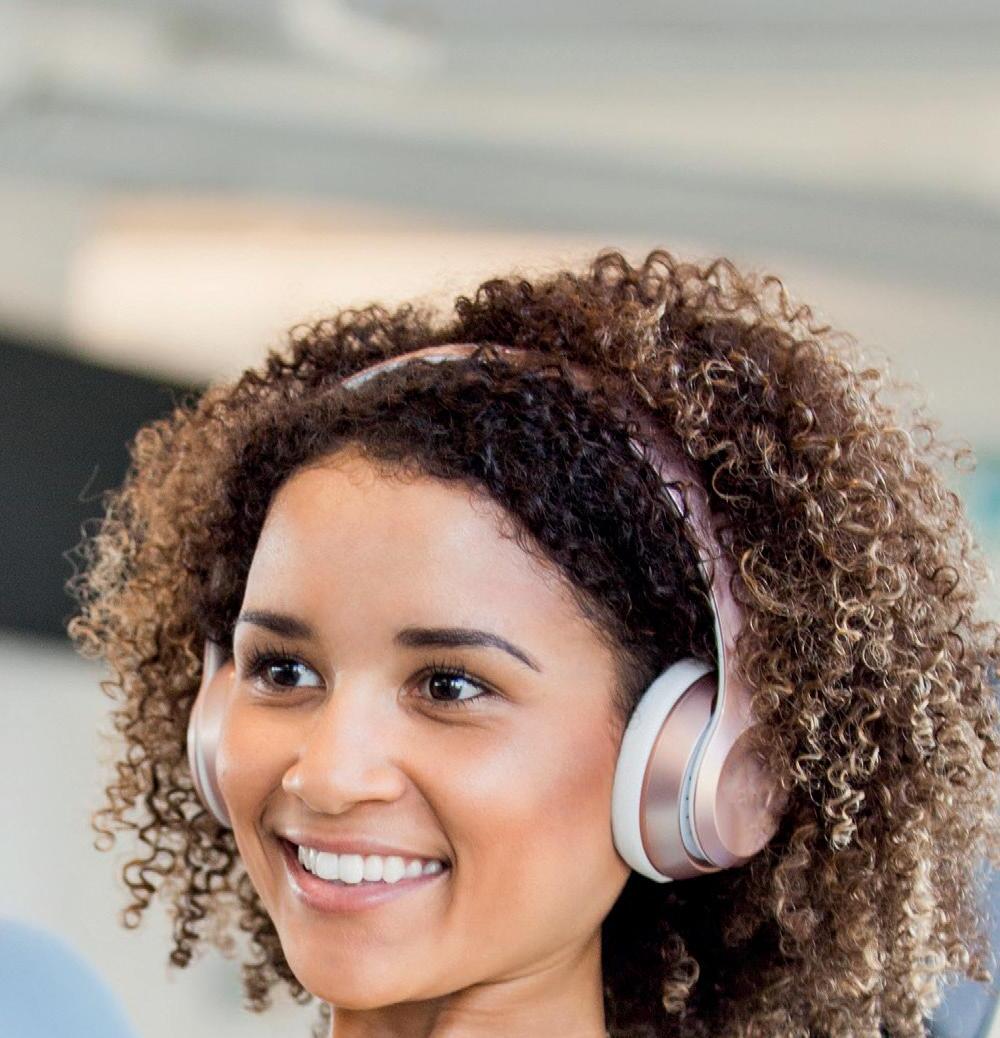









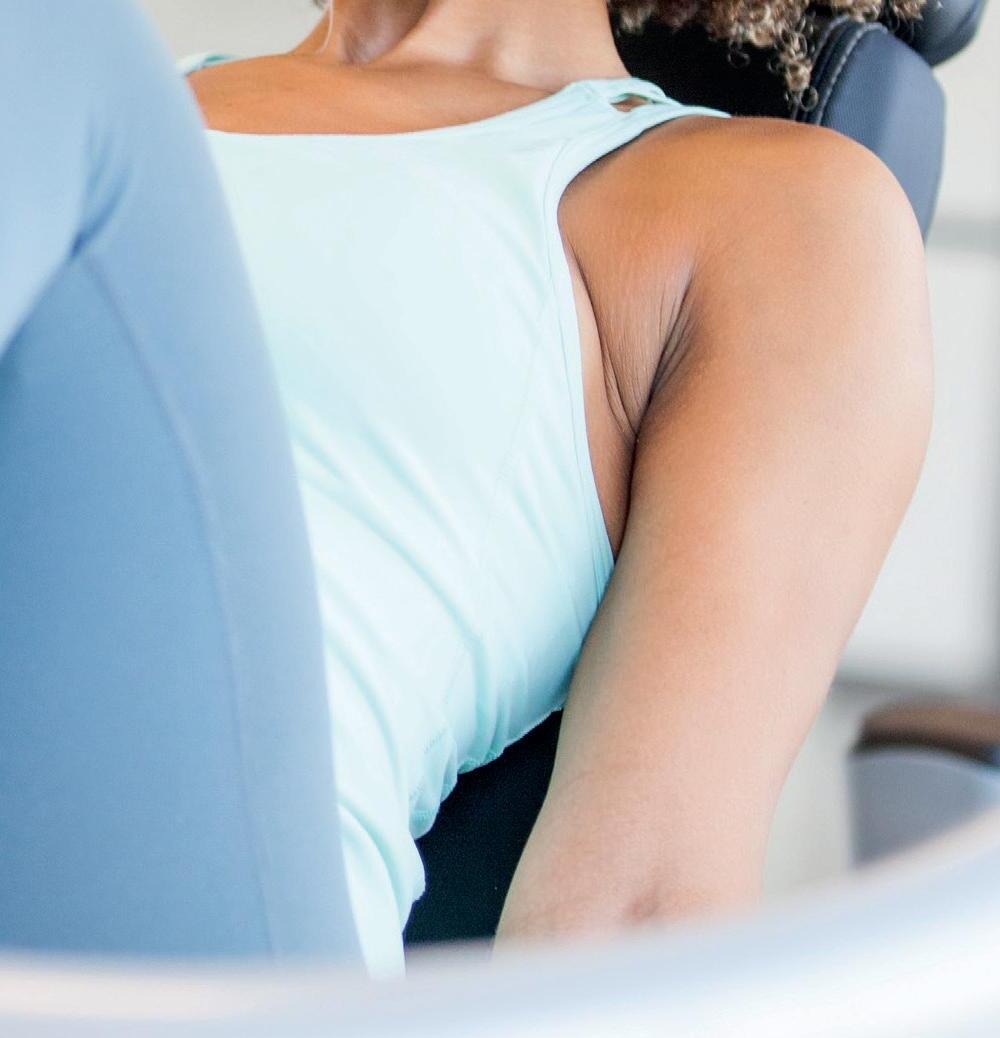

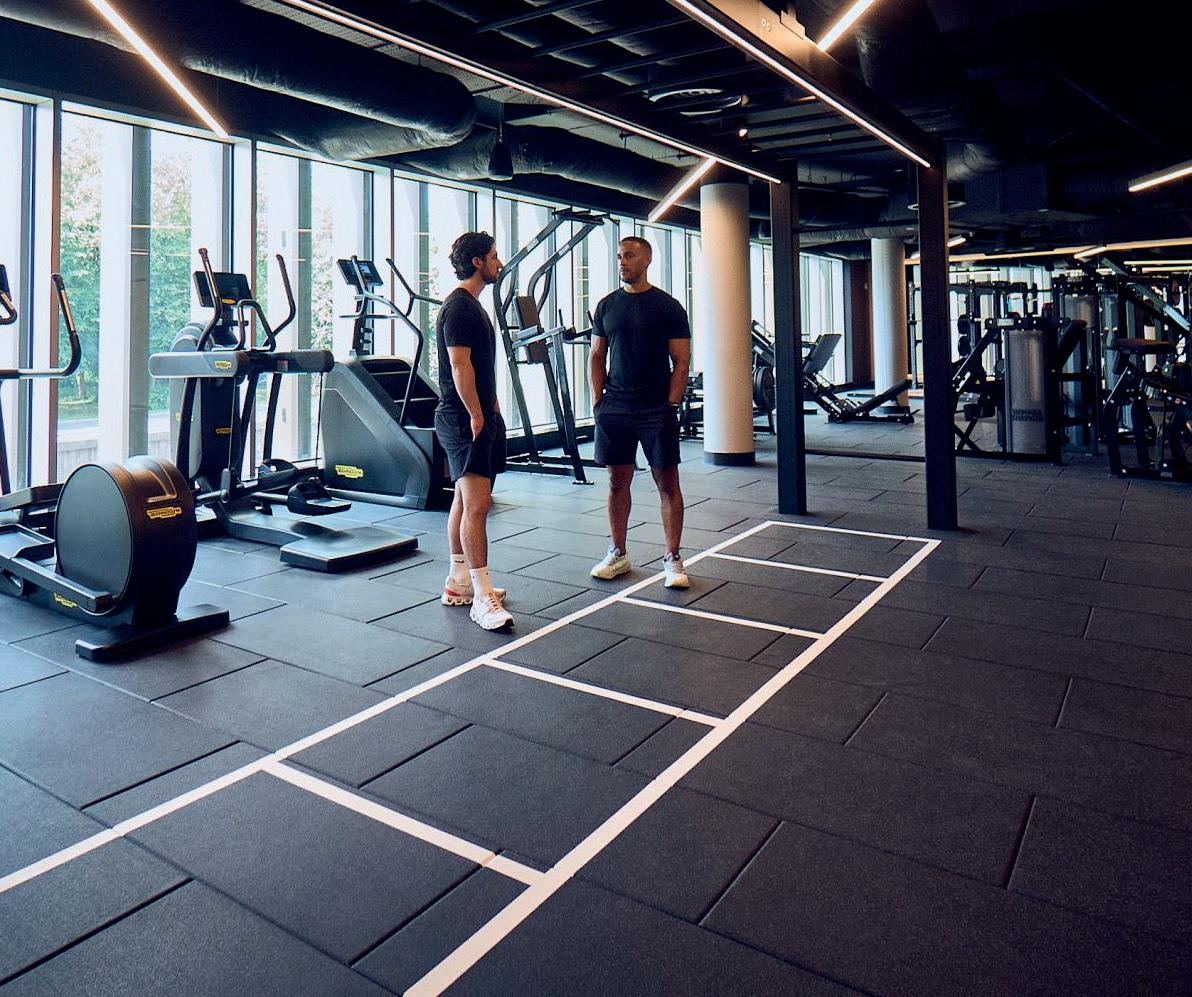
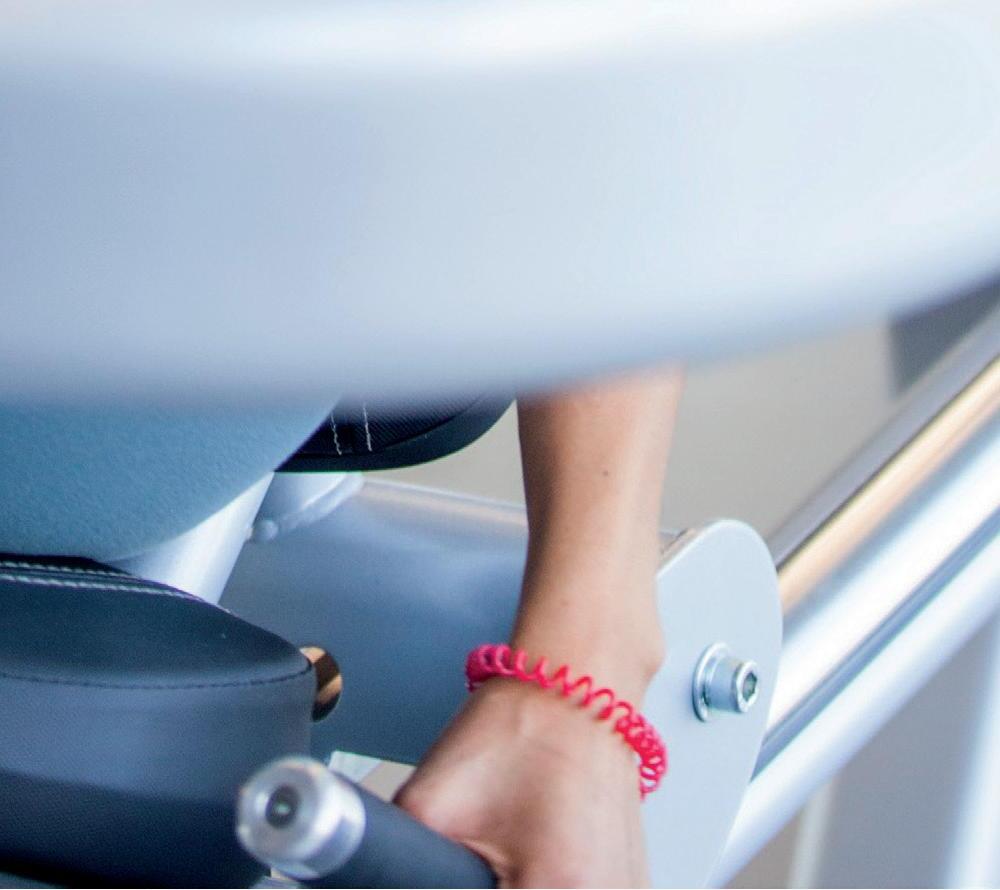
Google has revealed a new, AI-powered personalised health coach for wearers of Fitbit and Pixel trackers and smartwatches.
The new assistant, built using Google’s Gemini AI platform, can act as a personal fitness trainer, sleep coach and a general health and wellness advisor that’s both proactive and responsive to user requests.
Wearers of supported devices can request a bespoke fitness routine based on their goals and available equipment. The health coach will design a progressive plan.
Because the Fitbit/Pixel device is continually monitoring the physical metrics of the wearer, workouts will be tailored to their current physical state.
If a poor night’s sleep is detected,, the next-day’s routine may be altered to reflect the body’s need for a less intense workout. Users can also tell the coach how they’re

users can now get access to their own AI coach
feeling through a chatbot so the schedule can be tweaked.
The health coach can also answer specific questions such as: “Should I get an extra hour of sleep or work out tomorrow morning” giving users a sense of what would better suit
their body’s needs, as the coach can also pull in data from Google Health Connect or Apple HealthKit-compatible devices, information from smart scales and glucose monitors.
The US FDA has given clearance for a new feature on the Apple Watch to allow users to monitor hypertension risk.
Available on the Apple Watch Series 9, 10 and 11 and Ultra 2 and 3 models, the new feature can alert
users if signs of chronic high blood pressure are detected. Hypertension is the leading modifiable risk factor for heart attacks, strokes and kidney disease, impacting around 1.3 billion people globally, it’s known as the silent killer as has no
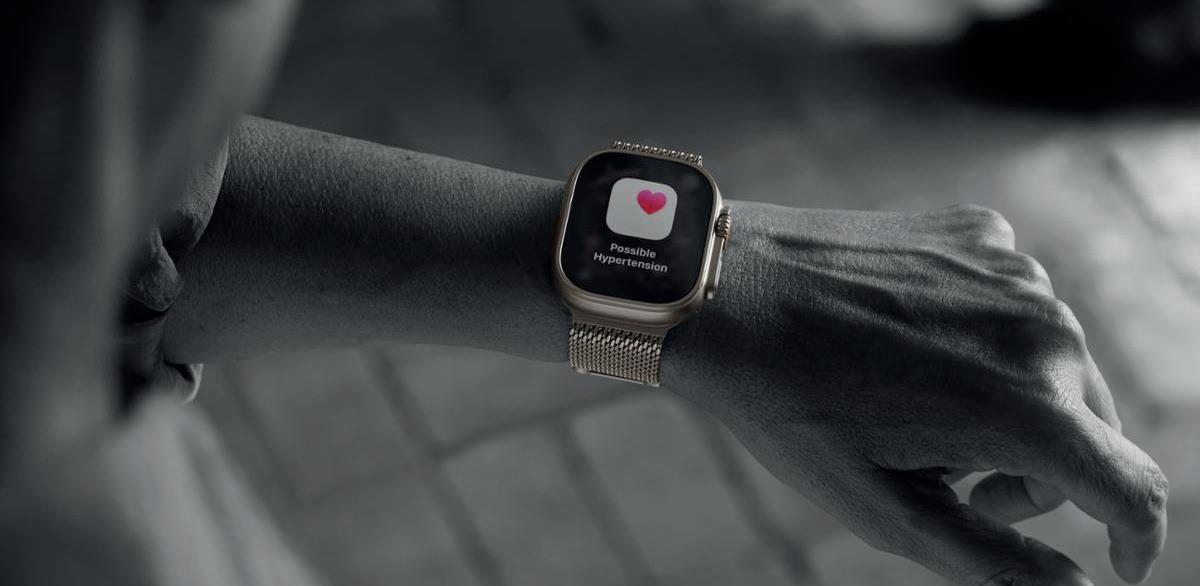
symptoms and many people are unaware they’re living with it.
The hypertension notifications use data from the optical heart sensor to analyse how a user’s blood vessels respond to the beats of the heart. The algorithm works passively in the background, reviewing data over 30-day periods. It will notify users if it detects consistent signs of hypertension so they can modify lifestyle behaviours.
The feature is expected to notify more than one million people with undiagnosed high blood pressure within the first year. It was developed with advanced machine learning and training data from multiple studies totalling more than 100,000 participants.
http://lei.sr/c2q8m_H



DON’T PAY THE BILLSMEMBERS DO.





6-week campaign


✅ Avg. 225+ new members





We work on a commission only basis YOU
We bring the marketing and the sales team with an industry-leading close rate.







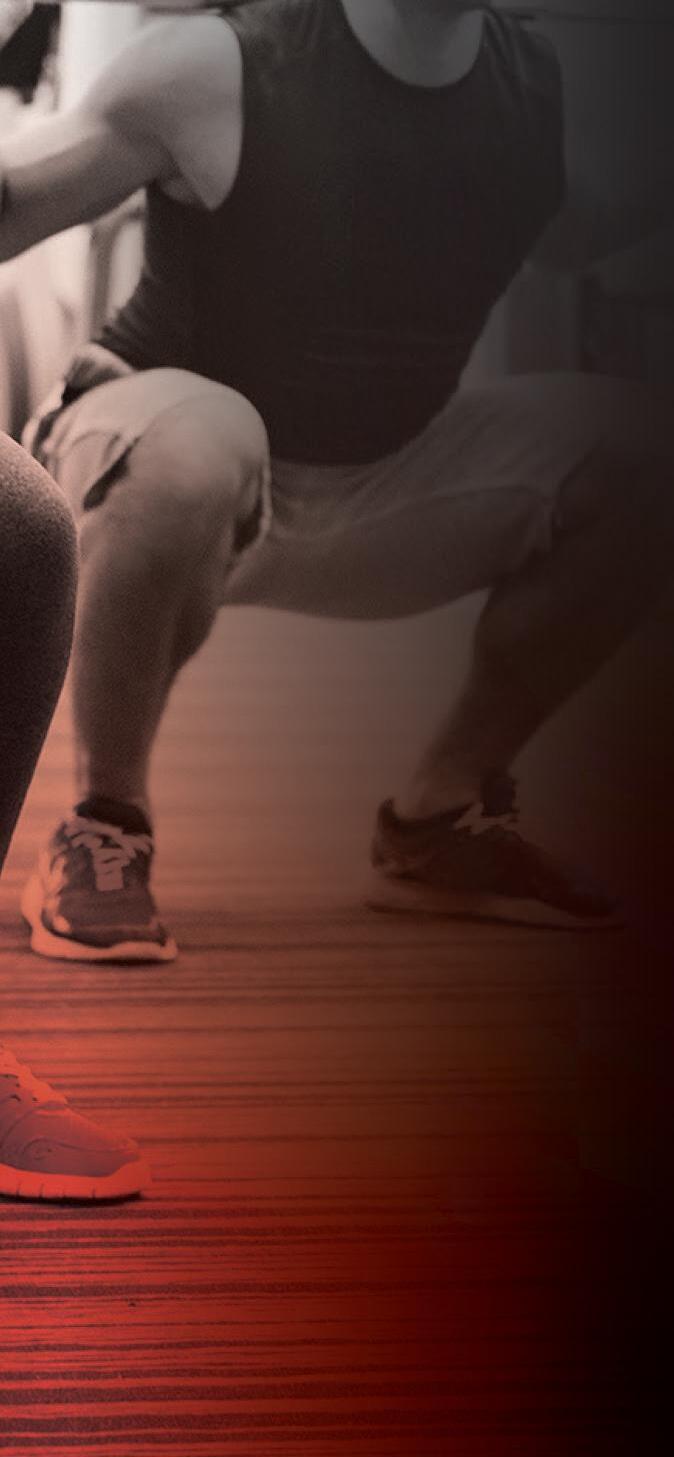


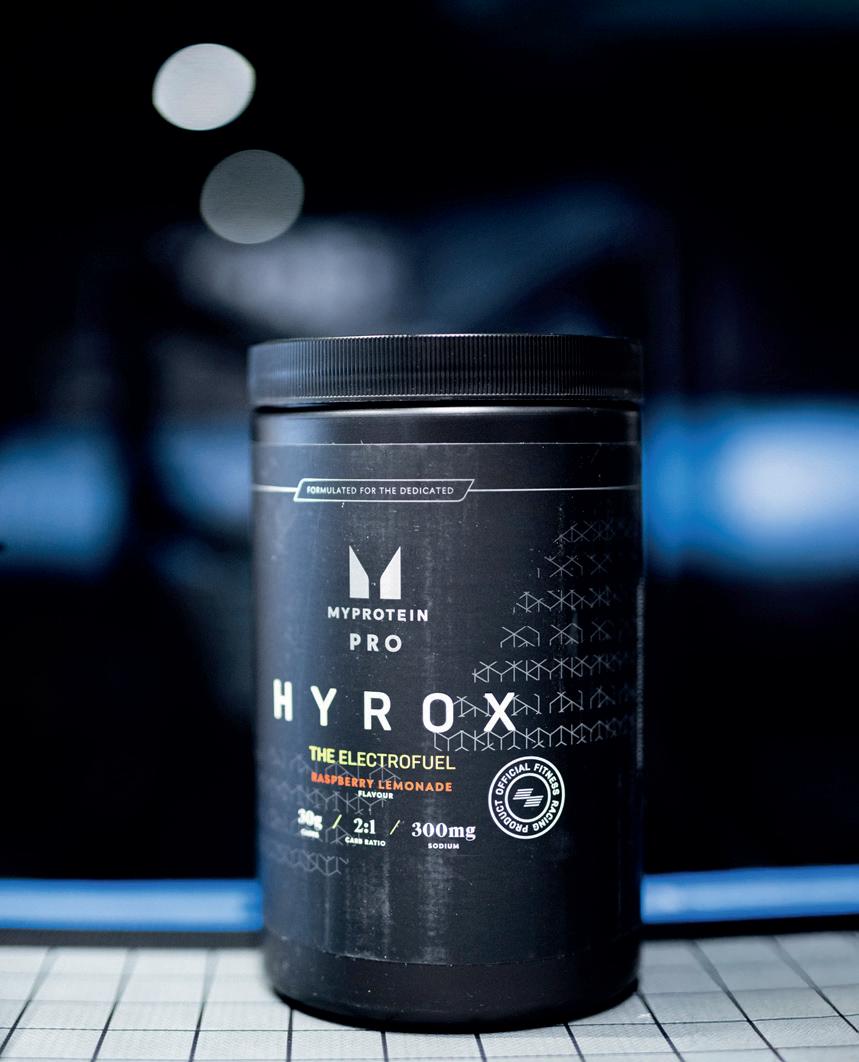
Everlast Gyms, owned by Frasers Group, has announced a landmark partnership with sports nutrition brand Myprotein, which will see the rollout of around 60 Myprotein Kitchens across the Everlast estate.
Over the next 12 months, Flavore bars at all elevated locations will be upgraded to Myprotein’s Kitchen concept, giving members access to a curated menu of freshly made smoothies, nutritious snacks and performance-focused supplements, including the Hyrox x Myprotein range.
Myprotein Kitchens will be places to refuel, as well as to relax, socialise and work. Selected locations will feature co-working pods available for hire, creating a café-style environment within the gyms.
As part of the partnership, Myprotein will become the official supplier for all Everlast Gyms’ nutrition offerings, alongside providing specialist coaching support through its Coach Club programme.
“Our partnership with Myprotein marks a significant step forward in our mission to deliver a 360-fitness experience for our members,” said managing director



in 60
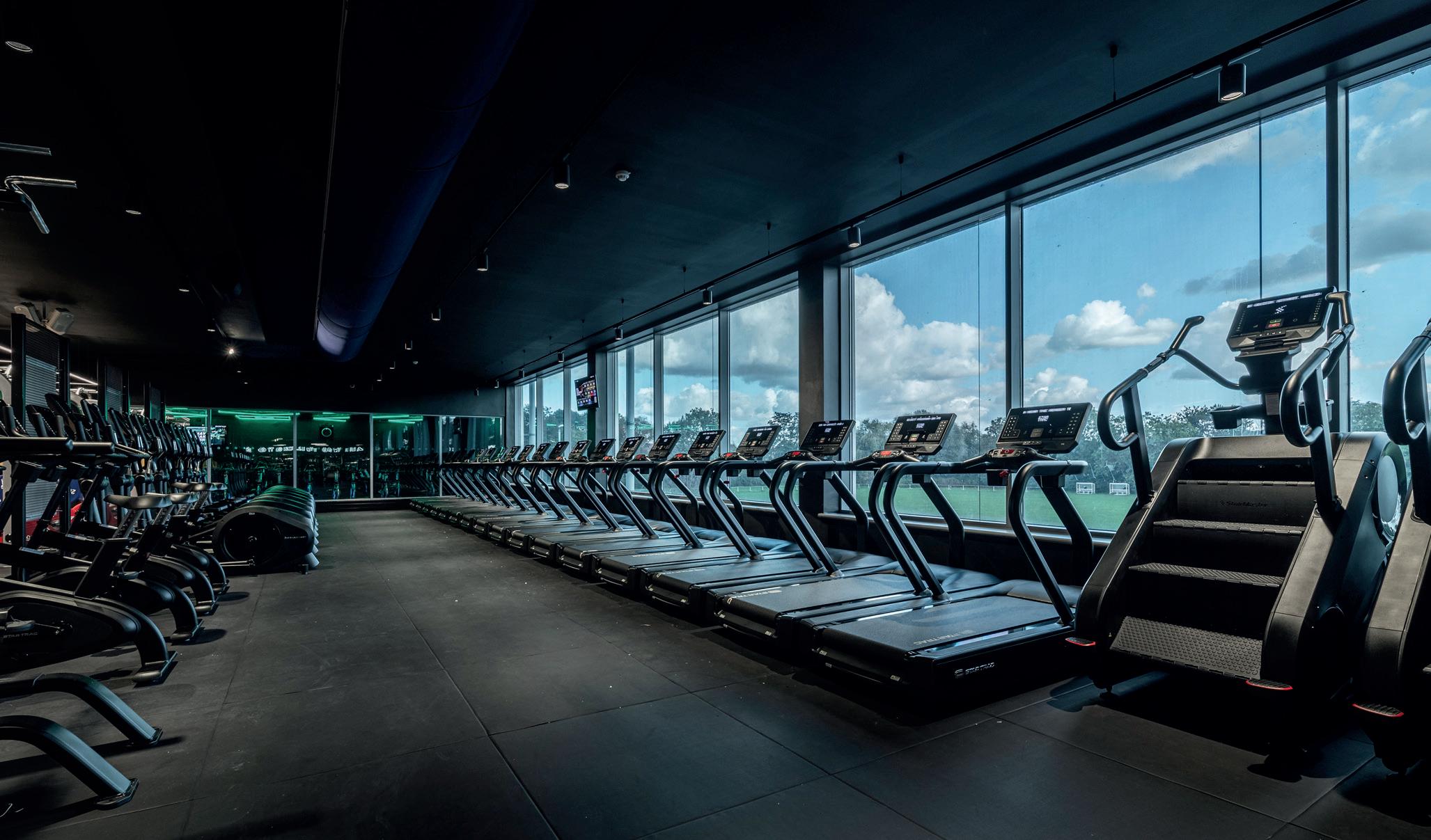
of Everlast Gyms Dan Summerson. “Building on our recent Hyrox partnership, this new collaboration reinforces Everlast Gyms’ growing reputation as a strategic partner for some of the biggest names in the fitness industry. By connecting Everlast Gyms’ best-in-class gym spaces with Myprotein’s nutrition, refuelling and recovery products, we’re continuing to raise the bar.”
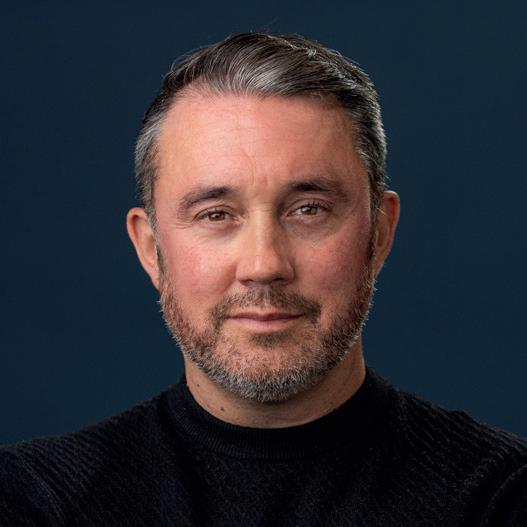
“Our partnership with Myprotein marks a significant step forward in our mission to deliver a 360-fitness experience for our members”
Neil Mistry, CEO of THG Nutrition, says: “Myprotein brings over two decades of unrivalled expertise in nutrition, product innovation, activewear and comprehensive athlete support through our Coach Club.
Dan Summerson
“By integrating our scientifically-backed products and educational resources directly into Everlast Gyms’ exceptional facilities, we’re empowering members with a holistic approach to their health and performance.”
Following its recent announcement about its role as UK national partner of Hyrox Performance Centers, Everlast Gyms is creating a new integrated fitness ecosystem, where members can access the very best facilities and products to train, refuel, recover and connect.
Up to 60 Everlast Gym sites will receive investment in upgraded facilities, branding, products and staff uniforms to reflect the new Myprotein Kitchen identity. Going forward, all new sites will contain Myprotein Kitchens.
Everlast has just announced the launch of a new site in Nottingham, which features includes a large cardio area, the Hyrox Performance Center, a Myprotein Kitchen, a dedicated boxing zone; an activation and recovery area equipped with bespoke Wattbikes.
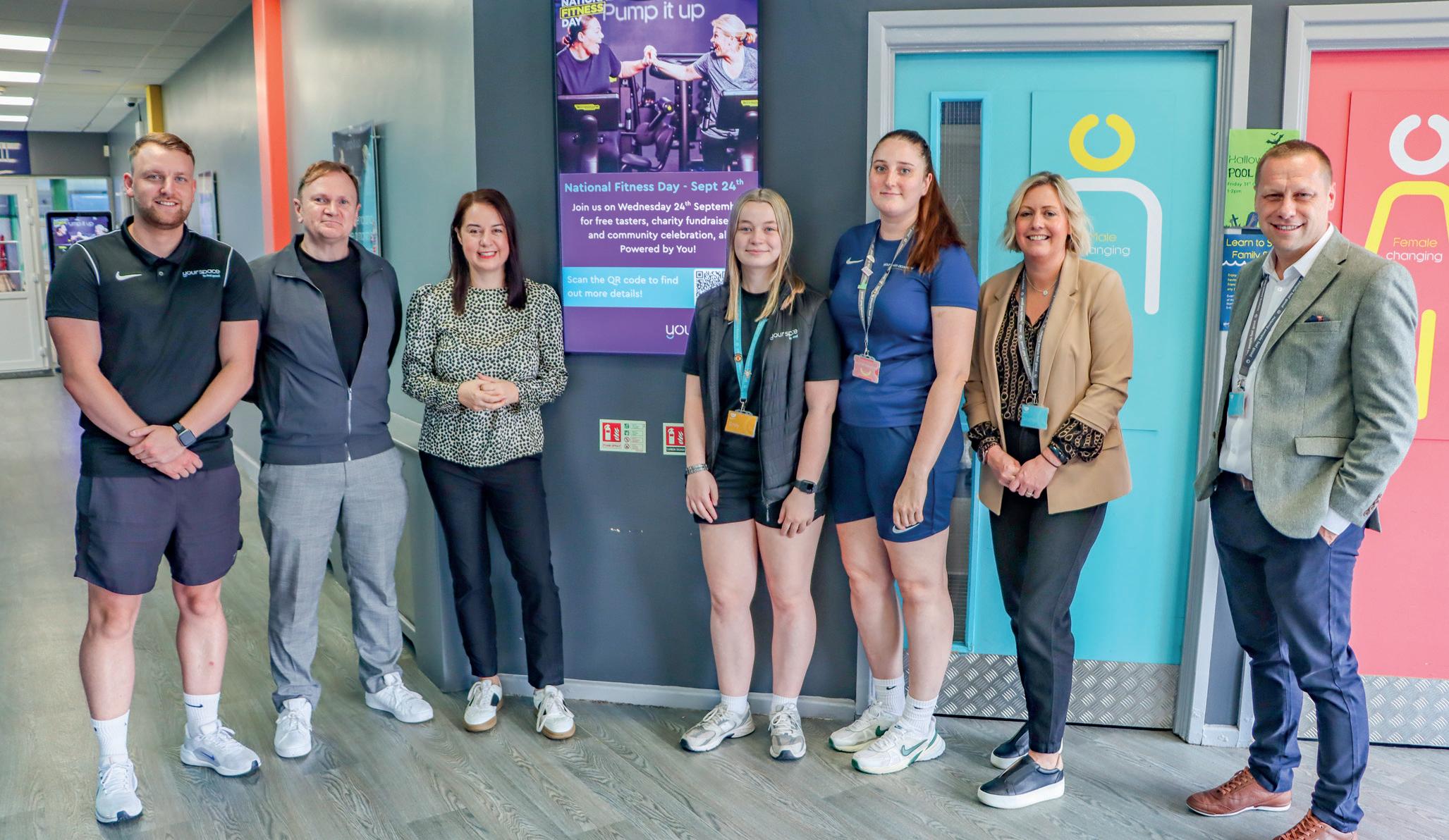

Across Europe there are encouraging signs that governments are waking up to the value of exercise and the services the fitness sector provides.
UK Active said that engagement with MPs for this year’s National Fitness Day was higher than usual, with 54 MPs demonstrating public support for the campaign. UK Active coordinated 17 visits from MPs to members’ sites in their constituencies across the country.
“It was great to see our MPs getting behind National Fitness Day this year and especially those who visited their local gyms, pools and leisure centres on the day,” says Rob Gibson, UK Active’s interim director of policy and communications.
“Our members do so much to improve lives in their communities by supporting people to be more active. This campaign helps the nation to celebrate physical
“It was great to see our MPs getting behind National Fitness Day this year and especially those who visited their local gyms, pools and leisure centres on the day”
Rob Gibson
activity and this year’s engagement with MPs helped fuel the conversation and recognition in government too.”
Culture Secretary, Stephanie Peacock, also blogged about the event in advance of the day and posted about the positive benefits of sport for physical and mental health; social cohesion and connection.
“Sport and physical activity are central to preventative health and the biggest health gain comes from supporting those who are inactive, or less active, to move more,” she wrote. “There is an evidenced direct correlation of increased activity levels in the areas of the country with the highest density of accessible facilities that are safe, inclusive and affordable.”
In Andalusia, Spain, from 1 January, taxpayers will benefit from a 15 per cent deduction in expenses related to sports practice or exercise, up to €100 per taxpayer per year. Deductible expenses will include memberships to gyms, sports centres, clubs, sports federations and other entities for the purpose of carrying out physical exercise or sports activities.
Meanwhile, in Norway, the government has pledged that exercise will become an integral part of treatment for people living with serious mental illness and substance abuse challenges across all health trusts.
http://lei.sr/a9c5H

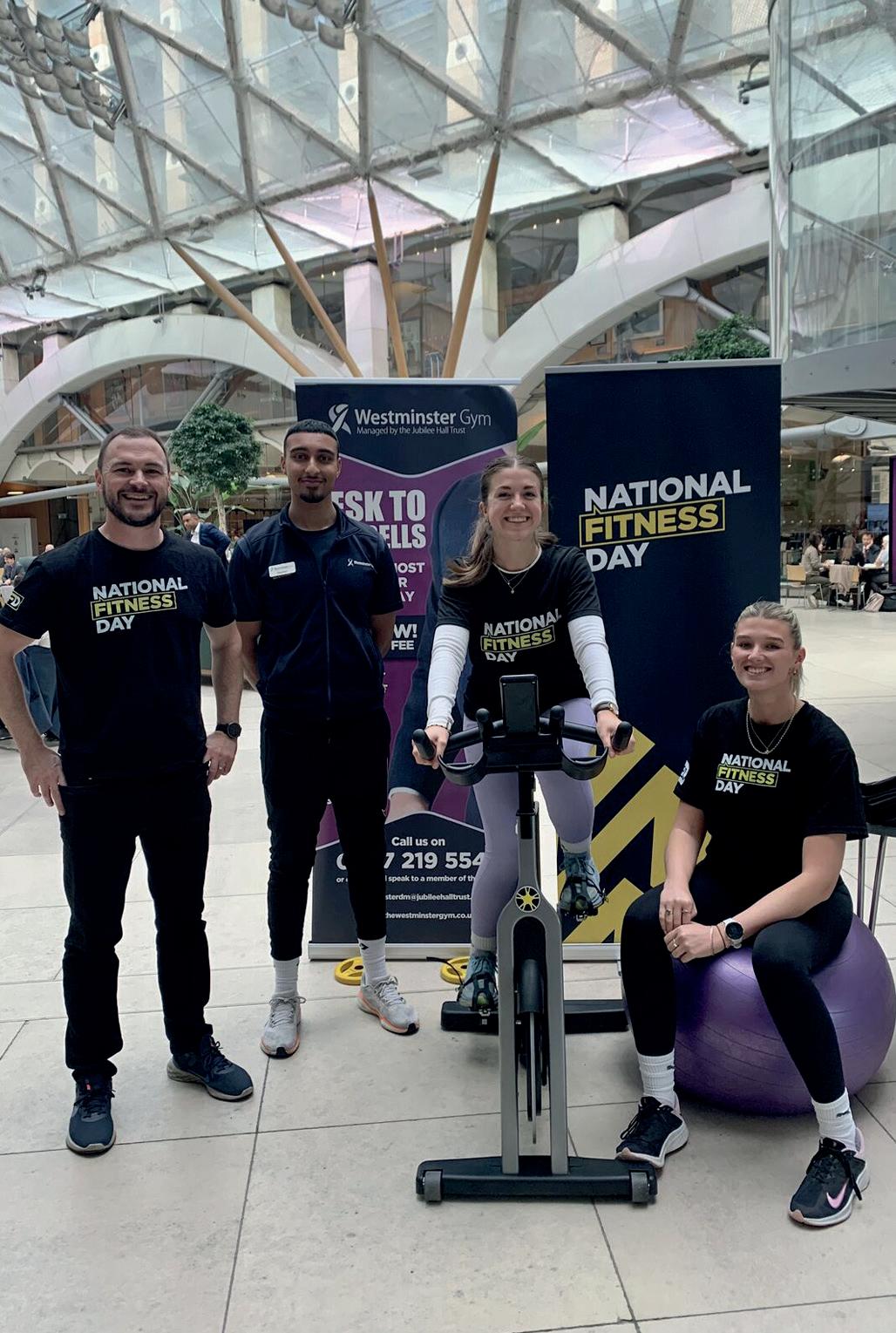
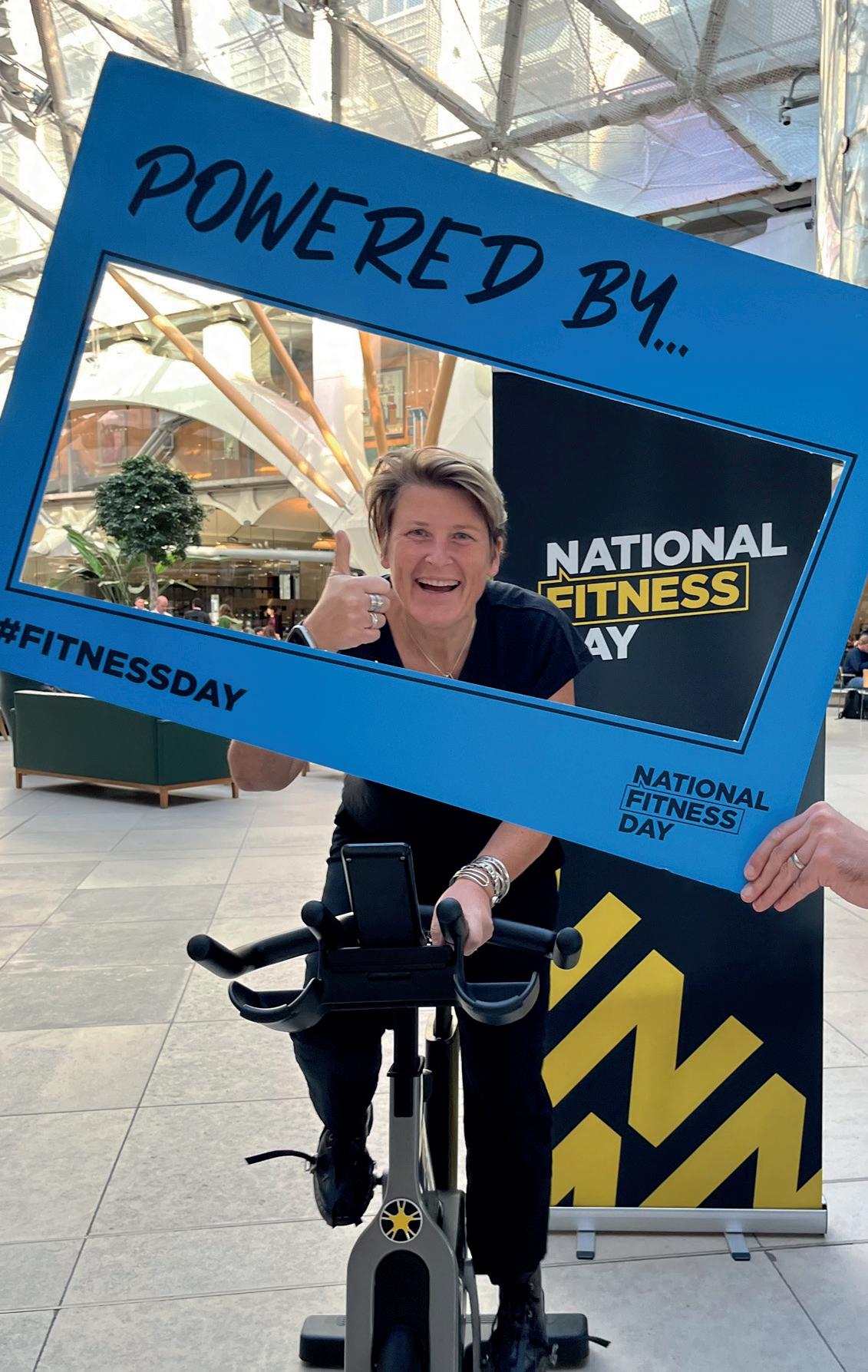
Scotland’s oldest heated saltwater lido, Gourock Outdoor Pool, has ended the season with its traditional Doggy Dip. The event was so popular that more slots had to be added.
Perched on the Firth of Clyde with panoramic views of Argyll’s hills, Gourock Outdoor Pool is an iconic leisure landmark. Operated by Inverclyde Leisure, it welcomes thousands of visitors from May to September and since 2019 has finished the season by inviting dog owners to bring their pooches for a swim, before the pool is drained and cleaned.
Thanks to media coverage and word-of-mouth, the event has built in popularity each year, attracting visitors from all over Scotland and boosting revenues with ticket sales and secondary spend, including for
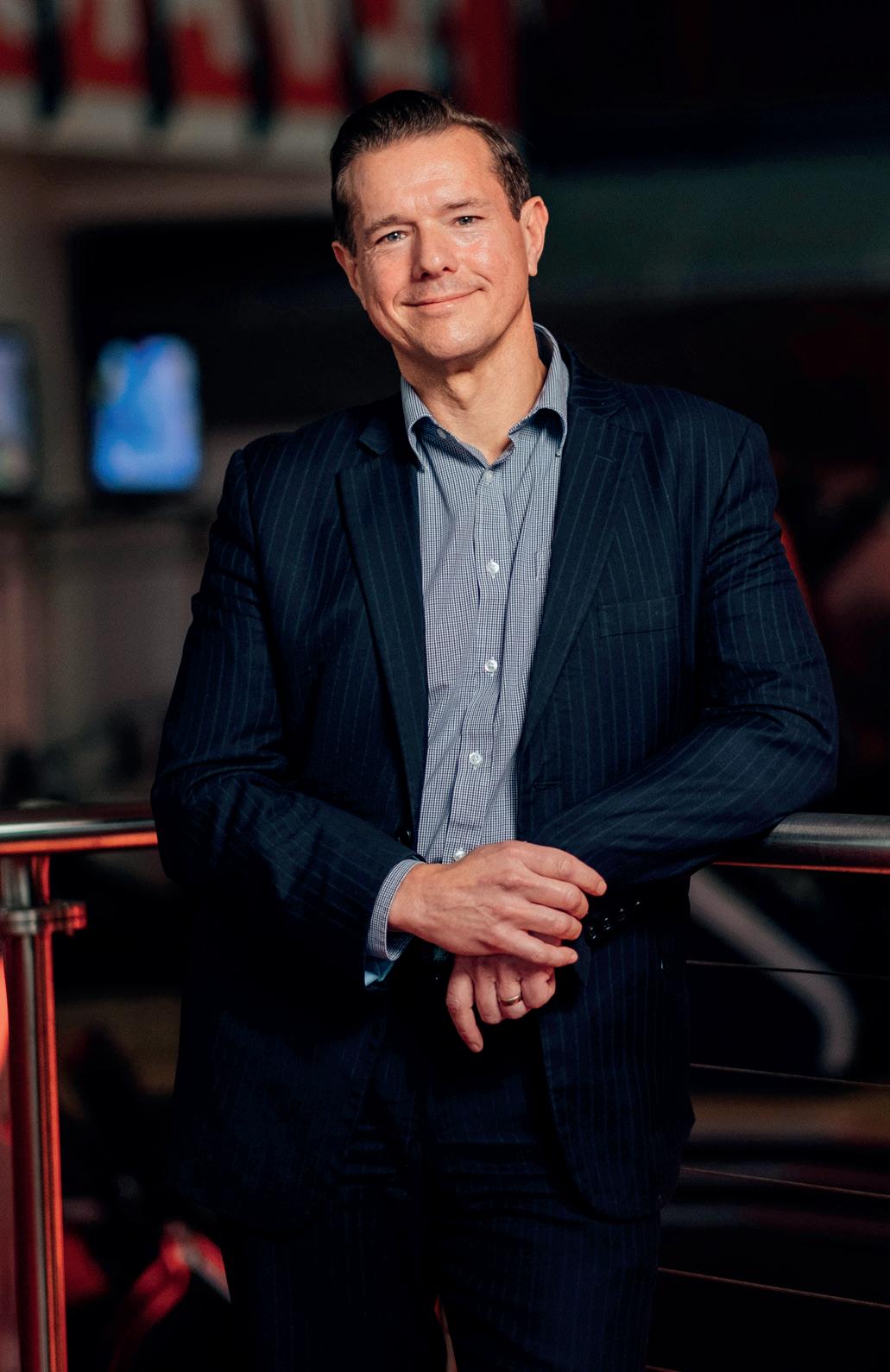
dog-friendly ice cream. Due to high demand, additional sessions were added this year, meaning almost 200 dogs attended the five fully-booked sessions.
“At Inverclyde Leisure, we continually strive to enhance and develop our service provision by introducing innovative activities that engage new audiences and celebrate our facilities in creative ways,” says Inverclyde Leisure’s CEO, Kieron Vango.
“The Doggy Dip was born from one of our team members who – as a dog lover themselves – imagined how exciting it would be to share a swim with their pet. The idea perfectly captured the community spirit and sense of fun that Gourock Outdoor Pool is known for.”
Safety for both dogs and owners is paramount. Lifeguards are on hand to supervise each session and chlorine levels are maintained at safe levels for all swimmers. Owners are given pre-swim guidance to help their pets feel comfortable in the water and each dog has a pre and post-swim wash to remove any residual chlorine and minimise the risk of infection.
“Many owners describe the event as a joyful, memorable experience; a rare opportunity to share the thrill of swimming with their most cherished companions in such a scenic setting,” says Vango.
“The Doggy Dip has become a truly special tradition for Gourock Pool and our wider community. It’s a fantastic example of how creativity and innovation can breathe new life into a seasonal facility while bringing joy to local residents and visitors alike. We’re proud to see it grow year after year and to showcase the welcoming, inclusive spirit that Inverclyde Leisure stands for.”
http://lei.sr/W7U6G_H
“At Inverclyde Leisure, we continually strive to enhance and develop our service provision by introducing innovative activities that engage new audiences and celebrate our facilities in creative ways” Kieron Vango

Inverclyde Leisure opens the doors to dogs at the end of each season, before the lido is cleaned

US country club operator Life Time has teamed up with weighted vest supplier Aion to offer weighted workouts.
Aion is now Life Time’s official weighted vest sponsor, with sponsorship and activations at iconic marathon events in Miami and Chicago. Opportunities for broader integration into programmes are under evaluation.
The Dynamic Resistance vests make every workout more effective while the Passive Resistance vests are a lifestyle option that maximise daily movements with the integration of compression fit technology. Aion vests deliver even weight distribution across the body, promoting strength, endurance, posture and active recovery.
“Weighted vests may be trending, but they’ve been part of our programming for years,” says Jessie Syfko, senior vice president of Life Time Digital. “With Aion as our official weighted vest sponsor,
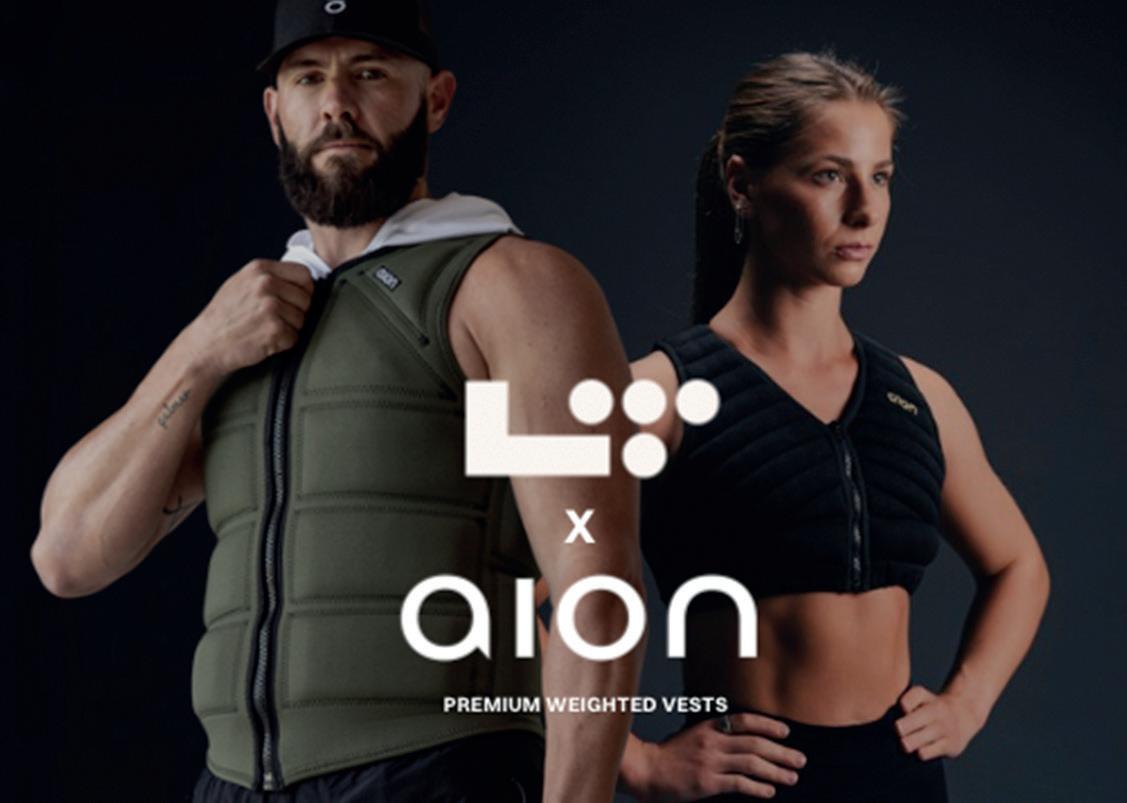
Life Time is uplevelling its weighted vest programme with Aion
we’re taking it to the next level –bringing awareness, access and new experiences to our members.”
“Partnering with Life Time is a pivotal step for Aion,” said Brent Yates, founder of Aion. “Together,
we’re making Dynamic Resistance accessible to millions, helping people move better, recover faster, and redefine what’s possible in their training.”
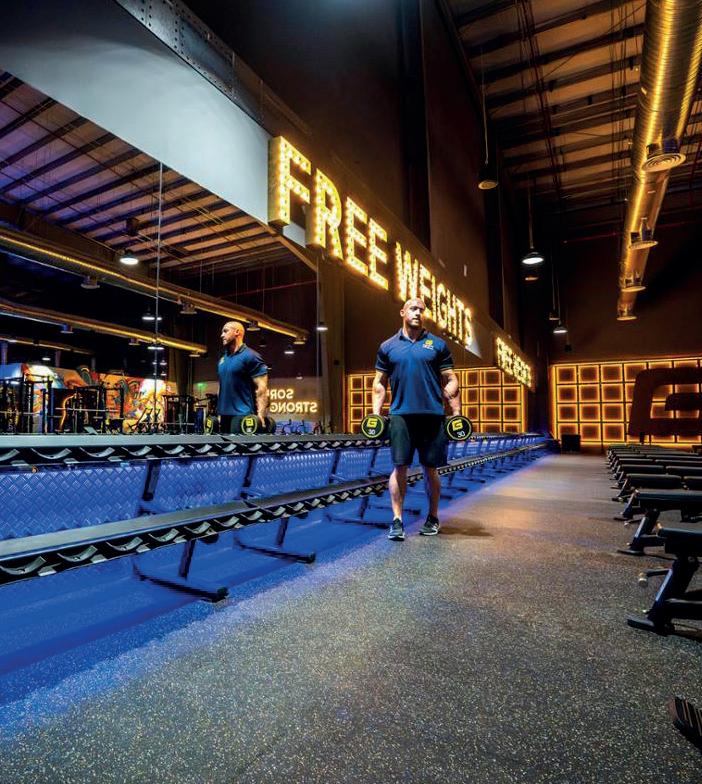
In recognition of World Mental Health Day 2025 on 10 October, Gymnation removed the weights from its gym floors across the UAE and KSA.
This symbolic gesture was to encourage the public to unload themselves. “The only weight we wanted people to lift on 10 October was the weight off their mind,” says Gymnation’s chief marketing officer, Rory McEntee.
The company organised drop-in mental health classes at selected gyms in partnership with mental health organisation, Sage. The classes balanced physical and mental fitness, beginning with a popular workout to get the endorphins flowing and followed by a mental health talk and open Q&A led by

“The only weight we wanted people to lift was the weight off their mind”
Rory McEntee
Sage’s experts. The sessions offered practical advice, coping tools and space for open conversation.
The partnership began last year when Sage approached Gymnation about finding new ways to shine a light on mental health, while also offering solutions.
Fitness First has become Germany’s first national training club partner of fitness racing organiser, Hyrox, adding a premium sports format with a competitive edge to the existing offering.
The rollout of Hyrox Training Clubs has already started across the estate and from 1 January 2026 specific fitness race training will be available in all Fitness First clubs across Germany. Members will have access to ideal training conditions for race preparation, including Hyrox classes.
The first major highlight of the collaboration is Fitness First Hyrox Frankfurt, which will be taking place from 12 to 14 December. The three-day event at Messe Frankfurt is expected to attract around 15,000 participants.
As an official training partner, Fitness First will be represented by a large number of well-prepared members from across Germany.
“By integrating Hyrox into our clubs, we’re adding a high-energy training format that aligns perfectly with our mission to holistically motivate people”, says Johannes Maßen, CEO of Fitness First.
“Our mission has always been to inspire and activate people – which is why we live by the motto ‘Motivated by Fitness First’. Hyrox is the perfect addition to this philosophy. For years, we’ve been focusing on functional training through our freestyle areas. Hyrox builds on this, adding another innovative training approach.”
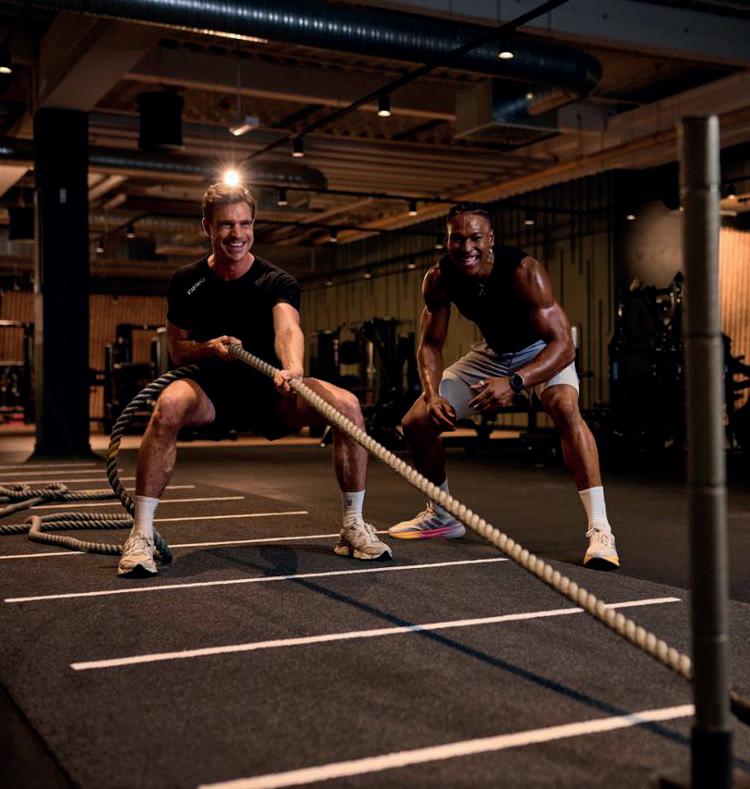
Hyrox classes will add a new motivational element to the Fitness First Germany offering
Recovery business Hyperice has partnered with music for wellbeing expert Myndstream to deliver a solution for operators looking to elevate recovery offerings.
Hyperice’s compression technology has been combined with Myndstream’s soundscapes to create an immersive mind-body experience.
The Normatec compression boot system is being paired with a curated soundscape to help deepen relaxation, calm the nervous system and maximise recovery outcomes.

“Consumers
want results and memorable, sensoryrich experiences”
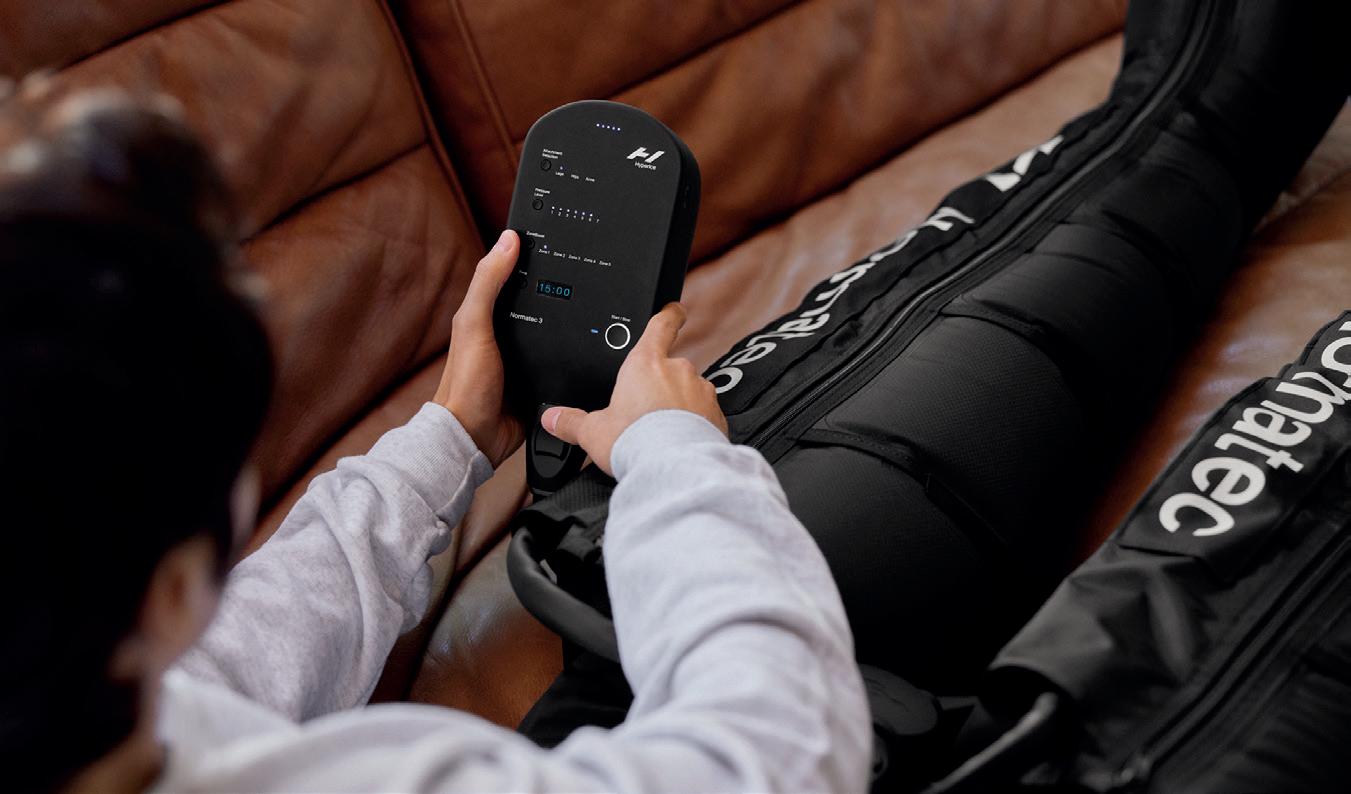
Three dedicated soundscapes are available – Rest, Recovery and Revive – or all three combined during the seamless 60-minute Full Mind/Body Sync session.
Freddie Moross, founder of Myndstream, says: “Consumers expect more from wellness – they want results and also memorable,
sensory-rich experiences. For operators, this means creating offerings that engage people on every level and this partnership gives spas, hotels, health clubs, gyms and recovery centres a solution that enhances recovery outcomes.”
Our ambition is for Southwark to become one of the healthiest boroughs in London
Natalie Davies-Lane

Davies-Lane says her passion for the industry has been reignited
Why did Southwark take leisure services back in-house?
The aim was to change perceptions of local authority leisure and create a stronger public health identity. Southwark has some of the poorest health statistics in London and we knew that bringing leisure under direct council control could help improve outcomes.
Having public health in the same office as leisure was a key driver for insourcing, and it is already paying off. We now receive the data we need to deliver targeted services, and it feels like a genuine partnership tackling shared priorities. Leisure is fully aligned with Southwark’s Joint Health and Wellbeing Strategy.

Southwark was the first London borough to announce, in 2021, that it would insource leisure services. The process was completed in June 2023, when the service was rebranded as Move Southwark and reframed as a health equity service, not just fitness. We now operate seven leisure centres, plus a site with sports pitches and tennis courts.
This is only the beginning. We’ve barely scratched the surface of what is possible when local leisure is publicly owned and designed for genuine community impact. It has reignited my passion for the industry and reminded me why I entered it in the first place: to remove barriers and help people achieve their goals.
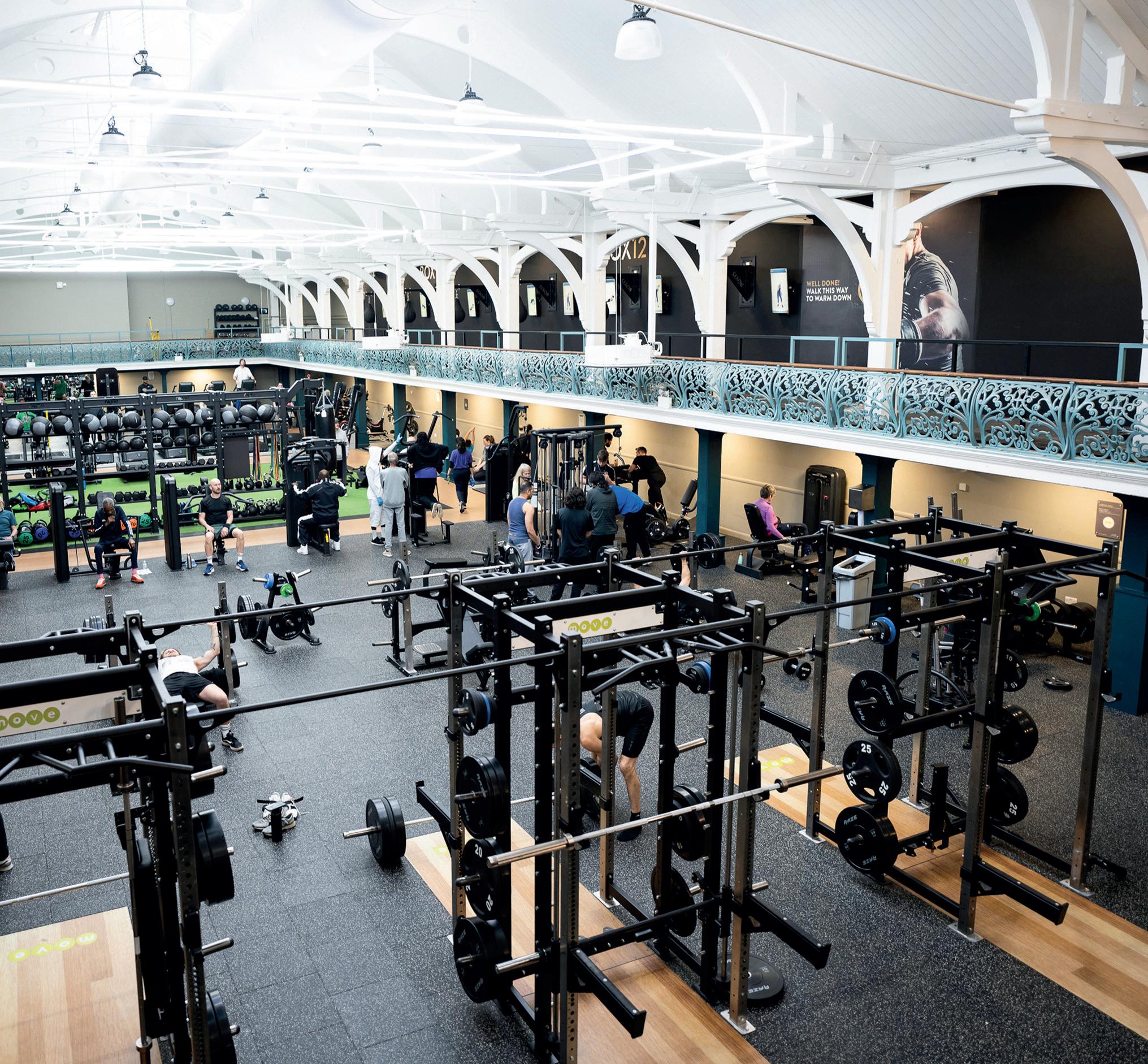
Since insourcing, £8.4m has been invested in infrastructure. This has included gym refurbishments at Dulwich, Camberwell, Castle and Southwark Park, as well as a new health and wellbeing studio at Peckham Pulse.
Our gyms were badly in need of modernisation. Outdated equipment was the most common complaint, impacting usage, memberships and customer satisfaction. Because complaints went directly to the council, they understood the urgency of a refurbishment programme and allocated a budget.
We wanted to reimagine what a standard leisure centre looks like and compete with the central
The next phase of Move Southwark is about deepening impact and supporting preventative health
● High rates of long-term conditions (obesity, diabetes, cardiovascular disease), and mental health needs
● 40 per cent born outside the UK, 13,000+ Spanish speakers, some wards with 24 per cent low/no English
● 51 per cent White; 25 per cent Black (16 per cent African, 6 per cent Caribbean); 10 per cent Asian; 7 per cent Mixed; 3 per cent Latin American
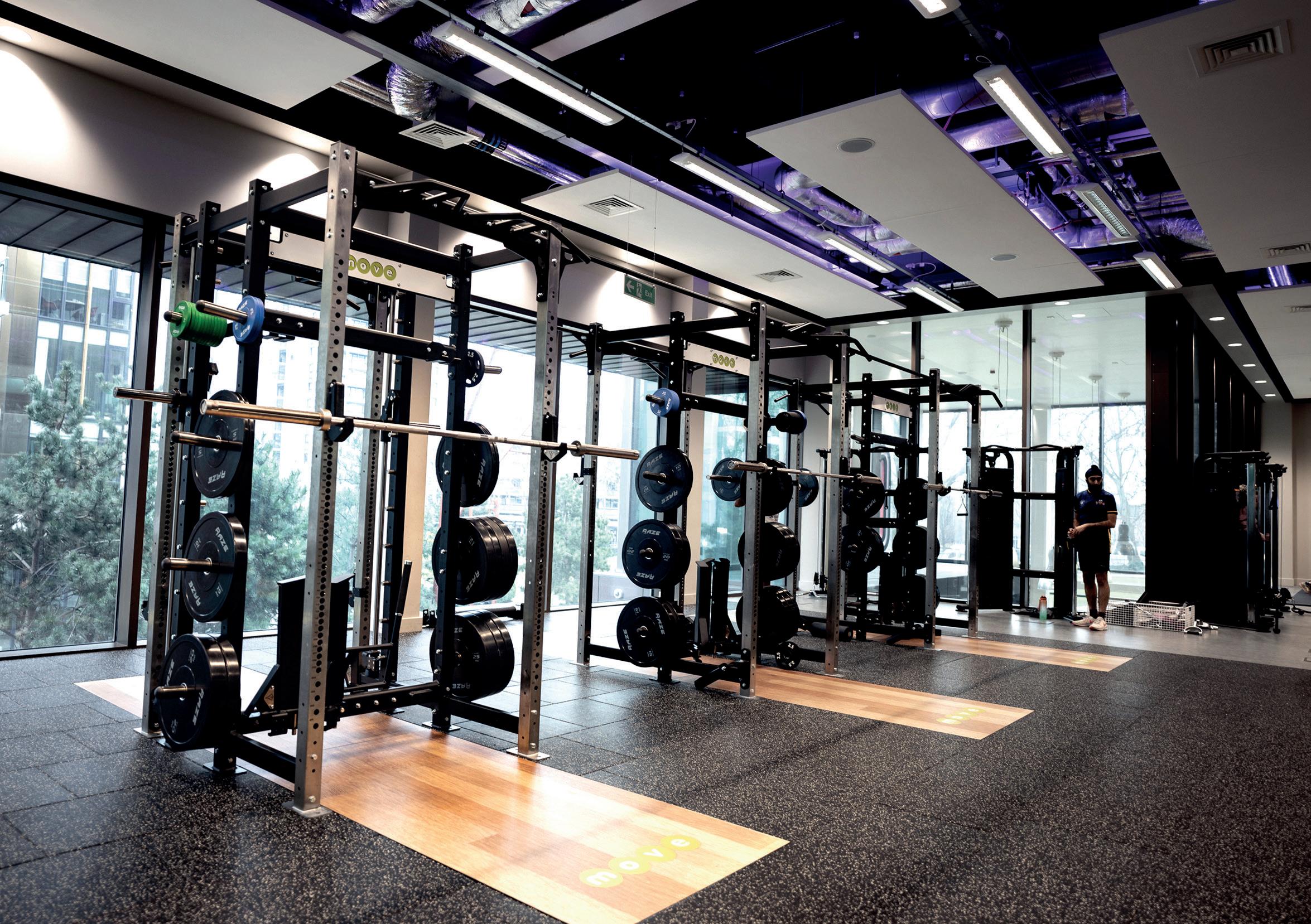
Local gym facilities were ‘reimagined’ to compete with the private market
Participation Growth: +39.3% (Jan–Aug YoY)
EGYM resistance circuits will be introduced at Camberwell and Peckham before the end of the year
London market. I studied what operators such as Third Space were doing, from equipment selection to layouts and lighting, details that might seem secondary but actually make a big impact.
Zynk produced striking designs; Pulse Fitness, Indigo, Origin and Box 12 supplied equipment; and NMCK completed the works.
We’re particularly proud of Dulwich and Camberwell. Both are Victorian buildings, which presented challenges, but we’ve managed to retain their character while creating a modern gym environment.
How is Move Southwark tackling inequalities?
We’ve worked with Everyone Health and our GP referral team to make pathways clearer for those with health issues, and to support long-term activity beyond the 12-week exercise referral programme.

We’re also designing tailored pathways for different groups, as one size does not fit all. For example, in some parts of the borough expectant mothers are experiencing issues with weight management, so we’re developing specific programmes to support them.
Last summer, we piloted yoga and aerobics-style classes in two libraries and a community hall. These were free for anyone registered with our free swim and gym scheme. Engagement was strong: 35 per cent of participants were previously inactive and said they would have felt too intimidated to visit a leisure centre. These sessions helped break down barriers and we’re now rolling them out across the borough.

I studied what operators such as Third Space were doing, from equipment selection to layouts and lighting, details that might seem secondary but actually make a big impact
We’re also developing non-exercise social activities, such as crochet clubs, to build wider engagement across the community.
What else?
In 2024 we launched our first open water swimming programme at Surrey Docks, providing safe, supervised sessions accessible to beginners. This is particularly focused on mental health, trauma recovery and nature-based wellbeing.
For older adults, we run a free Silver Swim and Gym scheme seven days a week at dedicated times. We also offer free group exercise classes for over60s, which are consistently well attended (94 per cent usage). We plan to expand this by using libraries, community halls and youth centres, as well as filling under-used studio time. The priority now is participation rather than revenue.
Our centres also host exercise referral programmes from Everyone Health, the NHS, King’s College Hospital and Guy’s and St Thomas’s. These tend to run at quieter times, so we’re ensuring our doors remain open to them.
Young people are another area of focus. How are you catering for their specific needs?
We’re working closely with care leavers, offering volunteering opportunities that can lead to apprenticeships. We run aqua discos for children with special educational needs at Peckham and Elephant and Castle, in partnership with Thrive

25, and collaborate with local youth centres, including The Damilola Taylor Centre in Peckham.
In school holidays, a number of kids’ camps use our facilities and we provide both instructor-led and virtual classes.
More recently, we’ve launched GYMfluence, a youth-focused initiative designed to build confidence and familiarity with fitness spaces. Alongside this, we are introducing group exercise classes specifically for young people, and have made Les Mills Born to Move available across all Southwark schools. These programmes provide inclusive, age-appropriate opportunities to get active, and their success has been recognised through our shortlisting at the UK Active Awards.
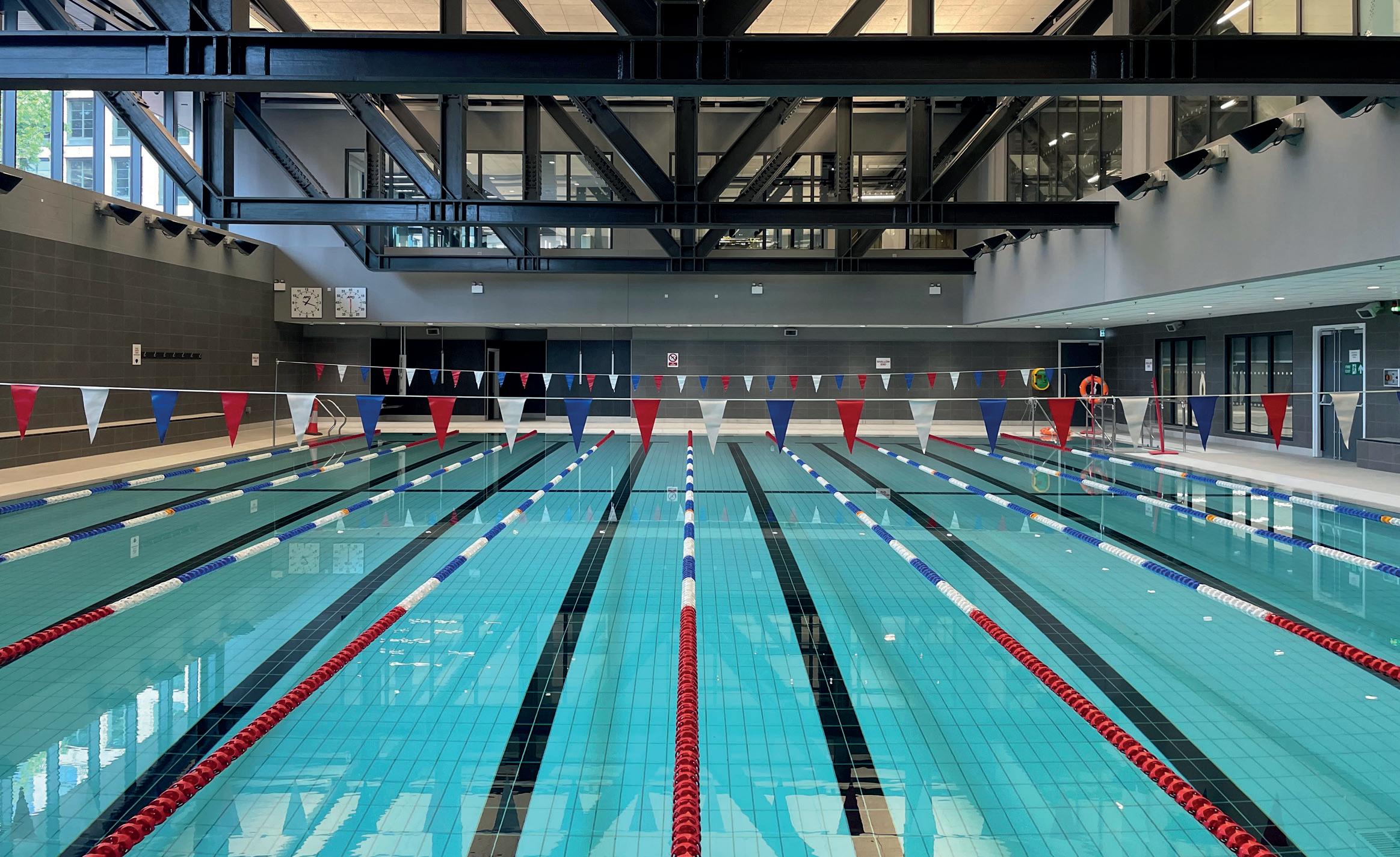
Canada Water
Leisure Centre is part of a £50m plan
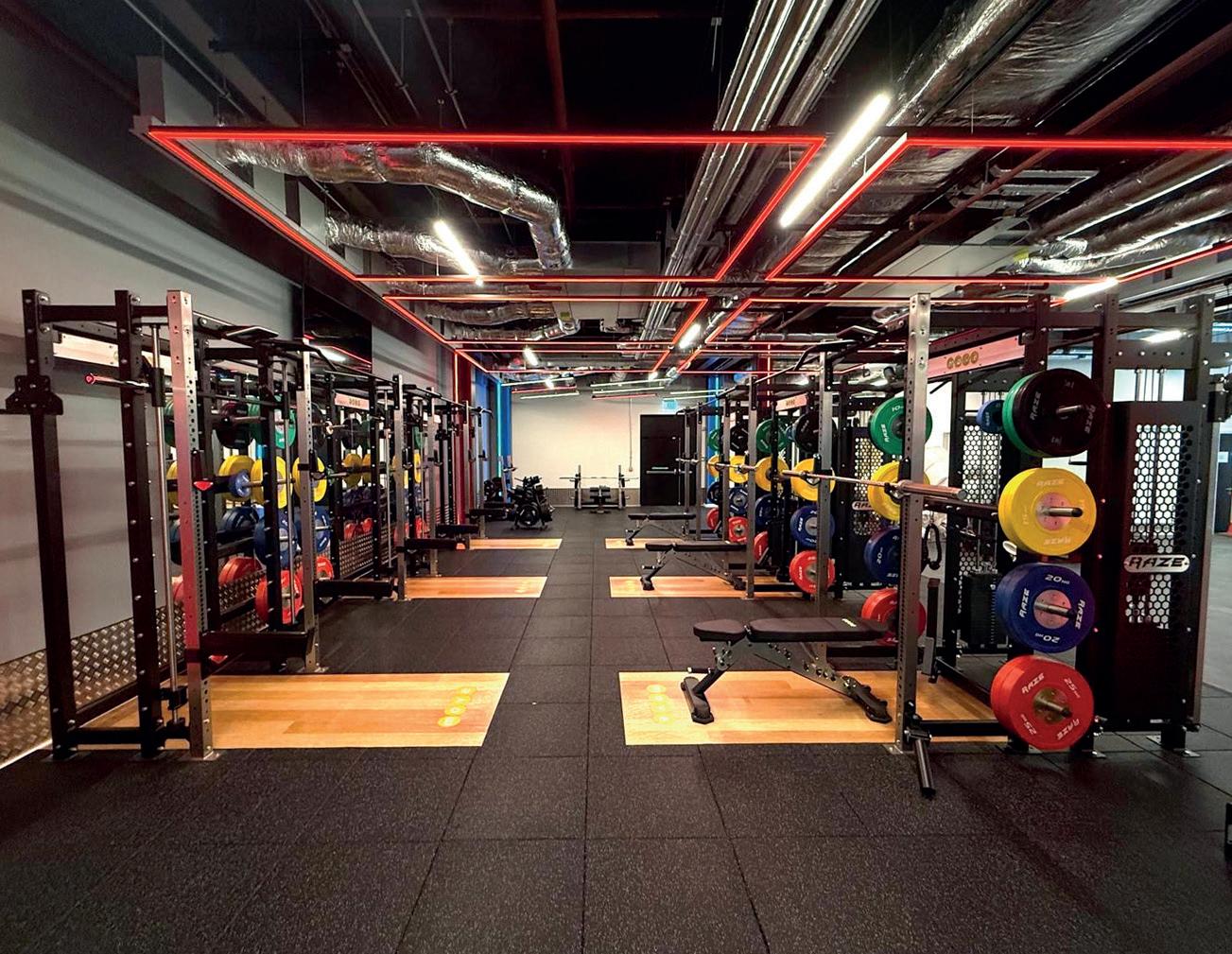
We’re not measuring success in pound signs but by the improvements we can make in the borough’s health. We have lots of exciting plans and investments in the pipeline
What does the Canada Water site include?
Canada Water Leisure Centre is a new facility replacing Seven Islands and forms part of the £50m Canada Water masterplan.
Opened on 1 September, it offers two swimming pools, an eight-lane main pool and a learner pool, a cycling studio, mind and body studio, high-energy studio, a four-court multi-use sports hall and a large gym.
The aim was to create a facility that feels safe and welcoming for older adults and special populations, without the intimidation factor often found in fitness settings. We’ll be delivering services in partnership with the NHS and public health. Pulse is our main equipment provider and has partnered with EGYM to support our offer.
How are you coping with rising energy costs?
We’re addressing this through our decarbonisation plan. Southwark Council is committed to becoming net zero by 2030, so the decarbonisation team is working with us to make facilities as clean and green as possible. This includes replacing pool filters, installing solar panels and introducing air source heat pumps.
l Free swim and gym: no eligibility checks other than proof of residency.
l 75,512 registered users (24.5 per cent of population)
l Including swim/fitness classes, total reach is 109,247 (35.5 per cent penetration)
l Especially impactful in areas of deprivation and among ethnic minority communities
l 1,140 adult, 12-week swimming courses offered annually, means-tested
l 512 schoolchildren in swim intensives (Years 5–7), expanding 2025/26, delivery shaped by Black Swimming Association to address cultural barriers
l 900 older adults engaged across 30 weekly classes
l High uptake for chair fitness, strength/ balance, dementia-friendly swim
l 94 per cent attendance rate, strong outcomes on confidence and mobility
l Memberships cost £36.99 for concessions and £43.99 or £57.99, depending on how many facilities the user wants to access
l MSK recovery
l Cardiac rehab
l Diabetes/obesity management
l Social prescribing for anxiety and isolation
What are the plans for the future?
The next phase of Move Southwark is about deepening impact and supporting preventative health. This will include wellness zones, prescription-to-movement pathways and neighbourhood-based mental health support.
We have lots of exciting plans and investments in the pipeline to continue developing our facilities and programmes, including further enhancements to the ways we support health and wellbeing in the borough. It’s an exciting time. We’re not measuring success in pound signs but by the improvements we can make to the borough’s health. Our ambition is for Southwark to become one of the healthiest boroughs in London, showing that leisure services can deliver real, measurable outcomes for public health. l


Our lifestyles can give us 80 per cent control over whether or not we develop an illness
Lafina
Diamandis
Founder, Deia Health








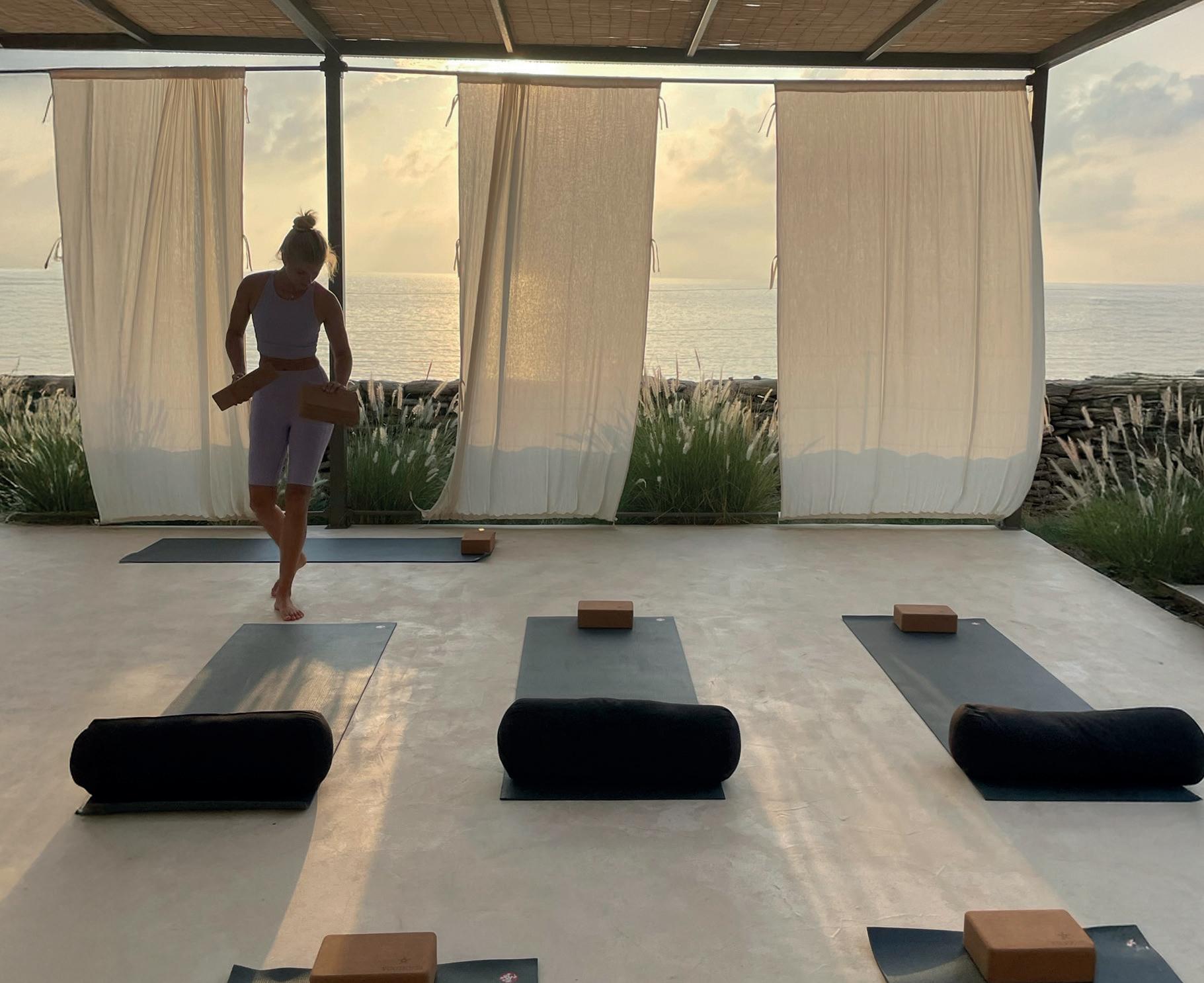

Our clinic on London’s Harley Street offers a full range of GP services and holistic health screening. We use a lifestyle medicine and functional health approach to look at how the body systems are interacting in order to solve complex health problems. Our approach encompasses eight pillars: movement, nature, nutrition, sleep, relaxation, genetics, environmental toxins and relationships with the self and others.
From my previous experience working as a doctor in the NHS, I know where the gaps in healthcare are and I’m really passionate about using a holistic approach to health problems rather than simply prescribing pills for symptoms.
My experience in the NHS also showed me what it’s possible to achieve with multi-disciplinary teams, however, the problem with the UK’s NHS health service is that it’s a reactive system with limited resources, particularly when it comes to primary care.
One of my goals when starting Deia Health was to create a clinic that blends both modern medicine with holistic and multi-disciplinary care to address the root causes of illness and offer a service that is truly proactive, preventative and personal.
Something I’m really proud of is our multidisciplinary team – from expert dietitians to somatic therapists – we can literally build a team of experts around the patient to get the best outcome for them.

We use a lifestyle medicine and functional health approach to look at how the body’s systems are interacting to solve complex health problems
This is something they can benefit from whether in-clinic or on one of our wellness retreats.
Lifestyle medicine is an evidence-based approach to health, where we look at lifestyle factors as the primary therapeutic intervention for treating, reversing and managing diseases, such as diabetes, high cholesterol and mental health problems.
Functional medicine includes the lifestyle medicine aspect but also takes an in-depth look at the biology –how the different systems in the body are interacting with each other and where dysfunction might be. Our approach involves looking for the root causes of illness – there are usually more than one – and addressing these holistically, using strategies from exercise, nutritional science, sleep medicine and neuroscience.
For example, if someone presents with depression we don’t just consider their medical and family history, we look at the timeline of events that led up the depression, we consider their lifestyle
factors, social connections and unique biological factors. We think about what we can do to optimise someone’s internal state holistically, whether that is through improving nutrition – because there’s an incredibly important connection between food and mood – reducing inflammation or addressing chronic stress or unresolved trauma. This ensures that the plan we create will serve the individual in the short and long-term.
The holistic care plan I recently gave a client involved a daily walk in nature with the aim of supporting her to build more gentle movement into her day, reduce stress and improve wellbeing. Being in nature helps to reduce the stress hormones of cortisol and adrenaline and increase the number of natural killer cells in the immune system which help us to fight infections. Plus it helps us to feel good because we’re exercising,
Diamandis believes that social nourishment is a vital part of health
we hear birdsong, we’re looking at green, we’re breathing in phytoncides which are the chemicals that trees emit and all of that is so important.
How important is it to address trauma?
Trauma is a very important factor to consider in all disease. The field of psychoneuroimmunology is growing, there’s even psychoneuroendocrinoimmunology now that reveals how much of an impact stress and trauma can have on our health. Our psychology literally shapes our neurochemistry.
When the nervous system is reacting to trauma, the stress response is switched on and this has an impact on our hormones and immune system. Chronic stress states can cause the immune system to dysfunction, targeting our own tissues

which can lead to autoimmune diseases. This is why it’s so important to consider emotional health as a core pillar of health and wellbeing. If you have a negative mindset, or you’re stuck in a vicious cycle of negative thinking or selfcritical thoughts, then you’re going to put your body into stress mode and over time that can predispose you to a range of health problems from IBS to depression or high blood pressure.
How important are our social lives for health?
Social nourishment is a vital part of health – I think everyone’s heard the statistic that loneliness is as harmful to health as smoking. Being connected to others is one of the best things you can do for your nervous and immune systems, because it creates a deep sense of safety and belonging. That lowers stress and if you’ve got lowered stress, you’ve got lowered inflammation in the body which positively impacts everything from mood to blood pressure and the rate at which the body ages.

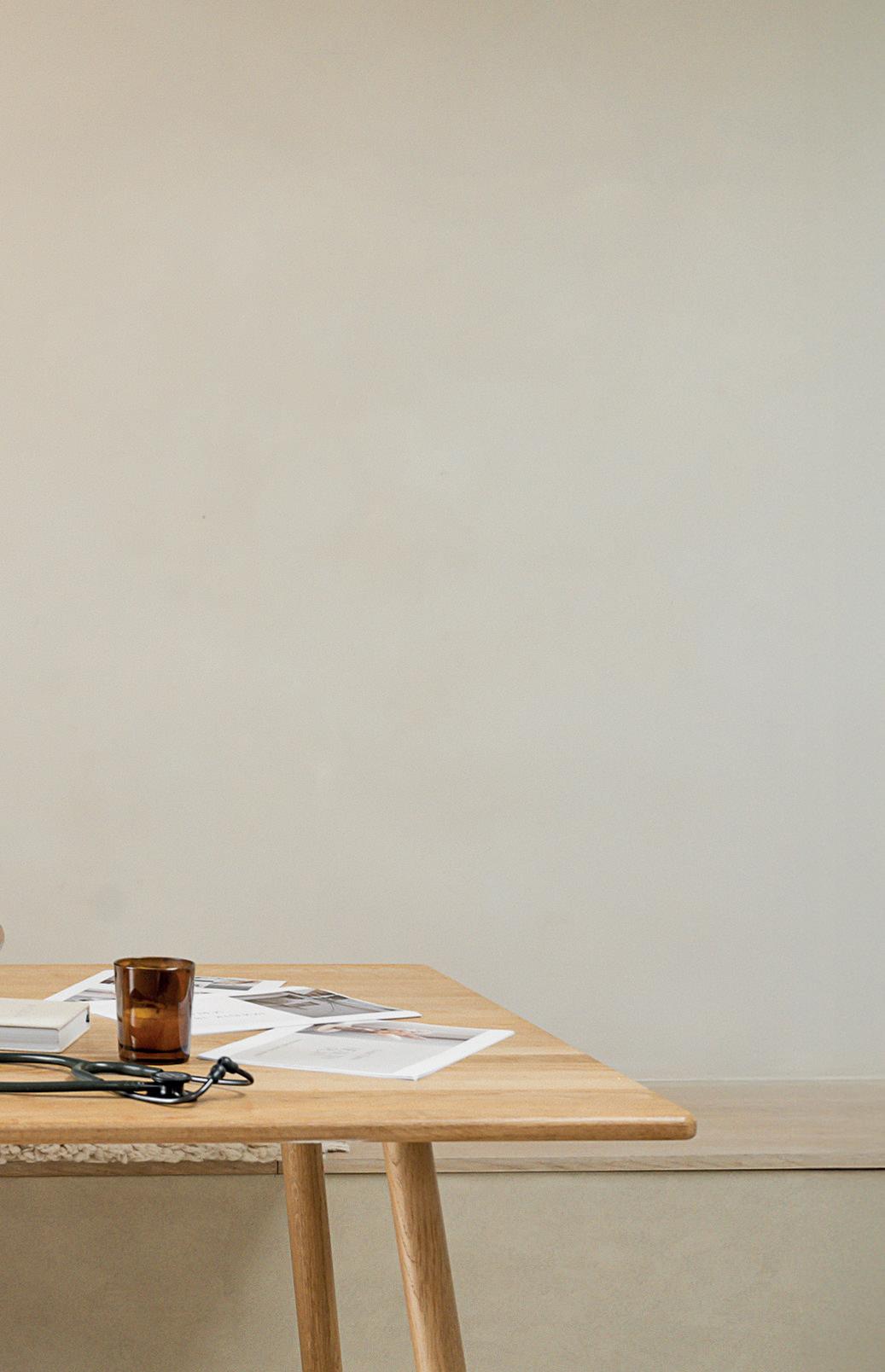
How can you change your genetic predisposition to a disease?
Genes are the blueprint for your health, but they’re not necessarily going to be expressed. So if you have the gene associated with a high risk of

We’re seeing an increased appetite for wellness spaces that overlap with healthcare
Alzheimer’s, this doesn’t mean you will develop Alzheimer’s. Lifestyle factors can switch those genes on and off and we know lifestyle factors such as nutrition, sleep, stress and exercise all influence the expression of those genes.
Our lifestyles can give us 80 per cent control over whether or not we develop an illness. So while you can’t change your DNA, you can influence the way that DNA will behave, which is really empowering.
Is there anything that health and fitness operators could do to engage with you?
I’m always looking to connect with like-minded professionals and I think there’s huge scope for collaboration with the fitness industry in terms of educational initiatives and awareness-raising workshops, to integrating health services in a range of fitness spaces. There’s a huge movement towards preventative health and as a result we’re seeing an increased appetite for wellness spaces to overlap with healthcare. This is really positive, as it can help to shift attitudes around thinking about health when we are sick, to thinking about health from a proactive and preventative perspective. l
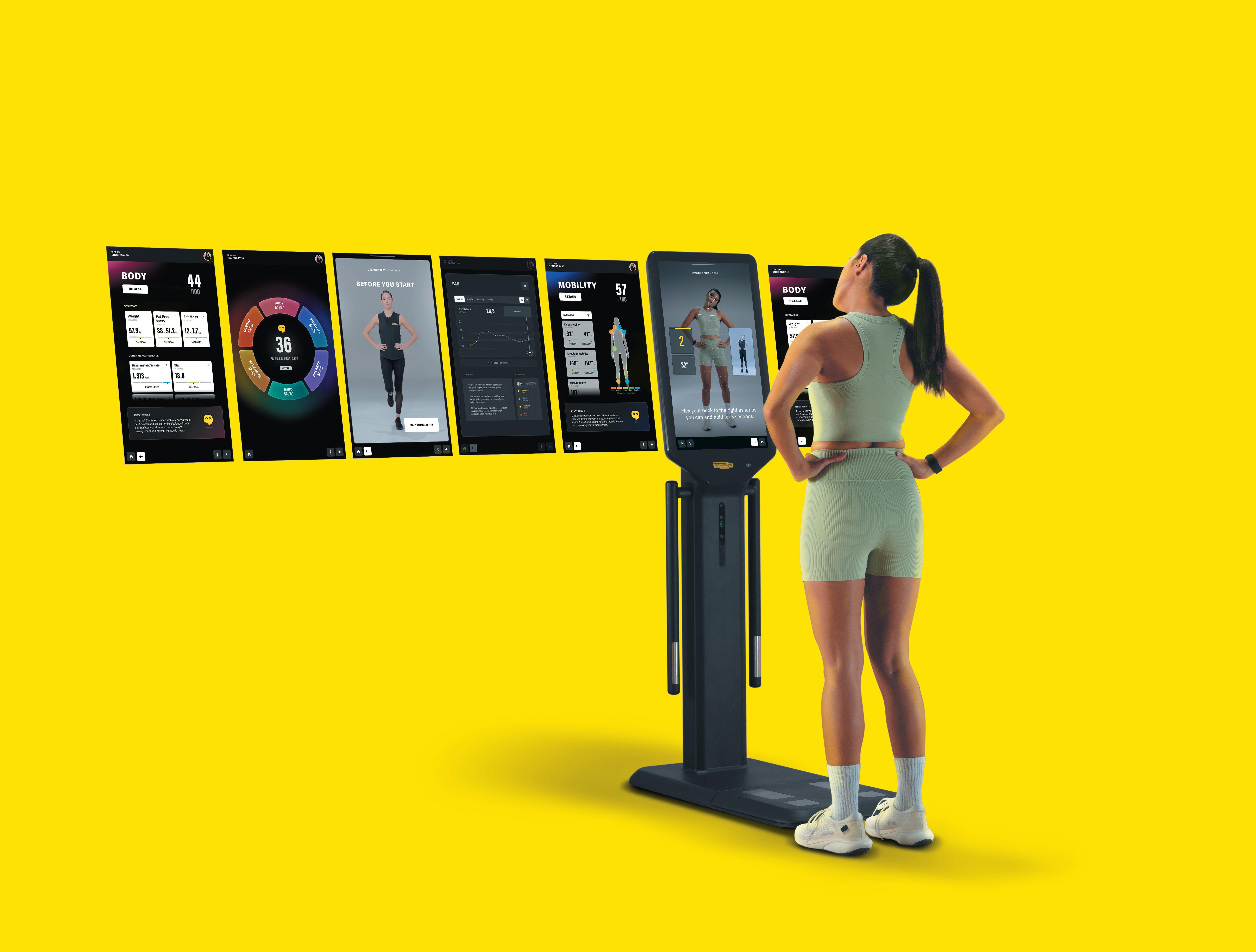
Technogym
PHYSICAL AND COGNITIVE ASSESSMENT:
MIND

MOBILITY
BALANCE
STRENGTH
CARDIO
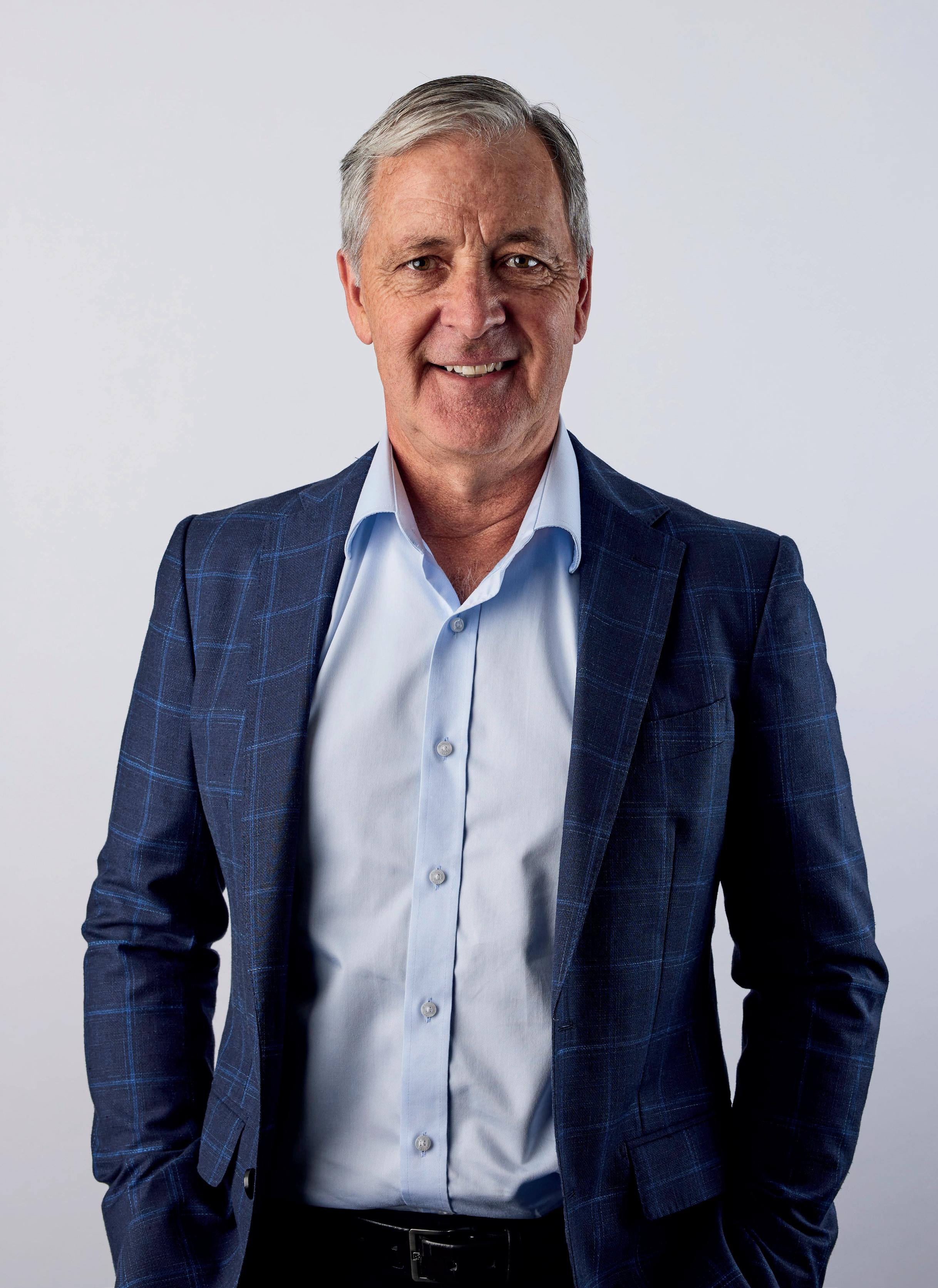






We’re forging a compelling new proposition and market classification and calling it Premium Value









APAC expansion is on the cards for Fitness and Lifestyle Group as it restructures around a premium value market positioning. Its group CEO and MD speaks to Kate Cracknell

With 330+ locations across the APAC region, Fitness and Lifestyle Group (FLG) is Asia Pacific’s largest group of corporately owned health and wellness clubs.
The portfolio includes Fitness First Australia, Goodlife Health Clubs, Zap Fitness, Jetts Thailand and Jetts New Zealand, as well as six Barry’s locations in Sydney, Melbourne and Singapore. Its vision from the outset has been to be the most significant player in the APAC region, with a



suite of brands that allows it to service customers with the right product in the right market.
HCM last caught up with group CEO and managing director, Greg Oliver, in 2017, shortly after FLG had been created by private equity firm Quadrant. Fast-forward to 2025, we encounter a group that has recovered strongly from the pandemic, beating budgets and responding to changing consumer demand by forging a compelling new proposition and market classification which Oliver is calling ‘Premium Value’.



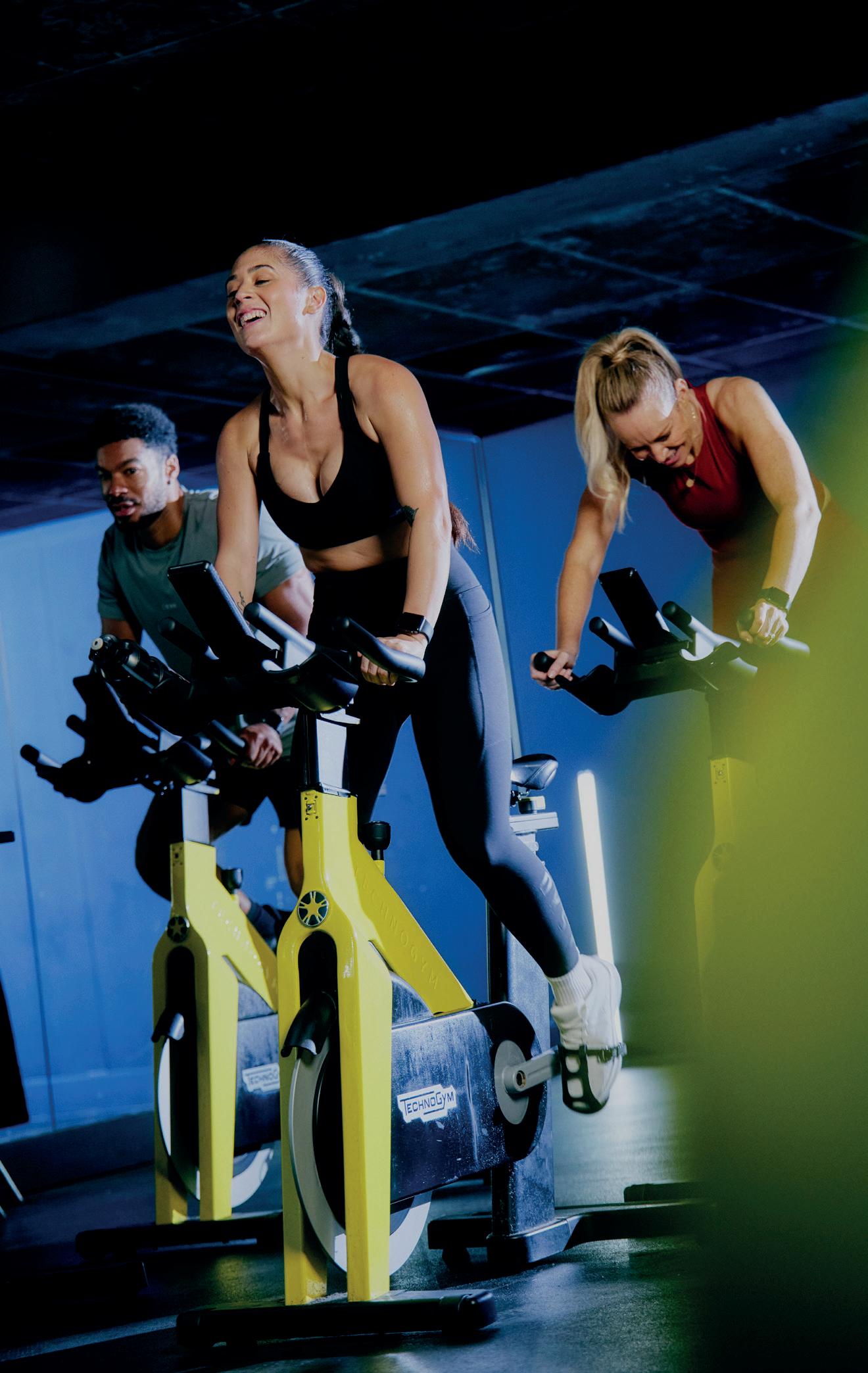
What do you mean by premium value?
In the fitness sector, much of the capital is still being directed towards high value, low price (HVLP) brands. However, if we’re looking for growth areas in consumer spending, we have to look at premium experiences, particularly among Gen Z consumers.
This emerging young consumer is drinking less alcohol and prioritising sleep, mental health and physical wellbeing. They have a greater focus on quality of life and spend more intentionally, seeing fitness not as a luxury, but as an essential.
They’re also more likely to use multiple services: classes, personal training, recovery and more. Gen Zers aren’t just joining, they’re engaging deeply and driving membership growth – not only in numbers, but also in depth of experience and yield per member.
And so the previous definition of ‘full service’ is no longer enough. We have to create more offerings tailored to this group – recovery spaces, mind-body programmes, group training communities and so on – to build loyalty early.
This will benefit not only our individual businesses, but also the sector as a whole. Because if this trend continues – and on the basis that we believe in the efficacy of our products – then

in 30–40 years, we’ll be having a very different conversation with regard to healthcare costs.
If this generation continues to invest in a holistic approach to health and wellness, then in years to come we might, for the first time, see our products and services bring about negative pressure on healthcare spending.
This is why FLG has done extensive research in recent years to really understand what consumers want, rather than assuming the same continues to apply. We’ve explored what they do and don’t value, as well as what they would value more of, if we were able to provide it. At the same time, we’ve challenged ourselves to identify services we might now omit from our previous iteration of ‘good’.
One example is childcare. It was a very difficult decision to remove this from our clubs, but with legislation continuing to tighten in this field and the service valued only by a small proportion of our
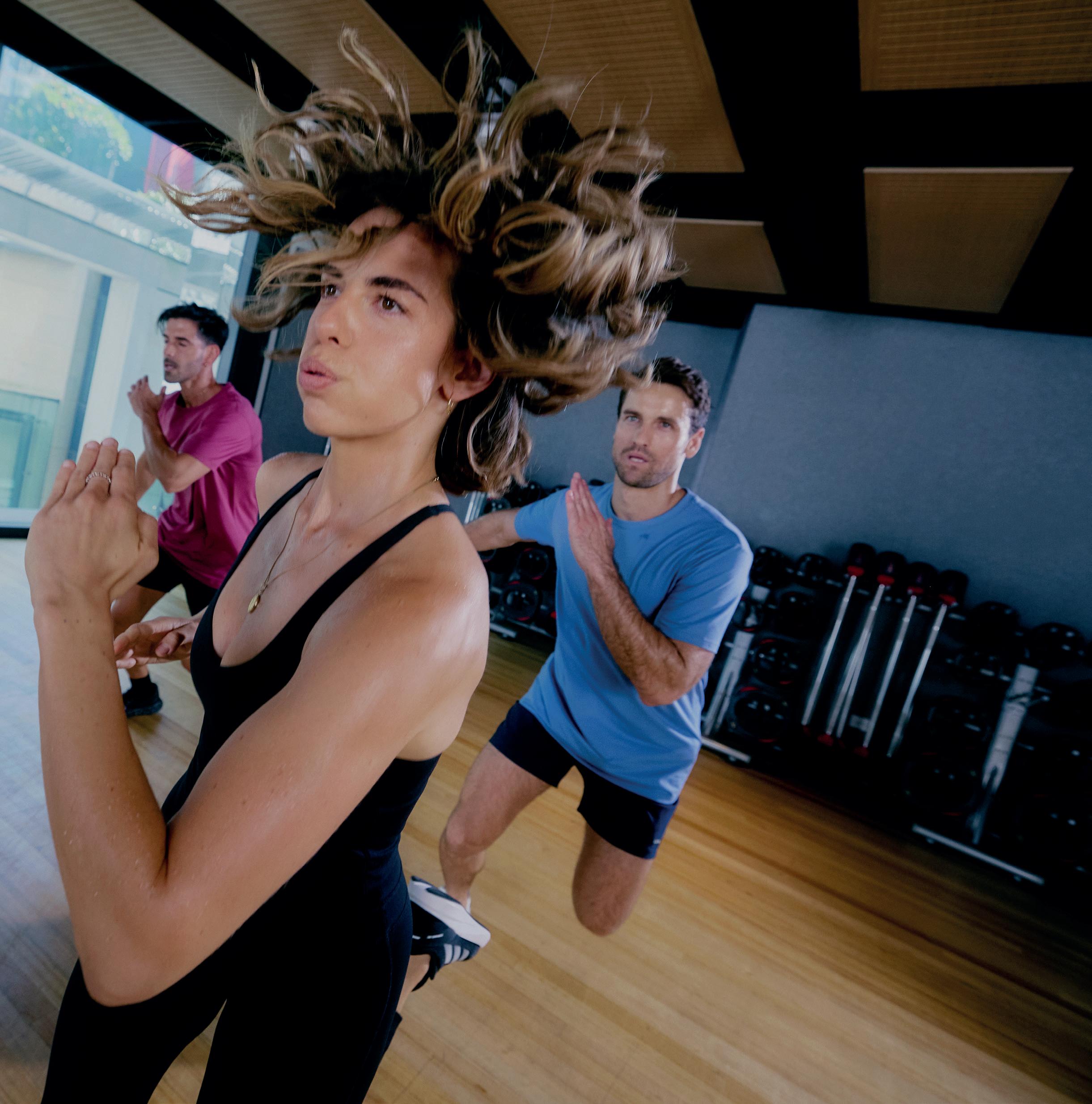
members, the time was right to explore how we might better utilise these spaces – 147 across our estate – to provide a more relevant product. It was a key decision that enabled the creation of a series of signature products, all of which are bundled into our Platinum Plus memberships. This is our competitive advantage: our scale means we can deliver premium experiences at a value price point. Consumers pay just a little more to get a lot more. This is what we mean by offering members ‘premium value’. You could spend A$80 a week in Sydney doing Pilates in a standalone boutique,
If this generation continues to invest in health and wellness, we might, for the first time, see our services bring about negative pressure on healthcare spending
or you could add it to your Fitness First or Goodlife membership for A$12 a week.
What are your signature products?
Our signature concepts reflect the post-pandemic shift in member priorities – away from fitness alone and towards overall wellbeing, recovery, mental health and longevity.
The first to launch was Reform Pilates, our dedicated reformer studio brand. A highly-curated, premium group programme designed and produced entirely in-house, it launched with two studios in 2020.

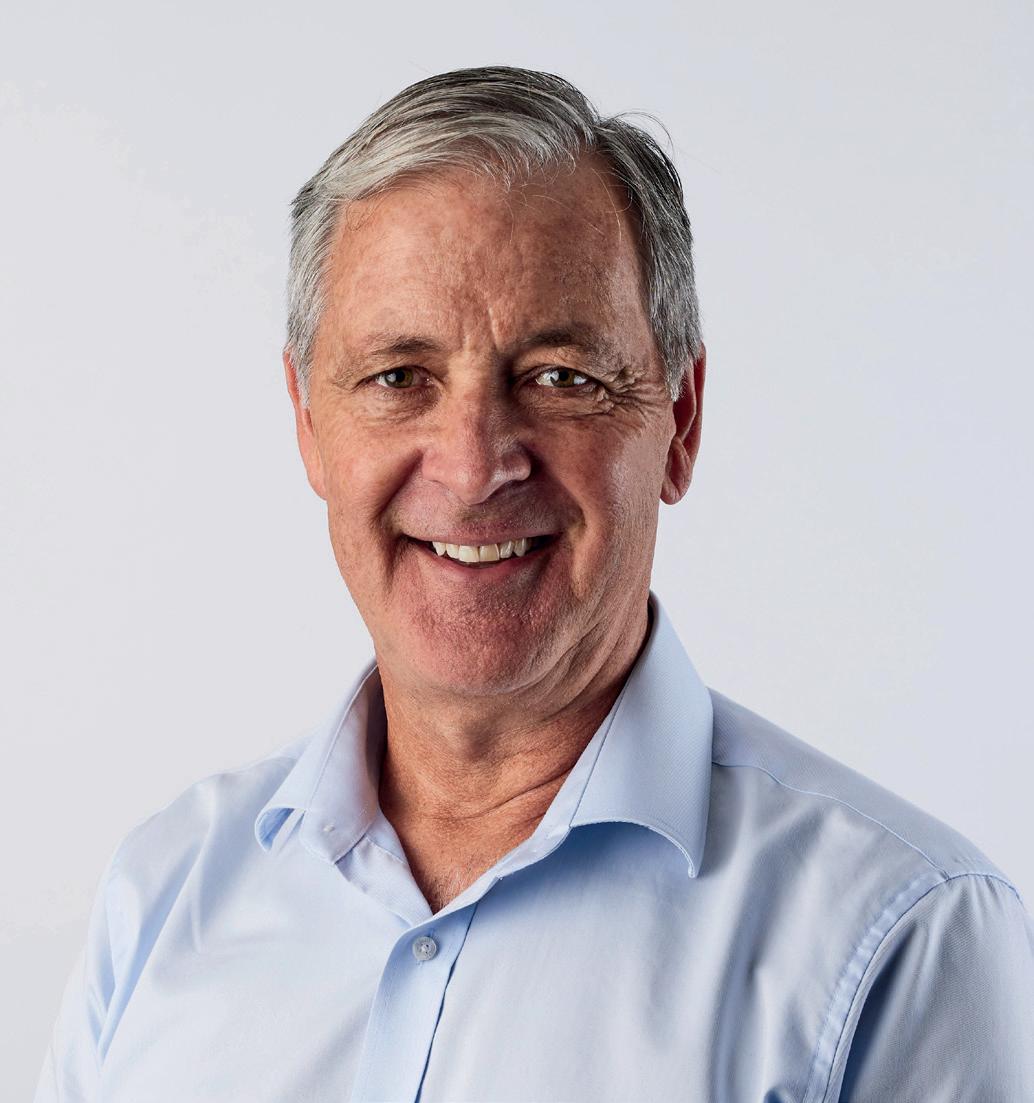
Reform Pilates is becoming a key growth engine for us, with more than 3.6 million visits to date
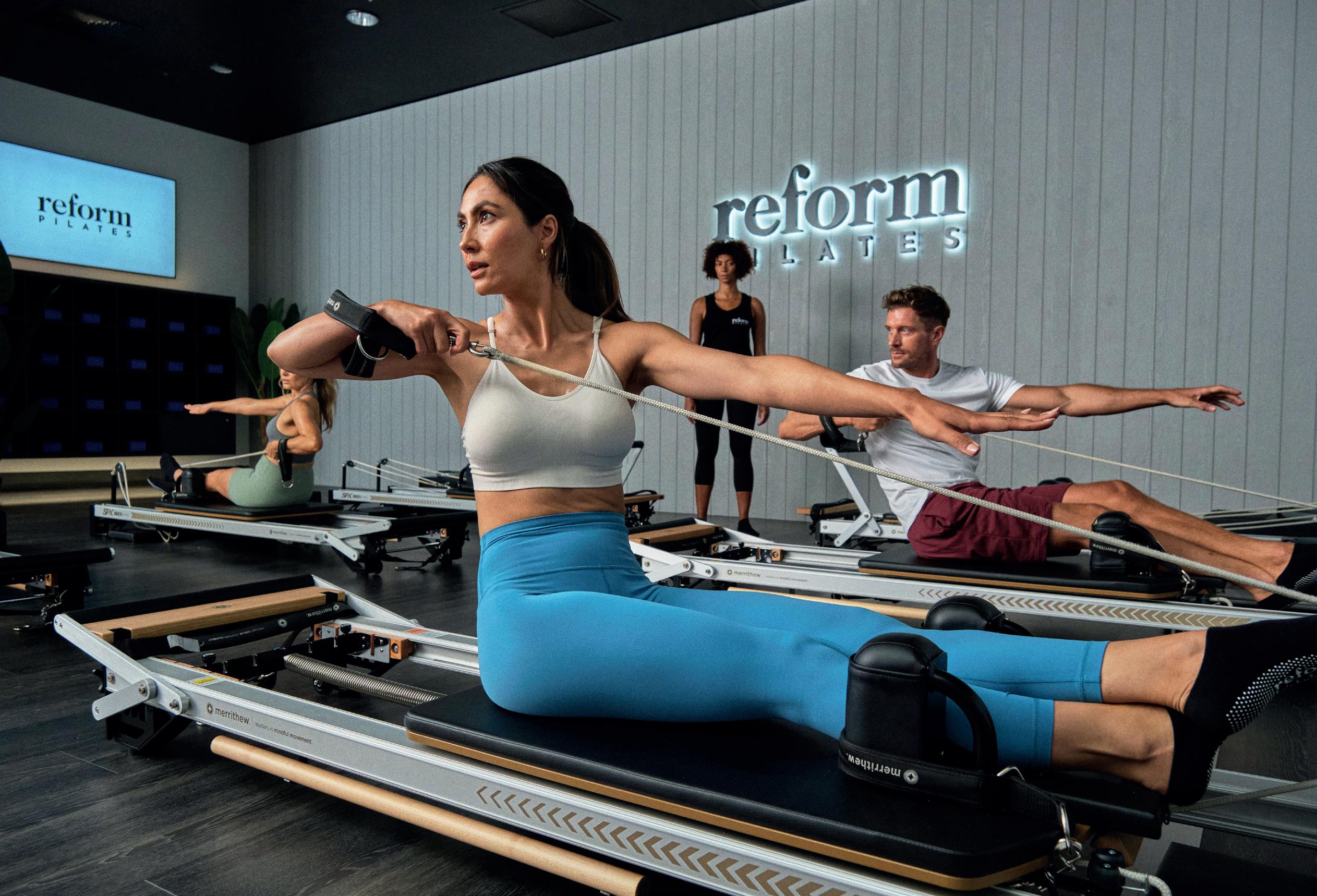
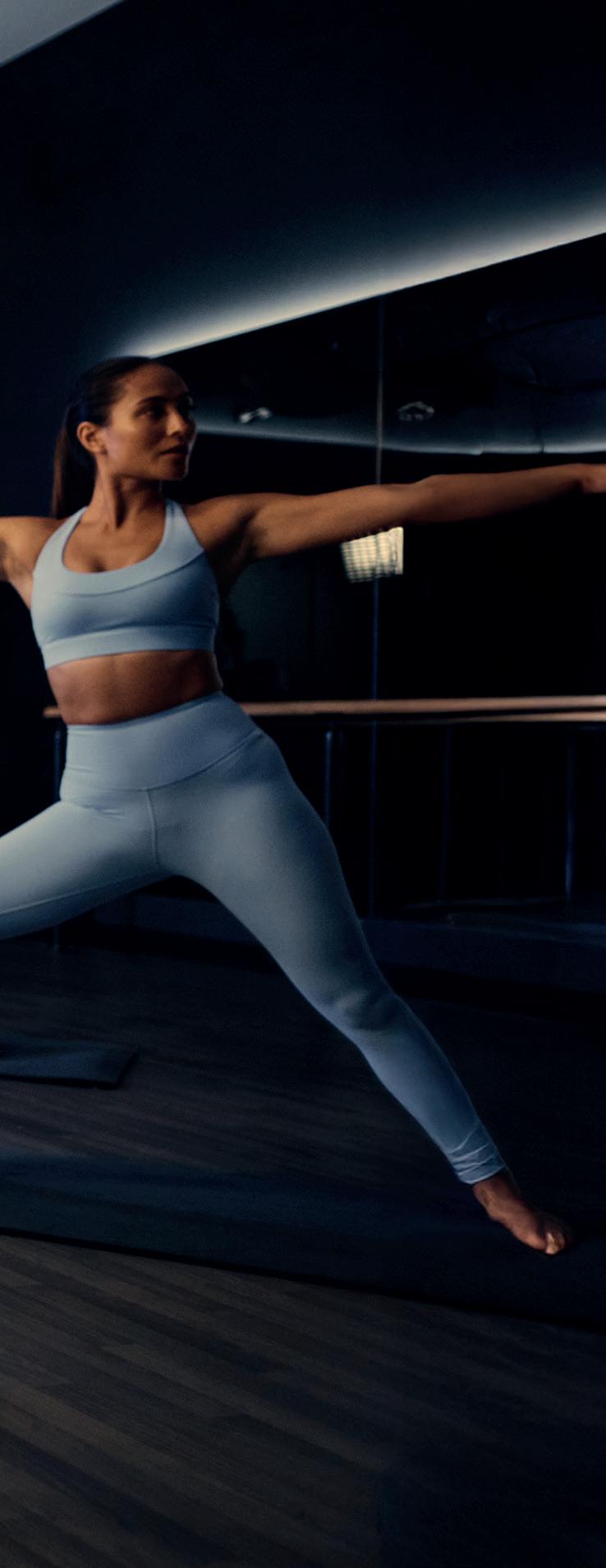
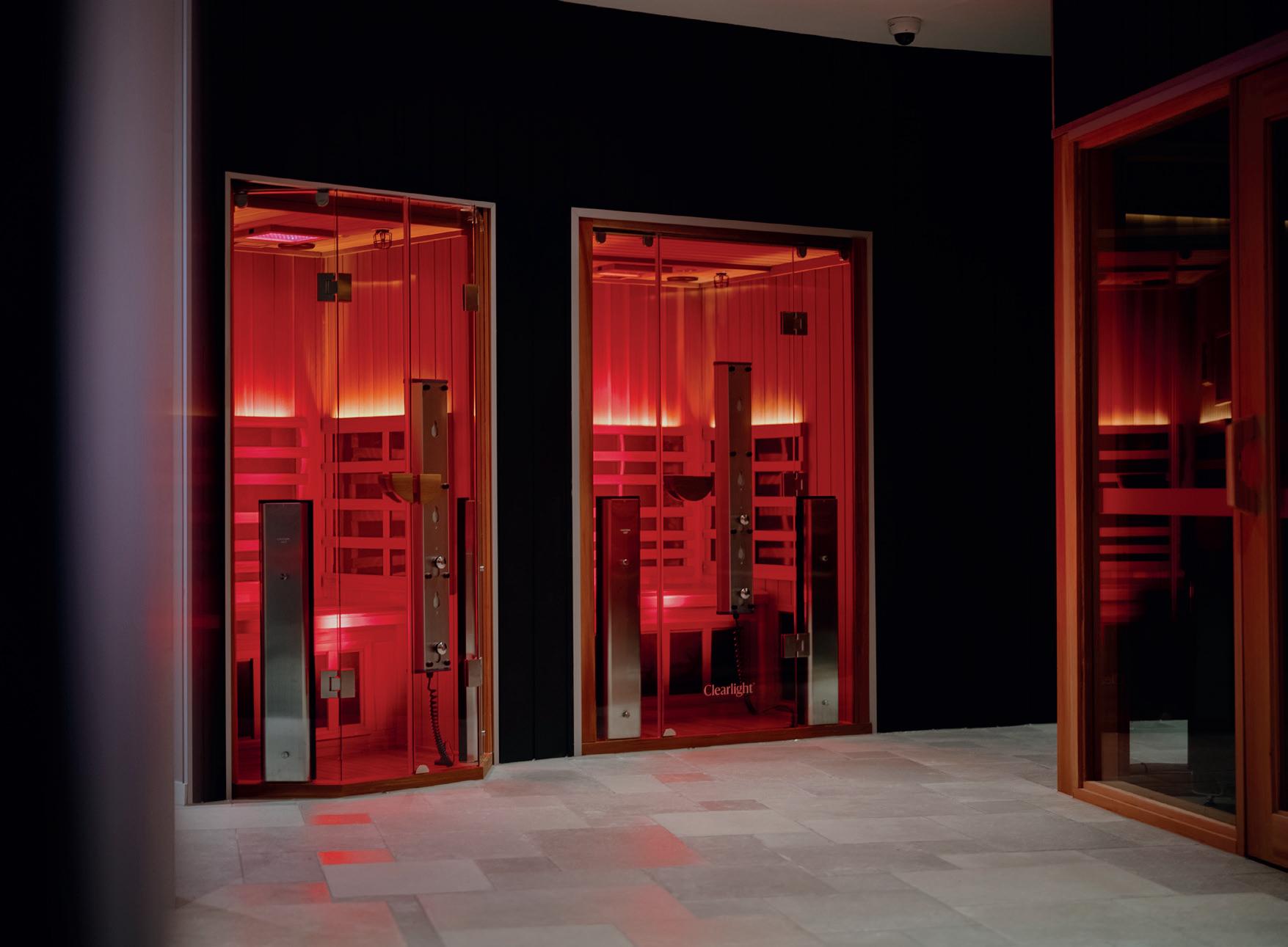
We recently reached the milestone of 50 Reform Pilates studios and it’s fast becoming a key growth engine for us: to date, over 277,000 Reform Pilates classes led by 650+ expert instructors have generated more than 3.6 million member visits. In that time, we’ve created more than 1,400 different exercises and produced 258 unique workouts to ensure a progressive, premium experience for our members.
We launched our inaugural Revive recovery zone at Fitness First’s new flagship in Richmond, Melbourne, last year. This is the second signature element of our premium value model: an immersive recovery space featuring infrared and traditional saunas, cold therapy rooms, red light therapy, compression boots, massage beds and massage guns.
Richmond was also our first club in Australia to feature a purpose-built athletic conditioning zone – a further component of our premium value model. We’re now actively investing capital into developing these high-performance training zones across more clubs, elevating the member experience even further through the addition of high-intensity boutique concept Les Mills Ceremony. Ceremony isn’t unique to us, of course, but our signature lies in the premium environment we’ve created around it.
The impact of all of this on our business? FLG has seen a 50 per cent rise in members aged 15–26 years, making Gen Z our fastest-growing cohort. This age group is also spending 65 per cent more per week on health and fitness than previously. They’re jumping at the opportunity to get a lot more for a little more.
We will, therefore, continue to roll out these premium concepts wherever we can across our Fitness First and Goodlife estates, with an A$25m
FLG’s new recovery zone concept, Revive, is an immersive space
investment already underway across 14 Fitness First clubs in New South Wales. This will further enhance the brand’s premium value proposition in that state.
Tell us more about FLG’s restructure. Our new strategy – democratising access to a premium product – is a key part of our restructure, but it isn’t the full story.
Since COVID, FLG has also undergone a quiet but purposeful internal restructure, not just to recover, but also to reposition for future growth. Ours is now a leaner, more aligned organisation, one that’s better equipped to respond to shifting consumer behaviours and health trends. It’s these two factors together that have shaped FLG 2.0.
As part of the restructure, we looked at where we sat with regard to franchising. FLG is predominantly a corporately-owned business, but we previously owned the Jetts and Hypoxi franchise businesses in Australia. We recognised that this was an inhibitor to our growth: it prevented us from infilling regions with our wholly-owned brands and products. We therefore divested both businesses and exited franchising in 2022, narrowing our focus to enable greater investment in our high-return businesses.
We retained the Jetts brand, clubs and assets in Thailand and New Zealand, where they had always been corporately owned by FLG.
We also moved away from our third-party digital content strategy, selling the Centr business. We built it during a time when online content was urgently required – indeed, when the potential was for this to be the only way we would all continue to exist. However, the world has pivoted back to
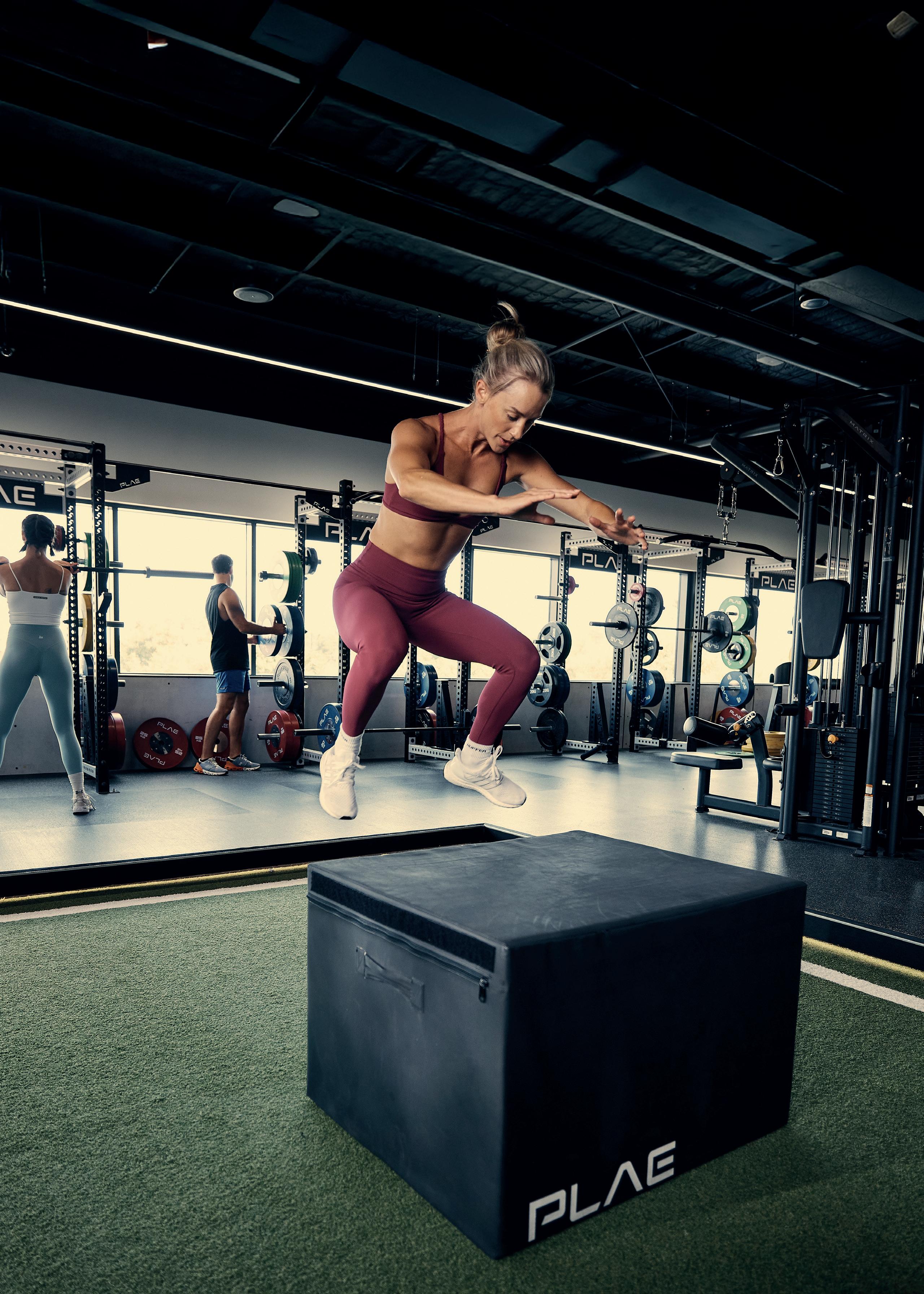
Our transformation may have been quiet, but its impact has been far-reaching
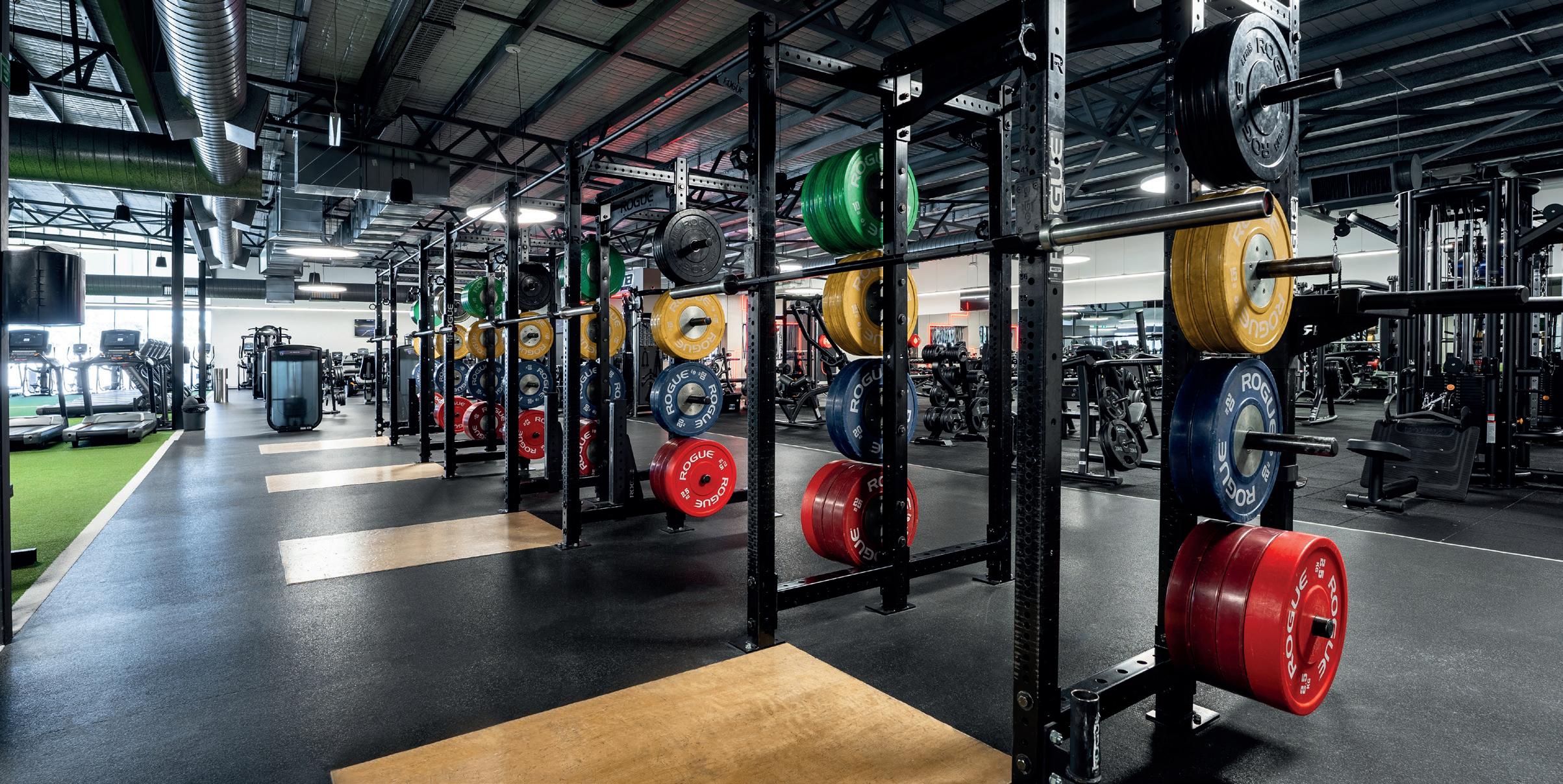
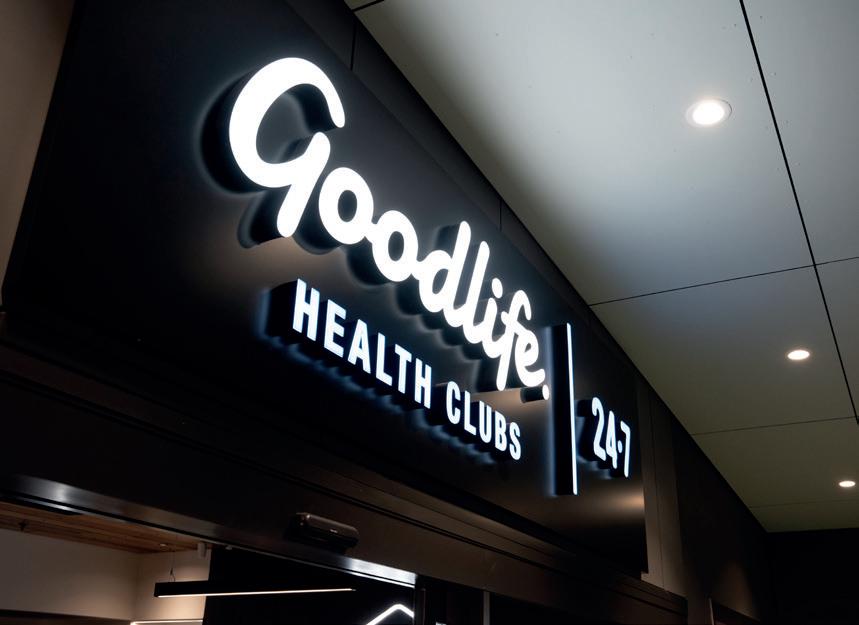

There are 95+ Goodlife locations, with digital access now being rolled out to the estate
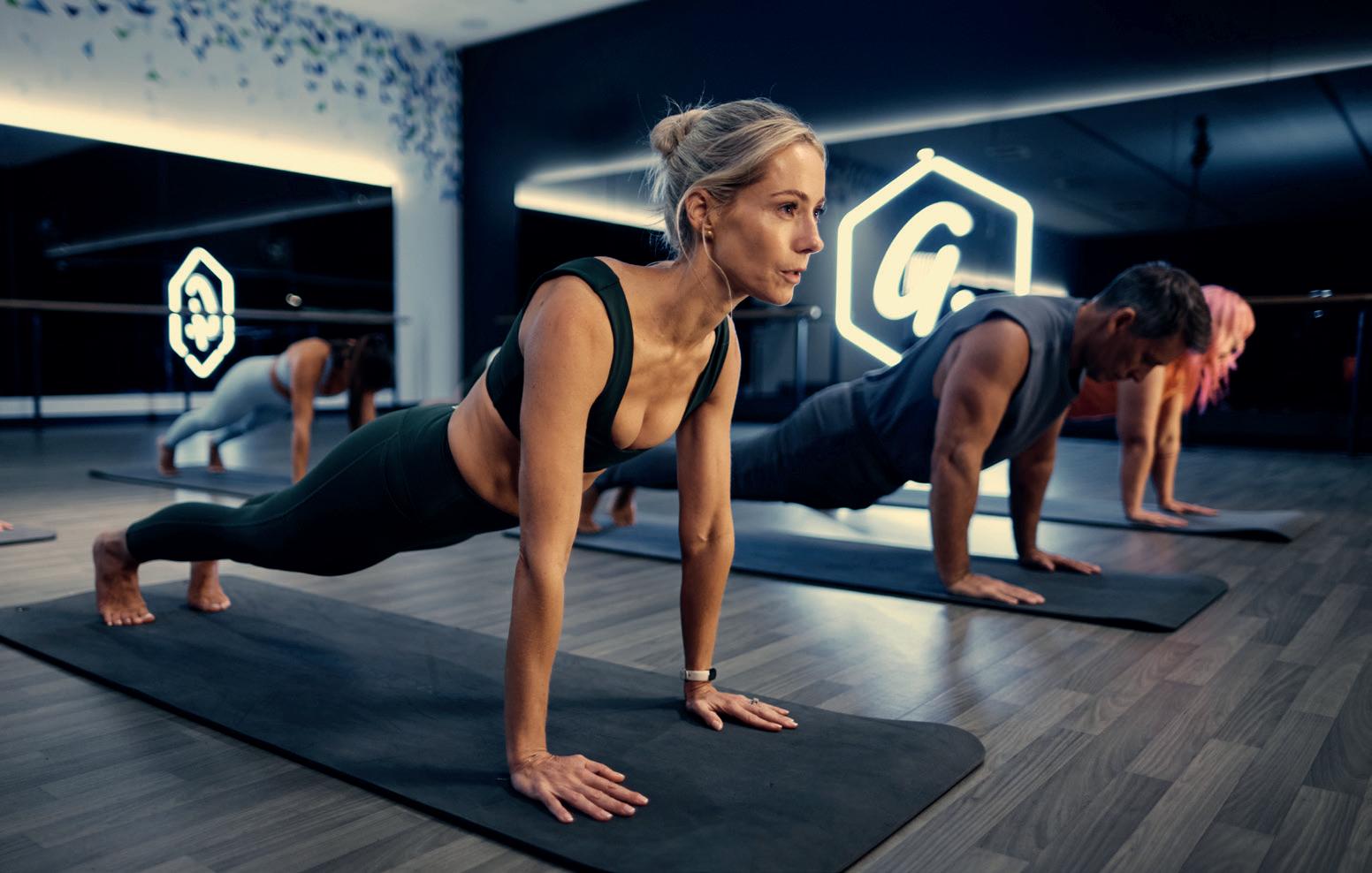
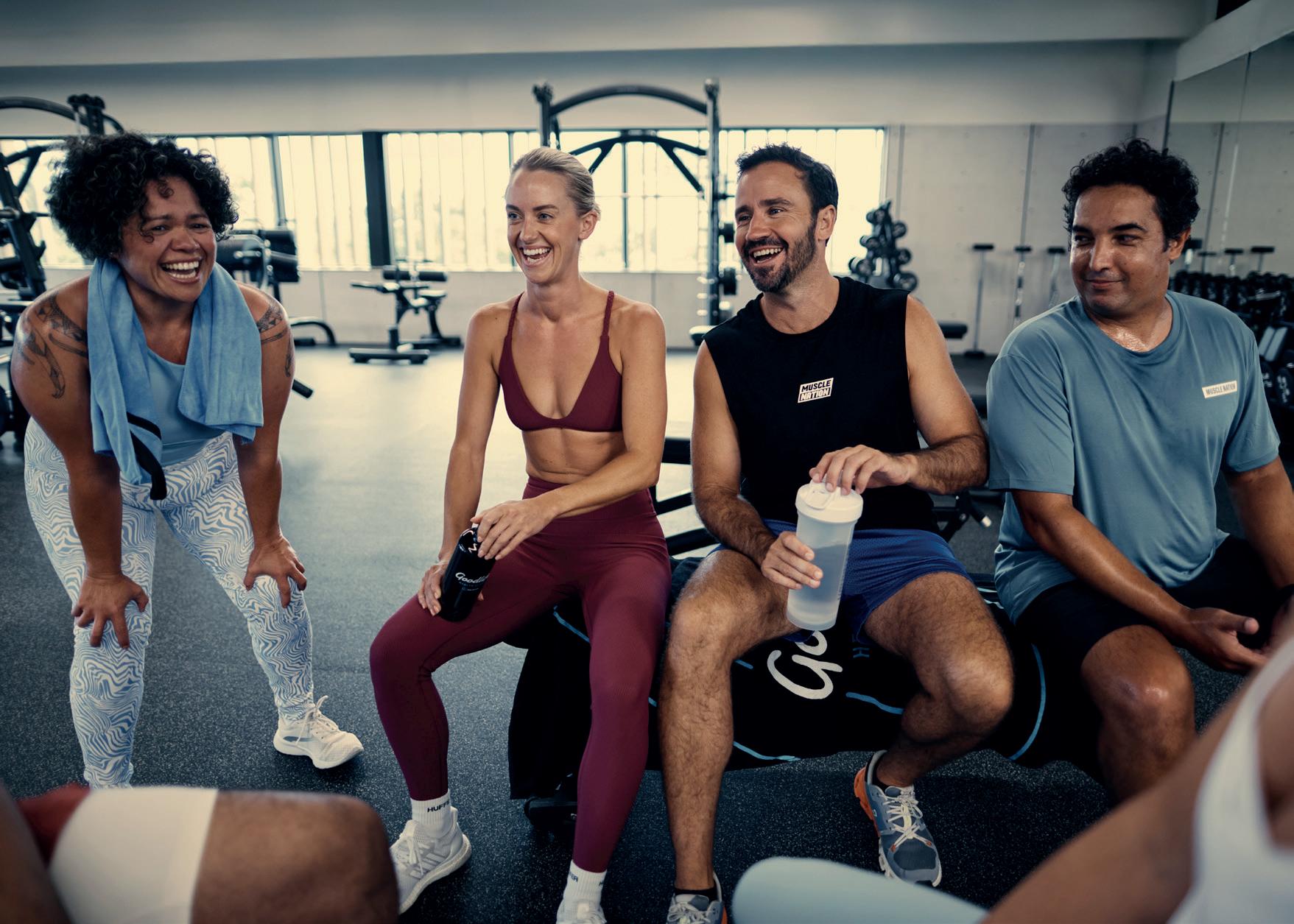
physical locations at a rate we’ve never seen before: in Australia, 7,500 locations now serve 27 million people, up about 3,000 outlets from three years ago. People are deeply valuing the in-club experience. This has allowed us to refocus on the core structure of our company and channel our investment in support of our premium value strategy.
What other changes have you made?
We’ve taken a very disciplined approach to deploying capital in high-return areas, with our top 20 investments – a ranking we share with our regional CEOs to inspire growth – generating returns of between 50 and 300 per cent. These investments span premium inclusions through to new builds across our different geographies, with the best performing delivering a return within months. Meanwhile, behind the scenes, we’ve moved away from multiple brand-siloed support structures to consolidate under a single management structure. This has driven major efficiencies –not only from a support perspective but also in terms of marketing, operations, facilities, maintenance – and unlocked a lot of opportunity. We also looked with a critical eye at our back office and front-of-house systems and acknowledged that they weren’t best in class. We have now migrated to just two SaaS platforms: Workday and Salesforce. Workday alone removes 12 separate systems from our business and replaces it with one. These world-leading solutions will help us execute our plan, including unlocking significant AI
technology that will dramatically change the way we do business – not by replacing people, but by bringing new value to our teams and our members.
So while FLG has continued to deliver double-digit like-for-like growth, putting us considerably ahead of pre-COVID numbers, the business now looks very different.
Our transformation may have been quiet, but its impact has been foundational and far-reaching, enabling greater agility and strategic focus.
We’re now primed to capture opportunities in the expanding fitness, health and wellness market – which is expected to be worth A$1.4bn in Australia alone over the next five years – and to grow and reshape what health and fitness looks like in the APAC region, leading the shift from reactive health to proactive wellbeing.
What’s the latest from FLG’s various brands? We now have 45+ Fitness First clubs and 95+ Goodlife locations. Fitness First in Queensland was rebranded to Goodlife in 2022; there were only a few Fitness First clubs in the state and Goodlife enjoyed the stronger brand recognition. Rebranding also gave members access to a larger network of clubs to enjoy.
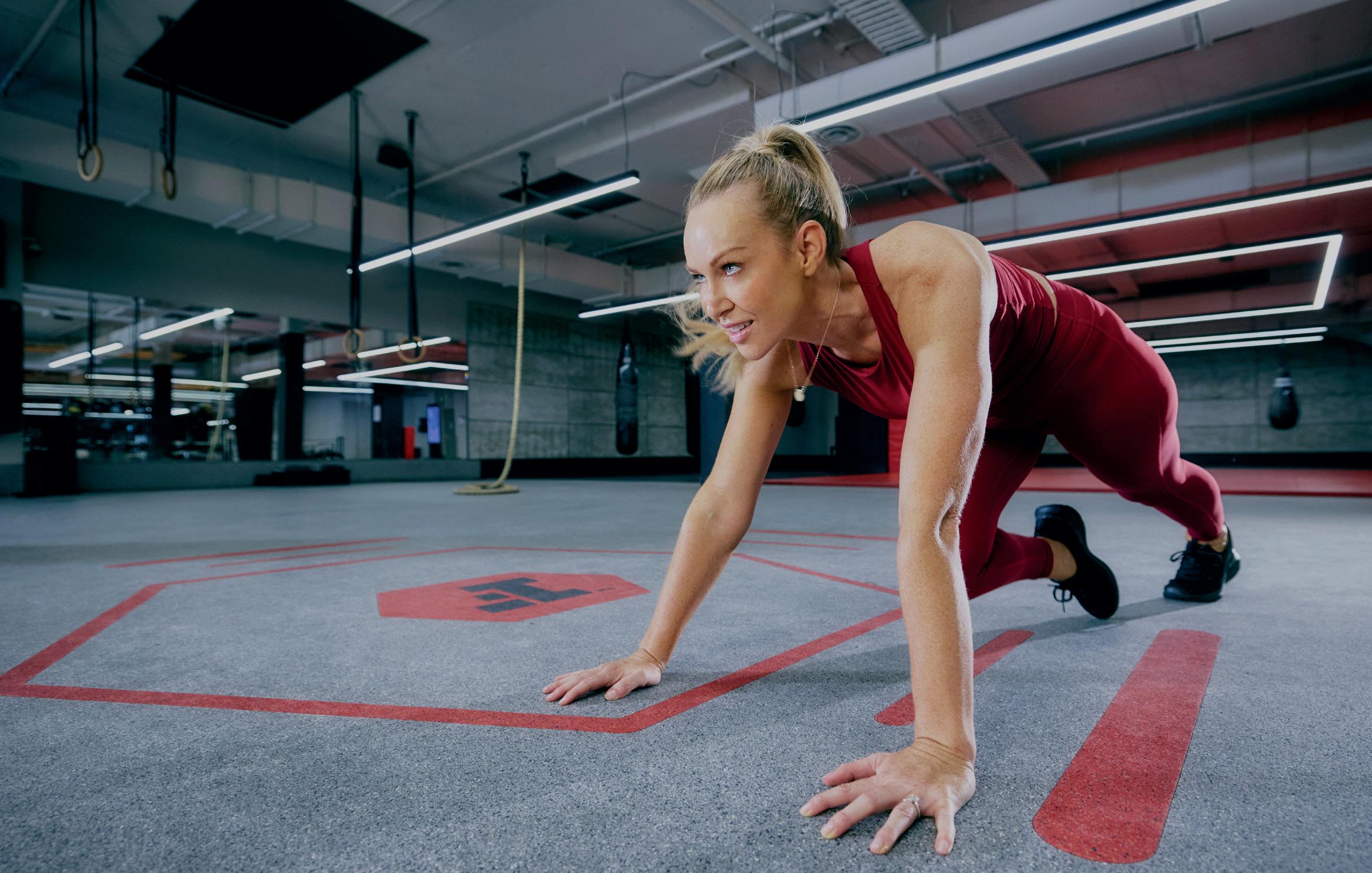


We’re currently rolling out 24/7 digital access across our estate, which we aim to complete by the end of this year. We can then consider options for reciprocal membership tiers that allow access to both Goodlife and Fitness First clubs. It could work well, as the signature products are the same and the main differentiator is geographic: Fitness First is predominantly in New South Wales (NSW)gen sers , with some in ACT [Australian Capital Territory] and Victoria.
As mentioned previously, we’re investing A$25m in Fitness First NSW. Each upgrade is tailored to the location, but the roll-out of our signature products lies at the heart of this project. Our premium value proposition will be further enhanced by the launch of a fantastic new Fitness First flagship in the elite Sydney suburb of Double Bay. Expected to open in the first quarter of 2026, this signature club will showcase the best of what we’ve learned.
Zap Fitness is our third brand in Australia, established in Tasmania in 2009 and now operating 75+ locations
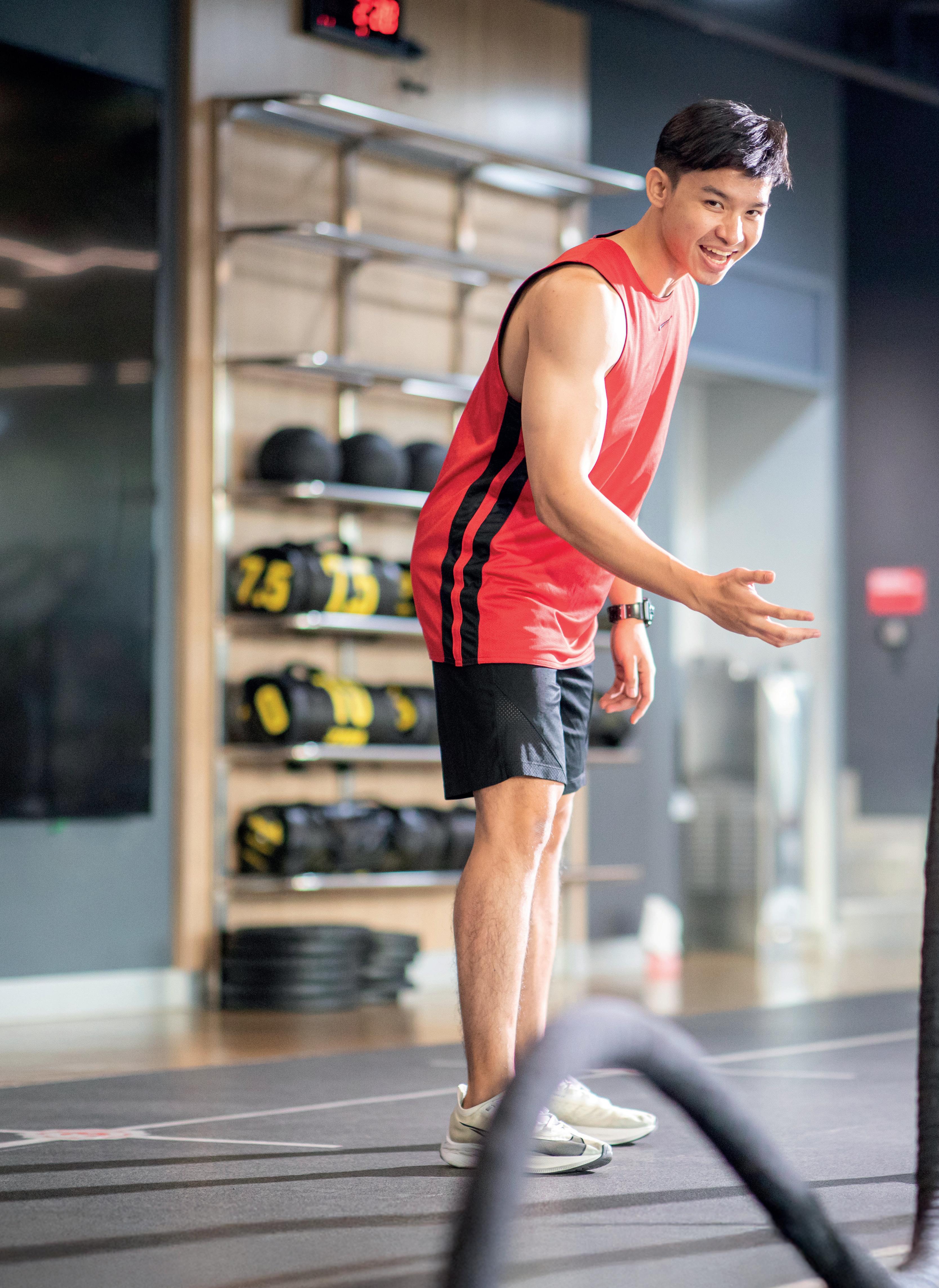
We’ve built the brand with a premium value mindset, allencompassing in terms of group exercise and functional training and with an incredibly strong personal training business

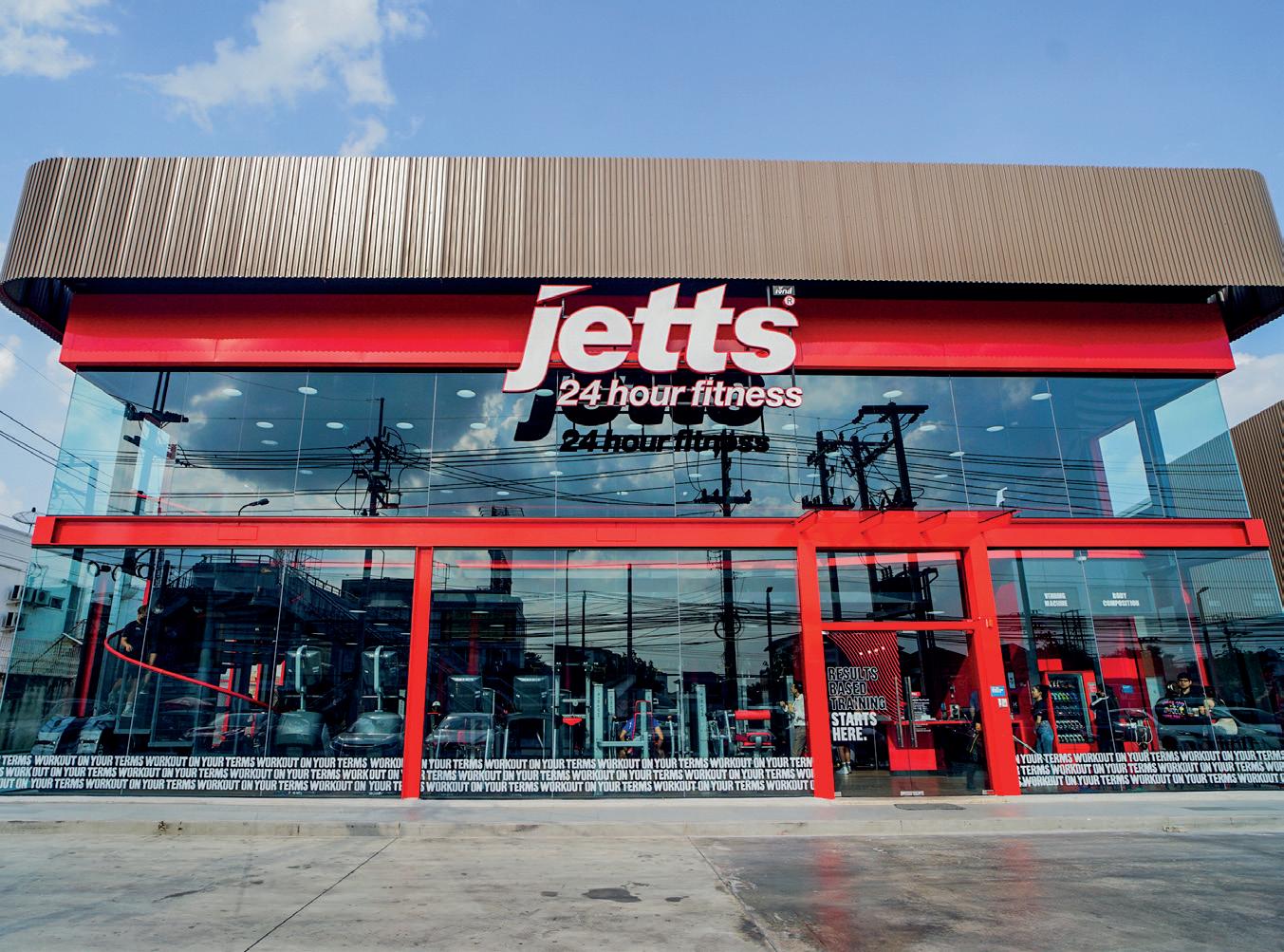
Zap Fitness, our third brand in Australia, holds a lot of value for consumers. Established in Tasmania in 2009, it now operates in 75+ locations. The estate currently includes one Zap Premium club featuring steam, sauna and lounge facilities, which has proven popular. We’re exploring opportunities to expand this premium experience across Tasmania.
In New Zealand, we’ve been investing in our Jetts clubs, expanding sites where there was adjacent real estate or growing market share by relocating facilities. In spite of a slight recession, we’ve seen a positive response to our investments. The business is doing well.
Meanwhile, Jetts Thailand powers ahead, with 54 clubs and scope for plenty more. We’ve built the brand with a premium value mindset, all-encompassing in terms of group exercise and functional training and with an incredibly strong personal training business. It’s delivering a very strong performance as it continues to expand outside of Bangkok, which unlocks other regions across the country.
We’re already the largest operator in Thailand by number of clubs and we look forward to rolling out another 20–30 locations over the next few years. We’re not putting a cap on it. There’s high demand, so we’ll continue to supply the capital our Thailand team needs to satisfy some of that, building wherever we find appropriate sites.
What comes next for FLG?
We have aspirations for further growth in the APAC region. We’ve already proven in Thailand that we can deliver a premium value product to the masses and we believe this strategy will now unlock other markets in Southeast Asia.
That might be through the acquisition of emerging brands looking for a capital partner, or it might be through greenfield development if we identify a void
We have a clear purpose and focus and we’ve set an intention to take that into new markets
in the market for our premium value offer. We’re already actively looking at opportunities to solidify our position as the preeminent fitness company in APAC.
How do you see the sector performing?
It’s in pretty good shape, isn’t it, considering that at one stage people thought no-one would ever go back into a facility. The growth since then has been extraordinary: our new builds and capital investments since COVID are returning better than at any time before. I do think we’re executing pretty well and hopefully we’re also getting the products, the services right and the mix right. But the reality is, I’ve never seen demand like it.
The sector has responded with a broader, more differentiated spectrum of offering than ever before. There’s HVLP, with its entry-level price point, There’s what we do: the premium value segment that enables people to broaden their experiences. There are the
boutiques, which deliver a very targeted experience at a premium price point. And then there’s luxury: there are clubs in Australia that charge A$300–400 a week.
As operators, we’re all reacting to consumer preference and finding our lane. And the benefit to the consumer is unprecedented choice. I believe this is a golden era from a consumer perspective – and what’s good for consumers is ultimately good for us.
What continues to motivate you?
I’m excited by our plan and everything we’ve been doing lately. We’ve done the work, we’ve understood where we fit in, we’ve identified the consumers we want to help and – through our premium value strategy – how we intend to do that. We have a clear purpose and focus and we’ve set an intention to take that into new markets.
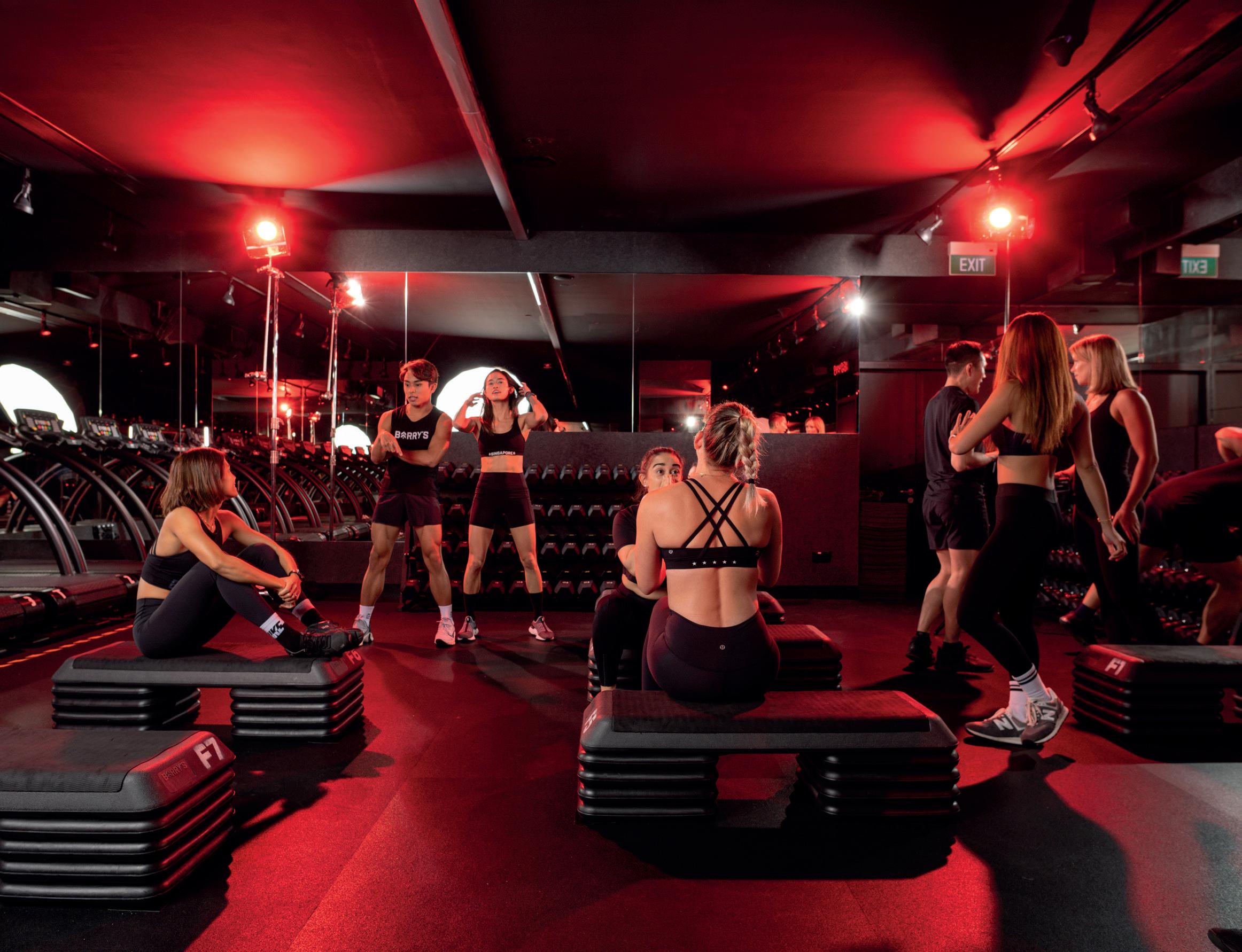
This is FLG 2.0 and it’s inspired Greg 4.0. I don’t think I’ve been this invigorated for a long time. l



At a time when the industry is shifting from fitness to holistic health, EGYM stands out as the ecosystem enabler

EGYM presents its latest groundbreaking innovations, including a new Smart Strength machine, advanced onboarding and EGYM Genius

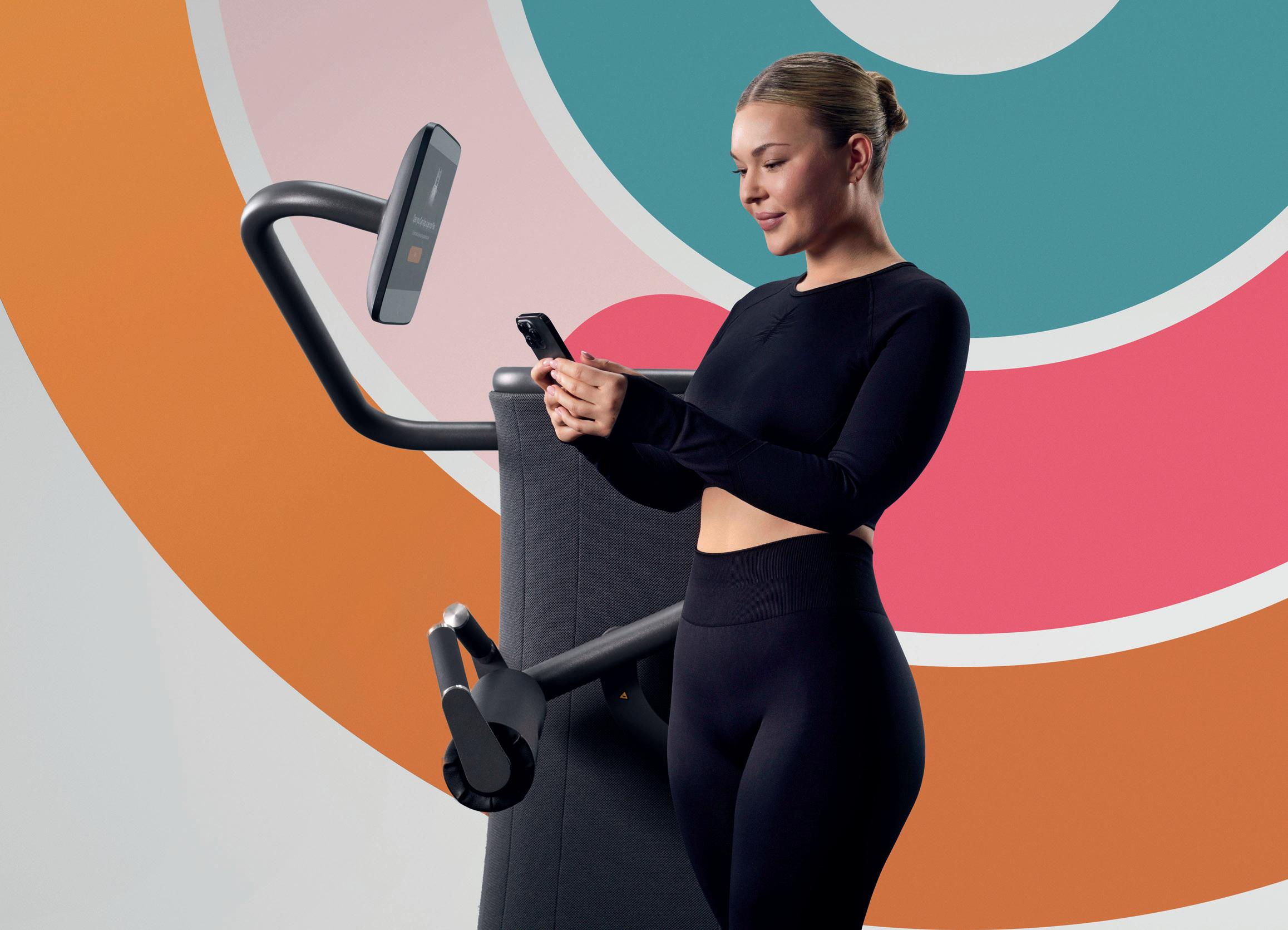

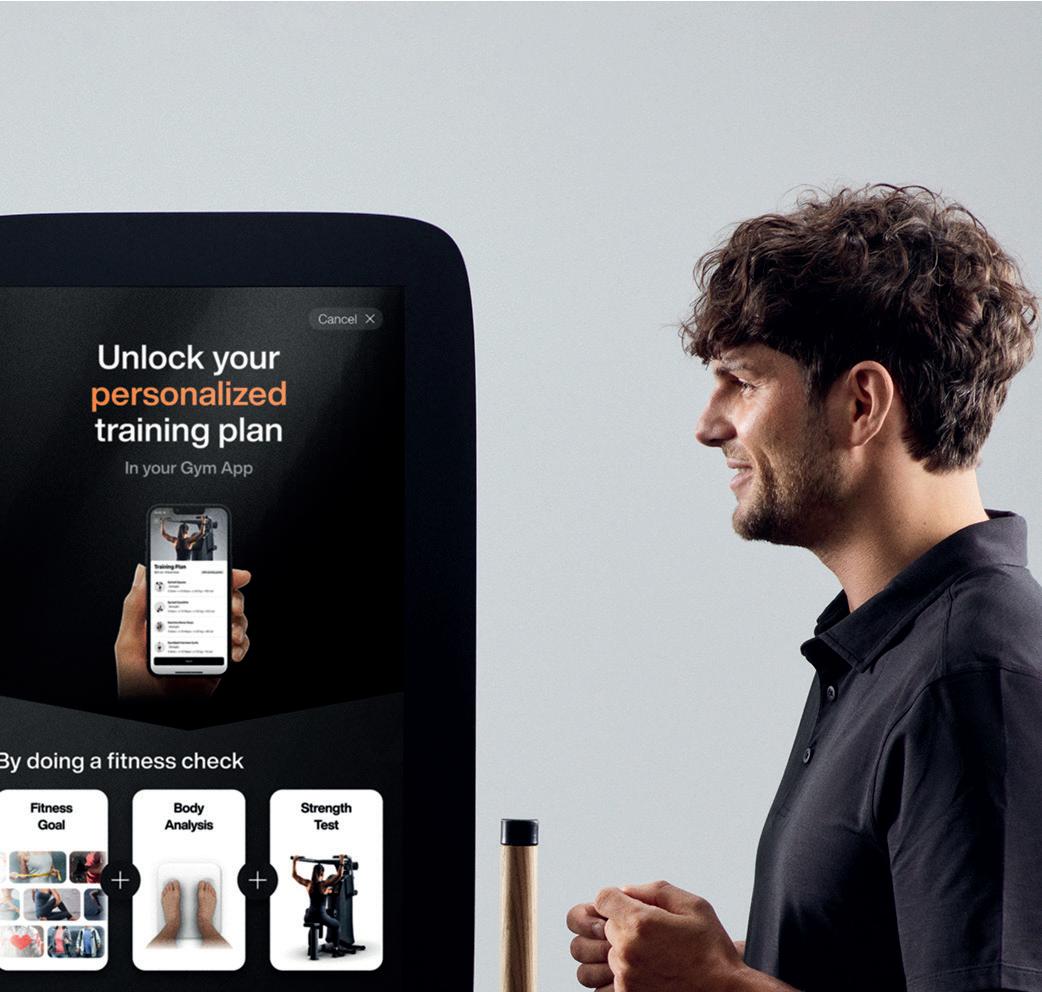
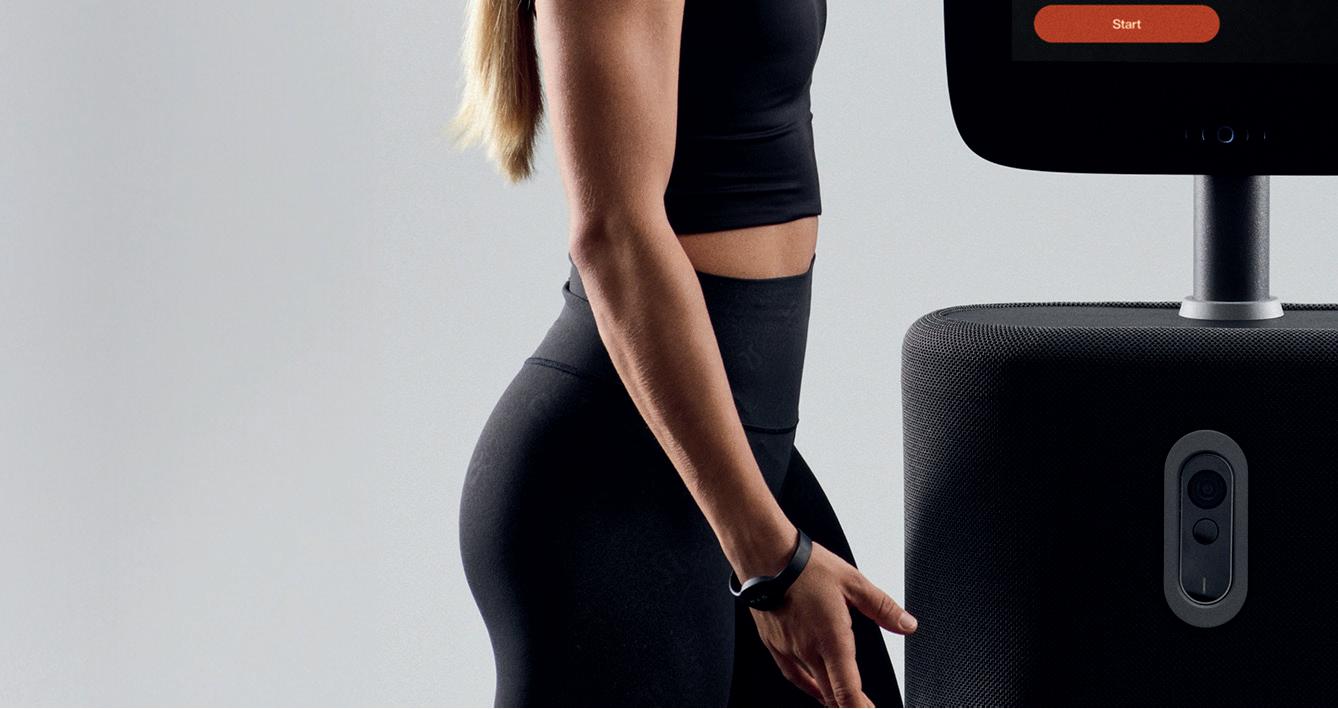
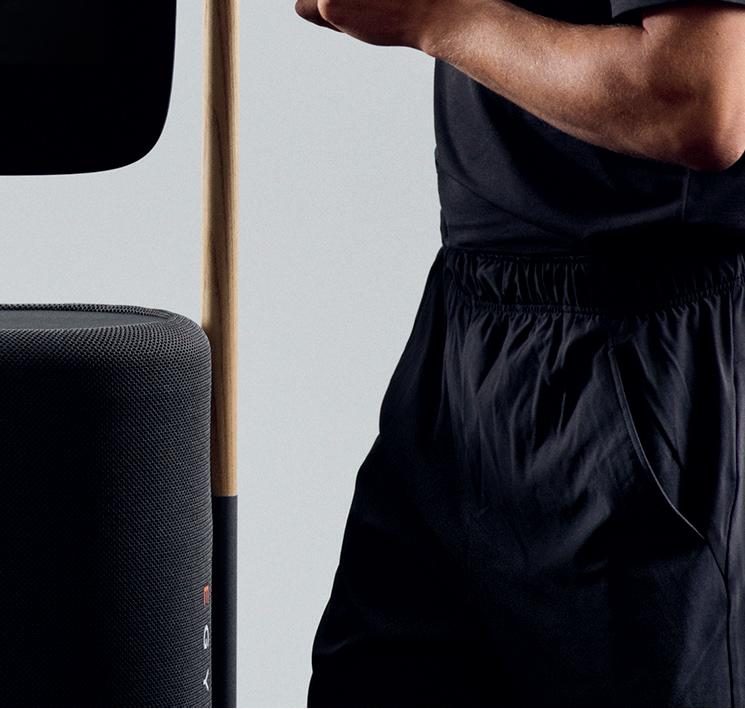
As the global leader in connected fitness technology and corporate wellness, EGYM enters this year’s HCM Summit with a clear vision: transforming healthcare from repair to prevention. With its open ecosystem approach, EGYM is redefining how operators and members experience fitness, delivering personalised, data-driven solutions at scale while empowering operators to unlock measurable health outcomes and sustainable growth.
At the heart of EGYM’s ecosystem is EGYM Genius, an advanced, AI-powered tool that delivers hyper-personalised and adaptable training plans to members. Launched in 2024 and now entering its next phase of development, Genius continuously refines and personalises training plans based on real-time workout data. Every session logged makes the system smarter. The result is optimised, hyper-personalised workouts that evolve with the member, driving motivation and progress. Genius also integrates seamlessly with leading brands of wearables, cardio and strength equipment, ensuring operators can deliver a unified, future-proofed experience. For operators, Genius is not just about smarter workouts; it’s about scalable health outcomes, translating data into tangible business outcomes and success.

EGYM Genius isn’t just about smarter workouts, it’s also about scalable health outcomes, translating data into tangible business outcomes and success
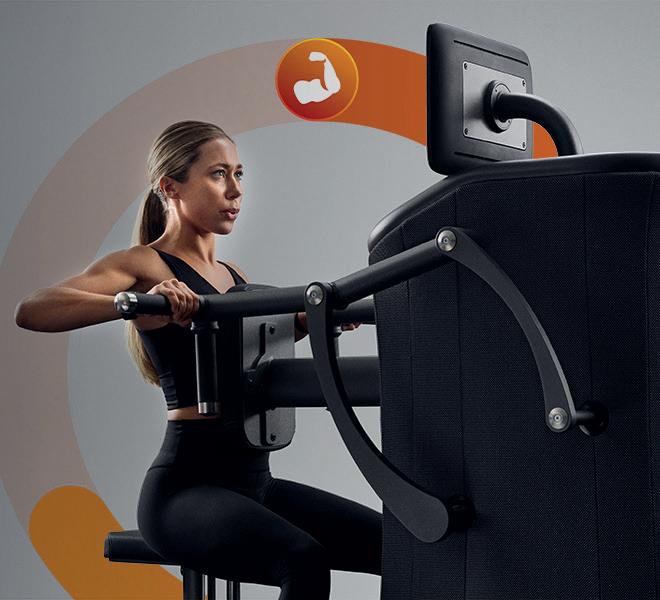
At a time when the industry is shifting from fitness to holistic health, EGYM stands out as the ecosystem enabler, championing open integration and collaboration with more than 200 partners worldwide. The result is a platform that connects the entire gym, seamlessly linking testing, training and member management into a unified experience through AI-powered Genius software. For operators, this means a smarter, more efficient way to manage clubs, while for members, it delivers tailored journeys that enhance both physical and mental wellbeing.
As a Platinum Partner of the HCM Summit, EGYM is committed to shaping the future of fitness and wellness through open collaboration, cuttingedge technology and scalable solutions. From the revolutionary Smart Strength Squat to AI-powered Genius, EGYM is empowering operators to deliver consistent, personalised experiences that improve lives – while driving growth and efficiency. Tailored journeys enhance both physical and mental wellbeing
For fitness operators seeking a trusted enterprise partner, EGYM offers not just technology, but also a vision: a connected ecosystem where healthcare shifts from repair to prevention, and where members and businesses alike can reach their full potential. More: www.EGYM.com
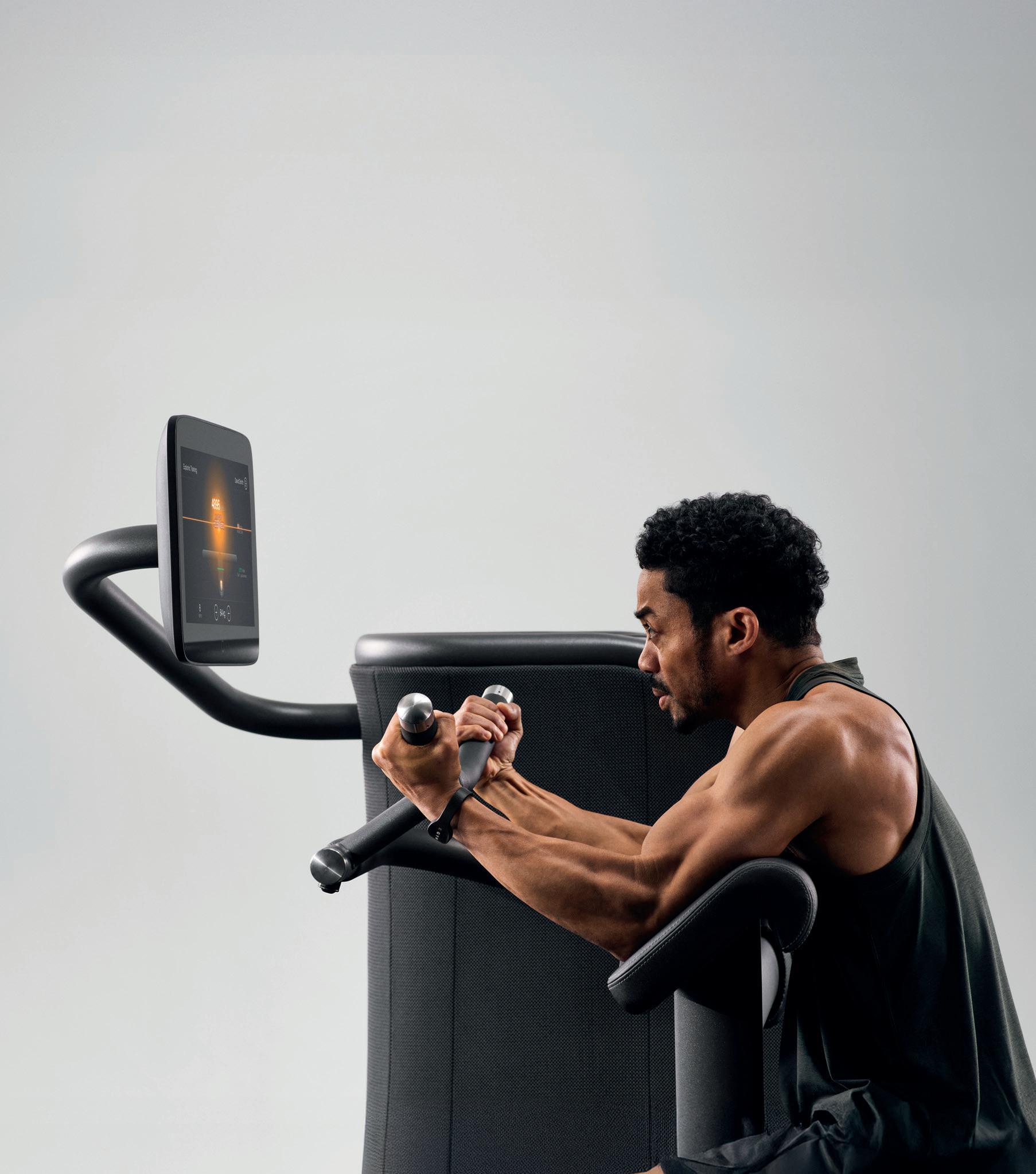
As a
Partner of the HCM Summit, EGYM is committed to shaping the future of fitness and wellness through open collaboration, cutting-edge technology and scalable solutions



Among the innovations being showcased at the HCM Summit is the Smart Strength Squat, the newest addition to EGYM’s Smart Strength series. Long recognised as one of the most powerful exercises for building strength, stability and mobility, the squat can also be one of the most technically demanding.
The Smart Strength Squat makes this vital movement more accessible, safer and fully personalised. By combining digital resistance, guided

motion and automated adjustments, it ensures that users of all levels can train effectively and with confidence. Advanced training modes such as explonic, negative and isokinetic resistance – made possible only with electronic strength technology – enable a training experience that’s as engaging as it is effective. This is strength training reimagined: intelligent, adaptive and designed to deliver consistent results for members while assuring operators of safety and efficiency at scale.
Complementing the Smart Strength Squat is the launch of the Squat Flexibility Test on the EGYM Fitness Hub. Already established as the ultimate onboarding solution offering intuitive body analyses, flexibility tests and progress visualisation, the Fitness Hub now takes personalisation one step further. In just 25 seconds, the Squat Flexibility Test uses advanced 3D analysis to assess mobility, strength and balance. The result is a BioAge Flexibility Score, which correlates mobility with biological age and provides a clear benchmark for progress.
Seamlessly integrated with EGYM Genius, these insights feed directly into AI-powered training plans, ensuring workouts are precisely tailored to each individual. For members, this means better results faster. For operators, it means improved engagement, retention, and the ability to deliver measurable health outcomes at population scale. ●
This is strength training reimagined: intelligent, adaptive, and designed to deliver consistent results
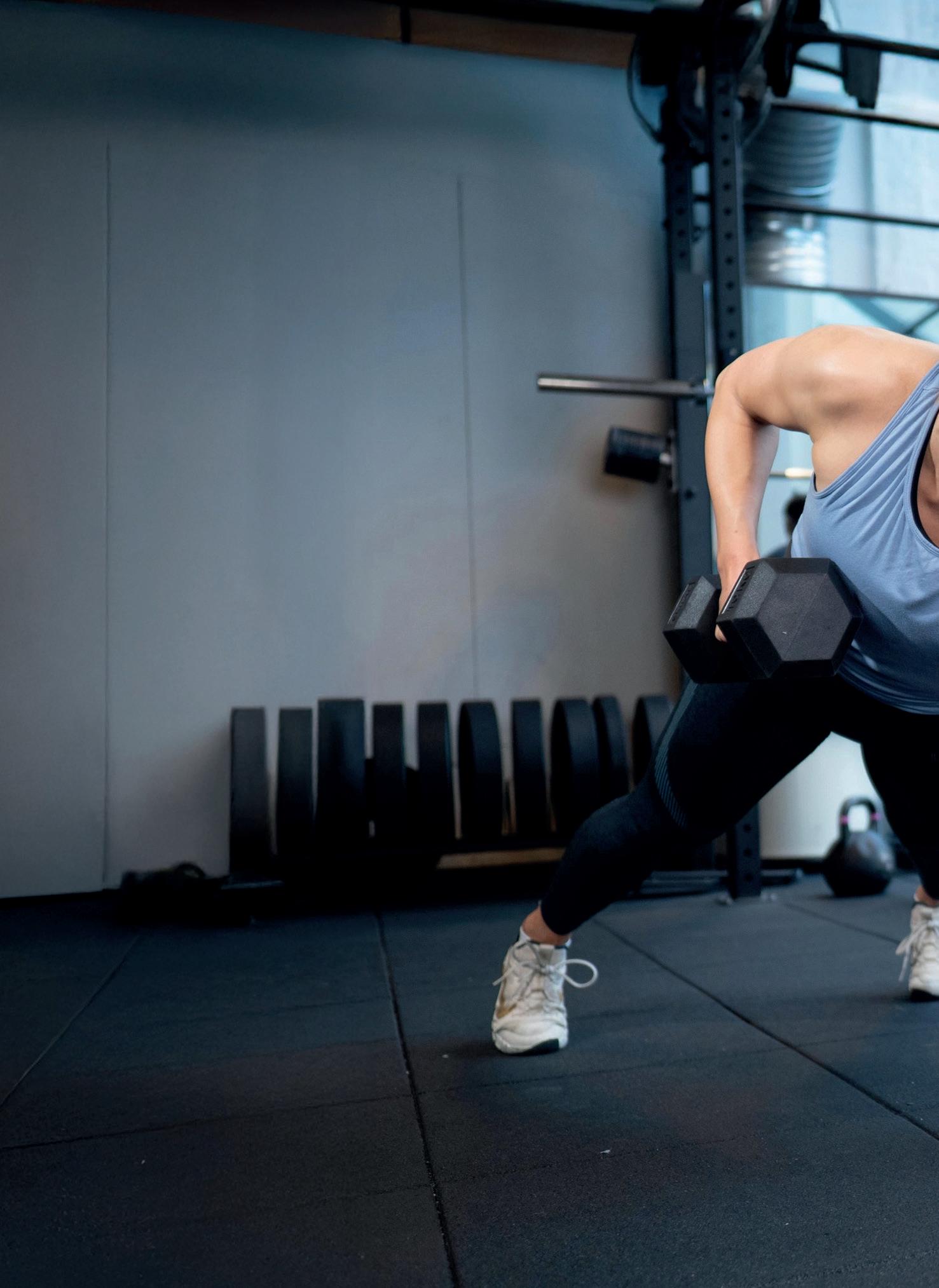
In an era of skills shortages, the challenge of attracting and retaining talent is greater than ever before, as Vicky Kiernander reports

Recent CIMSPA research in the UK shows the most common skills lacking in candidates in the last 12 months, such as interpersonal skills, communication, customer service and leadership, are precisely the ones operators say they need most to futureproof their businesses and these findings seem to resonate globally.
It’s no surprise then, that some operators cite the qualifications and skillsets of applicants as the biggest challenge when it comes to recruiting. This is followed by salary expectations and internal budget restraints.
When it comes to retaining talent, operators say career progression, salary and working patterns/flexibility are the most significant barriers when it comes to holding onto employees.
So, what steps are operators taking to attract and retain the talent they need? How are they upskilling employees and what are they doing to enable staff to feel happy, valued and motivated to stay? We asked the experts…
The SATS Academy has been running for 30 years and today offers more than 110 courses and programmes

Gym-to-management pathways can create long term careers
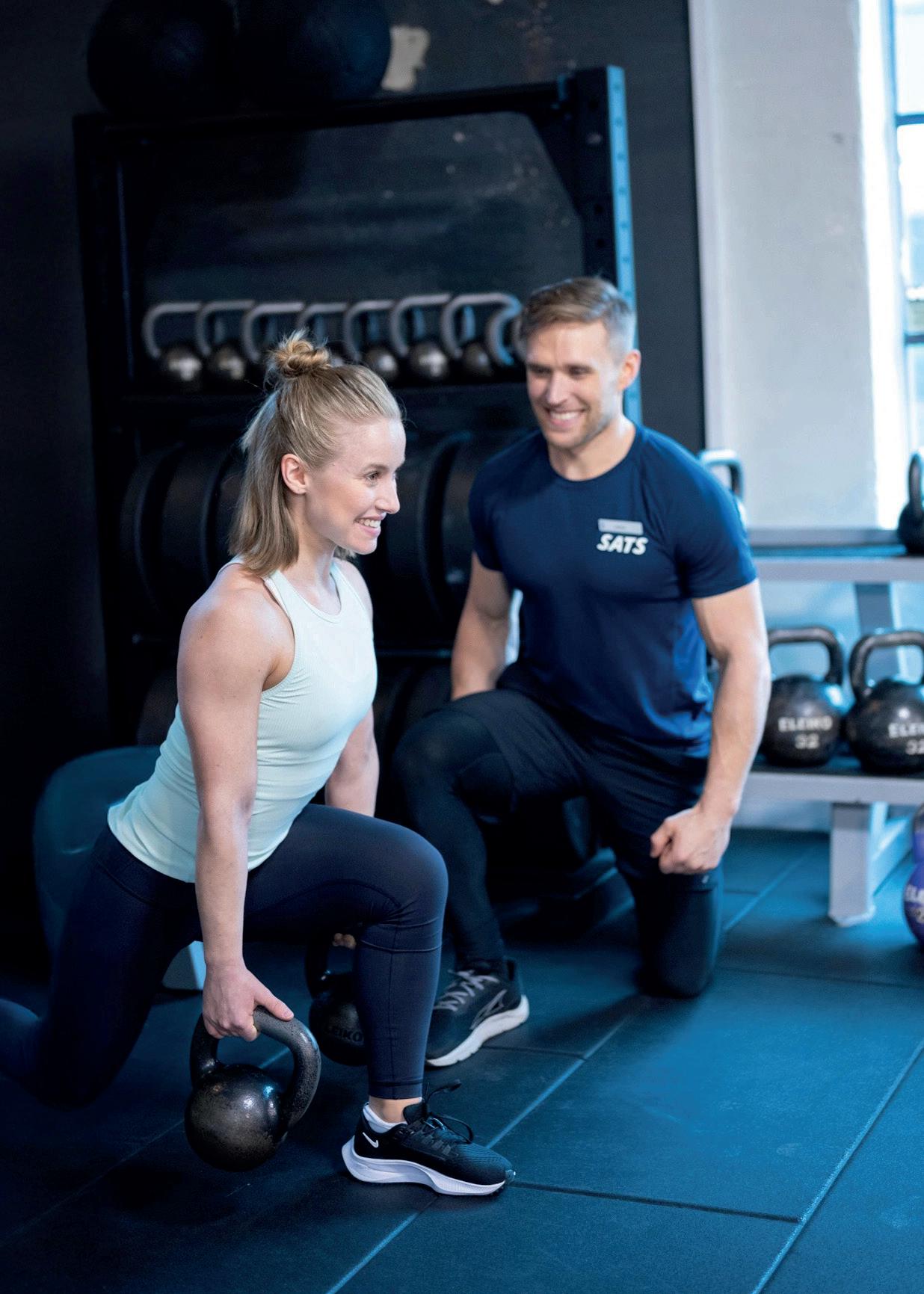

Improving public health is one of the greatest challenges of our time. The industry has a vital role to play, but only if we can attract the best hearts and minds
Torodd Gøystdal Chief people and operation officer SATS
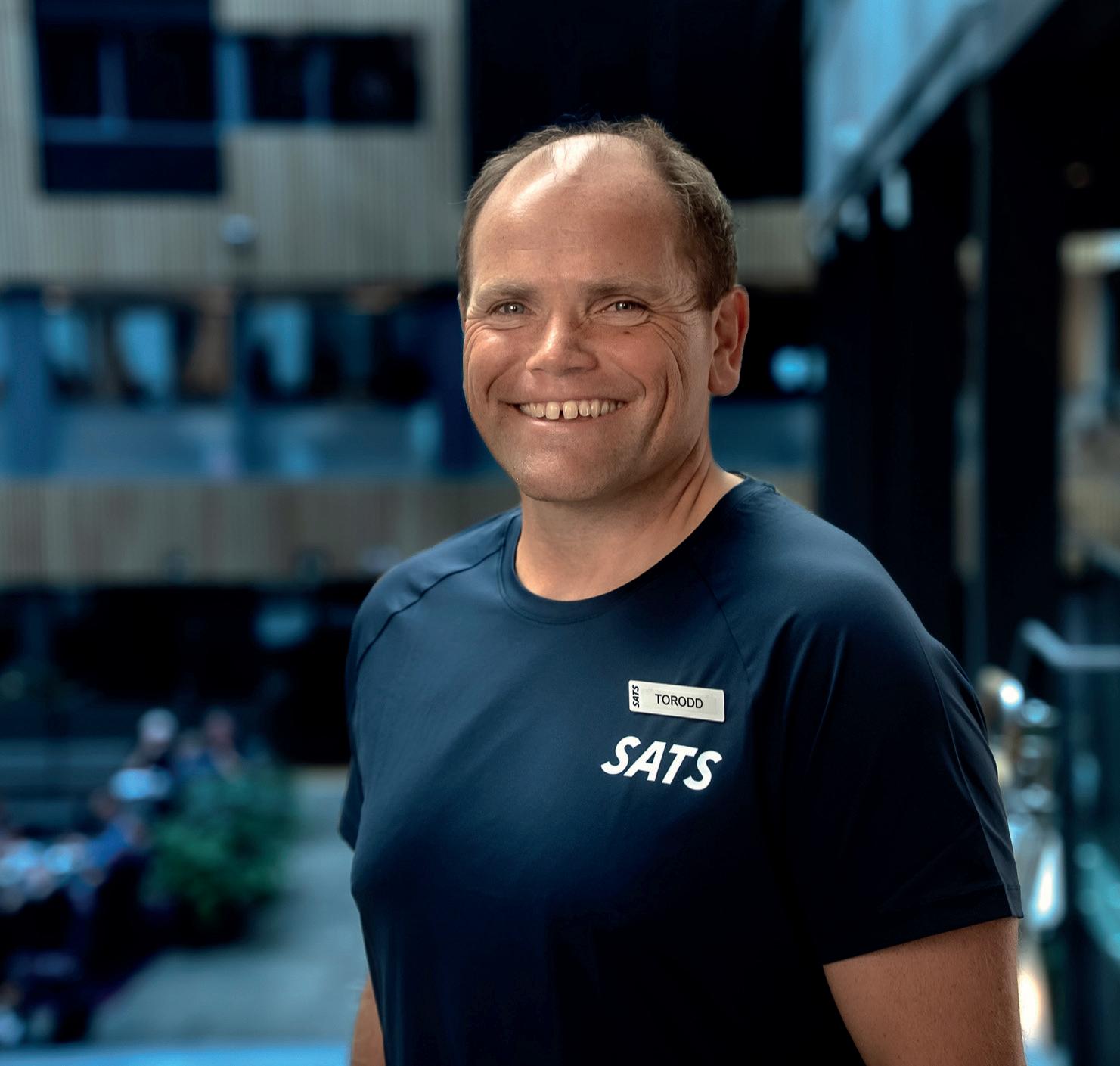
As the largest fi tness player in the Nordics, our success is driven by our employees. Our team of 10,079 dedicated staff work every day to enable people to be healthier and happier. It’s our ambition to be the fitness industry’s preferred employer and we’ve created an environment where our employees can thrive and build sustainable careers. Most of our leaders have developed their careers within the business, which is testament to the opportunities we provide. We also collaborate with fitness education institutions, offer internships and provide placements to attract new talent. With a high volume of applicants for our roles, we select only those candidates with passion and ambition to grow with us.
We believe investing in employees is essential for delivering outstanding member experiences, ensuring high standards of quality and fostering a great workplace culture. The SATS Academy (formerly known as SATS School) has been running for 30 years and is something we’re truly proud of. It has expanded and professionalised over the years and today offers more than 110 courses and programmes, including one of the Nordic region’s most comprehensive training programmes for instructors. All of our courses are free for employees.
In addition to investing in training, we have established career pathways from instructor to management positions and encourage internal mobility across departments and countries. This is
what makes it possible to build a long-term career with SATS. We offer a wide range of careers both operationally in our clubs and in our service office, so whether someone is looking to work in finance, as a data engineer or a physiotherapist, we have opportunities. Of all the roles we offer, personal trainers remain the highest in demand and are one of the most sought-after roles across the Nordics.
In an industry that is often criticised for its poor pay and perks, we’re proud to offer our employees competitive salaries and pension contributions, as well as free membership at all our clubs across the Nordics.
But attracting and retaining talent goes beyond this. We work hard to build a positive workplace culture and a strong sense of community with substantial investment in regular team activities and employee programmes. For example, we invite all employees in all four countries to the SATS Festival, which is a fantastic event featuring fitness, inspiration, supplier fairs, professional development and social activities.
As we celebrate 30 years of success with record results, we recognise that – like fitness itself – people and workplace culture require constant development. Improving public health is one of the greatest challenges of our time. The fitness industry has a vital role to play, but only if we can attract the best hearts and minds; skilled professionals with a genuine passion for making a difference. With our ongoing growth and expansion, we’re always looking for new talent to join us on this mission.
It’s important for organisations to raise the profile of the great careers available in our industry; the PTs of today could be the leaders of the future
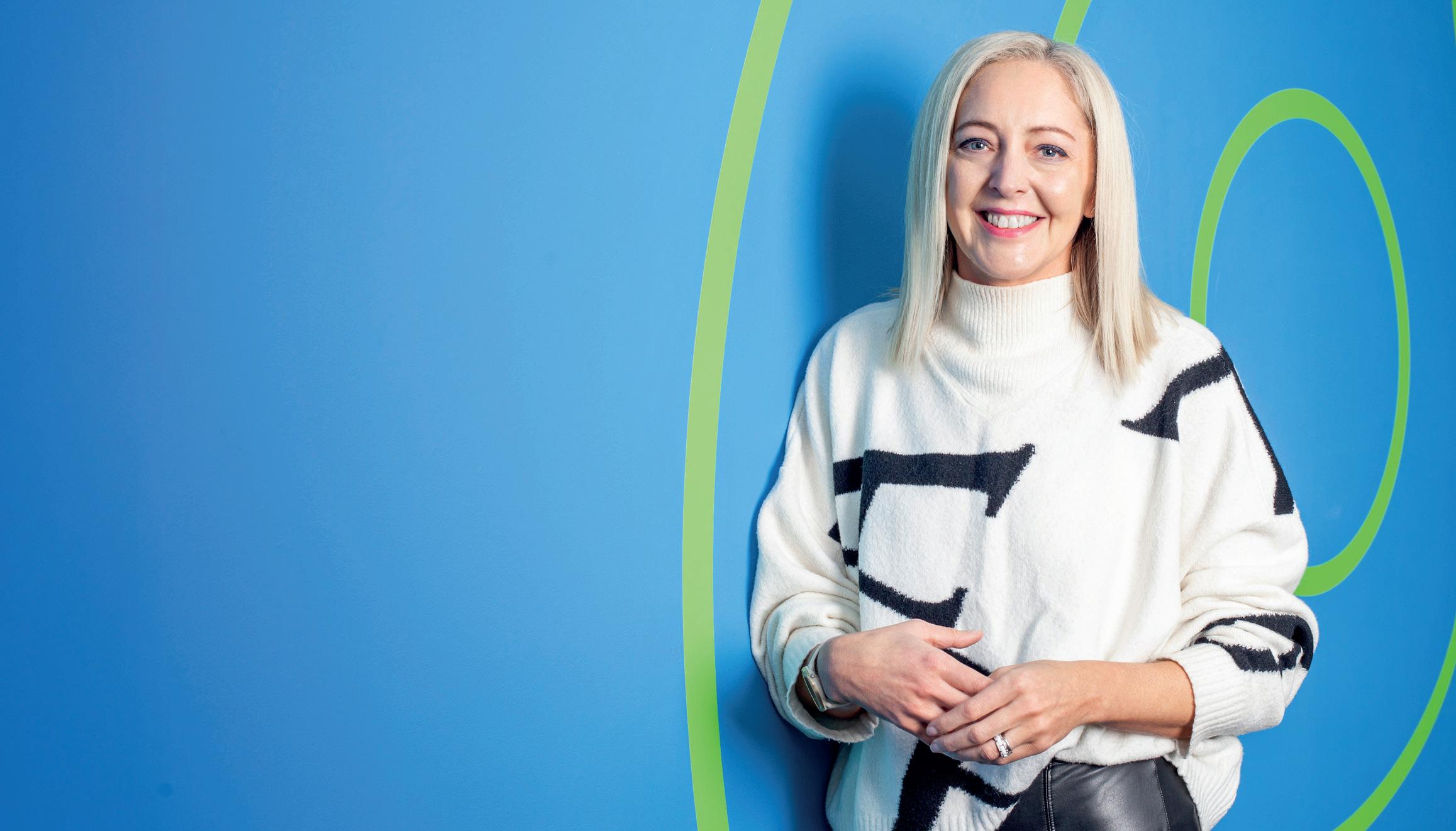
people officer
Our mission is to break down barriers to fitness with affordable, flexible, 24/7 gym memberships, and we apply this same approach to breaking down barriers to careers in fitness. We’ve launched two recruitment schemes in recent years to bring more people into the sector, as we expand nationwide.
The Gym Group Academy launched in 2024 to create more expert talent in the industry, offering flexible courses with CIMSPA endorsed training providers that can fit alongside family life or full-time work.
With self-paced learning, the programme can be completed in as little as eight weeks and has attracted a range of applicants, from those wanting to make their passion for fitness a career, to those wanting more flexibility from their work.
The Gym Group Academy’s PT Mentor scheme gives candidates access to one-on-one support from an experienced PT who can help with the practical aspects of the course at their local gym, giving them the opportunity to ask questions and setting them up for success.
We’re currently the only personal training course to adopt this approach and have received great feedback.
After course completion, we support people with employment opportunities and applying for vacancies within The Gym Group, so we’re not just helping people to qualify, we’re supporting people to kickstart a career.
The Gym Group Academy has been incredibly well-received, with nearly 4,000 enquiries and over 250 members already committed to
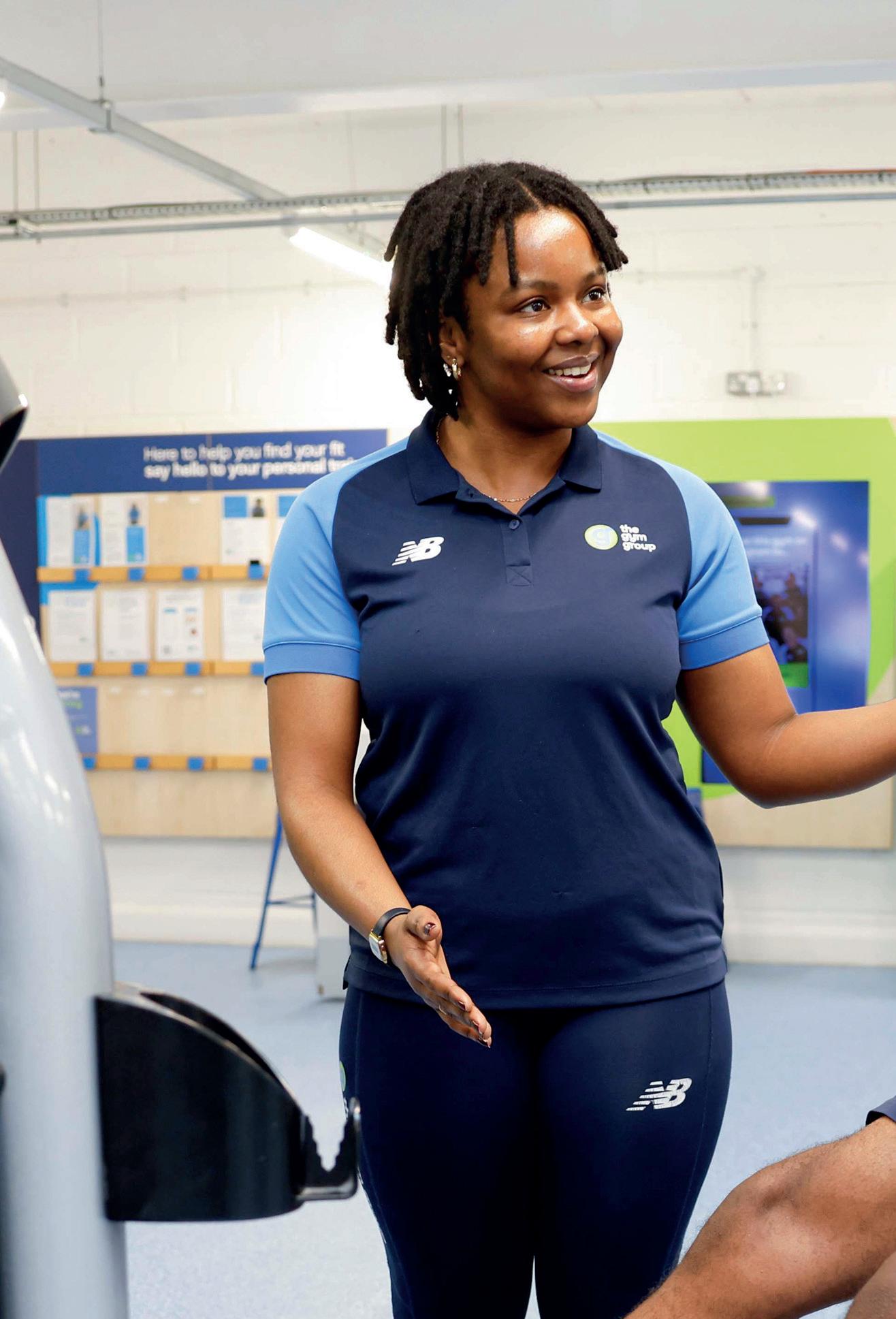
undertaking their Level 2 or Level 3 qualification. We’re aiming to support 500 people to become PT Level 3-qualified by 2027. To date, 45 people from the programme have been recruited as personal trainers to work in our gyms.
The second recruitment programme is Accelerate PT, which launched in May 2023, in partnership with the UK government’s Department for Work and Pensions.
Accelerate PT is a fully-funded initiative aimed at applicants who are unemployed or seeking a career change. We work with Job Centres around the UK offering a pathway to becoming a qualified Active IQ Level 3 Personal Trainer.
Recognised as one of the first schemes of its kind to unlock access to previously untapped talent in the fitness sector, 230 people have completed the programme with 80 per cent qualifying to a Level 3 standard and 60 per cent converting to permanent fitness trainer roles in our gyms.
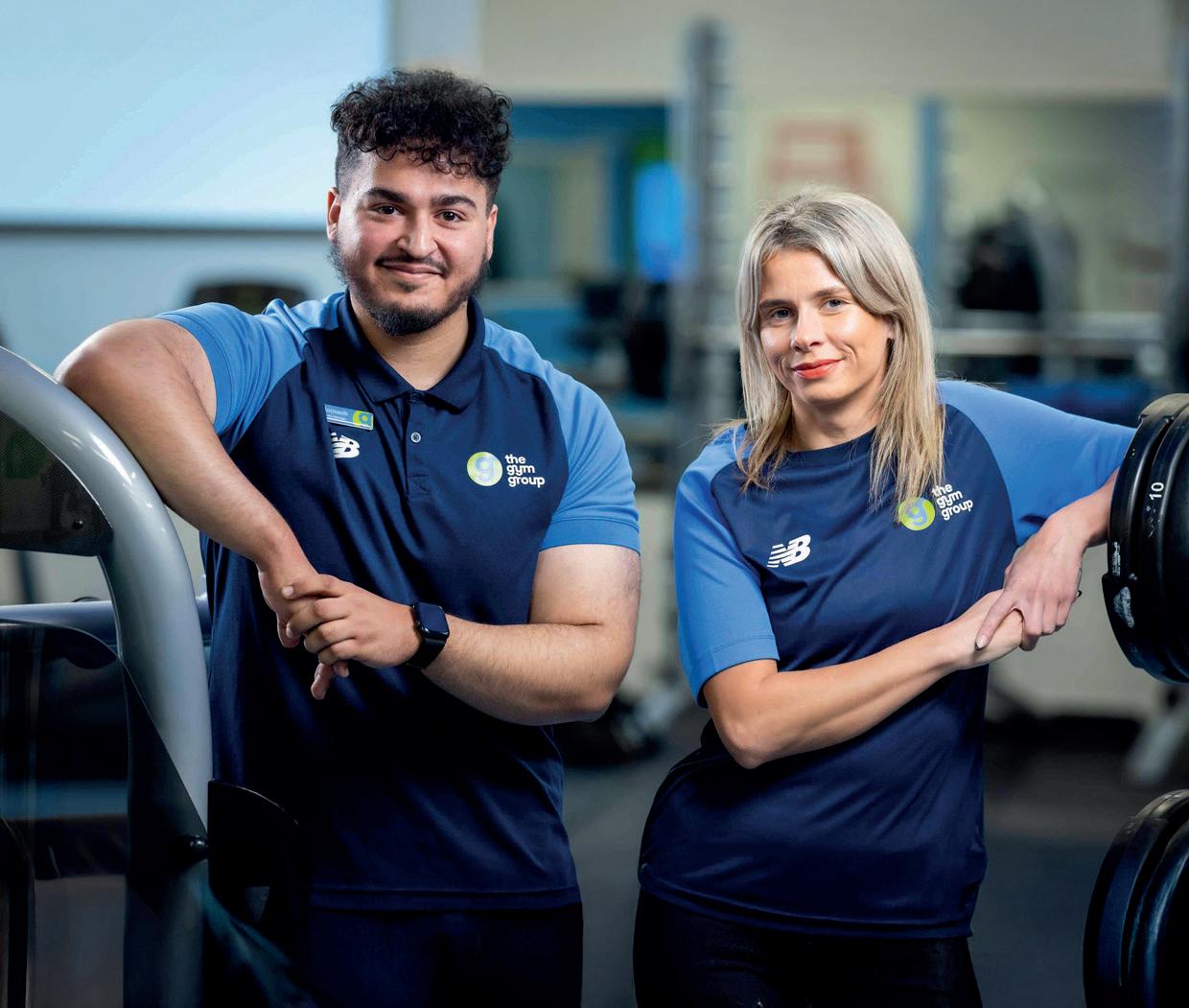



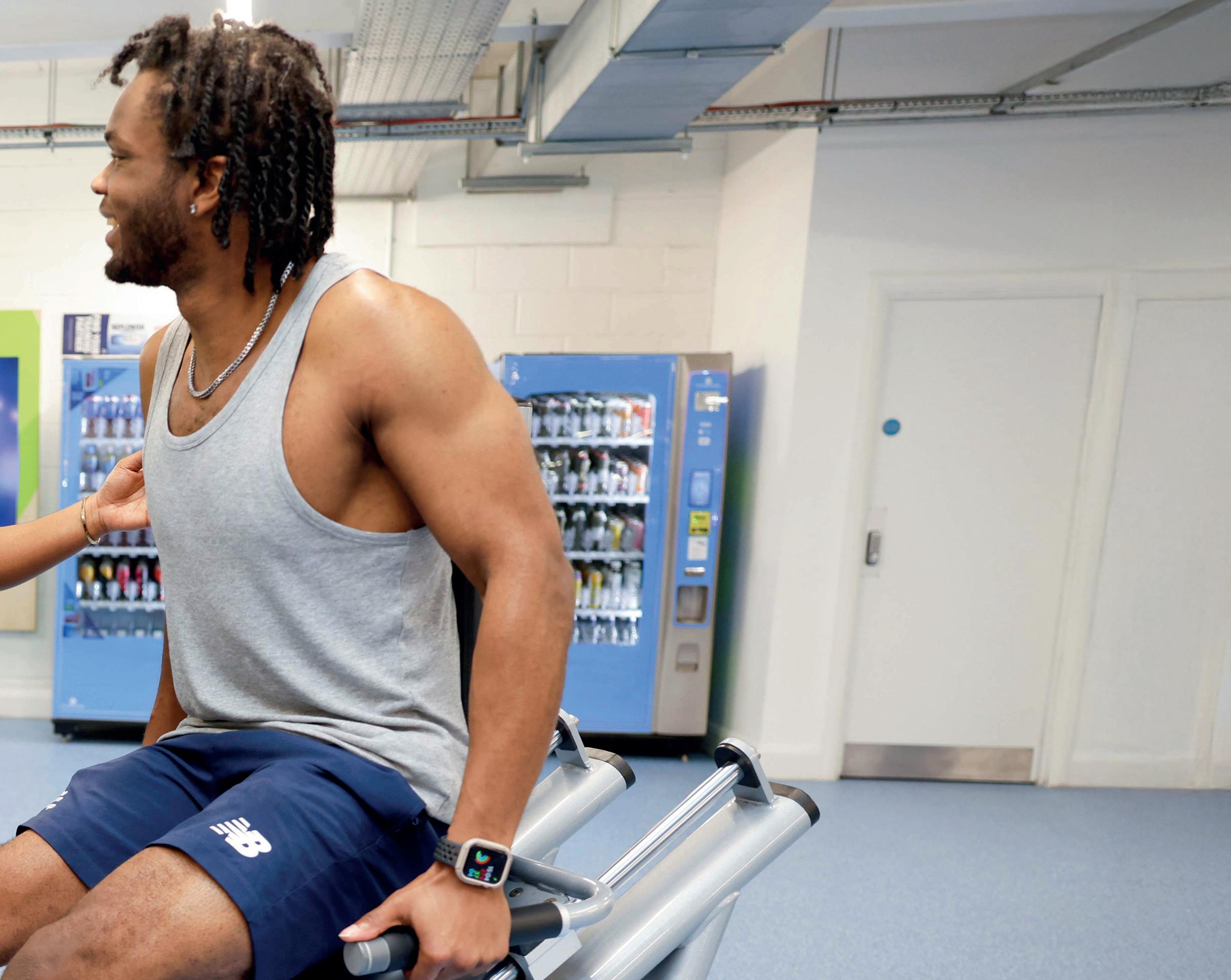










































In 2024 we were proud to be selected as one of The Sunday Times’ Best Places to Work, scoring highly on diversity and inclusion, wellbeing and job satisfaction. This recognises the great work of our teams and demonstrates how valued and engaged they feel. As a people-focused business, we invest in personal development, welcoming work environments, career pathways and benefits programmes. Everything we do is aimed at ensuring that The Gym Group is a great place to work and we’re committed to driving retention and performance of our teams. It’s really important for organisations to raise the profile of the great careers available in our industry; the personal trainers of today could be the leaders of the future.





In 2024 we were proud to be selected as one of The Sunday Times’ Best Places to Work, scoring highly on diversity and inclusion, wellbeing and job satisfaction
Tara Dillon
CEO CIMSPA
We’re all experiencing how recruitment pressures are intensifying across the sector. Fewer candidates in the market, rising expectations around flexibility and pay and those persistent skills shortages. The challenge is building a team that’s not only resilient, but also ready for the next asks from customers, policymakers and beyond.
Instead of constantly chasing external talent, I think it’s imperative that we focus our energy where it can make the biggest impact and that’s on the people we already have.
Developing your existing team through meaningful career progression and specialist skills development isn’t just good practice, it’s strategically necessary. Whether it’s enabling instructors to support specialist populations, helping coaches move into leadership roles, or building operational expertise in programme design and delivery, career progression offers a sustainable route to meeting not only current, but also future workforce needs.
The cost difference is stark. While replacing a team member can set an organisation back thousands in
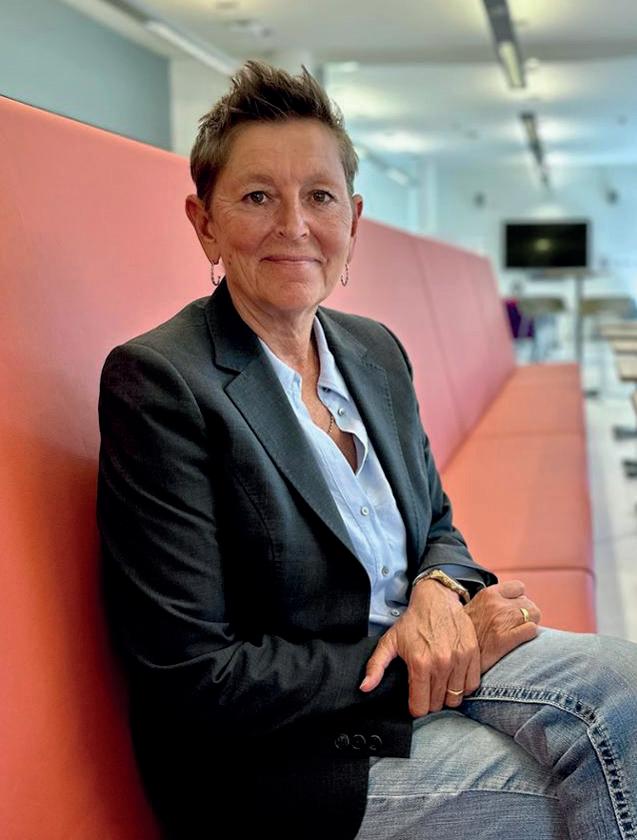
recruitment costs and lost productivity, investing in a recognised and accredited training and qualifications typically costs a few hundred pounds – a fraction of the cost. For that investment, you don’t just gain skills, you build confidence, motivation and long-term loyalty. Plus you get to retain high-value knowledge of your business and your customers.
Supporting people to gain and grow their professional status sends a powerful message. It demonstrates the value of skills and professional standards. It tells customers that the professional they are working with meets verified benchmarks. And it tells prospective recruits into the sector that they are taking on more than just a job, they have a future here.
Career progression also boosts culture. Teams feel more invested in when they know their employer cares about where they’re heading. The result? Greater engagement, lower turnover and improved performance.
When we invest in career development and create progression pathways, we don’t just fill a vacancy. We strengthen our brand as a professional sector to work in giving us a long-term advantage in a tight labour market. This isn’t about spending more on training, it’s about spending smarter to build a stronger, more sustainable workforce for the future of our sector.
By supporting sta to specialise you develop capability that’s harder to find in the open market and more valuable to the organisation over time
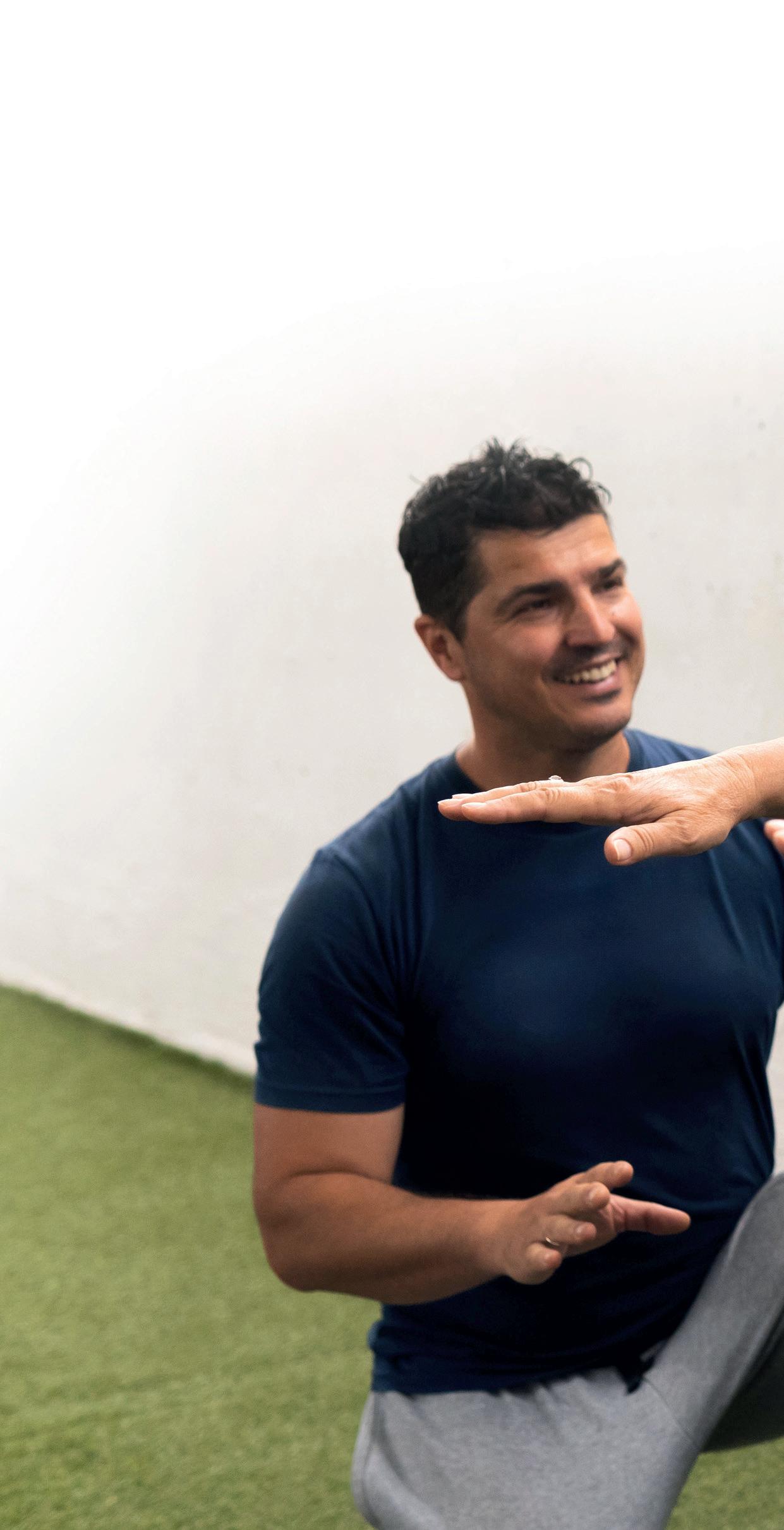

Progression shouldn’t be seen as linear. It’s not only about stepping up, it’s about deepening expertise. By supporting staff to specialise, to become experts in areas such as health referral programmes, inclusive delivery, youth engagement, etc, you develop capability that’s harder to find in the open market and more valuable to an organisation over time. This is what’s at the heart of the UK sector’s new Careers Hub which offers professionals and employers a one-stop-shop to understanding career development pathways and how those skills gaps can be filled. Find out more: https://careers.cimspa.co.uk
Soon, the sector in the UK will also have a new tool to support this journey – professional status. This recognition framework, launching soon, will enable professionals to have their experience and skills formally verifiable for customers, employers and deployers. For employers, it means being able to identify and build professional capacity with greater clarity. For professionals, it offers a clear, credible pathway to career development, from entry-level roles to advanced specialisms and leadership positions. Find out more: www.hcmmag.com/prostatus
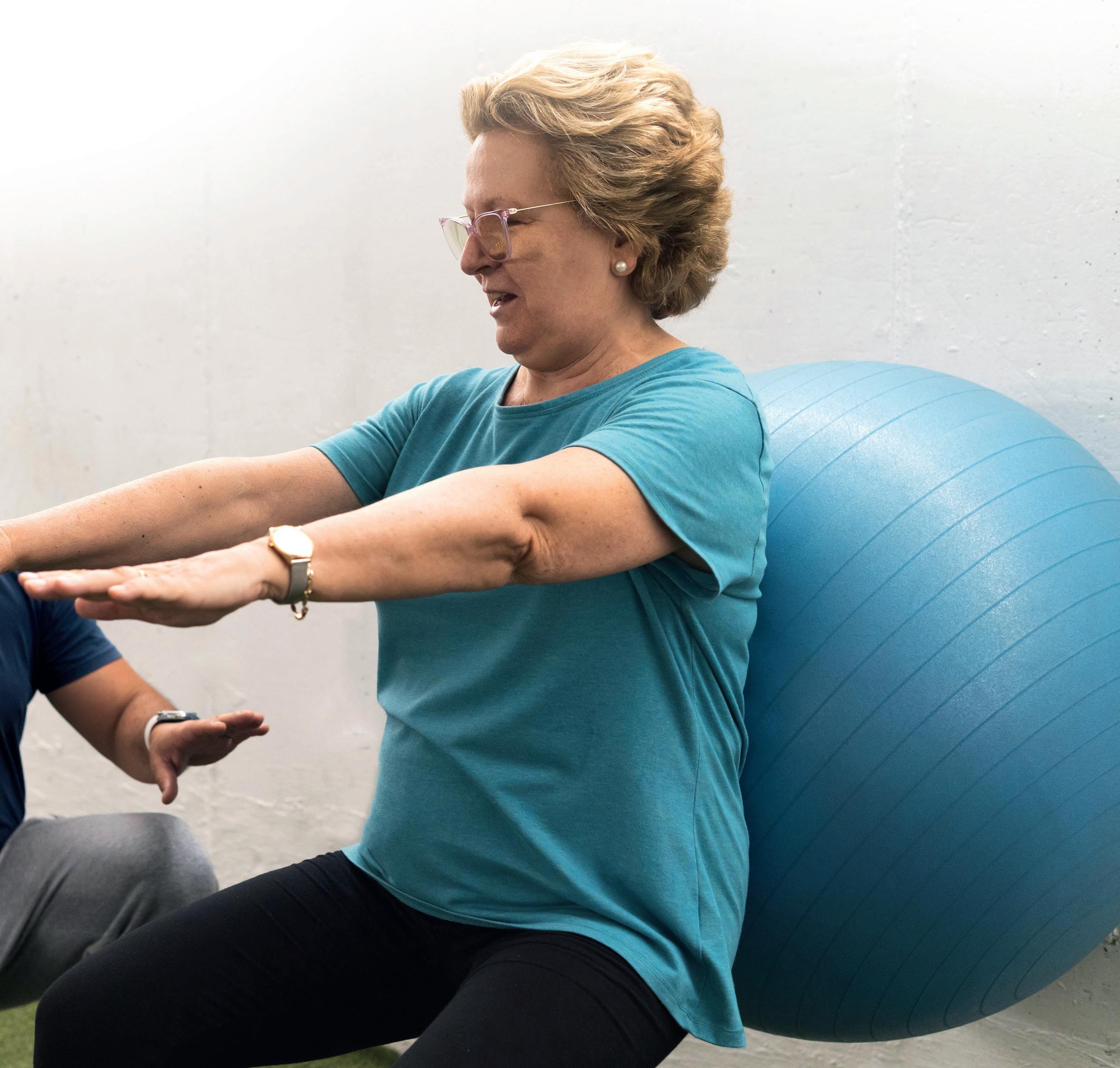
Offering good career progression builds stronger teams
Jo Talbot
Commercial director Royal Life Saving Society UK (RLSS UK)
High staff turnover remains one of the industry’s most pressing challenges. The problem is particularly acute for lifeguards, who typically stay in their role for two to three years, creating a continual recruitment and training cycle. This takes up significant time and resources and increases costs, placing added pressure on operators and the wider sector.
To support the industry, we’ve partnered with Future Fit, a training provider for health, fitness, and wellbeing professionals in the UK, to improve workforce retention. Together, we aim to create clear career development opportunities that encourage lifeguards to stay in the industry and progress to other roles, rather than leaving the sector to seek opportunities elsewhere.
Many young people take up lifeguarding as a part-time job while studying at school, college or university and then leave when their education has finished. RLSS UK qualifies more than 40,000 lifeguards a year, but many only keep the qualification
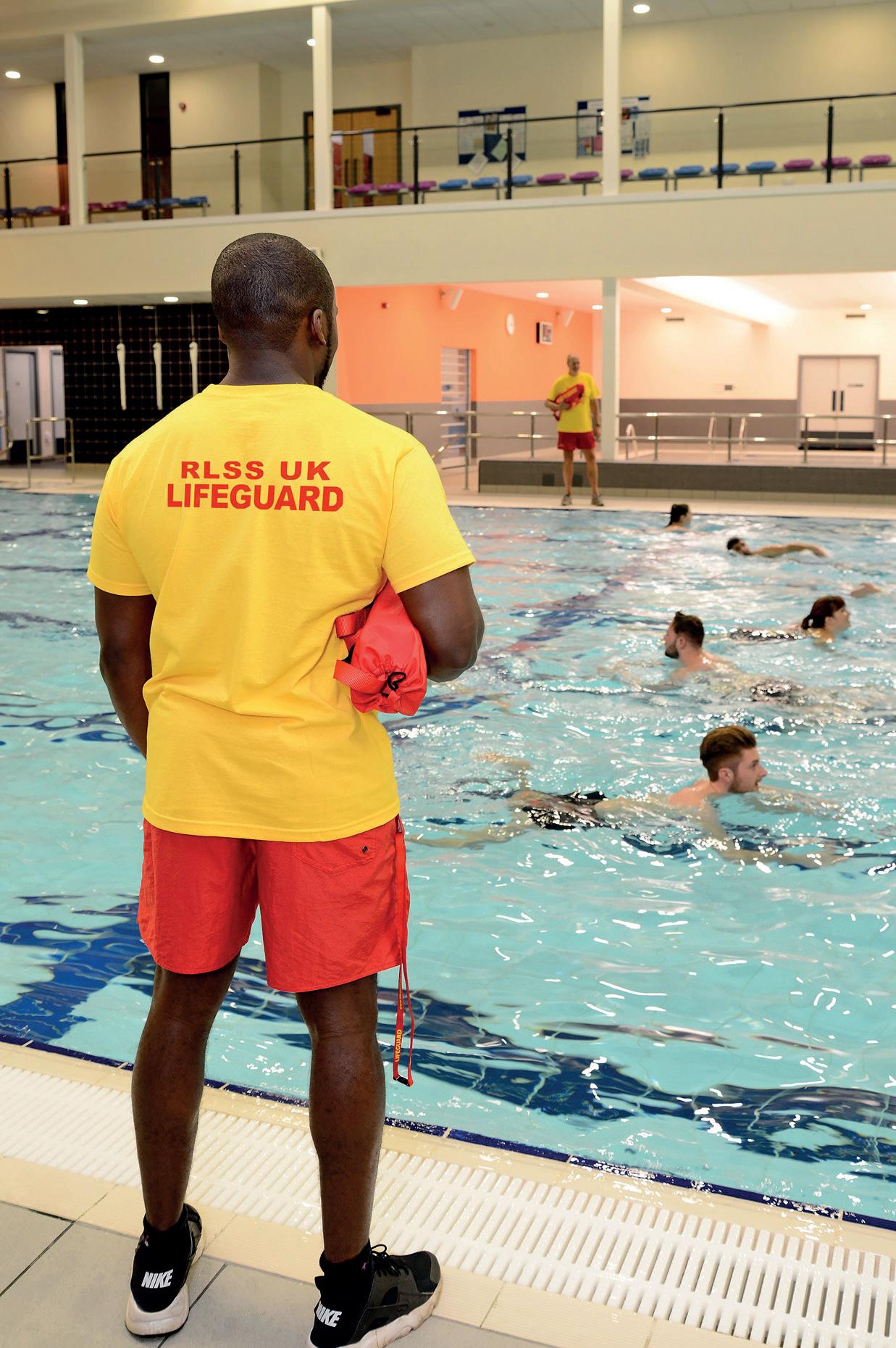

Through our partnership with Future Fit, we aim to help lifeguards gain new qualifications and take their next steps in the sector
for up to four years, indicating that they move out of the role and in many cases, out of the sector. We believe too many lifeguards are leaving because they don’t realise the variety of long-term roles available beyond lifeguarding, such as in fitness, wellbeing and management. Yet, many of today’s industry managers and leaders started out as lifeguards and have gone on to build long and successful careers in leisure. (check out #IStarted AsALifeguard and www.rlss.org.uk/istartedasalifeguard).
From fitness and aquatics to customer service or sales, our sector offers an incredible range of career pathways. Through our partnership with Future Fit, we aim to help lifeguards gain new qualifications, develop valuable skills and take their next steps in the sector.
Any RLSS UK qualified lifeguard can access discounts on Future Fit training courses, giving them an opportunity to gain qualifications that could lead to roles as fitness instructors or personal trainers. This could be the difference between a lifeguard leaving the sector, remaining employed, and carving a meaningful, multi-disciplinary career. This initiative will open the doors to wider opportunities for lifeguards, encouraging them to build long-term careers in the industry. ●








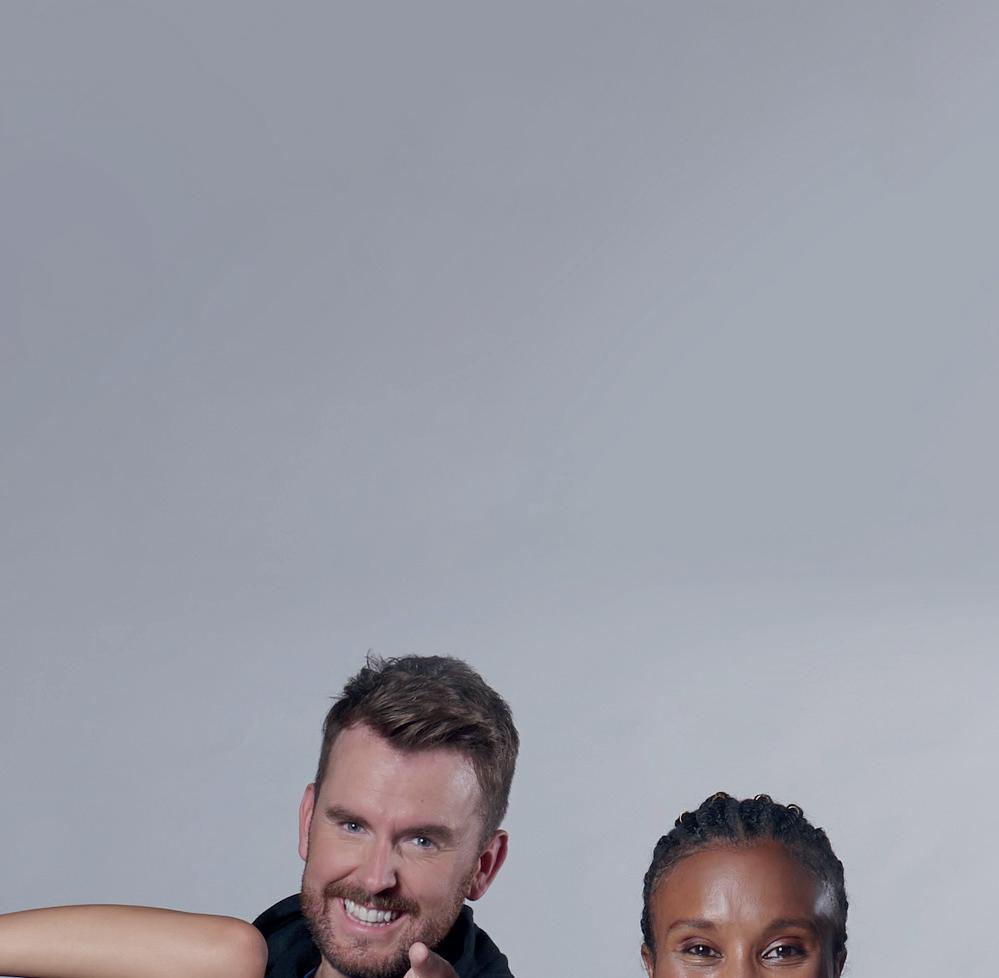
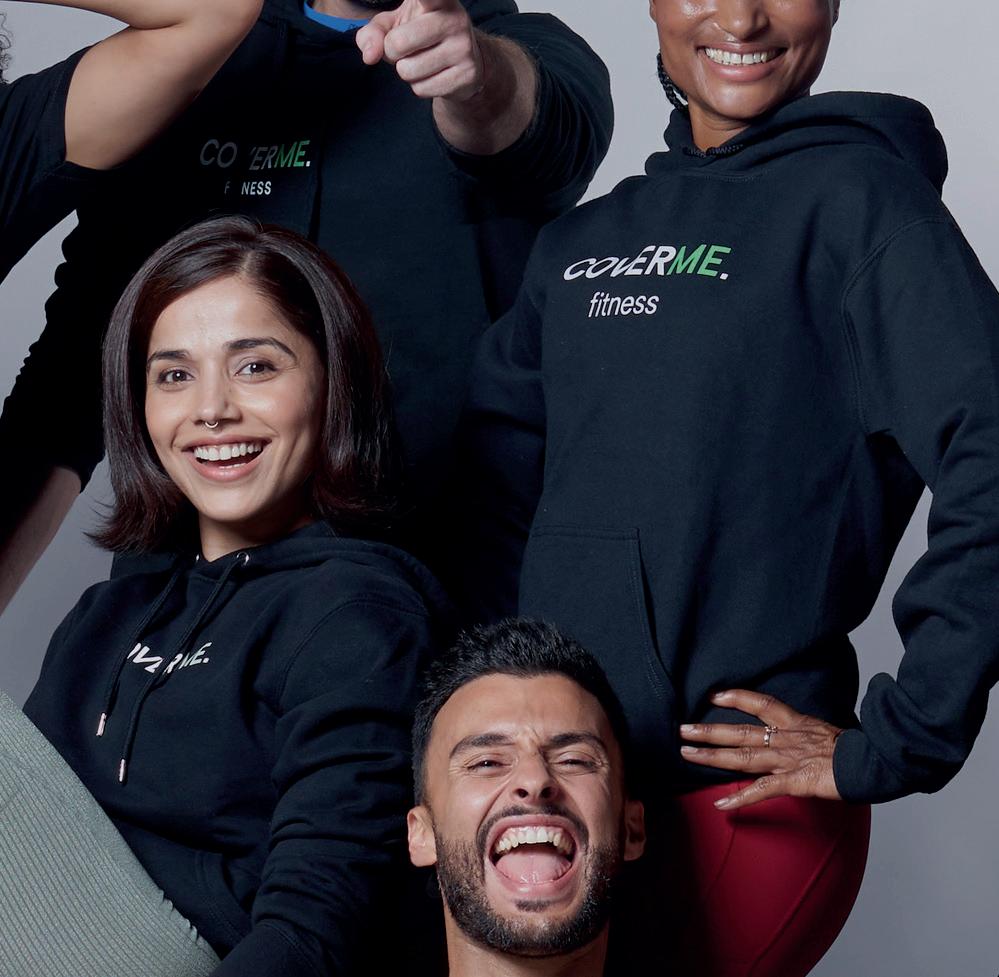
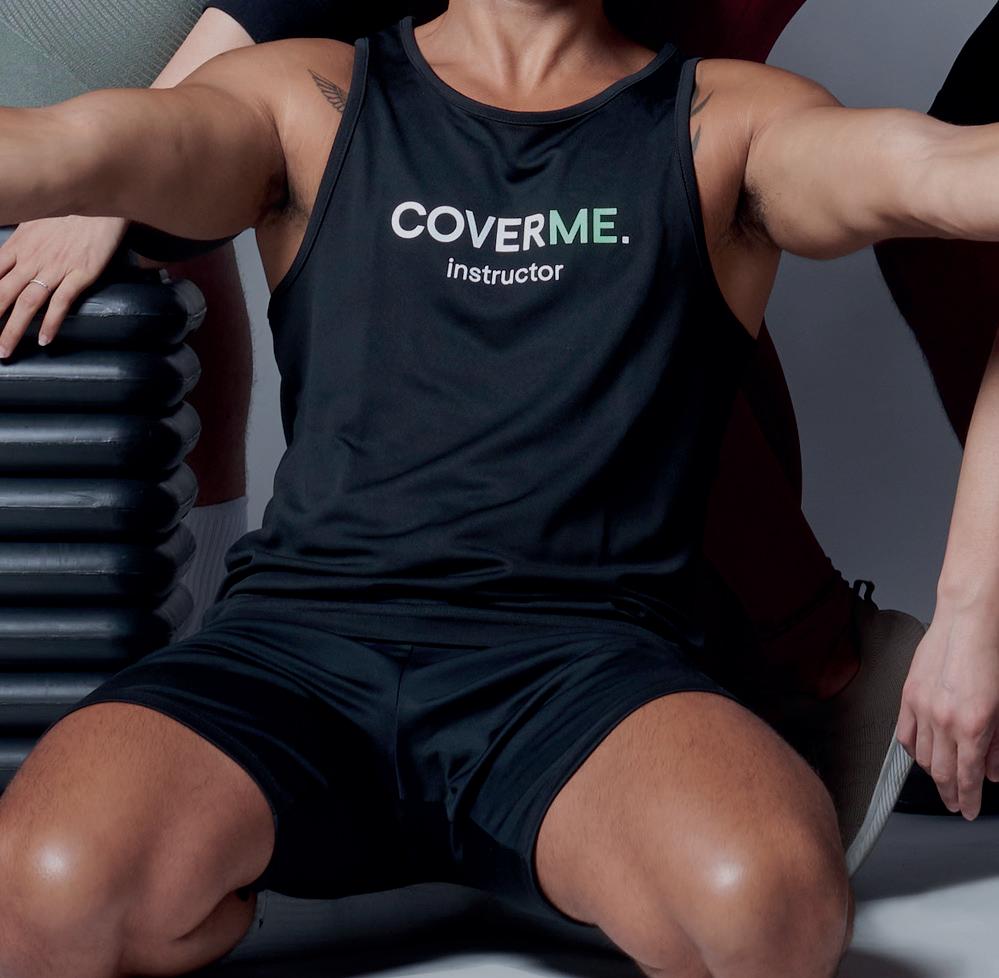


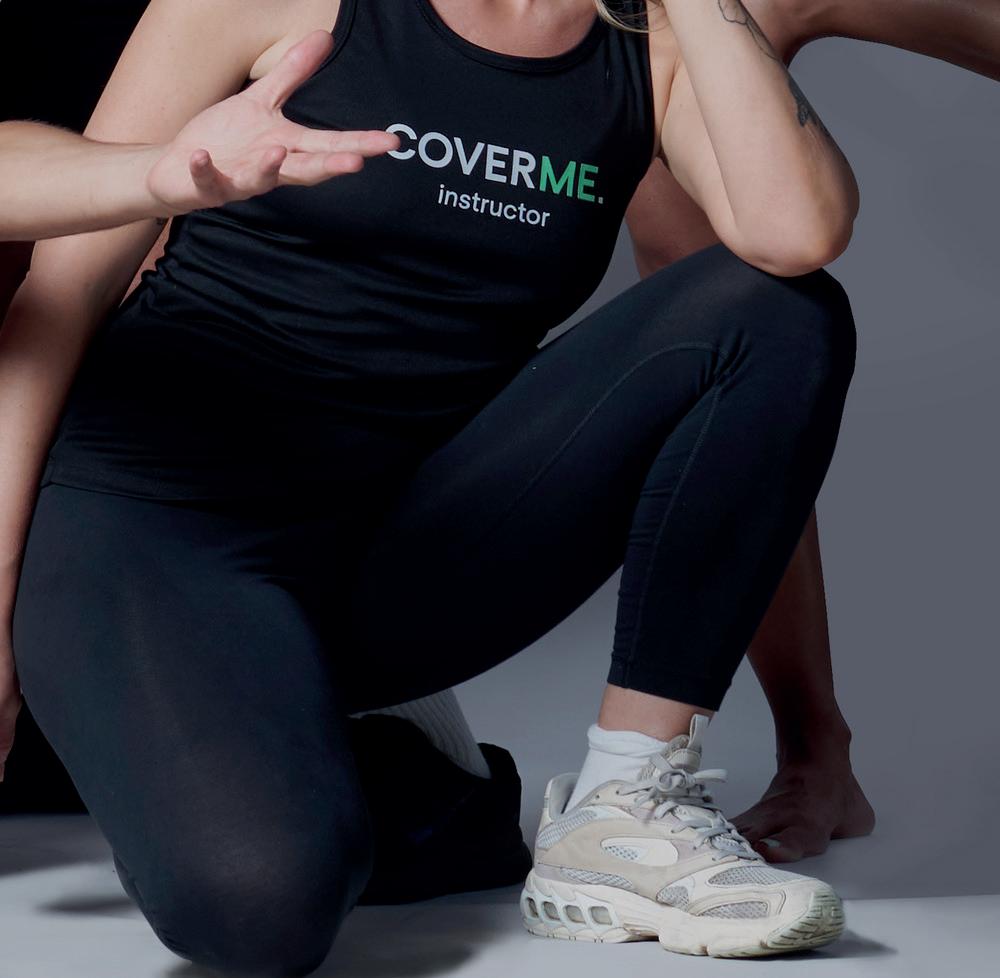


Each piece of Biostrength equipment gives everyone a safe, effective workout, whether beginners or elite level
The health club and spa at Crow Wood Hotel and Spa Resort has consistently enhanced its offering with premium upgrades to elevate the customer experience.
This year, spa facilities have doubled in size, while the health club has undergone a refurbishment to introduce state-of-the-art studios and AI-driven fitness technology by Technogym.
The health club has always been integral to the hotel’s business model, serving 3,500 adult members alongside hotel residents. It now includes three studios – indoor cycling, yoga and Pilates and aerobics – plus a 150-station gym zoned across cardio, fixed resistance, free weights, and personal training areas. A mezzanine also houses a new Technogym Biocircuit installation.
“We’re constantly looking for meaningful ways to invest in the club so members get true value,” said director, Oliver Brown. “Partnering with Technogym helps us position Crow Wood as a luxury product that’s premium and accessible to all.”
The latest gym investment includes Technogym Checkup assessment solutions and 19 pieces of AIdriven Biocircuit equipment, representing a shift from traditional strength training to adaptive resistance that automatically adjusts to each user’s capabilities.
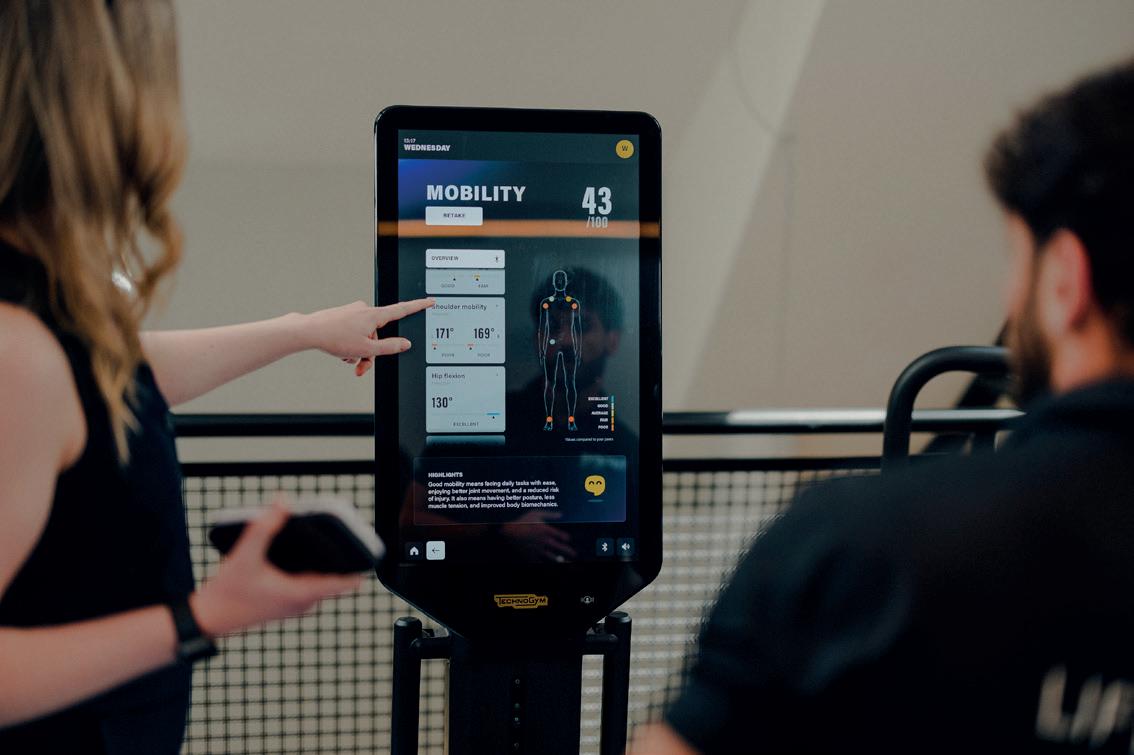
Crow Wood Health Club is elevating the member experience with Technogym
“Replacing our previous resistance training equipment with Biocircuit was a bold move and the best decision we could have made,” says Brown. “Each piece of Biostrength equipment gives everyone a safe, effective workout, whether they’re a beginner or an elite weightlifter.”
Technogym Biocircuit provides a future-proof solution to a common challenge – accommodating members with different strength levels without creating an intimidating environment.
Its adaptive resistance adjusts in real-time to each user’s strength curve, providing optimal resistance throughout the full range of motion. This means advanced athletes can push more weight than ever and newcomers can train safely with automatically adjusted loads.
This investment in Technogym Biocircuit reflects industry trends toward AI-driven, personalised training backed by meaningful human support.
Thanks to the new Technogym reporting suite for Bioscircuit, Crow Wood can also see that, on average, 4,500 workouts are completed each month by 1,000 unique members, with 65 per cent training
Crow Wood has introduced a full suite of Technogym kit


with a structured programme. There’s also a near 50/50 split by gender and an average age range between 50 and 64. Biocircuit is truly inclusive, as demonstrated by the fact that 19 per cent of users are aged 65 and over.
A look at preferences shows 27 per cent of members follow the Tone your Body training method, while 19 per cent choose Hypertrophy and 14 per cent follow a Biocircuit programme created for them by one of Crow Wood’s trainers.

“Replacing our resistance training equipment with Biocircuit was a bold move and the best decision we could have made”
Members moving from traditional fixed programmes to Biocircuit training saw an average strength improvement of 8.3 per cent in the two months following installation.
Alongside Biocircuit , Crow Wood has integrated Technogym Checkup into the member journey.
The AI-driven assessment station evaluates fitness, movement patterns and health metrics to offer personalised recommendations generated by Technogym Coach, with these synching to Biostrength.
Crow Wood offers Technogym Checkup as part of membership, while personal trainers use Checkup data for programme design and injury prevention and
Oliver Brown
Technogym Biocircuit, Checkup and Mywellness have all been installed
the reports help members understand their progress and set goals.
To support the integration, Technogym Educators offer regular education and consultancy services.
Crow Wood plans to expand its digital offerings with virtual indoor cycling in the Technogym Group Cycle studio, using Technogym on-demand content to address high demand for classes.
Support from Technogym’s digital team has helped Crow Wood leverage Mywellness CRM for operational insights and member engagement, as well as operational efficiencies.
Integrated with the membership system, the Mywellness CRM platform handles class bookings, PT calendars, inductions, retention communications and class ratings.
“Mywellness CRM platform and the Technogym App has brought us into the 21st century,” said Brown. It’s a big value-add that helps us continually offer our members more too.” l
l More: www.technogym.com


You have two lives. The second begins when you realise you only have one
When Jetts CEO, Elaine Jobson, received a shock cancer diagnosis she looked for templates from other leaders about how to share the news with her team.
Unable to find one, she created her own. She shares her story.
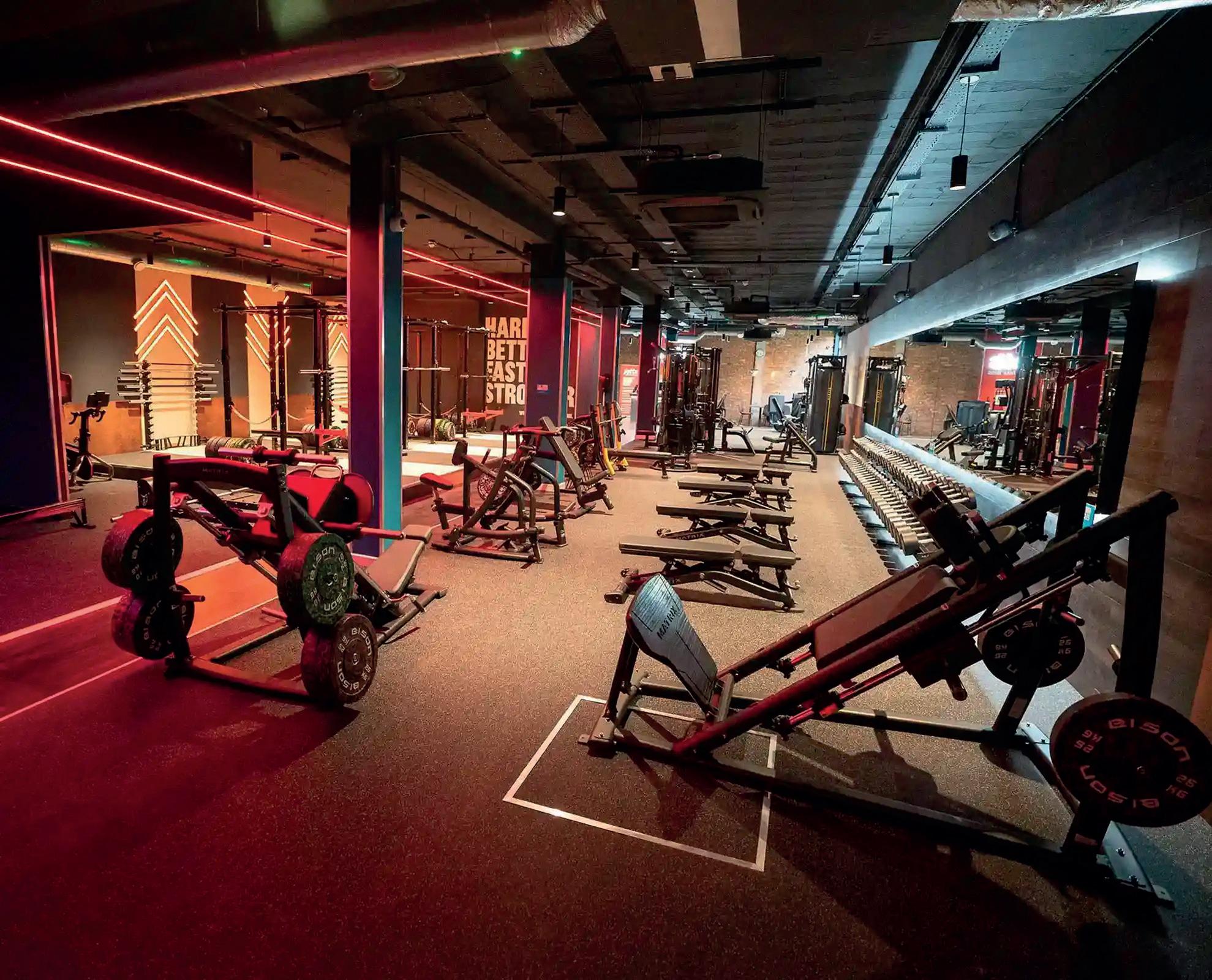
They were the hardest words I've ever spoken as a leader. Harder than delivering bad news about the business. Harder than making the tough calls that impacted people's careers. Because this time, the bad news was me.
Taking care of our people and our customers has always been one of the most rewarding parts of my life. Growing a company, seeing others succeed, and knowing you’ve played a part in impacting lives, that’s what drives me. Leadership has always felt a natural fit for me. Not in a controlling way, but as a space where I feel most myself.
So when I was recently diagnosed with cancer, I’ll admit, for a moment, I lost my footing.
My first thoughts went straight to my daughter, then my family, and then to my Jetts family. How could I take care of everyone when I wasn’t sure I could even take care of myself? It was a humbling moment.
I’ve faced challenges, setbacks, and obstacles in business and in life, but never with my health. Having worked in the fitness industry for more than 30 years, I had always taken my health for granted. Perhaps that’s human nature: we don’t truly value something until it’s threatened.
As a leader, you face an immediate dilemma: Who do I tell? How much do I share? How do I protect my team without overwhelming them?
I decided to be open. Once I knew what my treatment plan looked like, I began sharing the news one-on-one. Some of my team cried, some were silent and others reassured me with words of strength. Each reaction reminded me of the depth of compassion in our people. Eventually, I told the wider team in a huddle. That was tough, laying something so personal out in the open, but it was also a relief. They deserved to know why I’d be arriving late after daily radiation and why I’d be stepping back from certain activities, such as travel. Their response was nothing short of incredible. They showed me an abundance of care and support, giving me cards and gifts. One who had experienced their own cancer journey bought me a beautiful merino blanket, as he had found one useful during his cold hospital visits. Their compassion floored me. Then came the board. I told our chair on the golf course (yes, cliché!) and he was reassuringly pragmatic, treating me as he always had with respect and friendship. However, when I shared the news with the rest of the board at the end of a meeting, I broke down. Their shocked faces mirrored my own emotions and for the first time, I let the weight of it all show. But they were an incredible support to me, each individually reaching out with practical suggestions on how we could all get through this together.
The rainbow stage set the scene for sharing

I realised something profound: we’re all simply humans, doing our best, carrying our own battles, often unseen
I knew it was only a matter of time before the news would spread beyond the walls of our team and I didn’t want whispers or confusion, I wanted to own my story.
Sharing the news
So at our annual Jetts Gathering event, I shared my news from the stage. I chose to close with it, standing in front of a giant rainbow on the screen behind me.

I drew on a philosophy from Steve Jobs, that life is like a rainbow: we are born, we burn brightly across the sky, and eventually, the arc falls. None of us can control when our arc falls, but we can choose how brightly we burn while we’re here – that we must build something wonderful.
Jobs found this knowledge to be motivating, not depressing.
In that moment, surrounded by my Jetts family, I felt calm. Accepted. At peace. It was time to allow myself to receive the same support I’ve always given others and to focus on my own healing.
When I stepped off the stage, something happened that I didn't expect. People came up to me and shared their own stories. One had just been diagnosed herself. Another had lost his father to cancer only months ago. Another had been quietly fighting it for years. In that moment, I realised something profound: we are all simply humans, doing our best, carrying our own battles, often unseen.
The theme of this year’s gathering was "18 and unstoppable, driven by purpose – united by impact." It turned out to be the perfect description of the intense emotions in the room and trust me, they were already running high from our incredible keynotes earlier in the day.
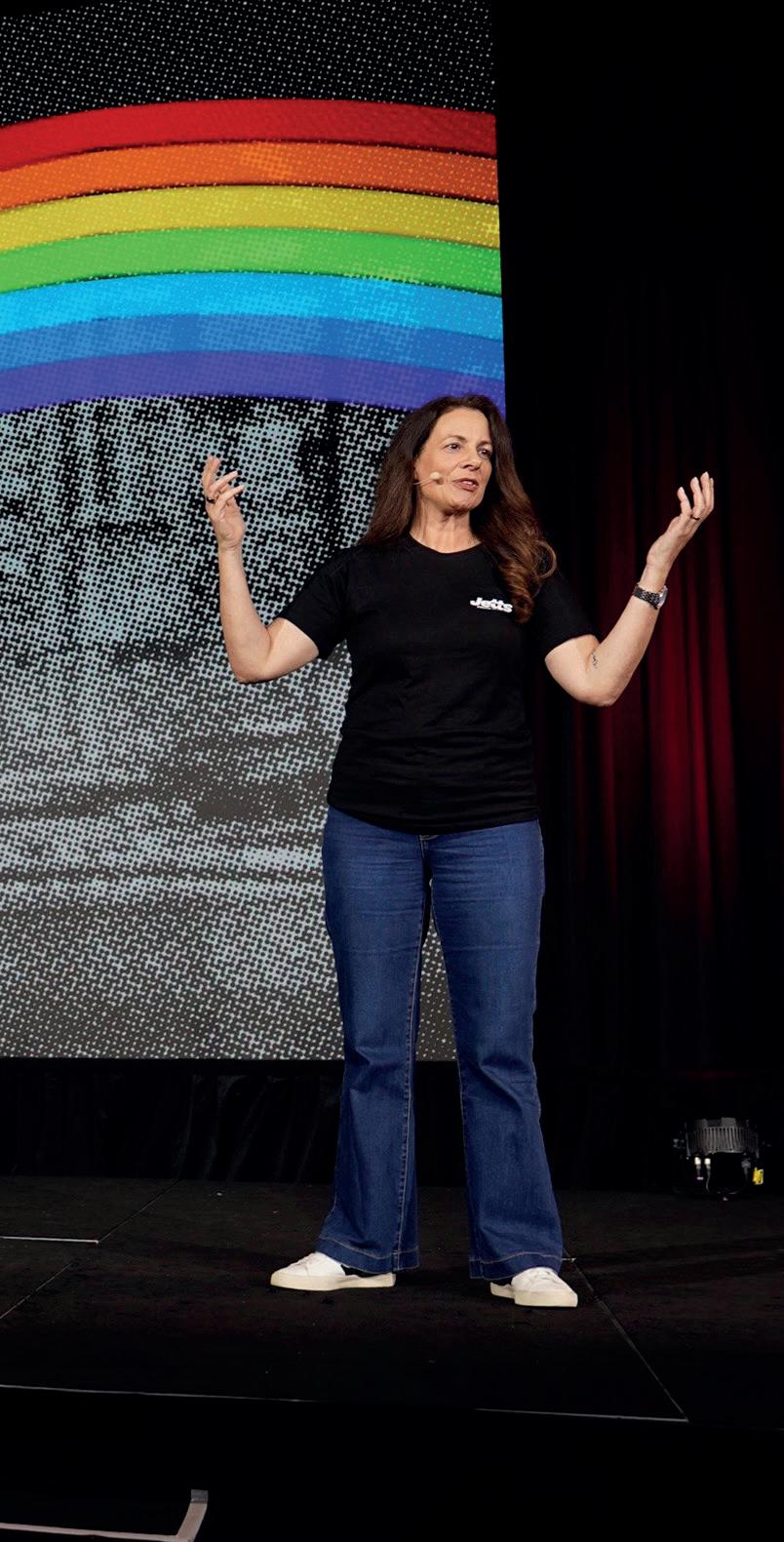
The journey from diagnosis to sharing my story has been one of the hardest of my life. But I wouldn’t change a thing. I recently heard a saying: “You have two lives. The second begins when you realise you only have one.”
For me, this feels like a double rainbow. A chance to begin again, to burn brighter than ever before.
As I write this from my chemo infusion chair at Sunshine Coast Private Hospital, I feel nothing but gratitude for my family, my team, my friends, and every moment that has made up my rainbow so far.
And I feel excited for this new chapter: more aware, more grateful and more determined than ever to burn brightly in the sky.
The promise I made from the stage to our people was this...
- I am still here.
- I'm still your leader And I'm more determined than ever.
- We have a brand that changes people's lives for the better, and mine is no exception.
- We have a team who are driven by purpose.
- We are 18 and unstoppable.

Jobson and her team are on
It was time to allow myself to receive the same support I’ve always given others and to focus on my own healing
So yes, I have cancer, but I'm still the same leader, business mentor, friend, wife, mother, daughter and aunty. But ultimately, I'm human. And I believe that true leadership is not about hiding our weaknesses, but allowing others to hold us up when we need it most.
Thank you to everyone who has been a part of my rainbow so far and to those I've yet to meet. Because I'm not done yet. I'm a double rainbow kind of girl! l
Chris Hull explains how well-designed storage not only frees up valuable gym space, but also creates a premium feel and can become part of a club’s functional kit
What are the main challenges operators face in terms of storage?
One of the biggest is improper placement and the utilisation of single use pieces of storage.
Too often, storage is treated as an afterthought, equipment is tucked away wherever it fits rather than strategically integrated into the overall gym floor layout. This leads to congestion, cluttered walkways and wasted square metres that could otherwise be used productively. A lack of well-designed storage also makes spaces harder to manage and can reduce the overall member experience.
How can storage be made a feature?
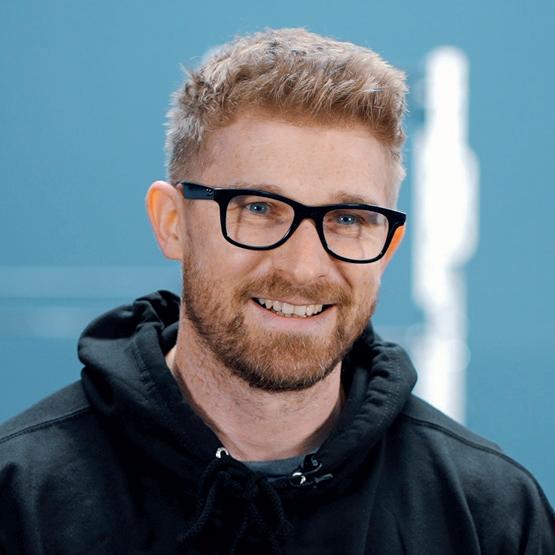
How can storage help operators maximise ROI?
Smart storage solutions unlock the potential of underused or off-peak spaces, such as group exercise studios or corner areas. By integrating cable stations or multifunctional racks into storage, operators can transform these areas into productive training zones in seconds. This flexibility allows facilities to serve more members, run varied programming and maximise every square metre. In turn, that drives higher utilisation, stronger retention and better ROI.
What’s the BLK BOX approach to storage solutions?
It can become a feature when it serves more than one purpose. For example, functional storage systems are no longer just racks for holding equipment. At BLK BOX we can integrate cable systems, dip stations, barbell landmines or pull-up bars. This transforms storage into a multifunctional training piece of equipment that adds real value to the floor space. By making storage part of the workout experience, operators can enhance visual aesthetics while also increasing functionality.
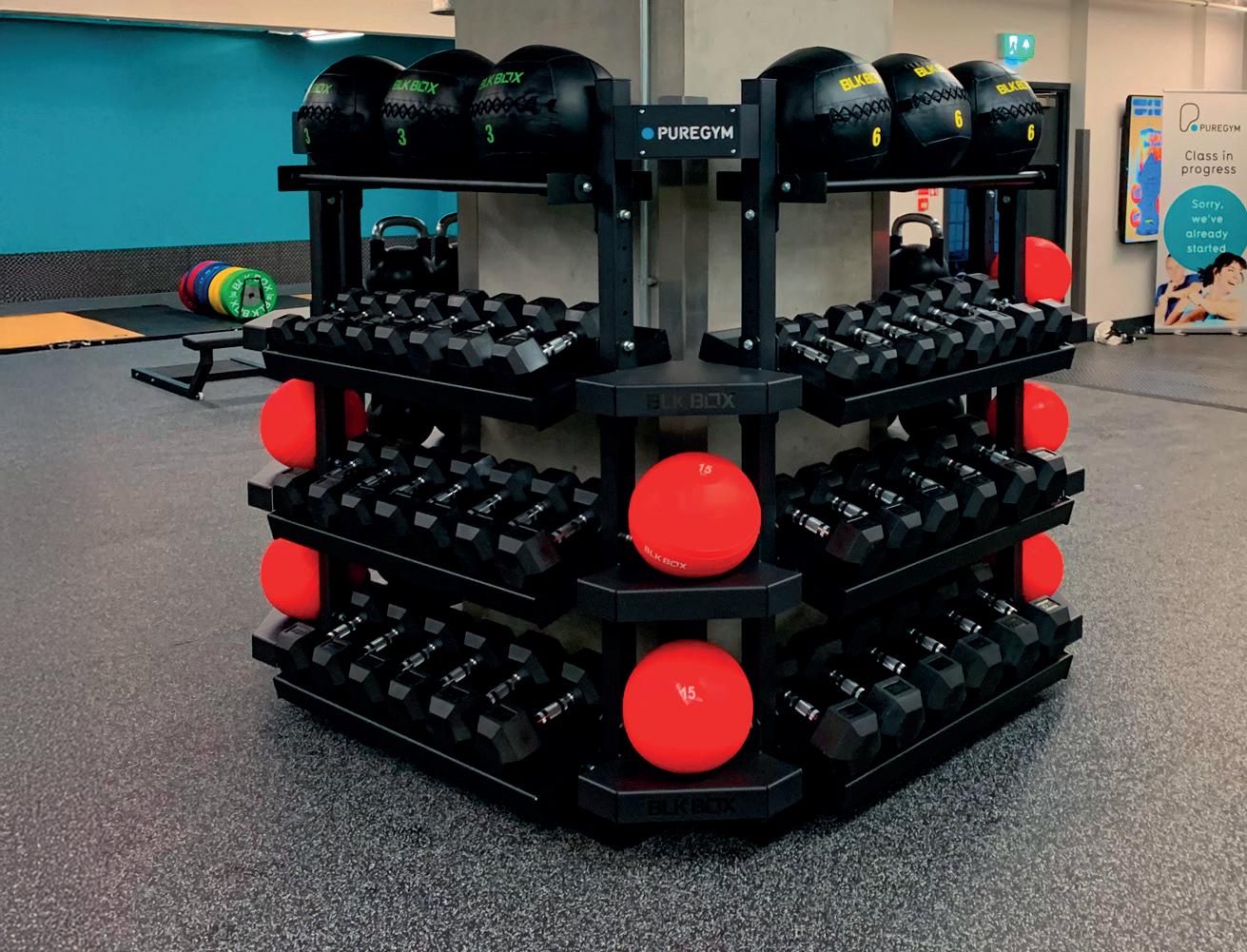
For new facilities we take a consultative approach from the start, working with operators to design storage solutions that integrate seamlessly into the layout which highlights their coaching model/product. The goal is to optimise flow and functionality right from the blueprint stage, ensuring storage supports both current and future programming needs. For retrofits, our focus is on helping operators make existing spaces work harder. This often involves designing modular, space-efficient systems that can be easily installed without major disruption. Retrofit projects are about creating maximum impact with minimal downtime.

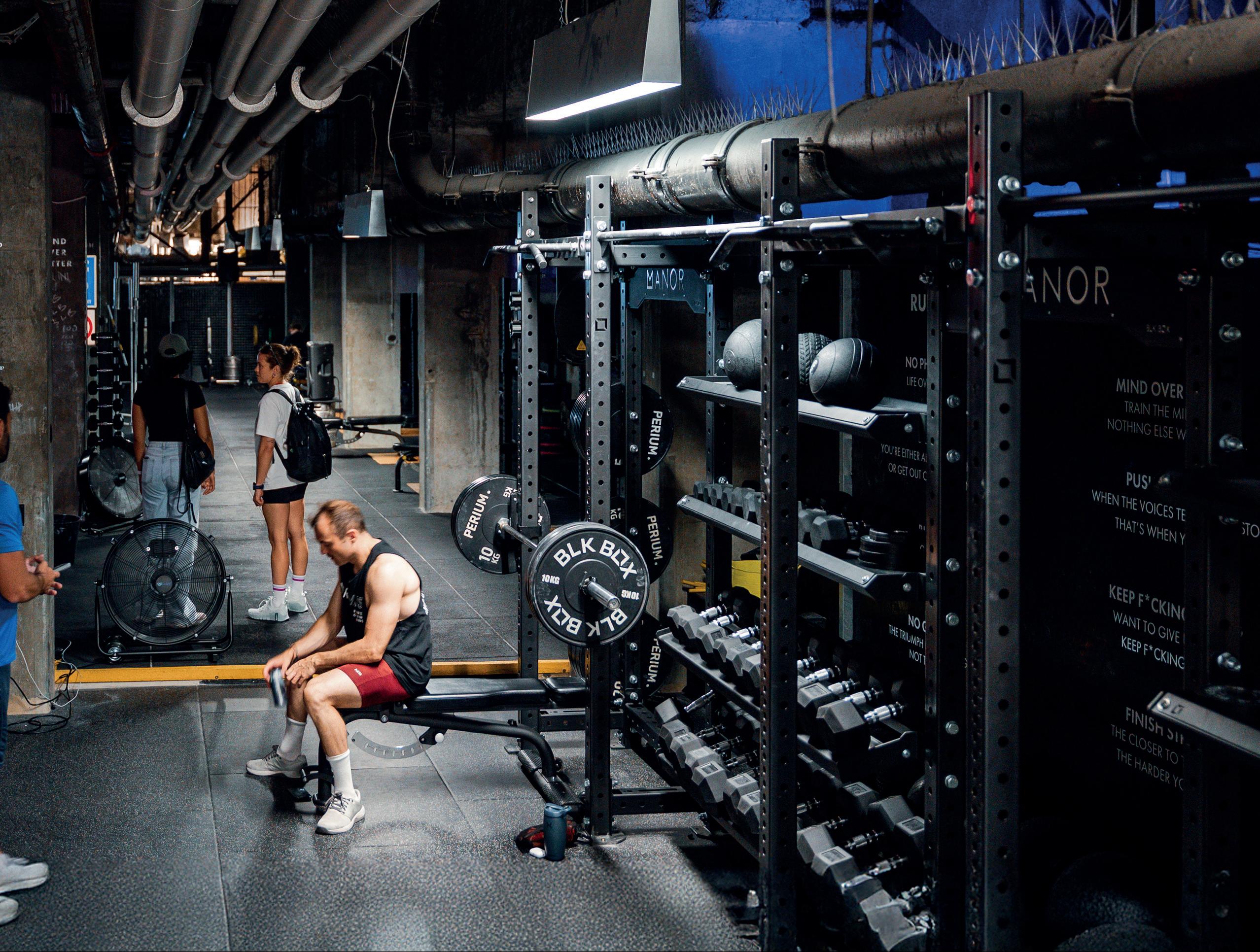
What trends require operators to better plan their storage?
We’re seeing growing demand for multi-functional training spaces, with clubs offering more small group training (SGPT), hybrid classes and strength-based programming. This requires flexible storage that can adapt quickly to different session formats.
There’s also a trend towards more compact urban facilities, where every square metre is at a premium. In these environments, storage must double as training equipment to justify its footprint. Additionally, as operators invest in digital and connected fitness solutions, there’s a need to plan for integrated cable management and tech-friendly storage.
Any final thoughts?
Ultimately, smart storage isn’t just about tidiness, it’s about creating spaces that feel premium, professional and adaptable. When storage is done well, it enhances member experience, improves operational efficiency, and supports revenue growth. At BLK BOX, we see storage as a strategic investment rather than a background detail and it’s often the difference between a facility that feels crowded and one that feels inspiring. l Chris Hull is business development manager at BLK BOX
More: www.blkboxfitness.com
By making storage part of the workout experience, operators can enhance visual aesthetics while also increasing functionality
FROM PROBLEM TO ASSET
Position strategically
The positioning of storage has a huge impact on flow, congestion and ease of access. A well-placed storage system makes spaces feel intuitive and efficient.
Focus on organisation
When equipment has a clear home, spaces look more premium and professional and members are more likely to treat the facility with respect, avoiding clutter and the dreaded dumbbells left behind.
Maximise vertical space
Don’t just think about floor area – walls and even overhead solutions can free up valuable room for training.
Design for flexibility
Choose systems that can adapt with your programming and member demand over time.
The latest report on the global market has been published by the The Health and Fitness Association, as Kath Hudson reports
The 2025 HFA Global Report , which looked at almost 30 markets, shows that around the world more people are joining gyms and seeing fitness as essential, despite rising living costs.
After surviving economic slowdowns and a global pandemic, the fitness industry is gaining a reputation as a long-term investment target, especially since club offerings have expanded into mental wellness, recovery and longevity. Ninety-one per cent of respondents anticipate growth in 2025 and 51.3 per cent foresee membership increases.
n Massive growth opportunities remain in emerging markets where penetration rates are below 1 per cent, such as India, while developed markets are approaching or exceeding 20 per cent.
n Hybrid models have become the industry standard.
n Millennials and Gen Z are driving growth, while higher-income segments dominate memberships and create premium opportunities.
n Retention requires better onboarding and engagement, as 50 per cent of new members cancel within six months.
n Corporate wellness is a significant opportunity and medical integration offers health-care partnership potential.
n Consumers increasingly demand personalisation
n Government-led preventative health strategies offer a platform to elevate fitness as essential to wellbeing.
n There has been a shift away from pandemic behaviours of outdoor and at-home fitness back to facilities, with a renewed appreciation for community.
n Search trends reflect a growing interest in longevity and healthspan rather than aesthetics, with fitness increasingly viewed as medicine.
n Recovery and wellness services – such as cryotherapy and red-light therapy – are becoming standard expectations.
n The surge in strength training has reshaped club design, with modern facilities dedicating 42 per cent of floor space to strength versus 20 per cent traditionally, while cardio areas have fallen from 34 to 12 per cent.
n Pickleball remains the world’s fastest-growing sport, expanding 223 per cent in the US in three years, with Life Time targeting 1,000 courts by the end of 2025.
n Technology integration is accelerating, with AI used to improve operations and personalise experiences. Yet 47 per cent of consumers report inaccurate or irrelevant AI data, raising reliability questions.
The fitness industry is attracting strong equity investment. Notable funding rounds include US$800m securitised financing for Planet Fitness and around US$1.8bn in new capital for Equinox. This investment is being driven by robust results from public companies, the longevity trend and the post-COVID wellness boom, especially among younger consumers.

Challenges include inflation affecting discretionary income, rising interest rates, construction and labour costs, supply-chain issues and staffing shortages. Trading uncertainty in the US as a result of Trump’s tariffs is also a concern for both suppliers and operators, due to the potential impact on the cost of equipment.
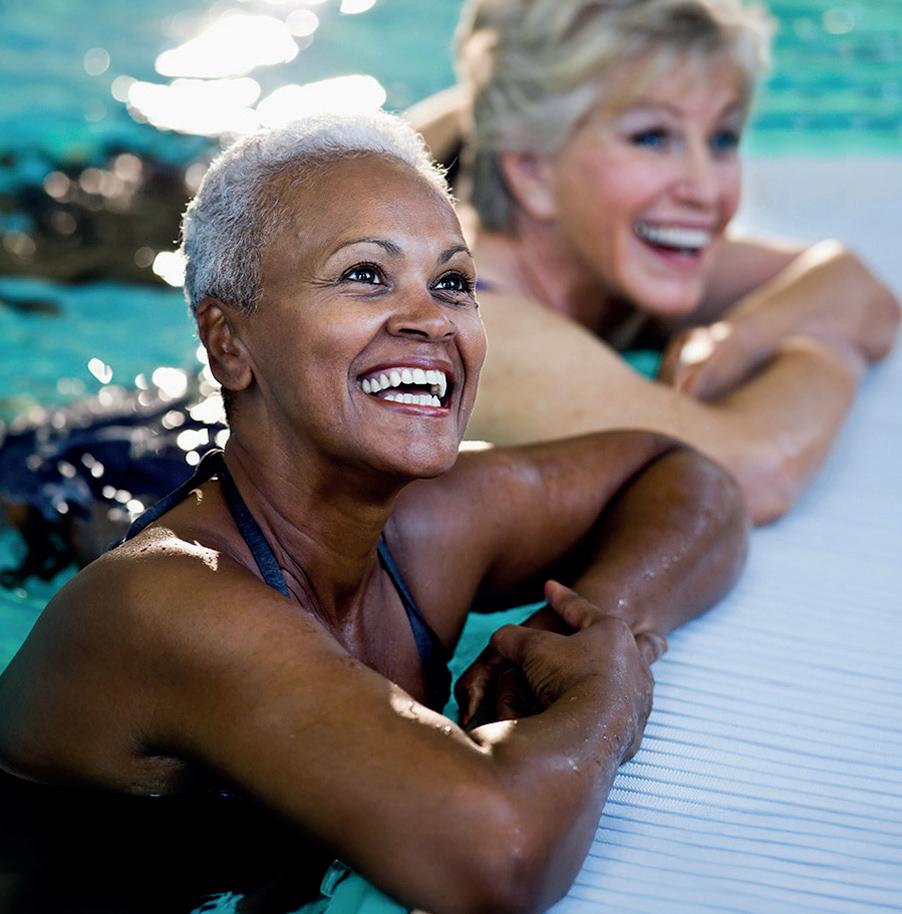

The market in Europe Europe combines mature and emerging markets, showing both stability and growth.
The UK, Switzerland, Germany, Austria and Spain all saw gains in 2024, and 90 per cent of European companies expect growth in 2025, with half of them planning expansion.
The UK has the highest penetration in central Europe at 16.9 per cent. Despite inflation and cost pressures, metrics are rising. With a Labour government focused on health and economic growth, the industry is lobbying for a key role.
Austria overtook Germany in penetration at 13.9 per cent, with strong growth among under-30s and over-50s. Personalisation and digitalisation are rising, while yoga and free-weight strength are the fastest-growing modalities.
Spain reached record highs, with membership up 8.8 per cent and penetration at 13 per cent. It is now a leading European market, with expansion

by VivaGym, Synergym, Metropolitan and David Lloyd into regional cities. Boutique studios are also spreading beyond Madrid and Barcelona, supported by rising disposable income among younger members.
France surpassed 10 per cent penetration, driven by women under 30. The over-60s remain underrepresented at 6 per cent with a 40 per cent cancellation rate.
Germany’s penetration rose to 13.8 per cent. Despite cost-of-living pressures, wellbeing remains a priority. The DSSV’s Quality Offensive aims to position fitness as a legitimate part of
Pickleball continues to be the world’s fastest-growing sport
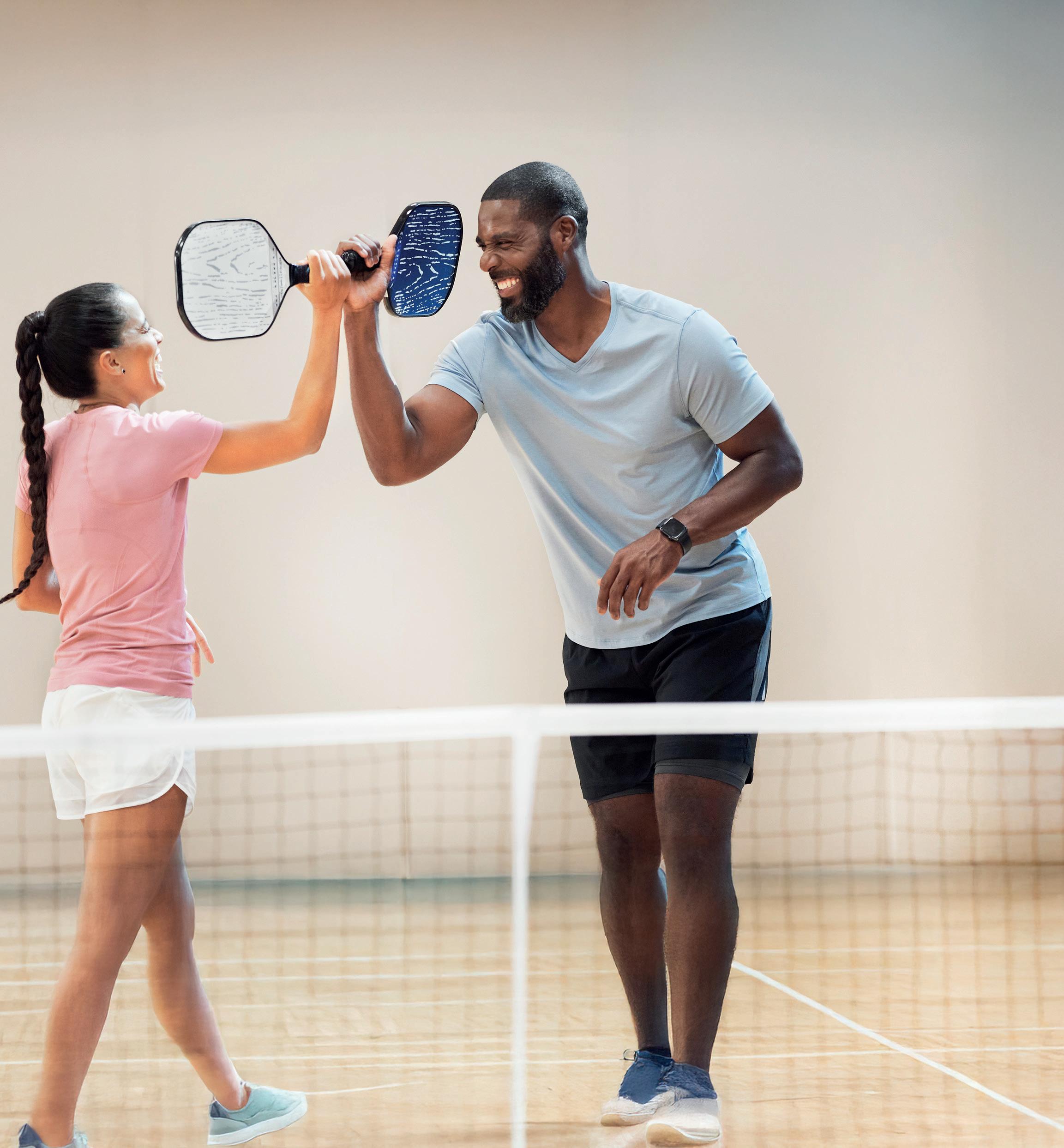
public health and automation and AI are being used to improve efficiency in the sector.
The market in Asia Pacific
The Asia Pacific market is highly diverse. WHO estimates South Asia’s physical inactivity at 48 per cent, while Oceania’s is just 14 per cent.
Australia’s penetration is around 23 per cent, with 48 per cent of adults active at least three times a week. Strength training is growing, particularly among older demographics.
New Zealand’s penetration stands at 21 per cent. Inflation and slow growth created headwinds in 2024, but operators responded with leaner models and targeted offerings.
Participation among older adults is increasing, though youth engagement has plateaued. Health inequalities persist among Māori, Pacific and rural communities.
In China, long-term pre-paid memberships are giving way to more flexible, affordable models. Outdoor, low-cost fitness alternatives remain popular, prompting gyms to innovate and justify pricing. The ageing population offers opportunities for senior-focused services.
India’s penetration is only 0.8 per cent but growing fast, with government initiatives, such as the Fit India Movement, driving awareness.
TOP TEN BY LOCATIONS

Purpose Brands
7,084 units Xponential Fitness 3,187 Planet Fitness 2,722 Curves 1,984 HILEFIT 1,800 RIZAP Group 1,782 Smart Fit 1,743 ZhongTian Group 1,593 Basic-Fit 1,575
F45 Training 1,500

Market leader Curefit reports strong growth in the luxe and boutique segments, fuelled by affluent, fitness-conscious consumers.
In Japan, Pilates is on the rise, and 24-hour self-service gyms represent the most promising segment. Consolidation and M&A activity are expected, alongside smaller, concept-driven facilities.
The market in Latin America Latin America offers vast potential but remains fragmented, with many clubs still collecting payments in cash. It is dominated by homegrown
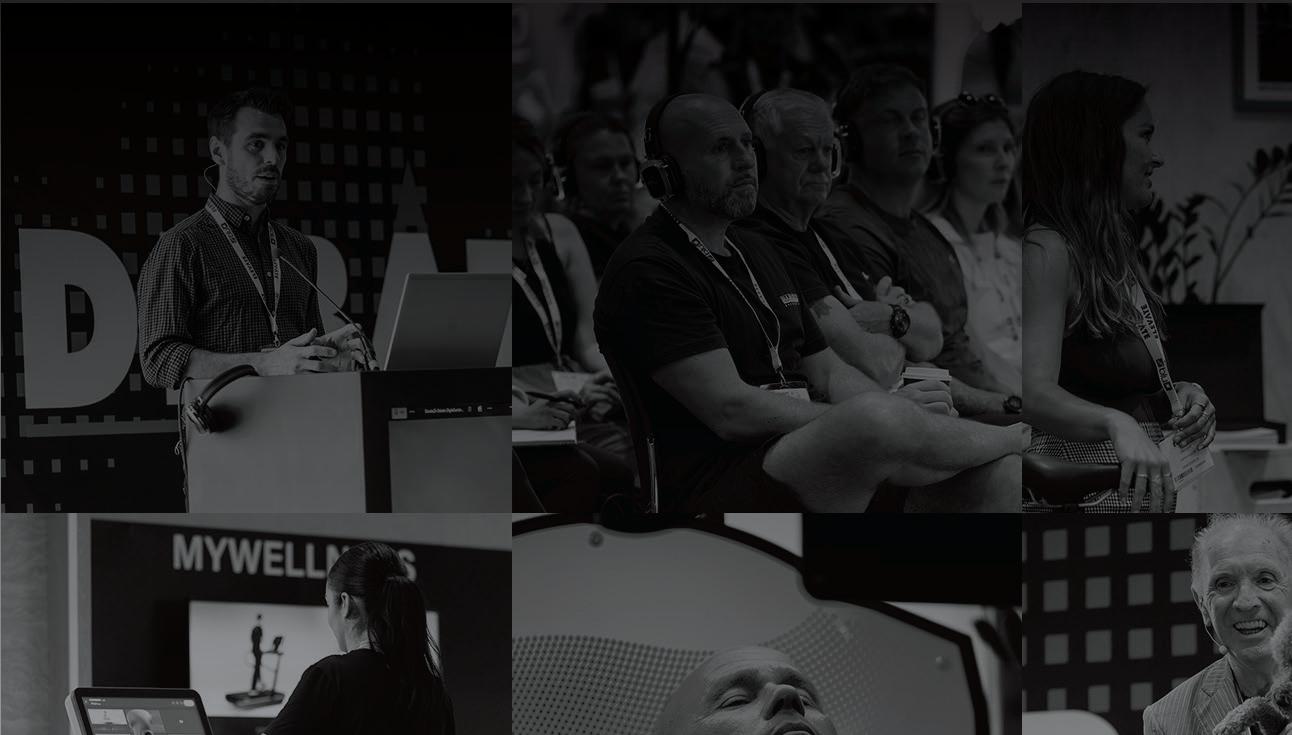




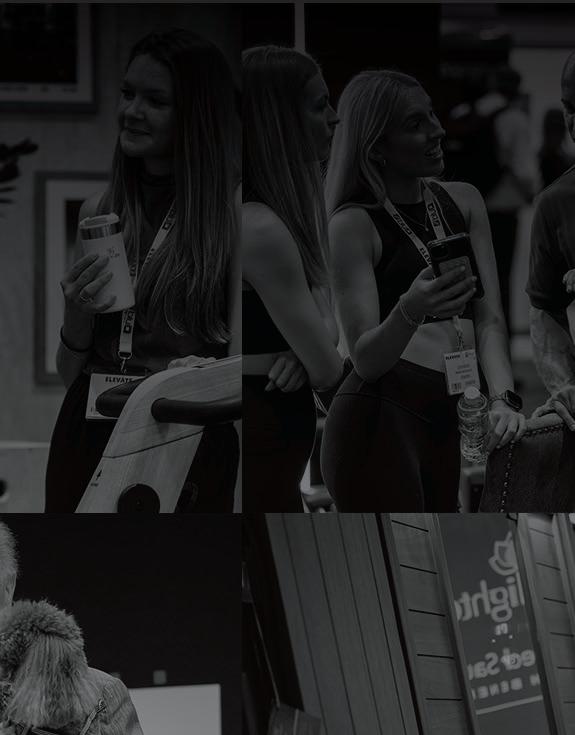
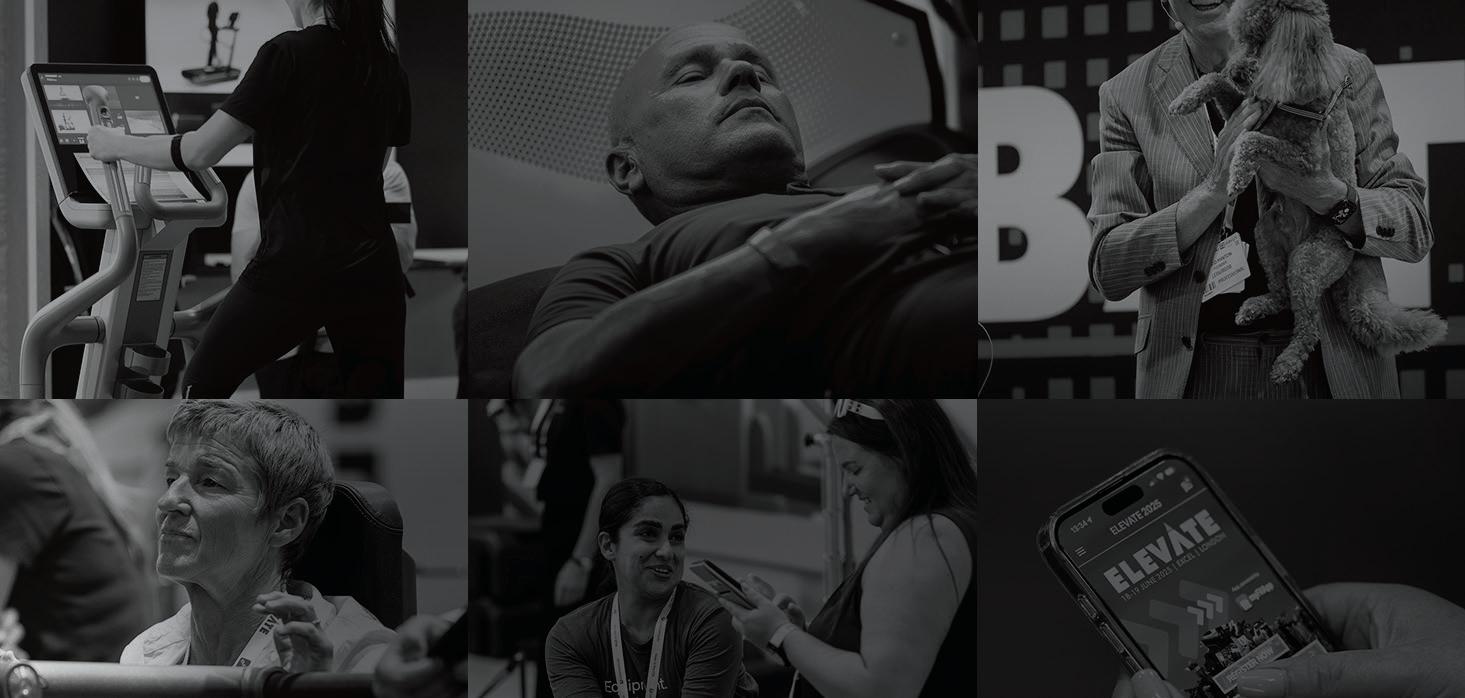




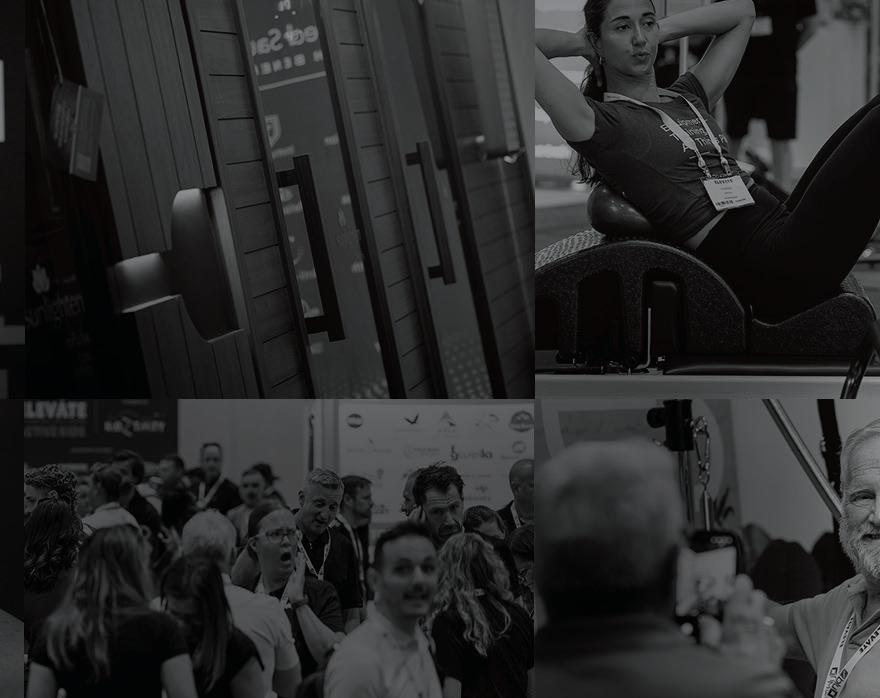

















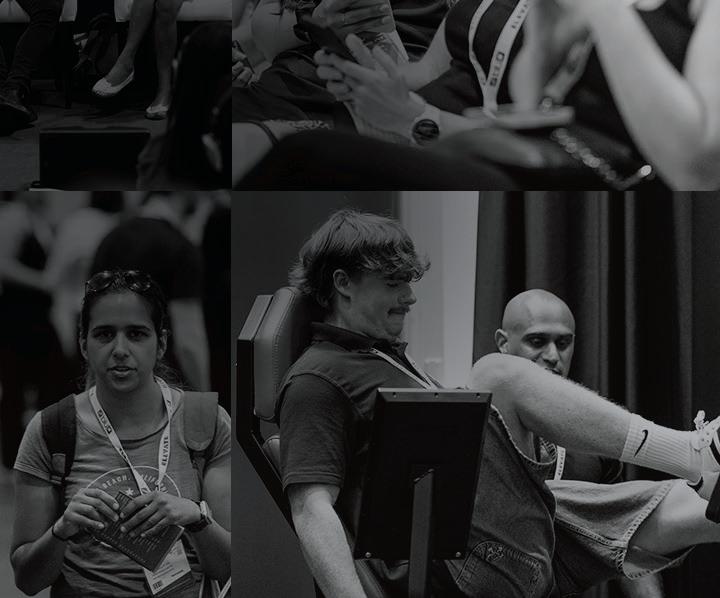
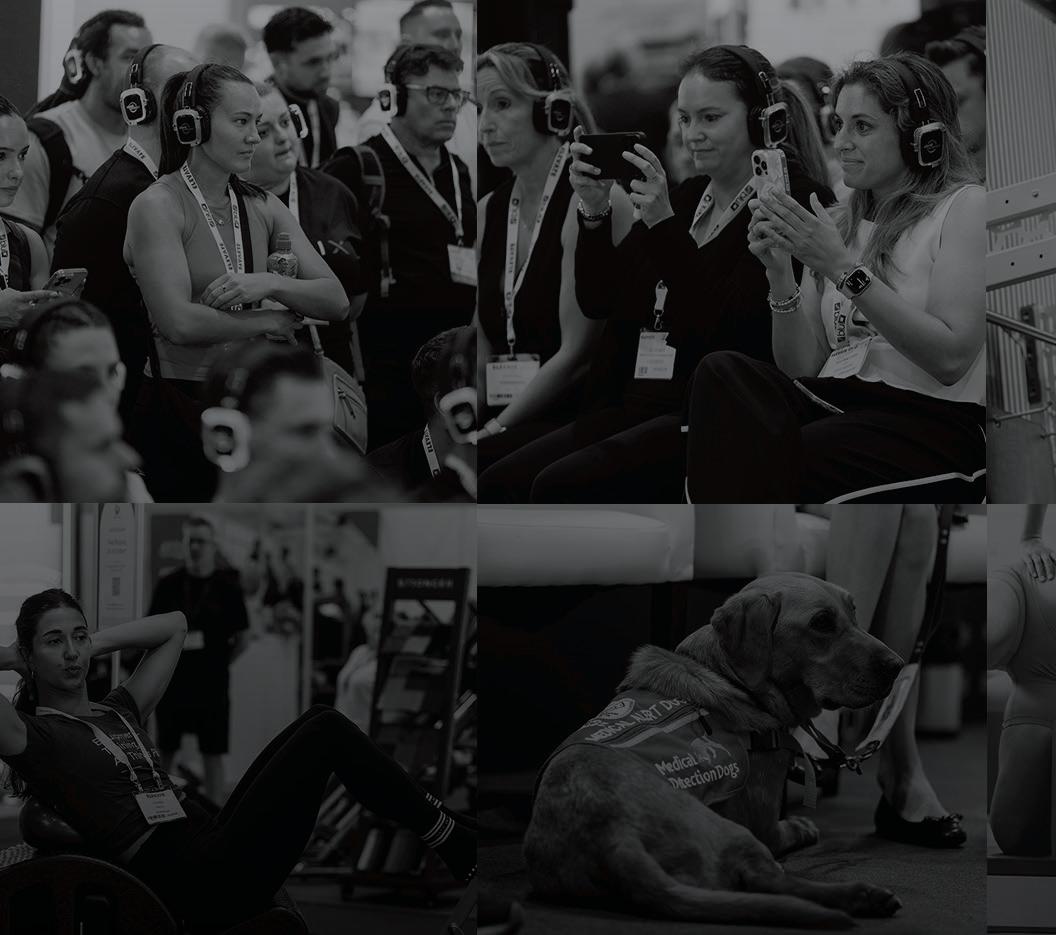


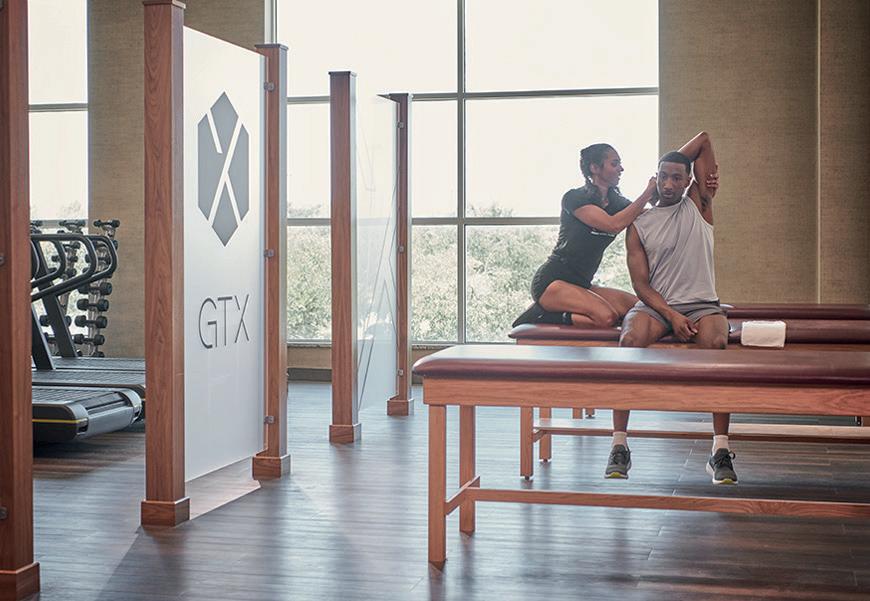

brands, led by Smart Fit with 4.8 million members across 15 countries, soon to open its first club outside the region in Morocco.
The fundamentals are strong, with rising health awareness and willingness to invest in wellbeing despite economic constraints. Operators must embrace technology and improve the member and employee experience to thrive.
market in the Middle East
With favourable economic conditions, health initiatives backed by government and rising interest in wellness, the Middle East shows strong potential.
Although WHO data shows high inactivity rates, fitness is growing rapidly in Saudi Arabia and the UAE. Leading operators include Leejam/Fitness Time, Holmes Place, Kun Sports, Saudi Sports Club Company, Gymnation, Armah Sports and Trifit. UK and US brands such as 9Round, F45, UFC Gym, Fitness First, World Gym, Powerhouse, Gold’s Gym, Purpose Brands and Xponential Fitness are expanding across the region.
In Saudi Arabia, competition is intensifying as local and international players scale up, with demand growing for quality strength and Pilates offerings.
In the UAE, bio-hacking, functional medicine and personalised services are trending, driven by expat demand. With economic stability and government support, the fitness industry is set to flourish.
The market in North America
North America continued to expand in 2024, with the US reaching a world-leading penetration rate of
24.9 per cent and Canada around 15.5 per cent. Both offer strong infrastructure and room for growth, although WHO data shows 30 per cent inactivity.
High-value, low-price gyms are leading, while boutique studios and premium concepts thrive through personalisation and community.
The Fitness Industry Council of Canada is prioritising fitness incentives, affordability and partnerships to tackle chronic disease, with new collaborations between operators, governments and healthcare.
In the US, hopes are high for national policies to support the sector through the Make America Healthy Again initiative, which positions wellness as a national priority. However, tariff uncertainties could reduce investment confidence.
Digital subscriptions have declined as consumers return to physical facilities. Demand for recovery is strong, and AI adoption continues to enhance operations and personalisation. With growing demand, a shift toward preventative health and investor confidence, the US fitness market is well-positioned for sustained growth.
The momentum of high-value, best-price models will continue globally. Community building will be critical for retention, AI integration will deepen, and wellness and longevity services will strengthen. International expansion will target low-penetration regions such as India, Japan and Saudi Arabia.
Success will depend on balancing traditional fitness with expanded wellness services Recovery
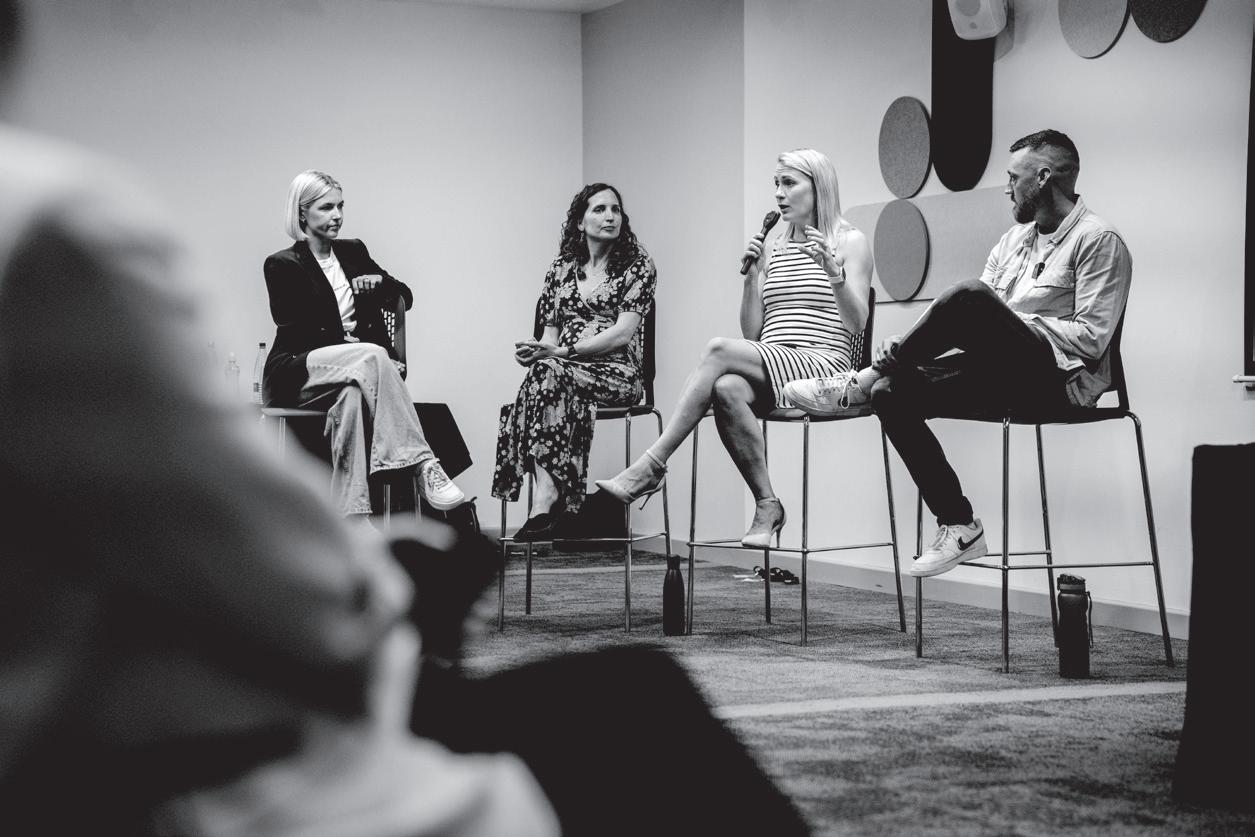
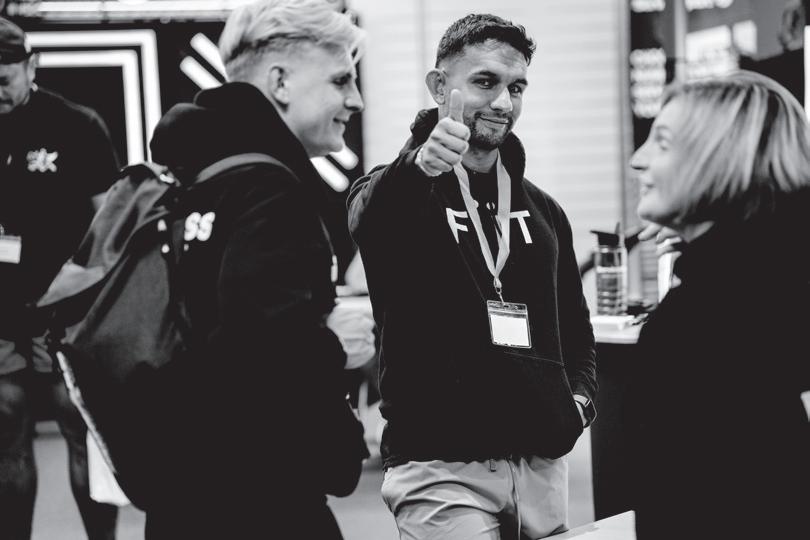

The report shows a fi nancially-strong fi tness sector

Corporate wellness is a significant opportunity and medical integration offers healthcare partnership potential

The Health and Fitness Association (HFA) has also released The 2025 Fitness Industry Benchmarking Report, which looks at operational and financial performance.
This is the HFA’s first detailed data survey and accompanying publication since 2019 and draws on confidential data from 175 companies, representing more than 17,000 fitness facilities in the US, Canada, EMEA, Latin America and APAC. The report highlights a sector that is both resilient and financially strong. Reporting operators posted median revenue growth of 9.9 per cent in 2024, alongside a median EBITDA margin of 23.6 per cent, signalling that most operators are growing while maintaining healthy
profitability. On the operating side, facilities averaged net membership growth of 5.5 per cent and retained two-thirds of their members.
“The 2025 Fitness Industry Benchmarking Report confirms what we’ve long known: fitness is good business,” said HFA president and CEO, Liz Clark. “The benchmarks in this report highlight not only the industry’s profitability but also the investments operators are making in facilities, services and member experiences to ensure sustainable growth.” ● More: www.healthandfitness.org
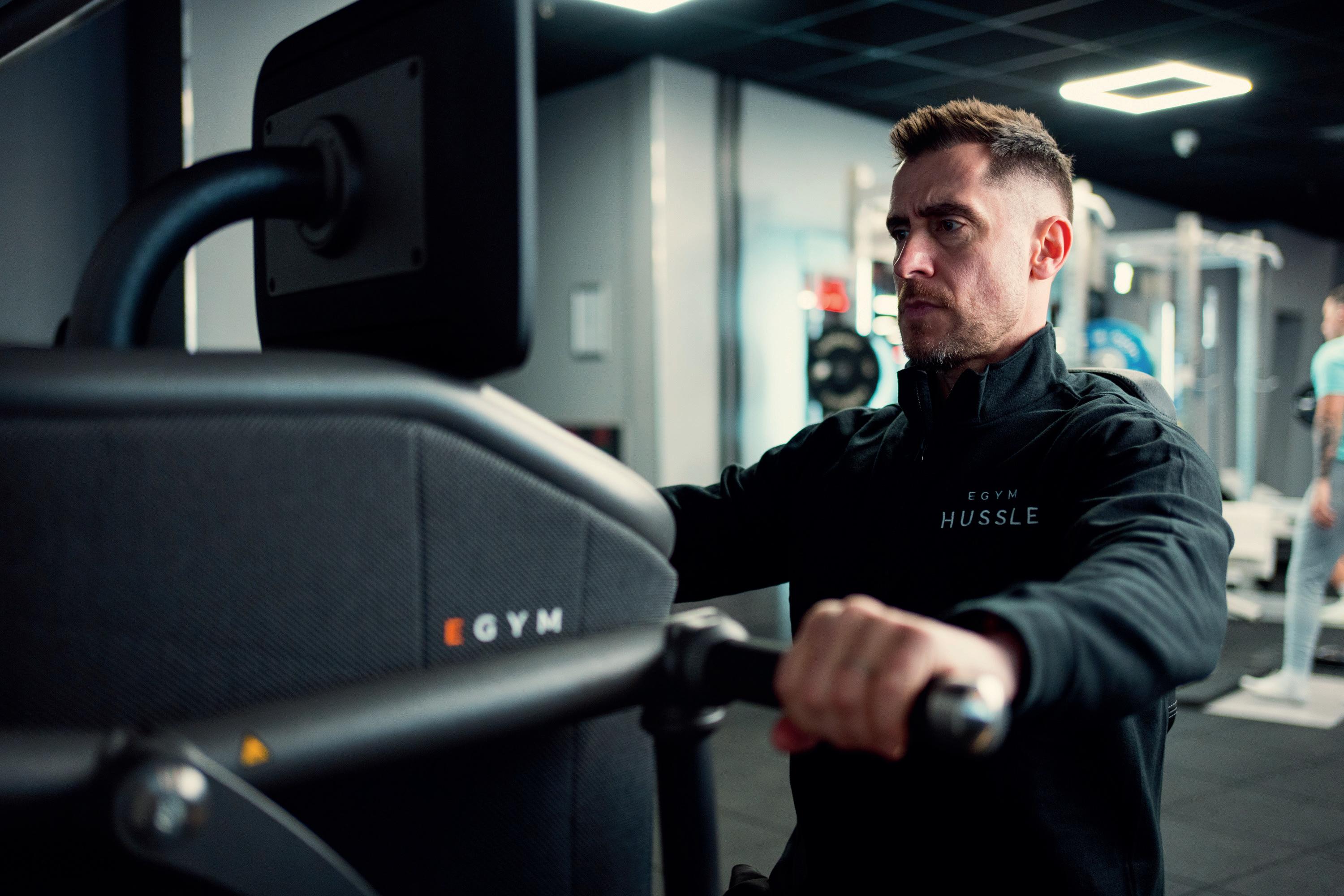










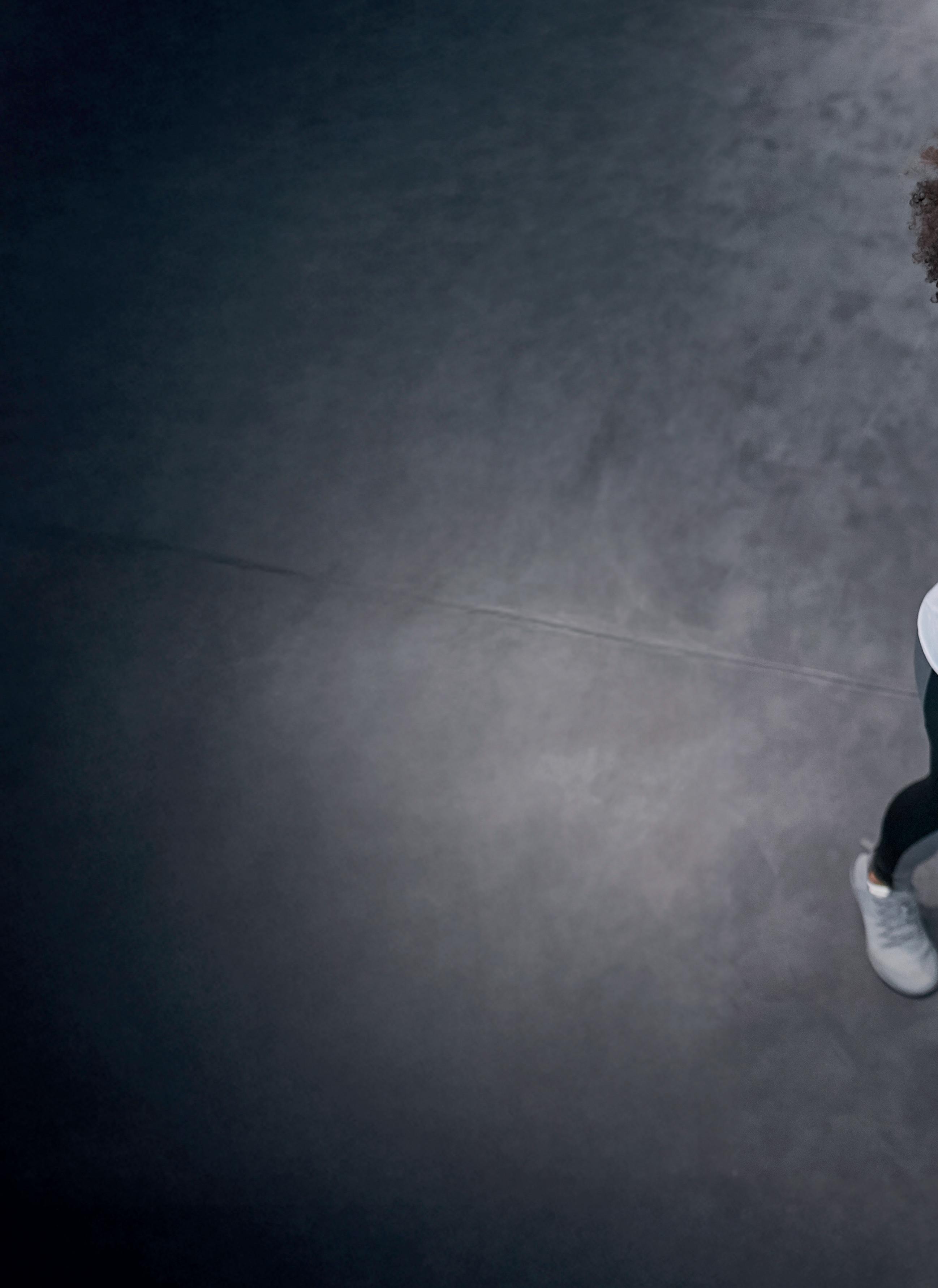
Regular exercise cuts the risk of illness and injury by over 30 per cent, while we help wellness-focused employers subsidise gym access
Jamie Ward, CEO, EGYM Hussle


Workplace wellness schemes now go well beyond gym discounts, with employees expecting wider wellbeing services, outdoor activities and apps, as Julie Cramer reports
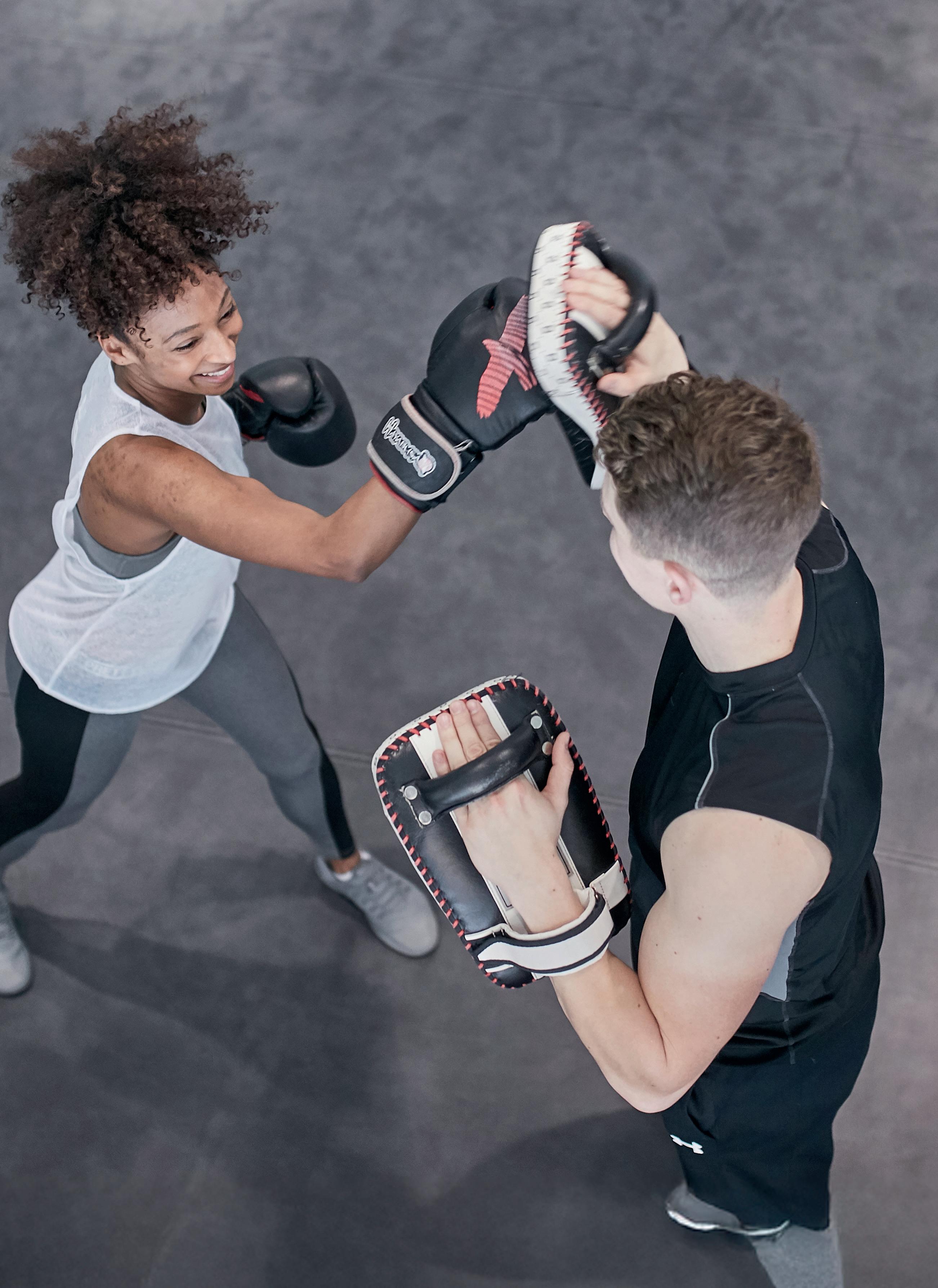

As part of the global EGYM Wellpass network, corporate customers see employee uptake rates as high as 25 per cent
Jamie Ward CEO
EGYM Hussle
Over the past decade, and especially post-pandemic, fitness habits have evolved.
In the past, one gym membership near the office often met employees’ needs, but hybrid and remote working now mean people want access to multiple gyms, pools and spas near home, work and while travelling.
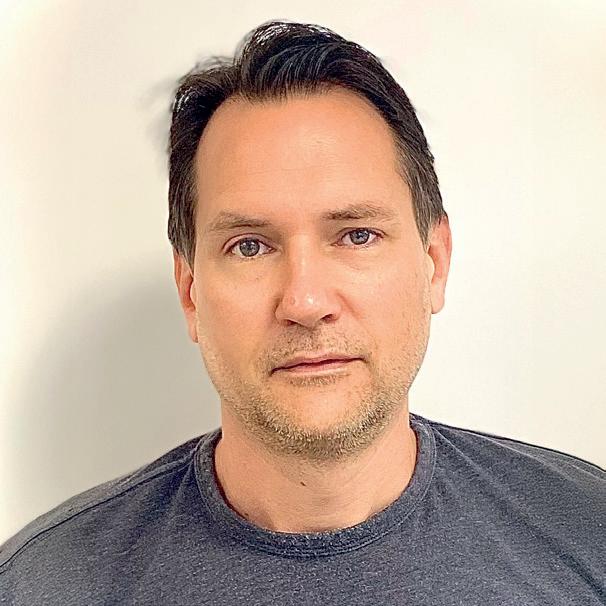
Workplace wellbeing has very much taken the ‘driving seat’, with many employees ranking its importance alongside salary when deciding where to work and many businesses are responding by enhancing their wellness support. However, fitness benefits must be inclusive and flexible in order to hit the mark.
The EGYM Hussle network addresses these needs by offering nationwide fitness access, helping
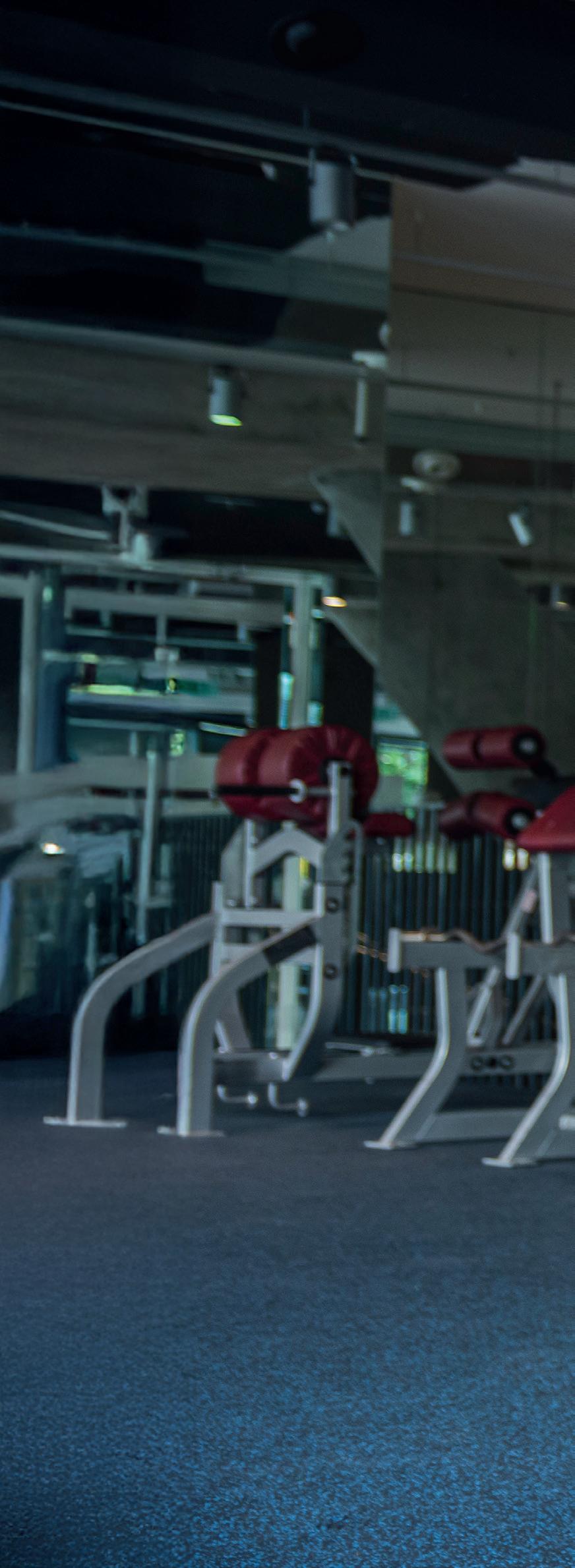
operators tap into the corporate wellness market, support workforce wellbeing and drive incremental revenue as part of a broader mission to improve the nation’s health.
Our corporate customers see employee uptake rates as high as 25 per cent. With UK gym market penetration at around 16 per cent, these figures show how the corporate market drives demand –especially among the newly emerging ‘prevention’ user demographic: people motivated to exercise for health, ageing well and workplace productivity. Compare this with traditional corporate gym memberships, which often see low
Corporate customers can see gym uptake as high as 25 per cent

engagement – typically just 3 to 4 per cent due to limitations in geographical reach, range of activities and pricing. We remove these barriers by offering flexible access to gyms, pools and spas across 94 per cent of UK postcode areas. The benefits are clear. Regular exercise cuts the risk of illness and injury by over 30 per cent, while we help employers subsidise gym access, enabling previously untapped audiences and revenue to enter our partner venues.
Why should health clubs work with you?
EGYM Hussle is a fitness marketplace, specialising in corporate fitness and B2B partnerships. By working with forward-thinking employers and healthcare providers who recognise the preventative wellbeing
benefits of exercise, we help provide health clubs with huge numbers of incremental corporate members, all with zero effort or investment.
The EGYM Hussle model requires B2B partners, such as employers and healthcare providers, to make a significant contribution towards the cost of gym membership. This generates significant incremental revenue for the thousands of clubs we partner with through high volumes of new corporate memberships.
How many operators work with you?
We work with 1,500 fitness UK venues, and 18,500 venues across Europe and the US. Our UK partners include Nuffield Health, Everyone Active and Fitness First, alongside the best independent gyms and studios. More: www.hussle.com
per cent of companies
Eamon Lloyd VP of Fitness Partners Europe
Wellhub F
itness remains a cornerstone of employee wellness, with 53 per cent of CEOs saying they offer gym membership subsidies or discounts (making it the most common perk). On-site gyms (39 per cent) and outdoor workouts (39 per cent) like walking and jogging clubs are also popular, proving that companies want to give employees a mix of flexible ways to stay active.
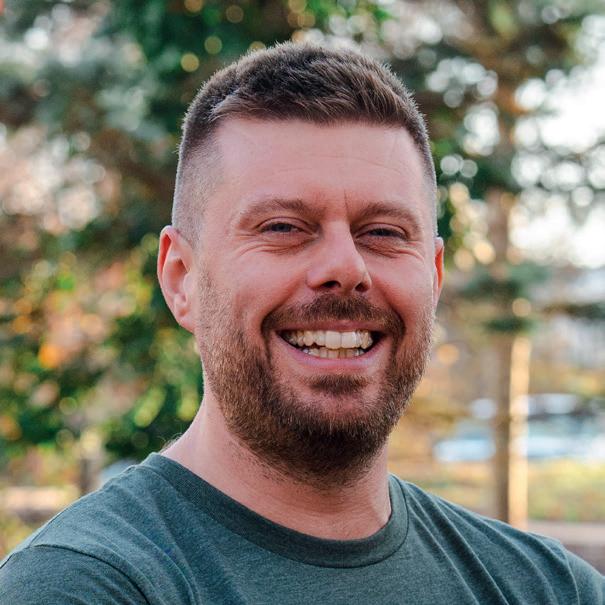
From a broader perspective, our Return on Wellbeing report revealed substantial benefits for companies. It showed that 67 per cent of CEOs noted a significant decrease in absenteeism, with an estimated saving of $2.73 for every dollar spent on absenteeism costs. Also, 47 per cent of CEOs reported that wellness programmes had an extremely significant impact on workforce productivity, leading to an overall 20 per cent increase in employee productivity in companies implementing these programmes.
We see that 35 per cent of CEOs report their programme offers fitness trackers and smartwatches to help employees monitor their health in real time. Gamification is also making waves, as 33 per cent of companies use fitness apps and corporate challenges to turn wellness into a fun, competitive experience. Where health club operators can step in is by understanding where they can deploy tech-driven, flexible fitness within their operation.
Tell us about the impact
Workplace wellness programmes have led to a significant improvement in employee wellbeing, as demonstrated by the results of Wellhub Worklife Wellness report. In particular, 59 per cent of participants reported an improvement in their mental wellbeing, primarily thanks to mindfulness practices. For nutrition, 47 per cent of employees who utilised wellness benefits maintained a good diet, compared to 29 per cent of those who did not. Also, participants were almost twice as likely to get quality rest (39 vs. 21 per cent). These results highlight the remarkably positive impact of such initiatives.
Why should health clubs work with you?
Wellhub acts as a corporate sales channel, connecting more than 80,000 fitness and wellness businesses around the world to 26,000-plus global employers. We provide a zero-cost solution for gyms and studios to acquire new, high-quality members, transforming the growing demand for employee wellness into an efficient revenue channel.
Our approach is to build valuable partnerships with operators over the long term, by bringing new members and driving engagement via a commercial model unique to each partner.
There are no registration fees to join the Wellhub network, and fair economic terms support each partner’s business goals.
How many operators work with you?
Wellhub works with over 80,000 fitness and wellness businesses worldwide, effectively supporting the growth of all segments of the market. Of these, more than 3,100 are present in the UK and Ireland, including Nuffield Health, 1Rebel and Everlast Gyms. More: www.wellhub.com

Participating employees report improvements in their mental wellbeing
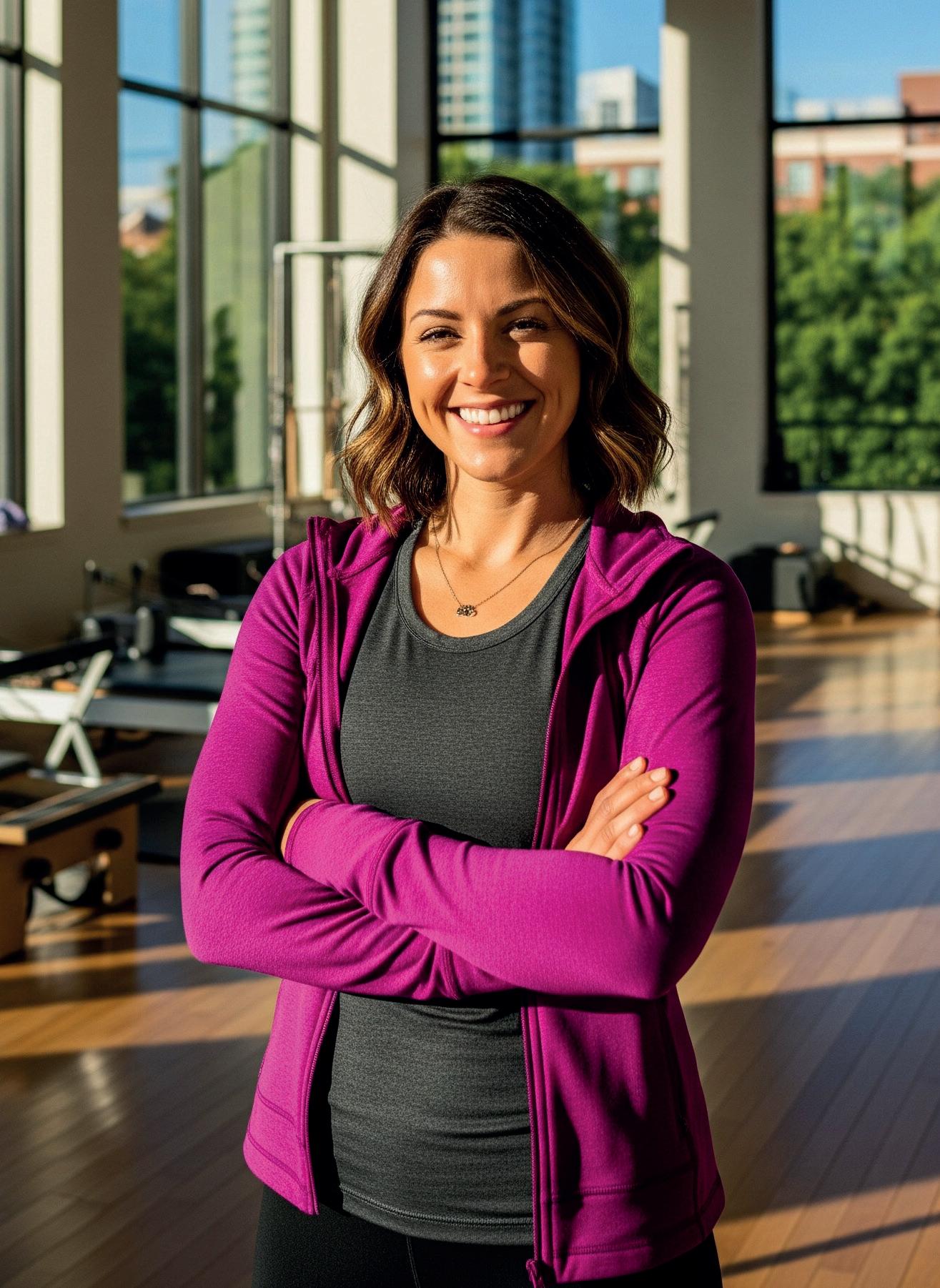
Jonathan Bedford Partnerships director
Pluxee UK
The main trend we’re seeing is a demand for choice and personalisation that goes beyond in-person gym discounts.
Around 60 per cent of people feel anxious about going to the gym for the first time (according to Muscle and Brawn), while 36 per cent feel they don’t have enough time to work out (according to PureGym).
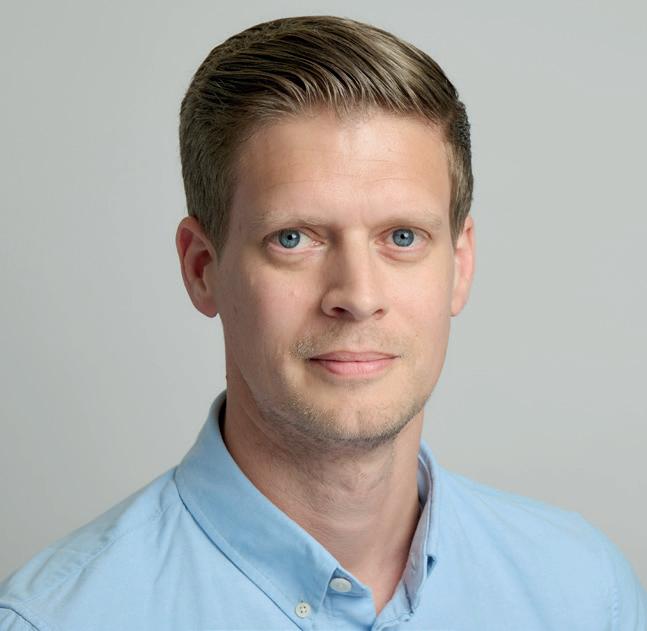
Hybrid and remote working are on the rise and choice of location, digital platforms and external bootcamps allow employees to exercise with convenience – a personal approach that improves uptake.
Studies also suggest that remote workers experience more loneliness and stress than office-based peers. Agile and flexible health clubs play a significant part in creating social connections and should embrace their role in enhancing emotional and mental wellbeing, alongside improving physical health.
Tell us about the impact
Experts believe mental illnesses, such as depression and anxiety, trigger 70 per cent of doctor visits and 85 per cent of serious illnesses. We’ve worked with a children’s hospice for over four years, providing gym discounts to employees working in palliative care, where there’s a high risk of burnout.
Physical activity is proven to reduce stress, and the hospice embedded an affordable, personal and inclusive employee benefit into its wellbeing strategy to reduce the risk of occupational burnout and improve physical and mental resilience. Employee uptake has consistently risen month on month.
Additionally, our Employee Assistance Programme (EAP) offers structured counselling sessions, ‘in-the-moment’ support, access to information specialists, app-based resources and crisis support. Over a 12-month period, a university client reported employees accessing their EAP

service 278 times, including structured counselling sessions. The mind and body are connected, and the clients who see employee wellbeing most improve offer solutions to support both.
Why should health clubs work with you?
We believe preventive wellbeing strategies are the key to increasing employee motivation, engagement and decreasing absenteeism. Our 5,000 global customers choose Pluxee because we live and breathe this ethos and partner with the best health clubs to make that a reality.
We connect our partners with a new and highly-engaged customer base. Implementing a sustainable growth strategy via targeted campaigns that make memberships more attractive, we unlock unrivalled access to large and diverse audiences.
How many operators work with you?
We work with operators across the UK and the Republic of Ireland. Exercise choice is key to benefits that actually work, so our operators cater to all preferences, such as bootcamps for nature lovers.
More: www.pluxee.uk

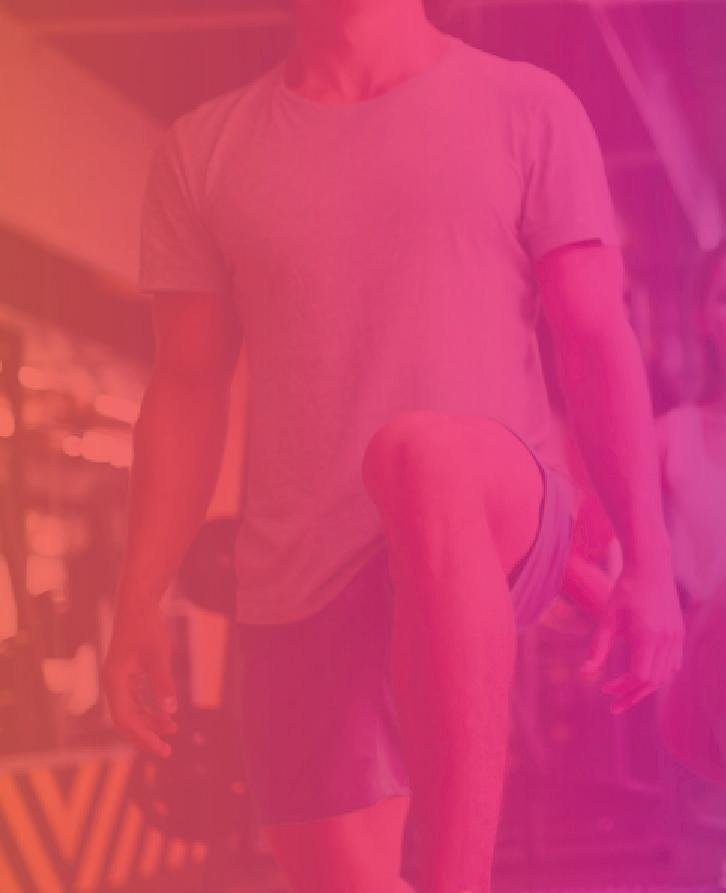



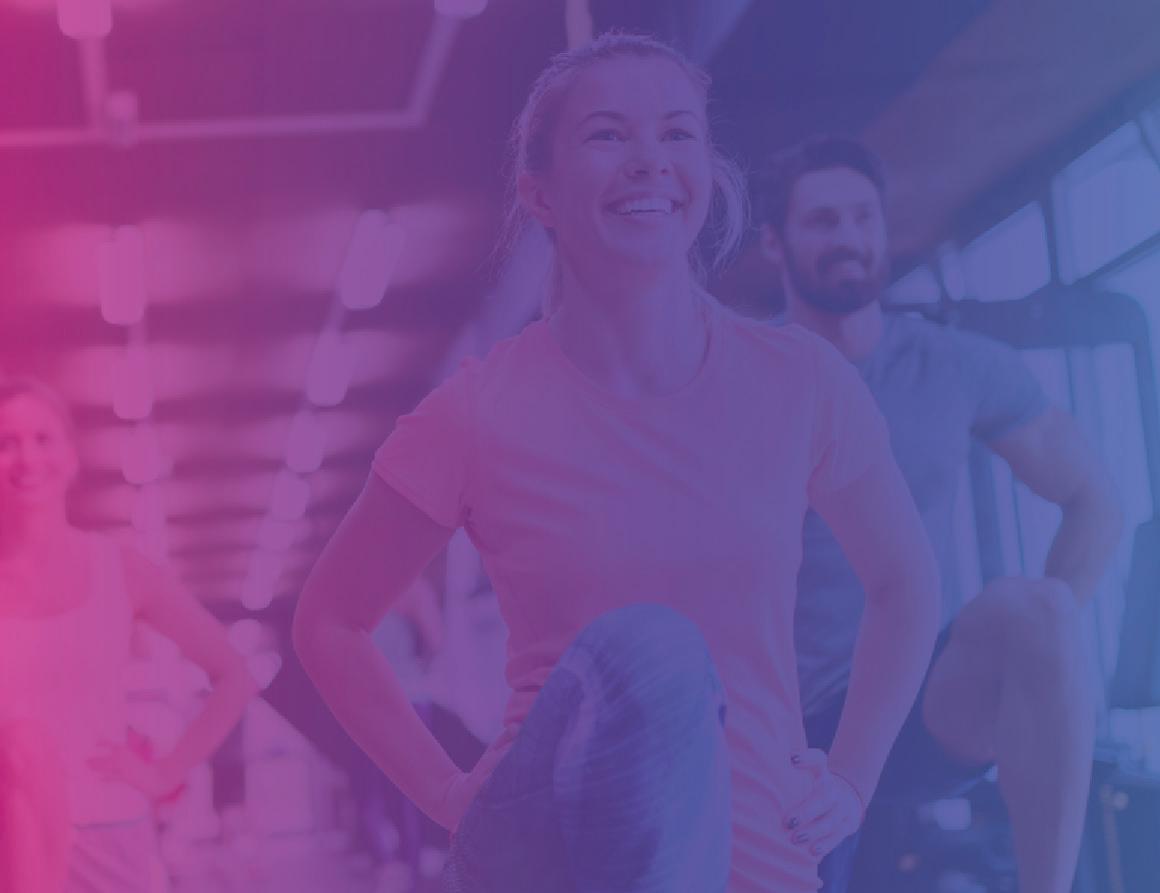


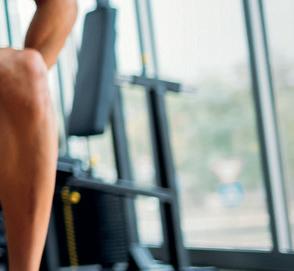

































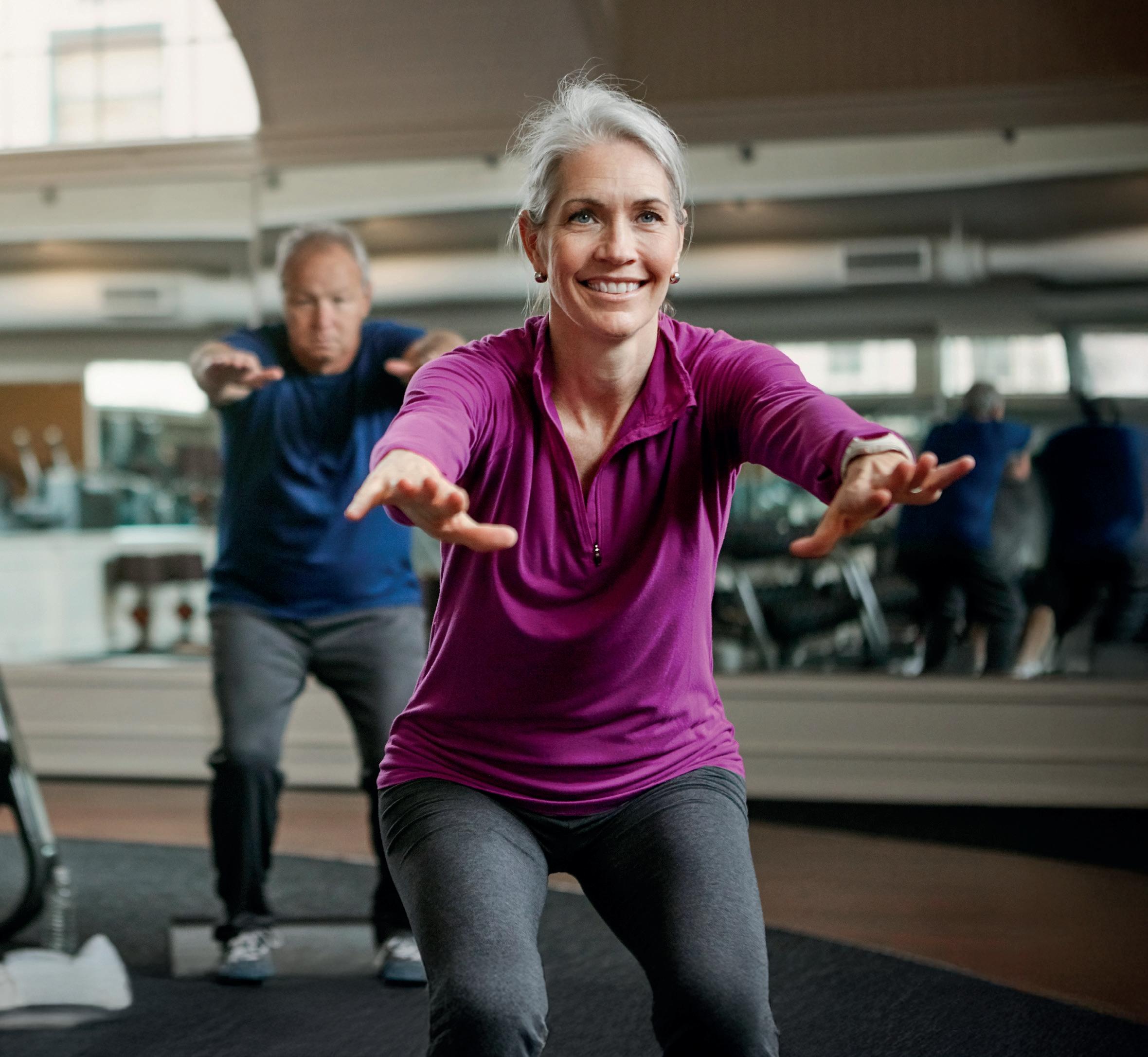
Emma Vivo Director Epassi
Workplace wellness is evolving. Employers are no longer focused solely on perks; they’re prioritising physical, mental and social wellbeing as core drivers of productivity and retention. This opens up powerful opportunities for health club operators to deliver meaningful impact.
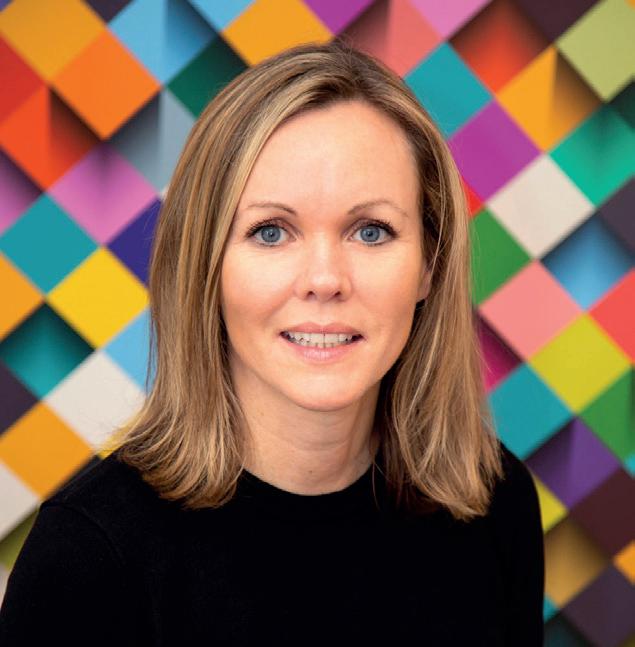
Fitness is now seen as a cornerstone of employee wellbeing, and companies are actively seeking partners who can make exercise more accessible, socially engaging and inclusive. Group classes, wellness challenges, and on-site or virtual events are gaining traction as tools to boost morale, grow team connection and support mental health.
Why should health clubs work with you?
Health clubs are uniquely positioned to deliver these experiences, offering not just facilities, but community, motivation and expertise.
Employers are prioritising physical, mental and social wellbeing as core drivers of productivity and retention
Partnering with us is free and designed to drive real growth. Clubs receive 12-month company-funded memberships and high quality leads at no cost, helping convert engaged users into loyal members. We also promote partners to corporate clients investing in wellbeing. In fact, 94 per cent of our partners gain new members through us. We actively promote a club’s brand to over 2,000 corporate clients and 11 million employees, driving a consistent flow of full-paying members. All we ask in return is their best corporate rate.
How many operators work with you?
We’re trusted by 90 per cent of the UK’s leading national gym operators, with relationships built on reliability, results and wellbeing. We also partner with hundreds of independent gyms, small-to-mid-sized operators and local authority leisure centres, creating one of the country’s most comprehensive fitness networks More: www.epassi.co.uk
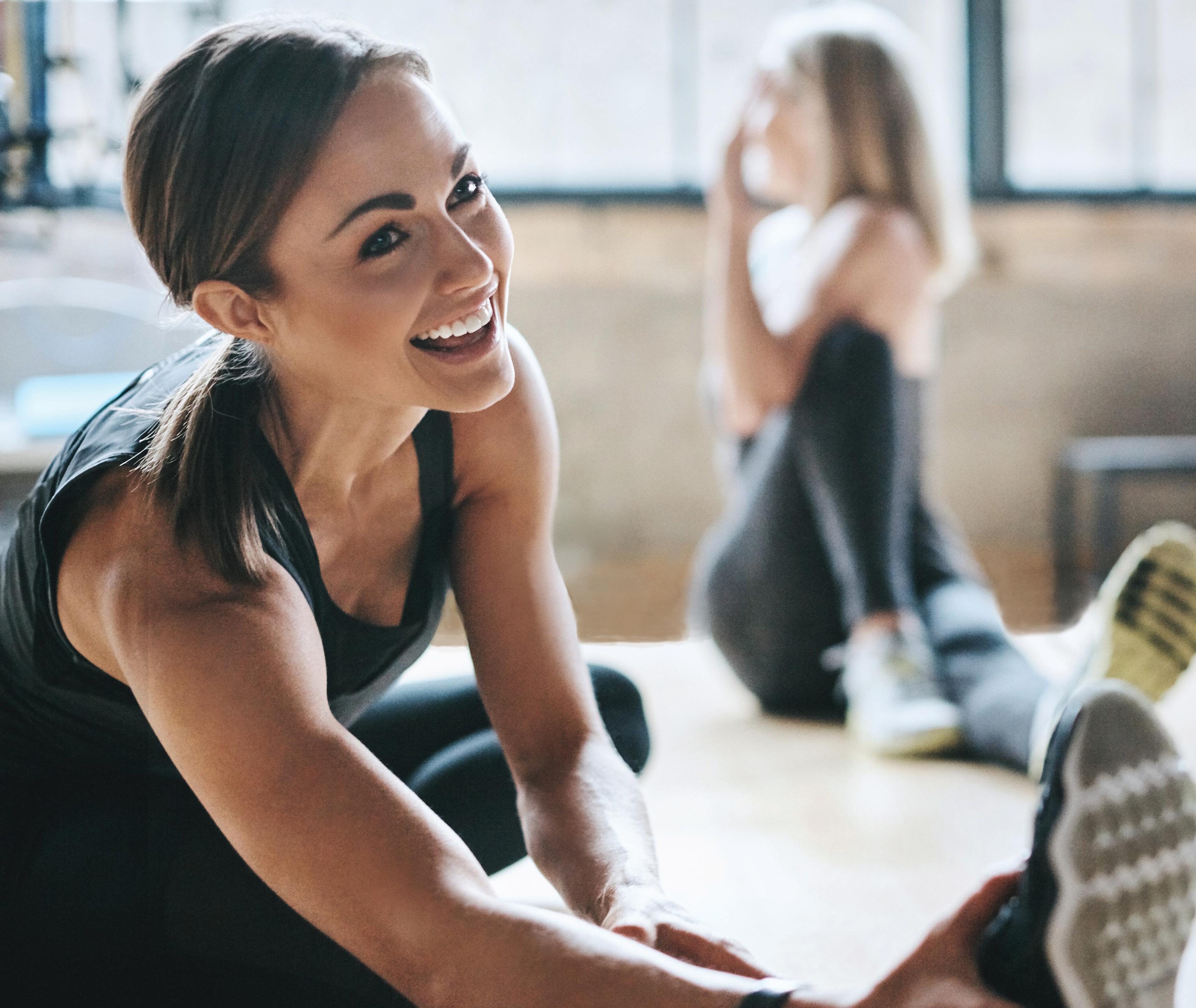


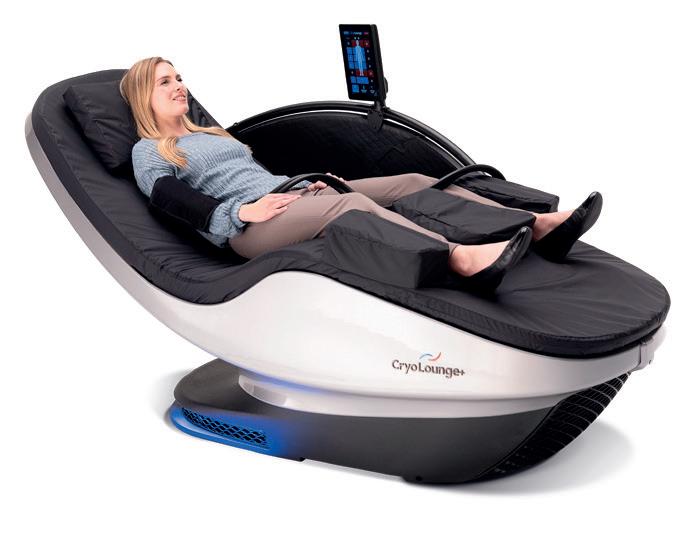

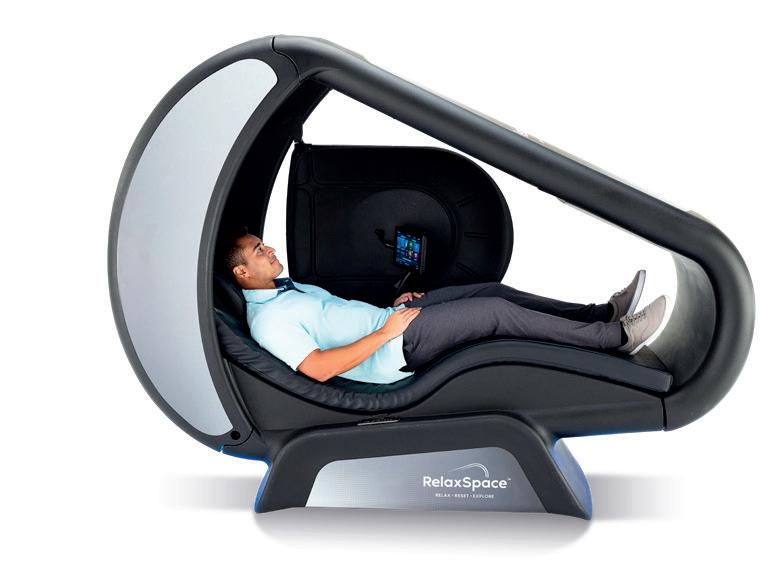

Matrix Fitness examines how progressive programming, empowered instructors and a pivot toward prevention are driving deeper member engagements
The modern gym floor is evolving and not just in aesthetic terms. Across the UK, more operators are rethinking how they serve ageing populations, deconditioned members and communities increasingly disconnected from traditional fitness offers. Under the guidance of group and functional training specialist Lynn Wilson, Matrix Fitness is leading that evolution with a fresh approach that blends intelligent space design, coaching support and adaptable programming to meet today’s wellbeing challenges.
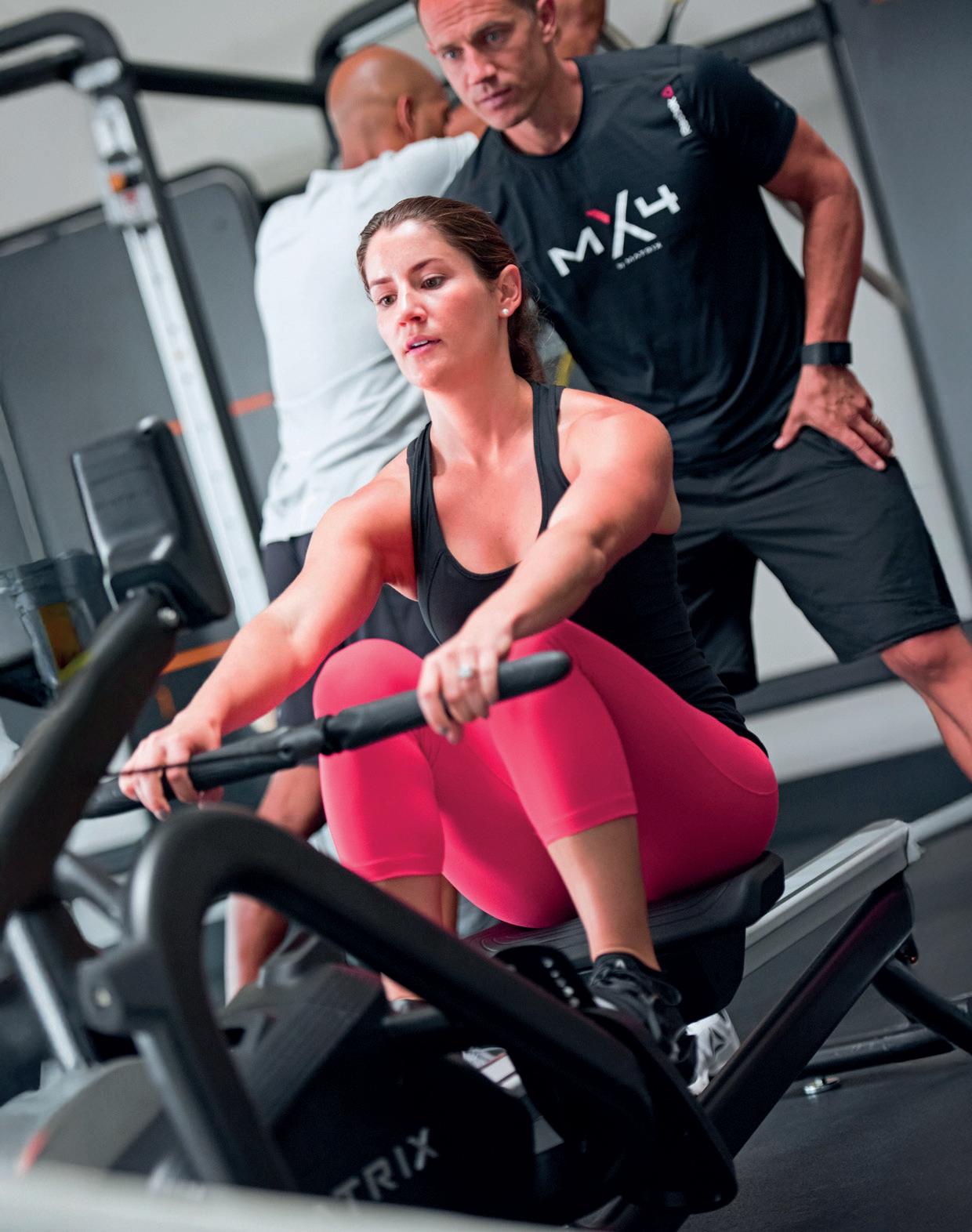
Staff
“There’s a shift happening,” Wilson explains. “Operators are trying to reach new audiences –older adults, inactive members, those returning to exercise, but they’re doing it with the same equipment, class formats and coaching models that were designed for performance, not progression. It’s time to rethink the experience.”


Wilson’s insight comes from hands-on work with operators across sectors, from leisure trusts to hospitality brands, helping them unlock the true potential of small group training and functional fitness zones. Through initiatives such as MX4 Active, Matrix has demonstrated how programming tailored to clarity, repetition and confidence-building creates meaningful change, both in how members engage and how clubs perform.
“The goal isn’t scaled-back intensity,” she says. “It’s a completely different experience, one that meets people where they are.”
Behind the scenes, a quiet staffing shift has created new training needs. Many operators are relying more on gym instructors and personal trainers to deliver group sessions, not traditionally their comfort zone. Studio based Exercise-to-Music qualified instructors remain vital, Wilson stresses, but many small group training spaces now rely on Level 2 or Level 3 staff stepping into these roles without the necessary tools or confidence.
To support this, Matrix has worked with major brands across the sector to progress their trainers from working one-on-one with clients to having expertise as class leaders via a four-hour workshop that’s already been rolled out with major brands across sectors. “It’s about helping instructors

understand the flow of a session, how to use music effectively, how to coach for engagement,” Wilson explains. “These aren’t just soft skills, they’re critical to success in today’s group environments.”
Wilson is also seeing a transformation in how operators approach gym design. “We’re helping clients get more from every square metre, especially in sites without dedicated rigs or studios,” she notes. “Functional zones are being carved out in clever ways and with the right programming and coaching support, these spaces can become the heart of the member experience.”
Matrix acts not only as an equipment supplier, but also as a strategic partner. Advising on everything from layout and user flow to instructor development and long-term programming. It’s this consultative approach that helps operators build facilities that serve communities, not just memberships.
As the public health landscape evolves, gyms are increasingly seen as part of the wider health solution. With NHS and government focus on prevention, social prescribing and physical activity, facilities that align with this agenda are better positioned to thrive.
Operators are trying to reach new audiences but doing it with the same equipment, class formats and coaching models. It’s time to rethink the experience.
Being seen and supported in a fitness space is powerful – and it builds long-term engagement
Lynn Wilson

“This is about more than just retention,” says Wilson. “It’s about impact. When clubs deliver accessible, meaningful sessions, they don’t just support wellbeing, they contribute to a preventative health strategy.”
Matrix is working closely with operators involved in GP referral, social prescribing and community activation, helping align gym provision with NHS goals.
At the heart of this strategy is small group training, the format that links programming, people and place. “SGT isn’t just a product,” Wilson concludes. “It’s a delivery model that creates structure, confidence and connection. For many members, it’s the first time they feel seen and supported in a fitness space. That’s powerful – and it builds long-term engagement.” ●
More: https://uk.matrixfitness.com/eng


As my mother was fond of saying, ‘if you don’t have your health, you have nothing’
We’re in the middle of a second renaissance driven by a growing focus on health policy and more educated consumers, says David Minton
The Renaissance began in Florence in the 15th century and quickly spread across Europe, marking the transition between the middle-ages and modernity. It was a period of great social change driven by power – best exemplified by the House of Medici – and also by increased awareness of nature and humanistic learning. Painting, sculpture, architecture, music, literature and individualism all blossomed.
The 21st century Renaissance will be driven by Gen Alpha, the first generation to be born entirely in the new century.
During their lifetime, they’ll see parallel worlds collide synergistically, with health, nutrition and tech flourishing and change driven by those who see no boundaries.
All this comes against a backdrop of concern about nature and climate. Gen Zers have put both of these high on the geopolitical agenda, pointing out the need to avoid environmental tipping points and this baton will be taken up by Gen Alpha.
Members of this 21st century generation realise they can’t take generational progress for granted and their mission will be to achieve good personal health and build stronger communities, so improving the health of nations and the planet. The power of community is increasingly being
recognised – in the US, a century-long study tells us the best predictor of longevity and happiness is the quality of people’s social capital.
Blue Zones acknowledge this impact and UNESCO has extended the definition of the Mediterranean diet to categorise it as a holistic entity – fifty per cent healthy diet and fifty per cent the social capital elements of shopping, preparing, cooking and eating together.
The longevity universe
For the last two years I’ve toured the Health Optimisation Summit with Neil King from Longevity Network to experience a weekend of biohacking, nutrition, longevity, functional and preventative medicines and health technologies that are shifting the optimal health paradigm.
King deems this to be a parallel universe and the health and fitness industry isn’t changing fast enough to keep up with this pace of innovation. This Summit was just the
Gen Alpha will see the worlds of health, nutrition and tech colliding




The 21st century Renaissance will be driven by Gen Alpha, the first generation to be born entirely in the new century
jolt we needed to drive new thinking. Nutrition is another parallel world the health and fitness sector needs to embrace.
Katie Lewis from Brand Chatter also sent me Dr Robert Lustig’s book Fat Chance and I introduced Katie to my book of the year, Dark Matter by Dr James Kinross. These are two seminal works on – respectively – hidden sugar and the microbiome. Both essential for a greater understanding of how what you consume affects your body, mind and longevity.
Health is everything
King Charles mentioned community and health more than once in his last Christmas message and both he and Catherine, Princess of Wales, are certain to be paying more attention to their own self-care than before their cancer treatments. Charles also talked about the power of ‘repairing’ and ‘listening’. From Royalty to the wider population, no matter how much wealth you have, without your health, it’s worthless. Or, as my mother was fond of saying, “if you don’t have your health, you have nothing”. >>>
David Minton has embarked on a journey to optimum health, highlighting the potential for self-care and personal responsibility
AUK Parliamentary Committee on End of Life Care estimated the cost of delivering this at between £1.8 and £4.5 billion per annum and after helping extend my mother’s life of independence until she was 97 and my father-in-law to 101, I know firsthand how personal investment in health saves the government time and money. Here’s my personal journey from anxiety to aspiration so far.
Patterns of physical activity, strength, power, speed, acceleration, flexibility, agility and functional movement have a direct effect on bone density, mental ability, V02 max and, therefore, active ageing.
I have to thank Richard Brennan from Hoste Health for this insight as I work towards my goal of maintaining healthy movement. Hugely knowledgeable both in the medical and exercise worlds. Brennan tells me that 77 of the new Clinical Exercise Physiologists being appointed by the health service have been certified, with a further 200 on the way. They start on the National Health Service Grade 5 pay scale.
>>> As the health service forges ahead in training people to this high-level of expertise, what’s the fitness certification equivalent?
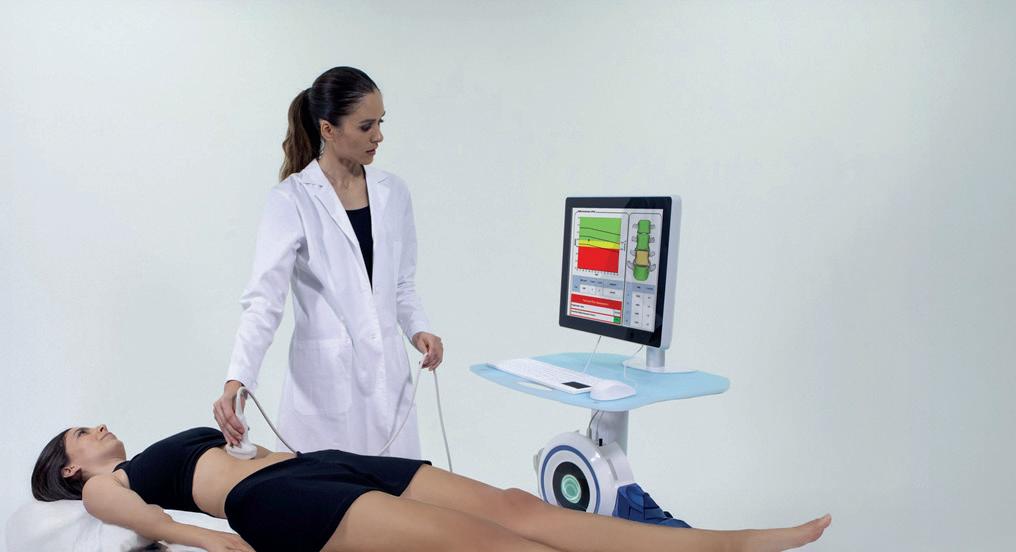

Gary Rhodes and Iain Murray at Performance Health Systems (PHS) introduced me to Steven Bartlett and Vishal Amin at Until in London, where PHS did my bone screening using the portable Echolight diagnostic system (www.echolightmedical.com).
I now know my bone density T score is -1.7 and my fragility scores for hips is 52.1 while my spine is an age-defying 39.8. To help improve these scores I’m working on ‘force’ – pull, push and twist to help in the development of stronger bones. Thankfully my fracture risk assessment is low.
A look at National Joint Registry data and current costs shows that bone screening could save the UK’s health service an estimated £5.6 billion over the next ten years.
>>> Do you know your T Score?



Do you know your PSA? If you’re over 50 you should
Minton goes to Repose in London for antigravity fi tness
Cycling and sitting at computers are not posture-friendly so supported movements have become part of my programme.
Aerial fitness by Antigravity has been pushing my personal boundaries in the safe hands of Nuno Campos at Repose in Kensington High Street.
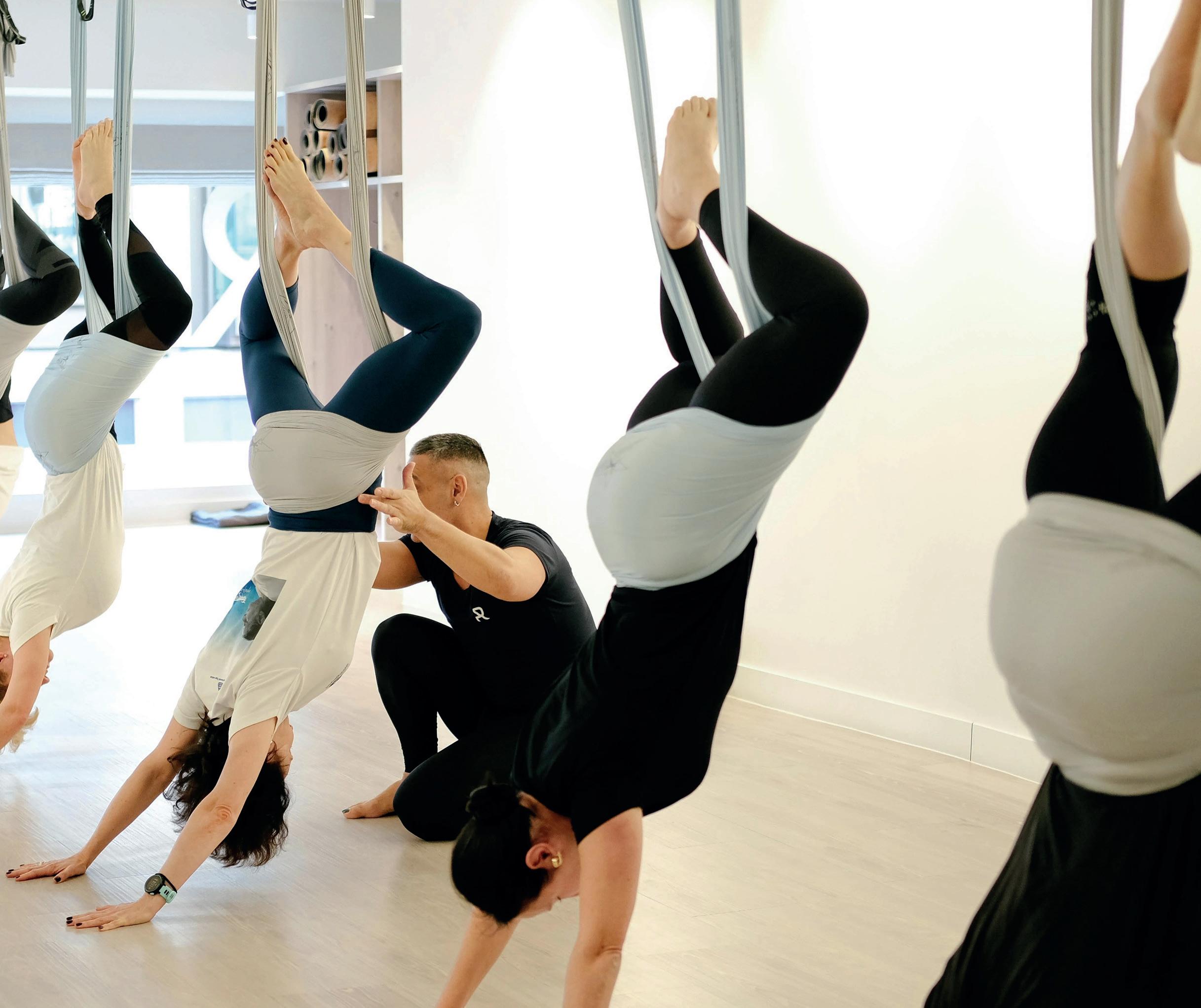
One of my cycling buddies runs the John Black Foundation which was established to support medical research into prostate cancer. He recommends during our annual blood tests that we ask for a PSA (Prostate-Specific Antigen) number.
Although breast, bowl, and cervical cancers all have screening programmes, prostate cancer does not and this simple blood test could save the NHS over £1 billion over five years.
Two sporting celebrities, Garry Lineker and Olympian cyclist Sir Chris Hoy, 48 – who went public recently with his terminal prostate cancer diagnosis –have both called for routine testing to be introduced.
My annual PSA numbers have been 2.0, 2.1, 1.7, 1.9, which are all low for my age.
>>> Do you know your PSA? If you’re over 50 you should.
Antigravity has been educating trainers on aerial yoga and fitness since 2007 and as I discovered, it’s great for stretching muscles while supporting the body.
Although a late adopter of Pilates I now practice reformer one-to-one with Lucy Raetz-O’Connell. I’m an avid convert to the precise movements and muscle engagement. No wonder it’s one of the fastest growing studio concepts in the world.
In the past twelve months I’ve also experienced reformer at 180 The Strand, The Island, Cat and Cow, Sentire, Pilates Lab, Ayla Recoleta, Level Out, Body Lab and Third Space, with all this rounded out by a trip to Hitchin, UK for the launch of reformer at Everyone Active and a flight to Berlin for Les Mills Live where I took three of the six new Les Mills’ Pilates programmes.
>>> Do you include postural health in your routine? If not, I highly recommend it.
Ziva has been quietly growing its presence in the European market, delivering reliable, cost-effective kit that’s made in-house
In today’s fast-moving fitness industry, finding long-lasting, great-looking, high-quality equipment is hard; getting it delivered quickly is even harder; and knowing you’ll get fast, knowledgeable service after you buy it can feel impossible.
At Ziva, we’re committed to making the impossible happen. We can do it because we’ve built our own infrastructure from the ground up to supply fitness facilities of all kinds, from some of the industry’s largest gym chains, to small, boutique studios, to personal home gyms.
But what makes Ziva different? We do everything ourselves – design, production and even warehousing are all done in-house and where most of our
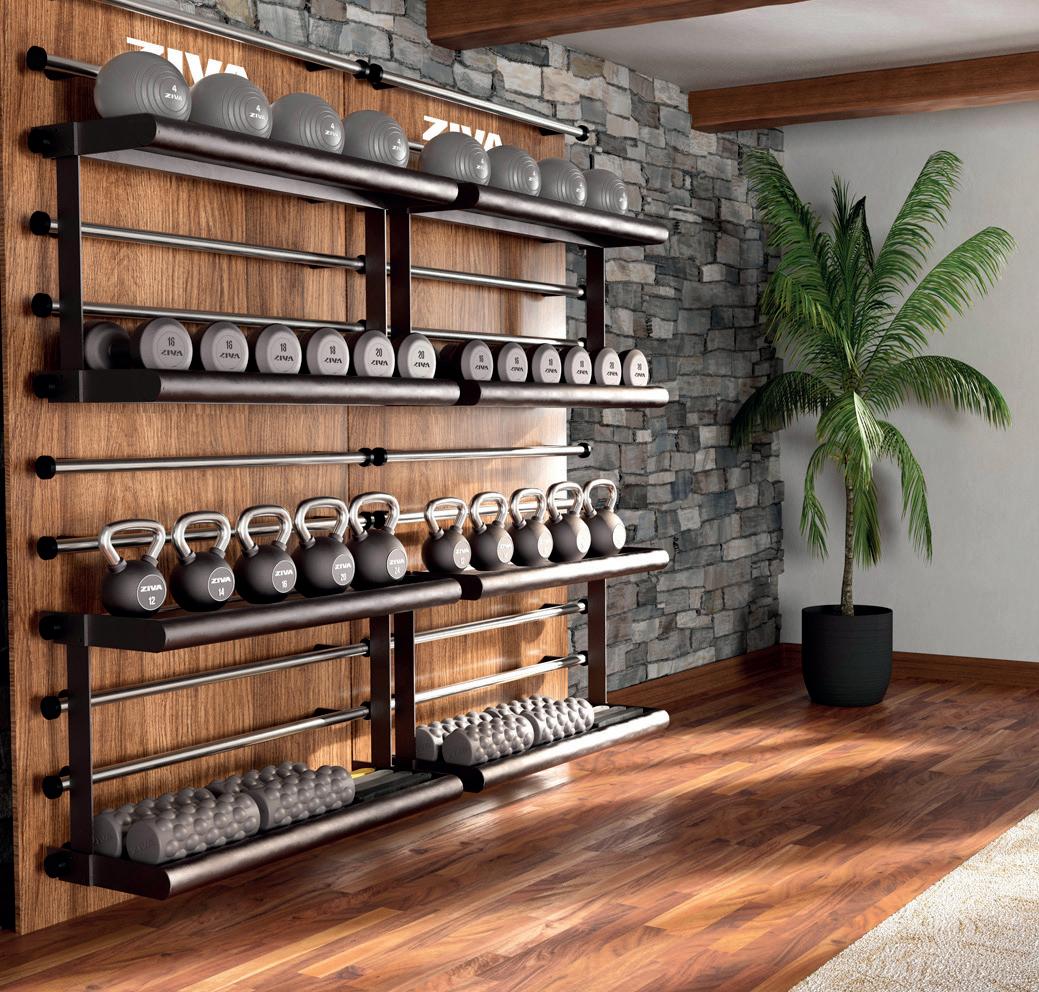
competitors rely on contract manufacturing, we personally oversee every stage of production –from raw material selection to final inspection – to guarantee our customers get equipment that’s built to last and feels consistent on every rep.
It’s because of this that we’re trusted by our customers and have grown into a business with over US$70 million a year in global sales and because we do it all ourselves, we can be as agile and responsive as this fast-moving industry demands.
Where others are limited by their partners, Ziva consistently innovates and improves without having to wait on anyone else. We bring new products to market, invent longer-lasting materials, make our products and operations more sustainable and find smarter ways to raise the bar faster.

What may matter more to buyers, however, is what our agility means for brand- and spacespecific product customisation. The fact that we design and manufacture on our own means we can go from logo file to completed custom set of dumbbells, grip discs, or other equipment in days instead of months. And when a gym owner needs a custom rig tailored to fit its unique space or its members’ special training style, we can go from specs to finished product in just a few weeks.
Our logistics infrastructure is as robust and responsive as our design and manufacturing. From a central European distribution centre with over 7,500sq m of storage capacity located on the
Ziva now has a distribution warehouse in Europe, enabling rapid shipping
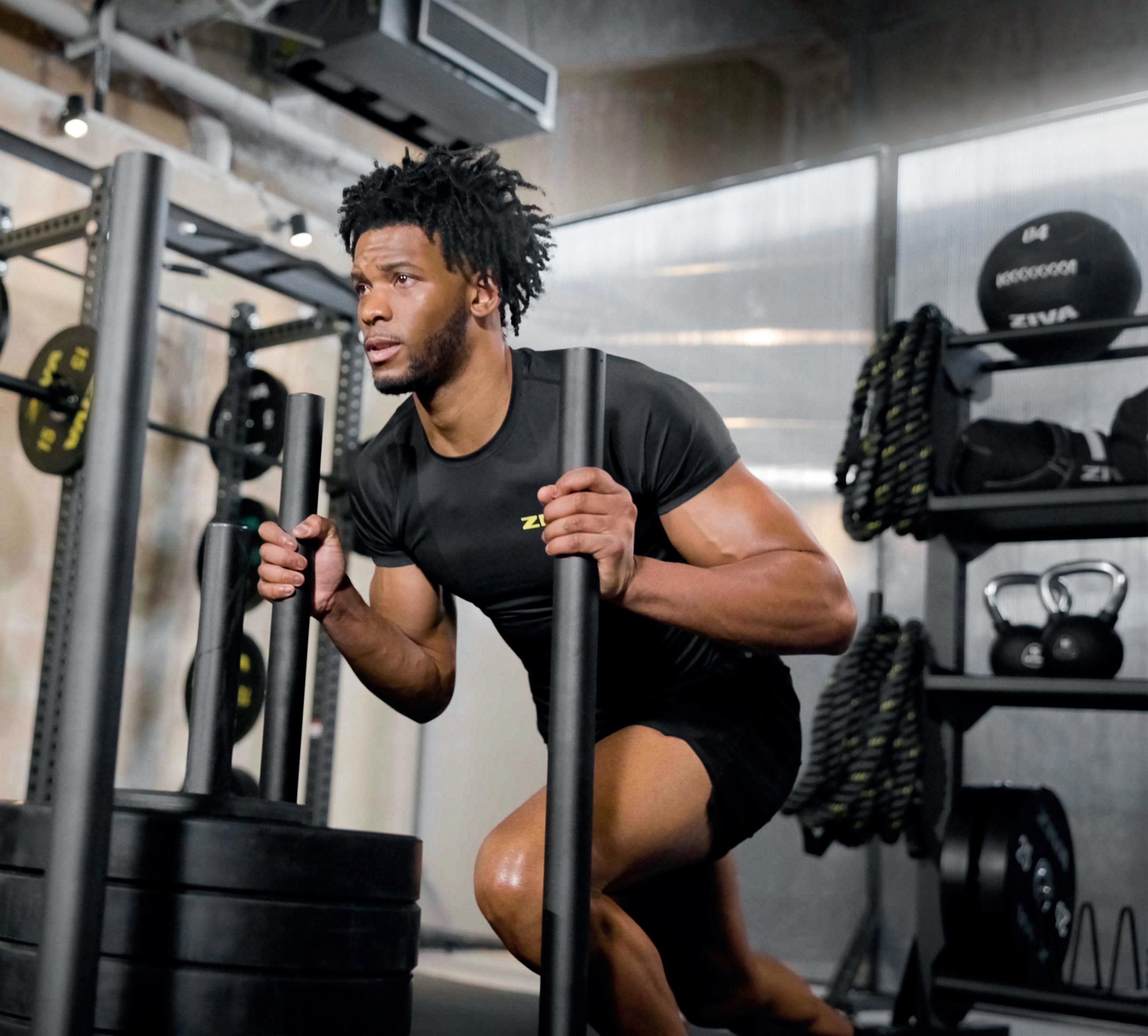
outskirts of Prague, Ziva warehouses over 2,000 different product types, giving us the ability to fulfill and deliver orders to sites across mainland Europe and the UK within 7–10 days, with 99.8 per cent of shipments delivered on time. Directed by a newly automated fulfillment system, we’ve radically reduced lengthy lead times so our customers can upgrade and grow with no wait. All of this goes to explaining why Ziva — despite our relatively low-key profile — has managed to become so trusted by so many of the most successful operators in the industry. Currently, we supply all free weights, rigs and functional accessories to over 1,600 Basic-Fit locations in Europe alone. This is a reflection of our quality and consistency, but we are also buoyed by an ability and willingness to create custom-branded ordering portals and webshops tailored to key clients’ needs. These bespoke systems allow gym operators to manage across multiple locations, approving product selections, controlling budgets, and streamlining invoicing in full alignment with company procurement procedures.
“Ziva supplies all free weights, rigs and functional accessories to over 1,600 Basic-Fit locations in Europe”
In the UK, Ziva has had an established presence going back more than a decade, with tonnes of equipment from original 2013/14 installations still performing well in clubs around the country. This has earned us a reputation for durability, reliability and long-term value in facilities that put performance over pretence.
Beginning in 2023, we began to establish a greater sales and service presence in the UK, giving operators even more reason to rely on Ziva for quality kit, delivered fast, with confidence.
For those that know us, we’ve proven that Ziva is more than a supplier – we’re a partner in performance, empowering everyone on the fitness journey with equipment that looks beautiful, performs flawlessly, and lasts. l
More: www.ziva.com
Boost member spend, retain more PTs, and scale small group training with strength-focused programs that pay for themselves on day one.
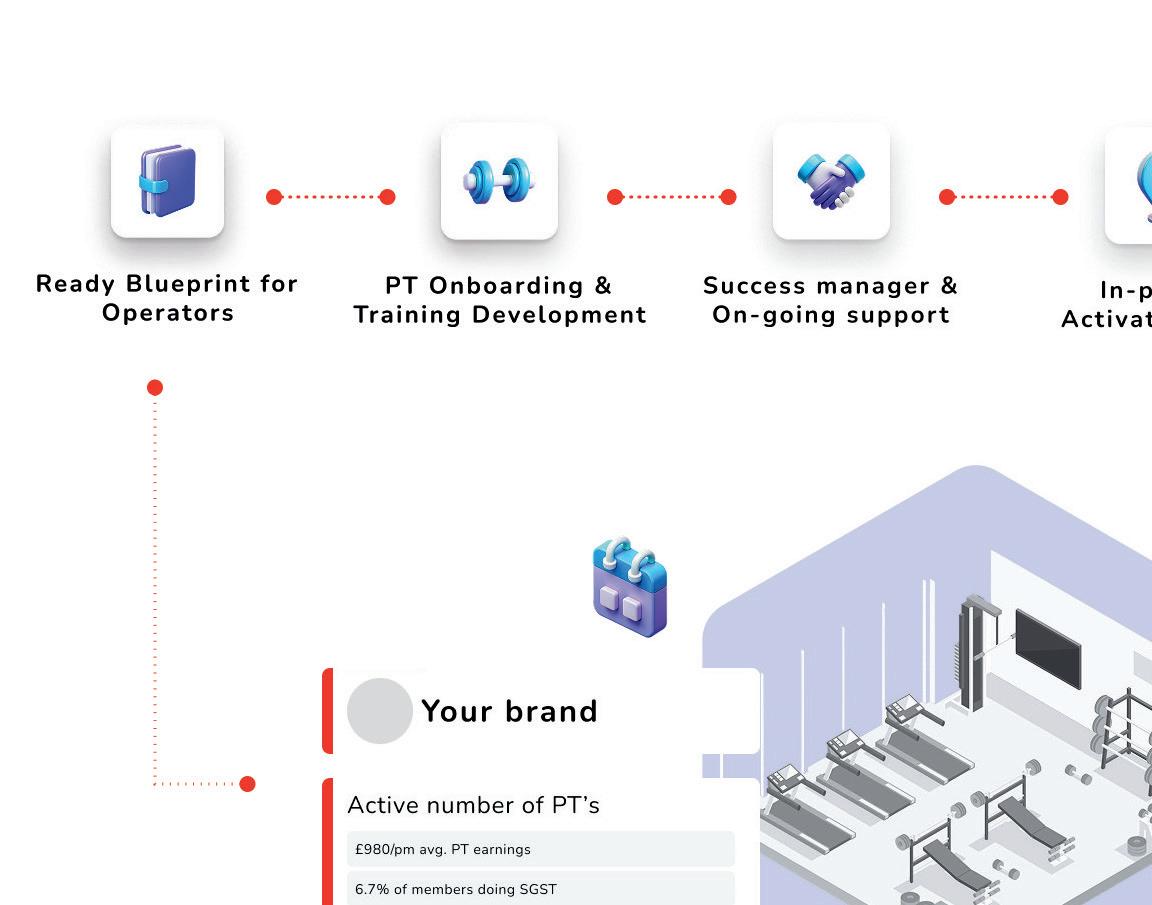

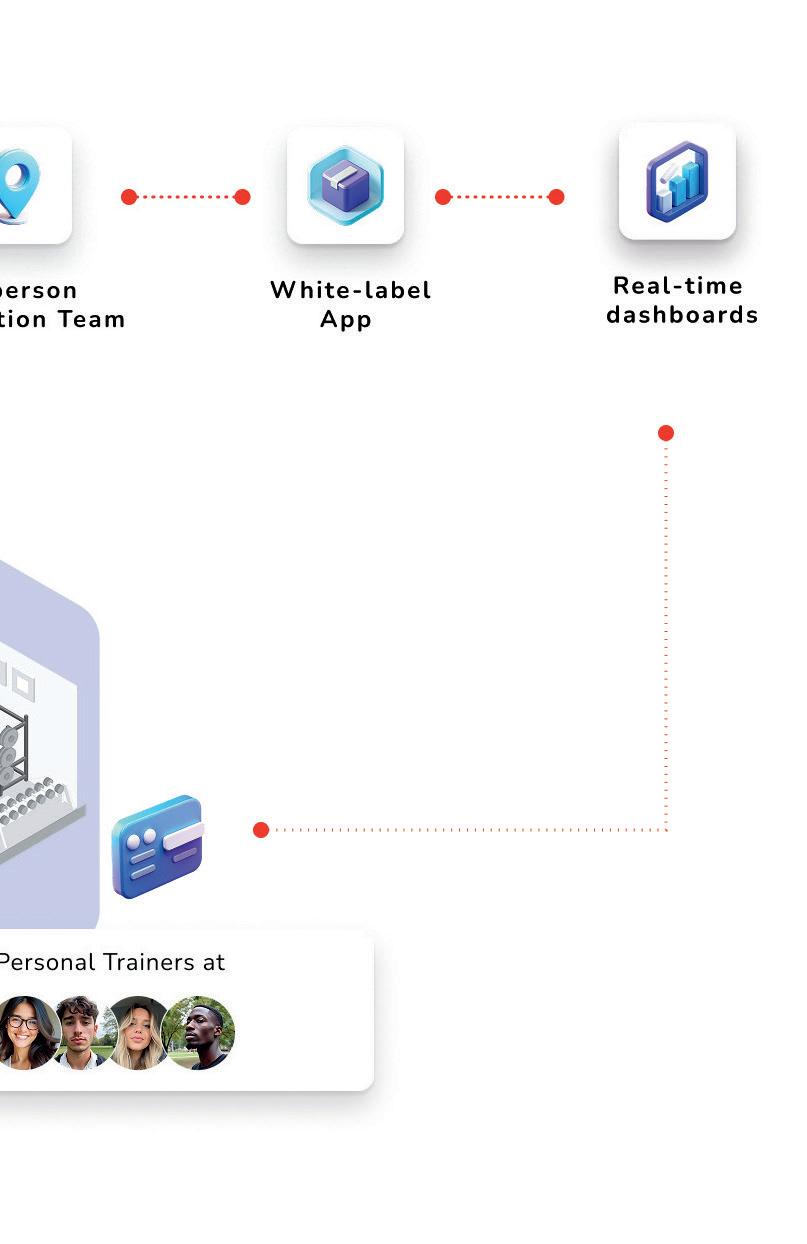
https://brawn.co.uk/



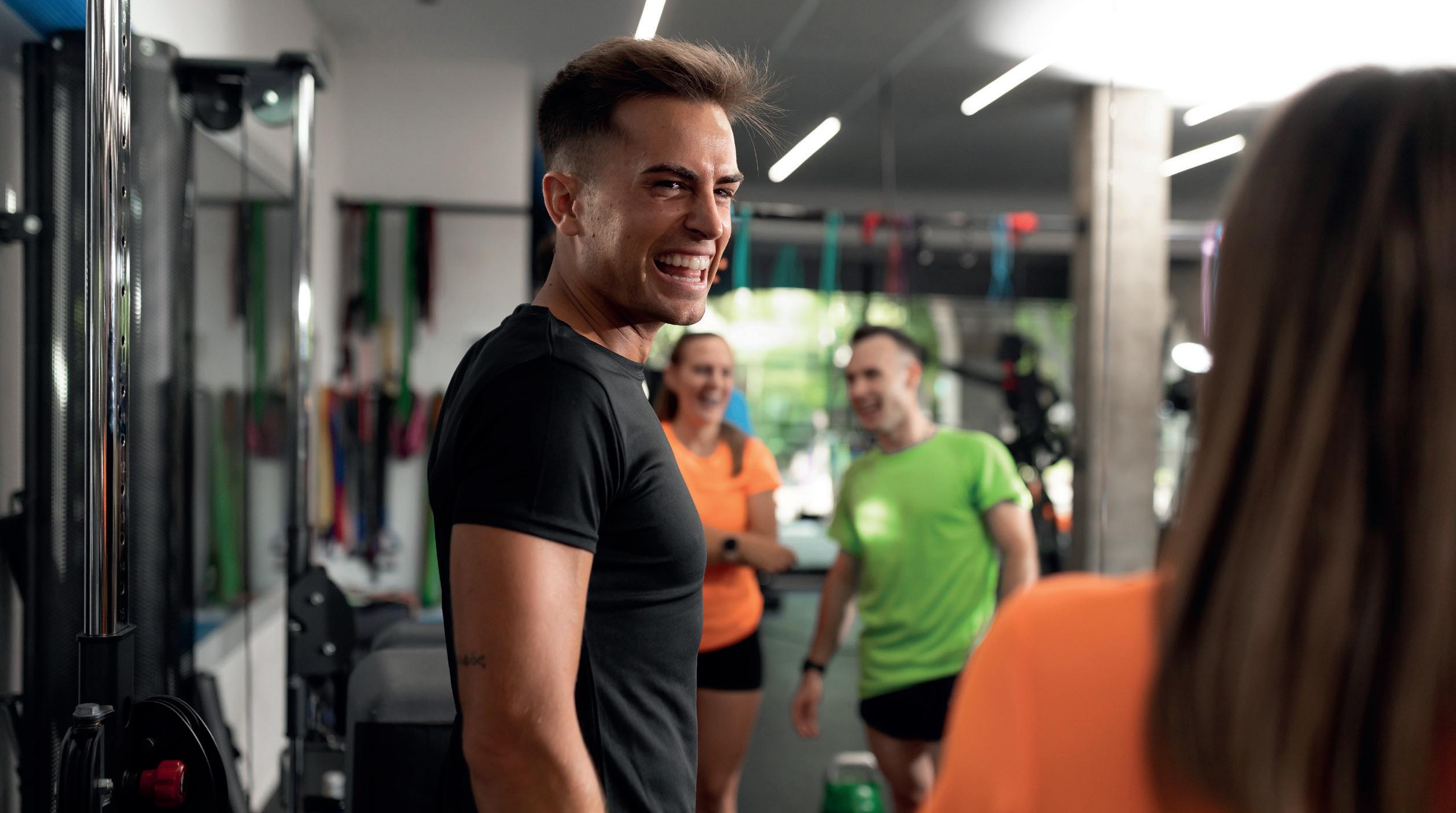
Brawn is making strength training accessible for all, with a pilot with The Gym Group proving the concept
Brawn is a tech-enabled platform helping operators unlock the power of small group strength training, combining the personalisation of one-to-one coaching with the affordability of group sessions.
Working with The Gym Group, Brawn has supported both the operator and its personal trainers to engage more members in strength training through an integrated, data-led solution.
Many members want to feel stronger and more confident, but some struggle with knowing where to start.
Traditional personal training can be out of reach financially and large group classes aren’t always set up to provide the individual attention needed to tailor results.
At the same time, many PTs are facing a challenge when it comes to scaling their business, as their earning potential is limited by time. Selling blocks of one-to-one
sessions can be challenging in a cost-sensitive market, which is a problem for great PTs struggling to build a sustainable income. This is where Brawn comes in.
Brawn offers a solution
Brawn provides an end-to-end Small Group Strength Training platform that manages everything from programming and scheduling to payments and progress tracking, so PTs can focus on what they do best: coaching.
For members, this means affordable, personalised training in small groups that still feels private.
For PTs, it’s a scalable model that increases reach, retention, and recurring income – all supported by Brawn’s plug-and-play technology
Working with The Gym Group, Brawn’s pilot programme has shown how tech-driven training can reshape gym economics, with some PTs earning as much as £300 extra each month and a greater
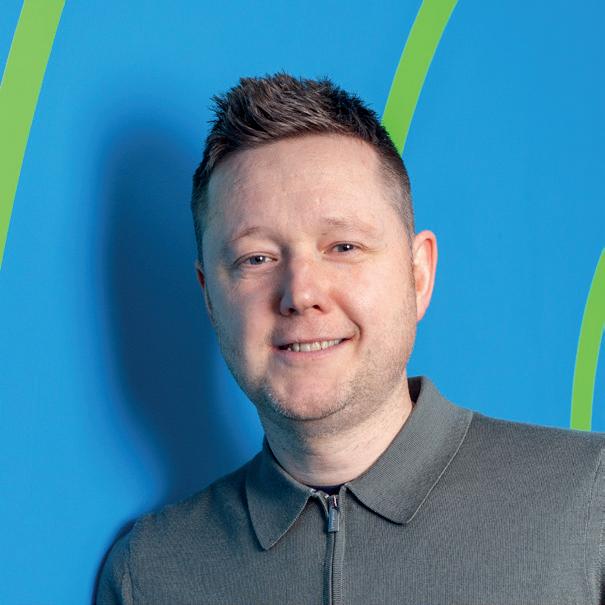
“This pilot has proven there’s huge demand for affordable, coached strength training”
Jon Baker, Operations Director, The Gym Group
number of members engaging in structured strength training.
There’s also a higher conversion rate among members from doing small group strength training to becoming one-to-one clients.
“This pilot has proven there’s huge demand for affordable, coached strength training and our aim is to support talented PTs in our gyms to build their businesses with us,” says Jon Baker, operations director at The Gym Group.
“Brawn’s goal is to make strength training accessible, inclusive and scalable and that’s exactly what we’ve achieved with The Gym Group,” says Brawn CEO, Sohail Rashid. ●
More: www.brawn.co.uk
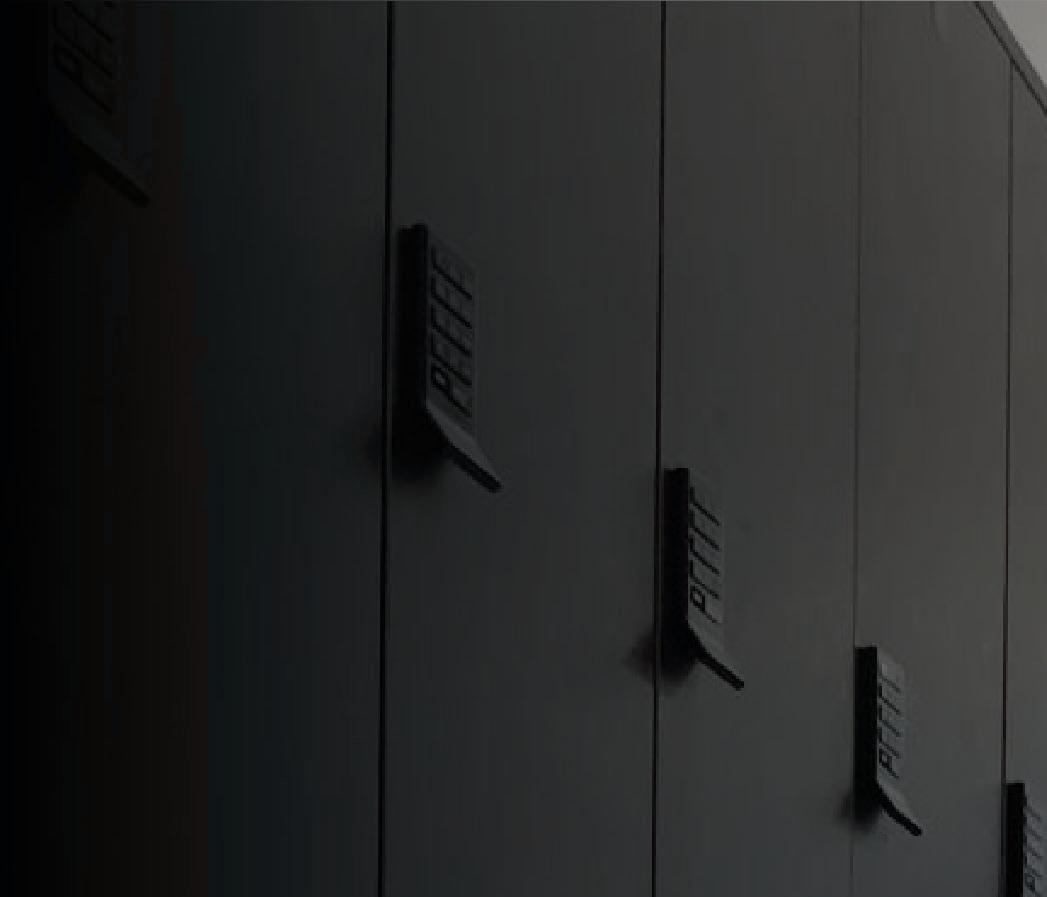
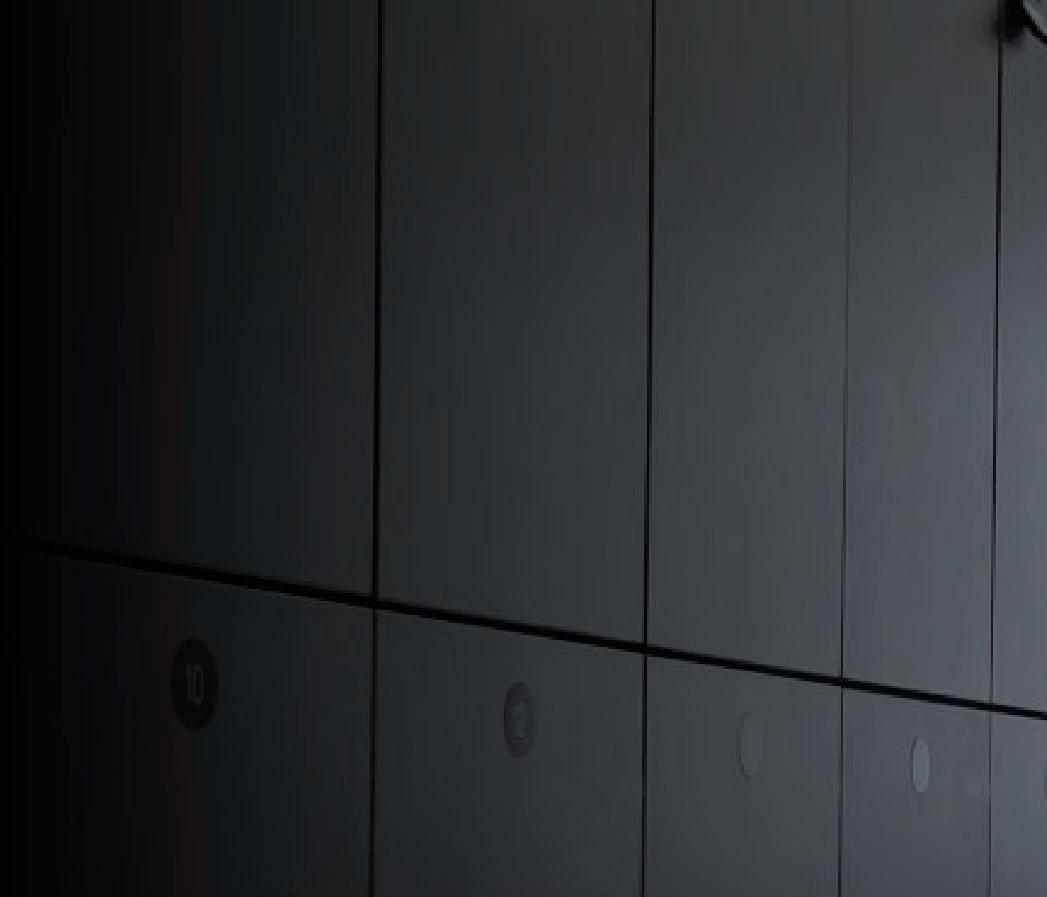

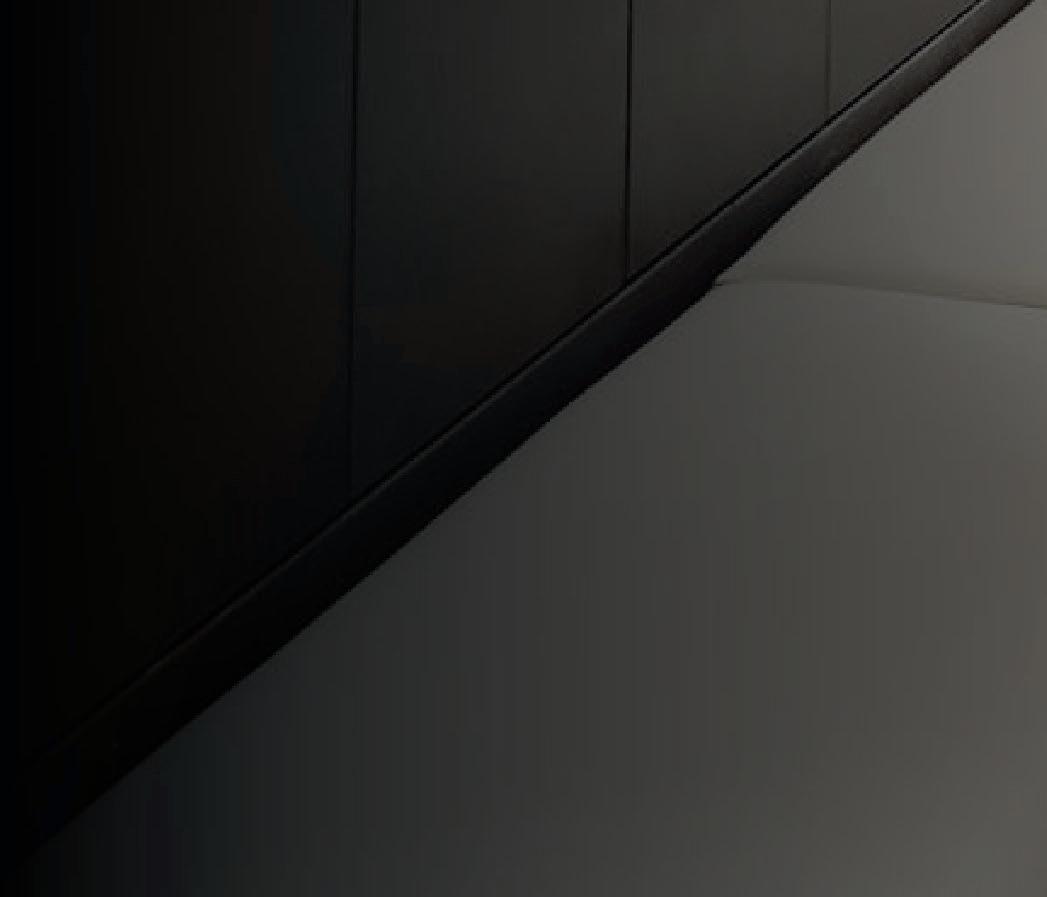
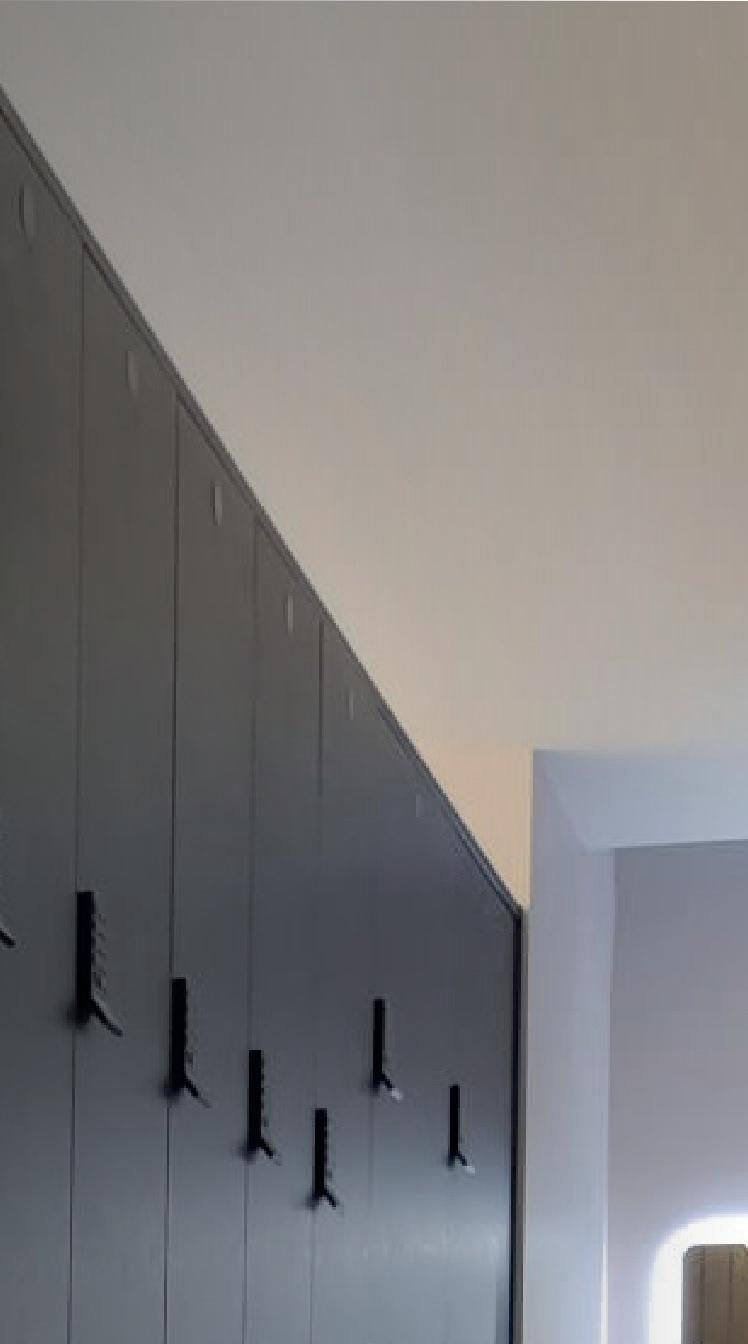
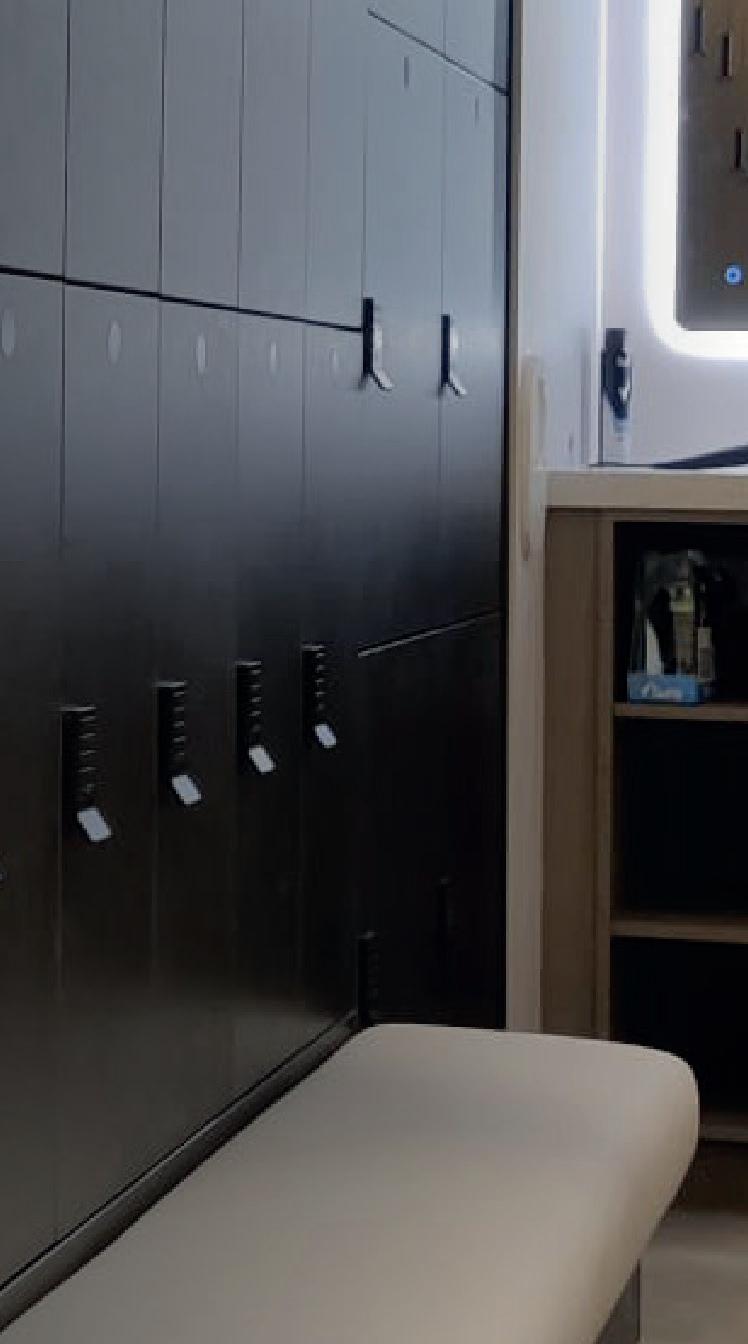

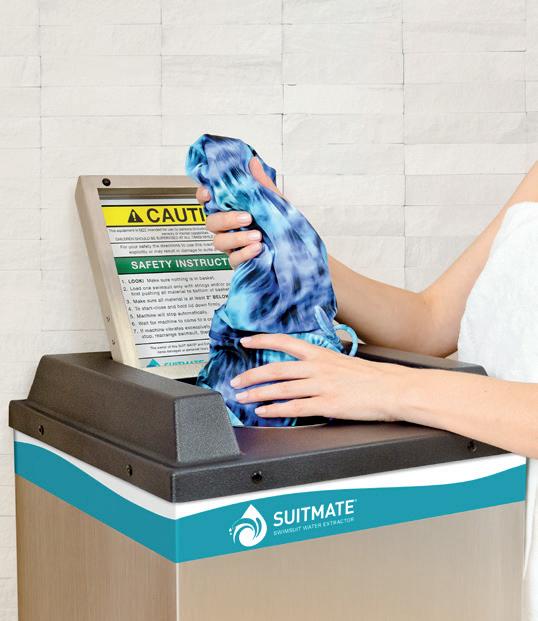

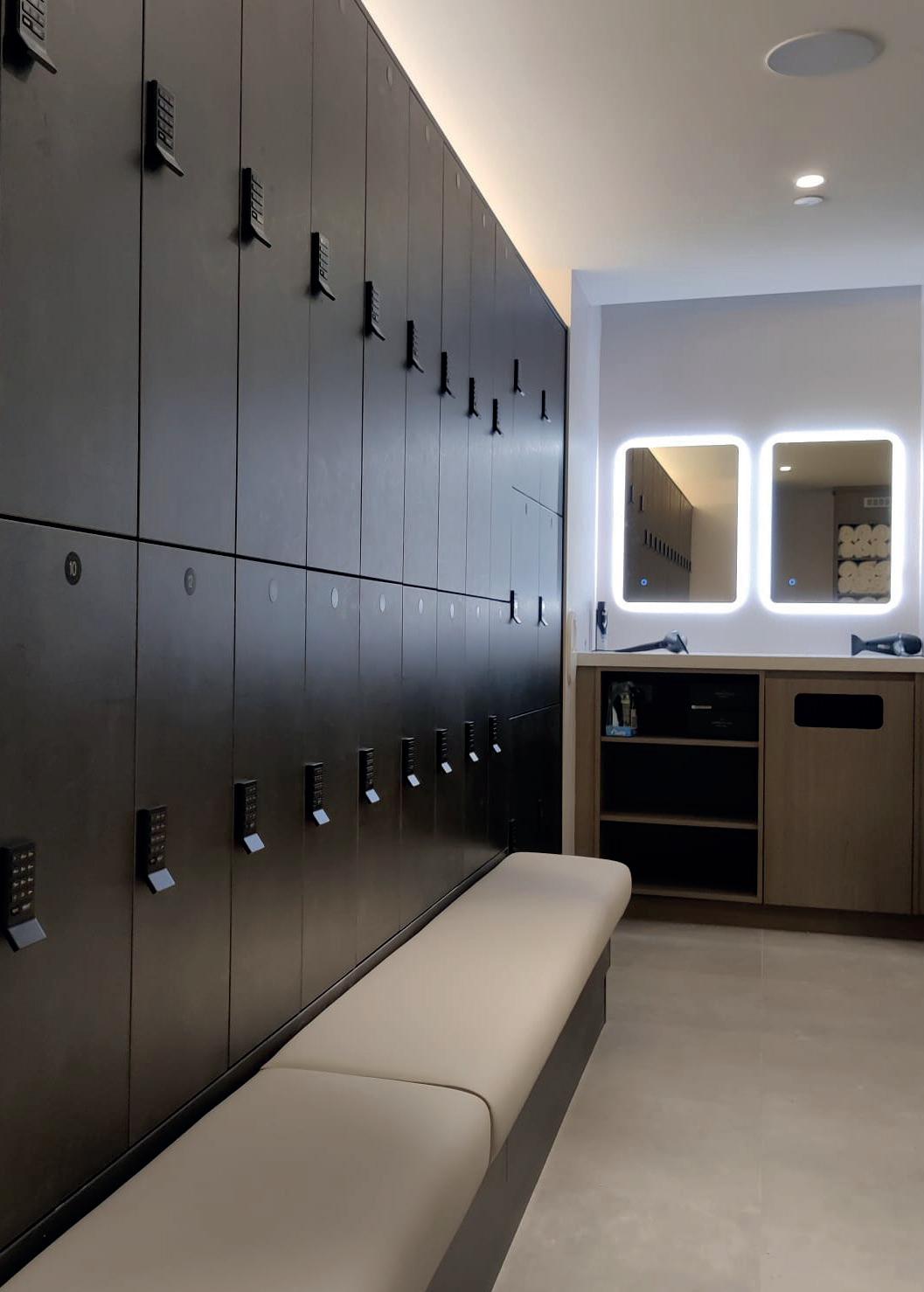


Everlast Gyms – which is part of Frasers Group – continues to prioritise member experience by partnering with Safe Space Lockers on quality-built solutions
As Everlast Gyms continues its elevation journey across the UK and Ireland, changing room design is playing a key role in shaping the member experience. To support that vision, the brand turns to Safe Space Lockers, its long-term supplier which delivers on quality, service and aesthetics.
“We’ve had a strong relationship with Gregg and Dom from Safe Space for a long time,” says Dan Summerson, MD at Everlast Gyms. “There’s an understanding in the business that the company is one of the best in the industry. Its solutions are robust, good quality and made in the UK. That’s why we have such a strong and long-standing relationship.”
Safe Space is now embedded in Everlast’s gym elevation process, supporting both legacy gym refurbishments and new openings,
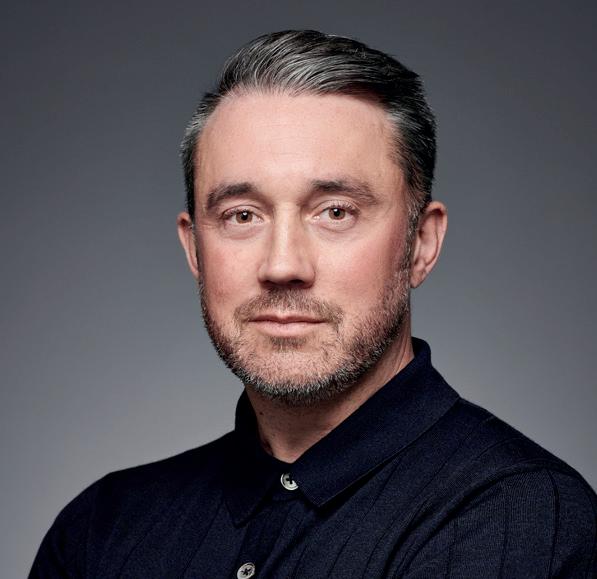
“Whenever we elevate or build a new gym, Safe Space is our go-to locker provider”
Dan Summerson, MD, Everlast Gyms
including the recently-opened Everlast Gym in Cheltenham.
“We use Safe Space as part of our gym elevation process,” says Summerson. “Whenever we elevate or build a new gym, Safe Space is our go-to locker provider.”
For the Cheltenham site, the brief focused on quality, consistency and longevity and the end result delivered exactly that. “We wanted something that fits with the design specs and the elevation and aesthetics we want for our sites, and for our members,” he says. “And we’re really impressed with the way Safe Space met the brief.”
Summerson also highlights Safe Space’s responsiveness as a key strength: “Often timelines can require a quick turnaround. Our whole team has noted that Safe Space can be really flexible and accommodating when we need them to be. For us, that’s the benchmark of a great partner.”
He adds: “Safe Space has served us really well so far and that’s exactly why we continue to use the company as part of our long-term elevation journey. ●
More: www.safespacelockers.co.uk
For more insight, or to get in touch with the companies featured, visit www.fitness-kit.net and type in their keyword
Fold has launched a new Pilates reformer machine designed for facilities that need to create flexible spaces.
Available in six colourways, the reformer incorporates the Easi-Fold system with assisted spring and ‘parent and child’
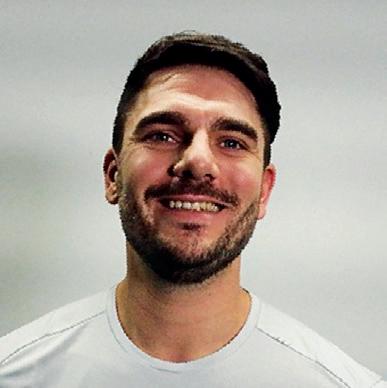
“We’ve built a reformer that sets a new standard ”
Matt Harras
wheel technology, which the company says makes it ‘the easiest fold on the market’.
The machine also has headrest support, upgraded springs and a maplewood frame that can be paired with mocha, beige and black upholstery. It’s available to purchase from October 2025.
Matt Harras, co-founder of Fold, says: “Our new reformer creates a true hybrid solution for studios and commercial health club operators. With smarter storage and new colourways, we’ve built a reformer we believe sets a new standard for studios worldwide.”
fitness-kit.net keywords
features


This update signals a shift in how gyms deliver data-driven strength training, believes Oskar Ragvald
Eleiko has launched its Next Generation Barbell Range, engineered for precision, longevity and – for the first time – offering smart sensor integration.
The brand, backed by 65 years of barbell expertise, has refined the feel, performance and durability
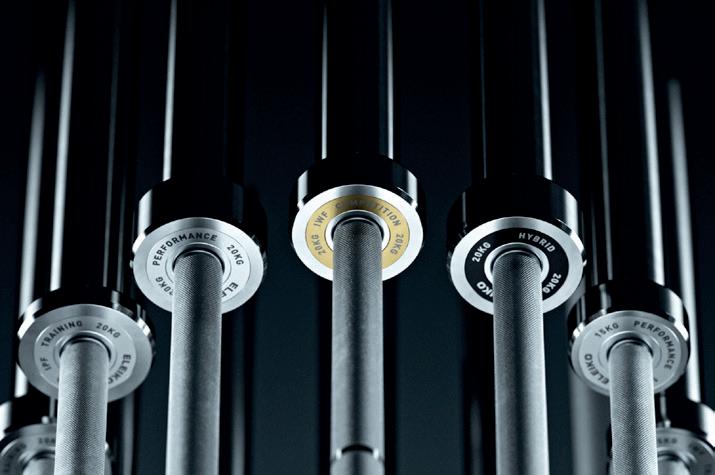
A colour-coded ID system
of the product, while introducing patent-pending technology and an intuitive bar selection system to make training more connected and personalised.
Bars covering a wider range of lifting disciplines, from competition to training, are now sensor-ready. The patented sensor integration capabilities allow custom-made sensors to be placed directly into each bar sleeve, giving lifters and coaches accurate quantitative and qualitative analysis and programming functionality, for a new perspective on strength training.
“Custom-made sensors can be placed into each bar sleeve”
Oskar Ragvald
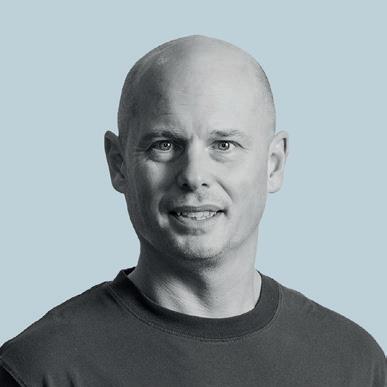
A colour-coded ID system simplifies bar selection. The bar ID Ring mirrors the end-cap colour system and includes bar details visible in any rack position. Eleiko’s commercial director, Oskar Ragvald, says: “This update signals a shift in how gyms deliver data-driven strength training.”
fitness-kit.net keyword
Eleiko
Starpool’s Recovery Class delivers a wide range of options for health clubs
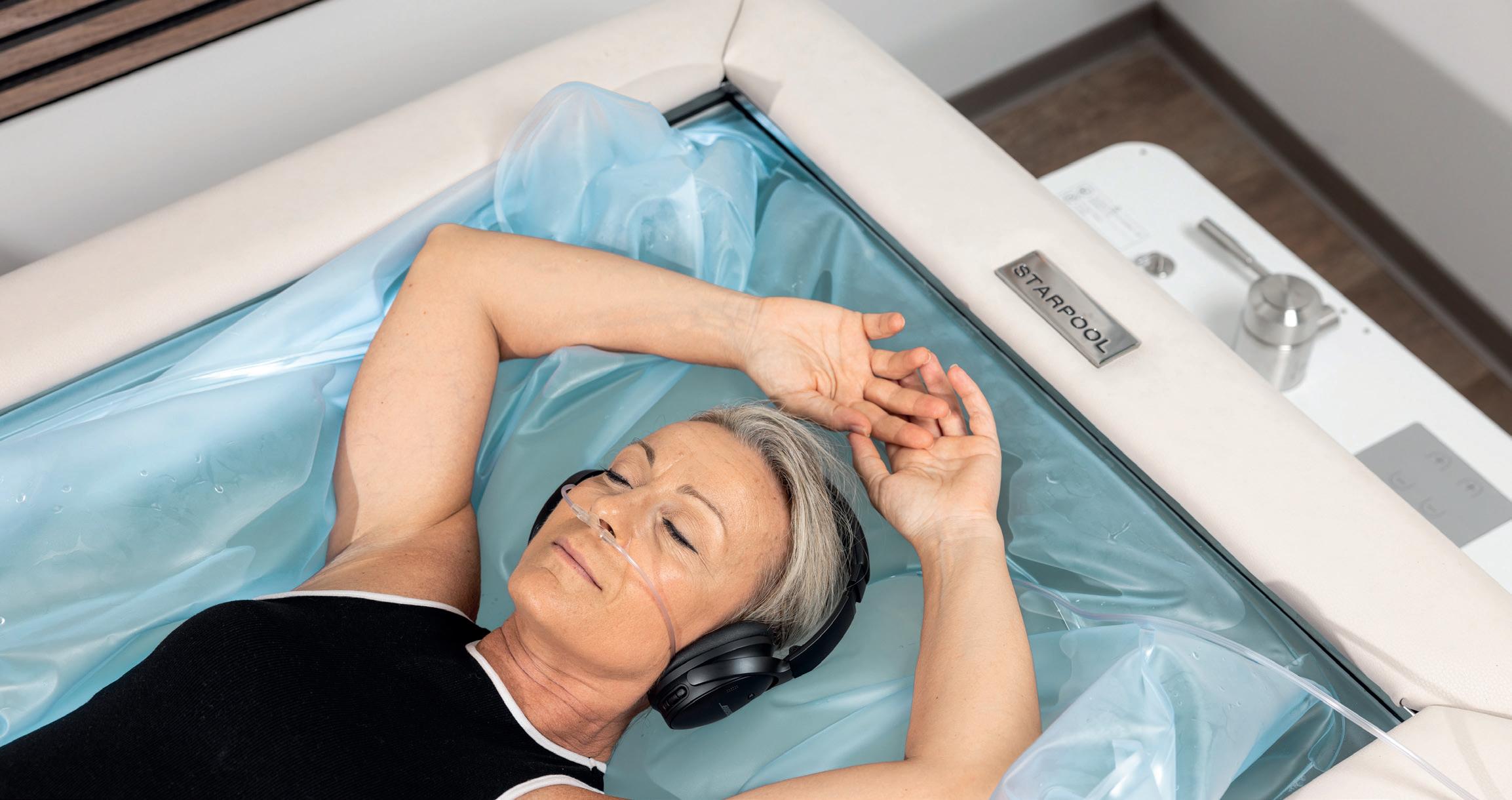
Starpool’s Recovery Class heralds a new era of sciencebased wellness in fitness, says Riccardo Turri
Starpool’s Recovery Class is an innovative wellness format designed for large fitness centres with high user traffic and diverse needs. It introduces a dedicated space for pre-workout activation, post-training recovery and rest-day regeneration, built around scientifically-validated protocols developed by Starpool’s Scientific Research Department.
Recovery Class offers two distinct programme types: Functional Programmes that can be integrated into training routines and guided by personal trainers to optimise warm-up and recovery phases and Personal Health Programmes that are focused on prevention and mental wellbeing, making them ideal for engaging members who are more wellnessoriented than workout-driven.
Heat, dry float and cold therapies can be combined to create a recovery suite
These programmes are supported by advanced technologies that leverage heat, dry float and cold therapies.
Contrast therapy for recovery
Heat therapy is delivered through Sport Sauna and Sport Infrared Cabin, designed to stimulate the body’s natural physiological responses. Sport Sauna provides intense, dry heat inspired by the Finnish tradition, ideal for muscle activation and deep recovery. Sport Infrared Cabin uses targeted infrared rays via ergonomic backrest lamps to deliver deep, localised heat, enhancing flexibility and relaxation.
Dry Float Therapy is offered through the patented Zerobody Dry Float system, which allows the body to float on 400 litres of
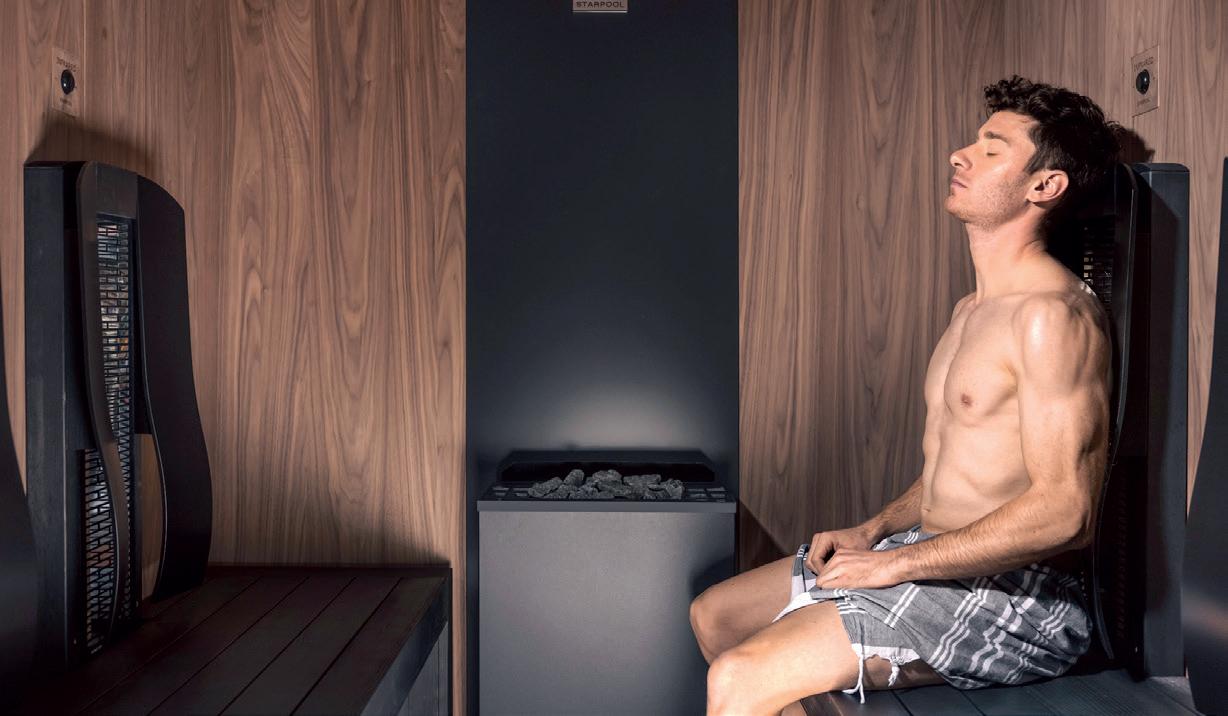
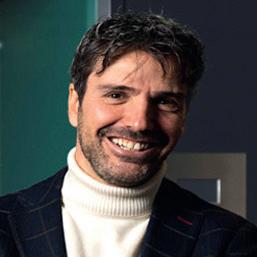
“With Recovery Class, we bring together science, technology, and design to create a complete recovery and wellness experience”
Riccardo Turri, CEO, Starpool
warm water without getting wet. It promotes mental and physical recovery by reducing sensory input and weight perception.
Cold Therapy features Ice Bath Pro, a solution for immersion in water between +4°C and +8°C. Cold exposure helps reduce inflammation and soreness, supports hormonal balance, and enhances athletic recovery.
For operators, Recovery Class is a smart business opportunity: it enhances service offerings, repurposes underused spa areas, requires no supervision, and increases engagement, retention, and member acquisition.
More: www.starpool.com
Starpool fitness-kit.net keyword

Connect gives end users real-time feedback
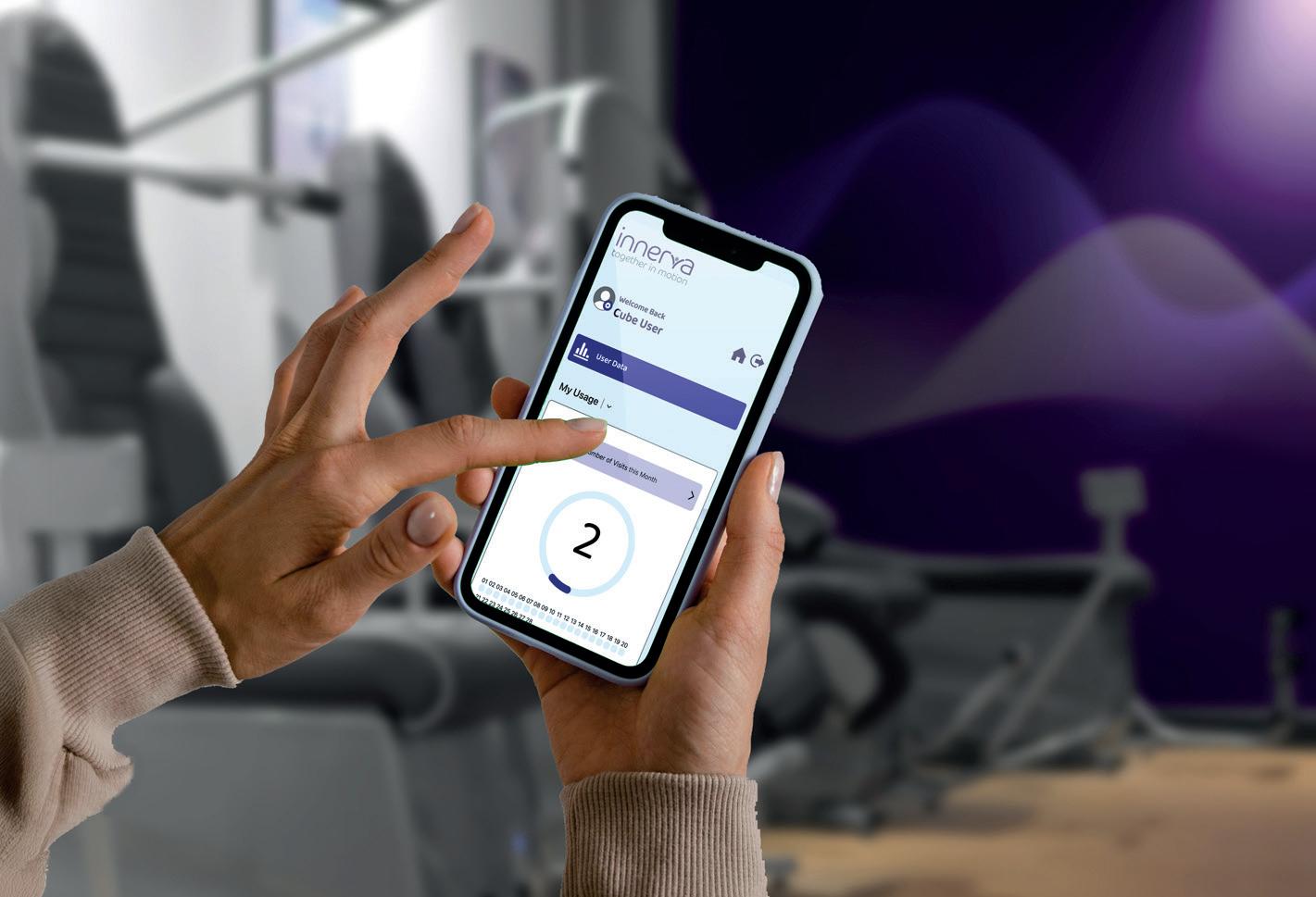
Innerva has launched Connect, a technology platform designed to power the next evolution of its power-assisted exercise equipment and support active ageing.
The web app gives end users real-time feedback on sessions and performance to boost motivation and help them achieve their exercise and rehabilitation goals. It also allows customers to manage bookings and membership, and gives access to resources such
as information on active ageing and equipment usage guides. The platform was co-designed with older adults and academic partners, including the Advanced Wellbeing Research Centre at Sheffield Hallam University, Jon Hymus, MD of Innerva, says: ”Connect not only enhances the activity experience for older adults and those living with chronic health conditions, it also provides the information needed to build
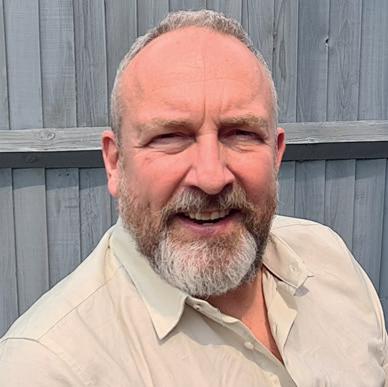
“Connect enhances the activity experience for older adults”
Jon Hymus
partnerships with the health sector. The platform insights demonstrate the impact of their active wellbeing offer, providing meaningful data to support such partnerships.
fitness-kit.net KEYWORD
Innerva
Orca is described as ‘the world’s fi rst forward-tilt incliner’ for intelligent recovery, designed to deliver two to three hours’ worth of conventional rest
in a fraction of the time.




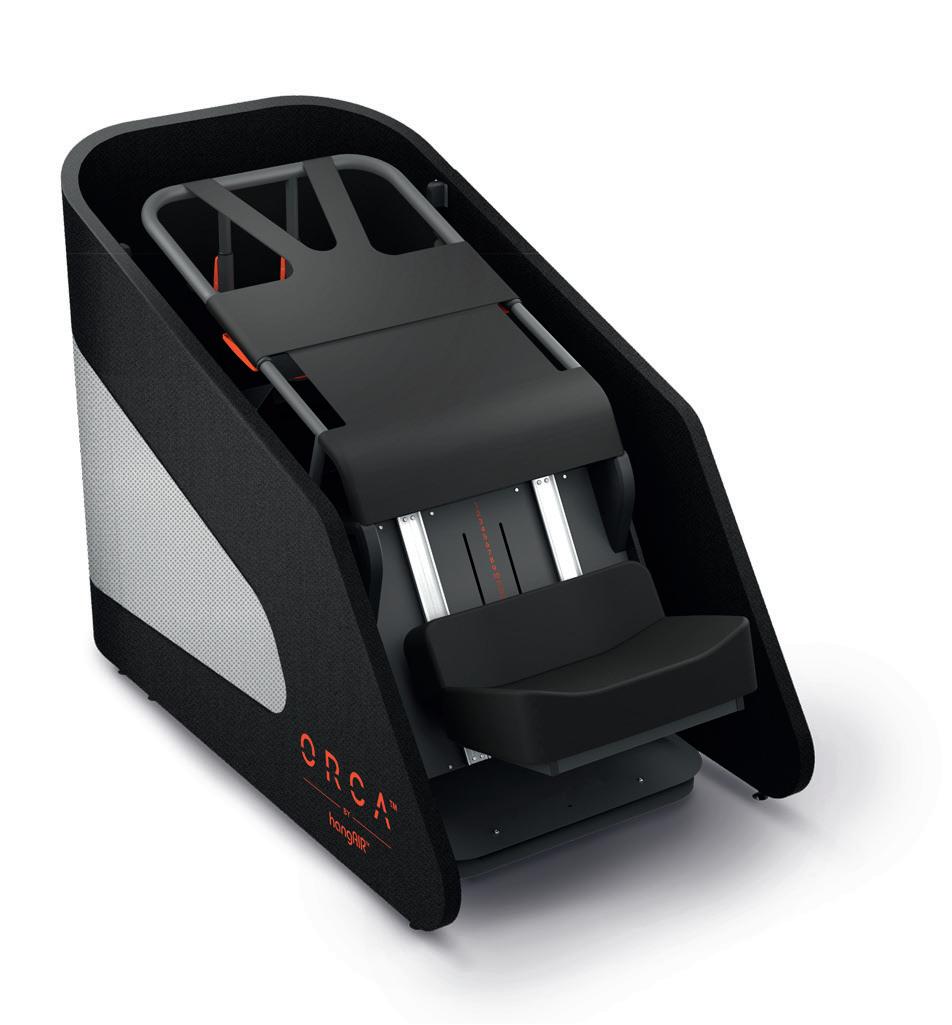
It works not by reclining the body like traditional solutions, but by shifting recovery to the prone-forward posture. Inspired by NASA’s zero-gravity and Alexander Technique insights, this position is where the body naturally lifts its own weight off the diaphragm and lungs, allowing breath to return without effort.
“The motion is inspired by Alexander Technique”
the diaphragm and lungs, allowing
It also takes cues from nature to incorporate a nurturing rocking motion, as well as delivering psychoacoustic soundscapes.
to incorporate a nurturing rocking
Prokic, was inspired to
rather than a recliner
Founder and CEO Mirjana Prokic, was inspired to



create Orca after her own personal challenges. She says: “After years of constant travel, high-pressure decision-making and chronic sleep deprivation in my role as a global executive, I hit burnout.
“That’s when the journey began: a question that drove seven years of science, design and innovation – what if recovery could happen in 10–20 minutes, anywhere, without any external input or instruction?”
fitness-kit.net KEYWORDS
Mirjana Prokic Orca

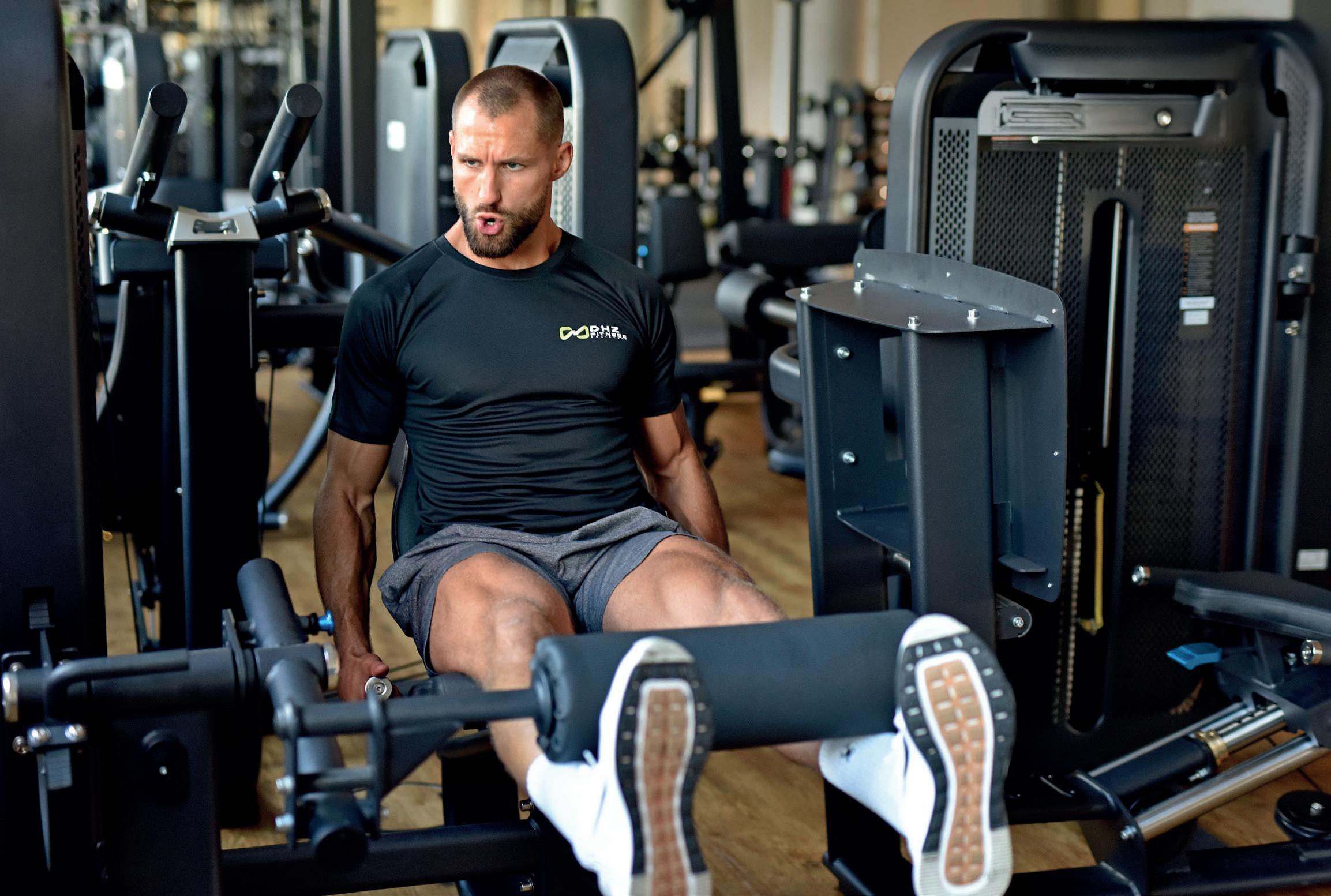
Graham Bertrand drops the truth: DHZ equipment from PSLT is a game-changer for every gym
In today’s competitive fitness market, outdated equipment just won’t cut it. That’s why PSLT, the exclusive UK distributor of DHZ, is helping gyms upgrade with high-performing, stylish and reliable strength and functional equipment.
Trusted by major fitness brands across Europe – including Fitness First, McFit and Holmes Place –DHZ delivers exceptional durability, performance and design. Whether you’re refreshing a single zone or revamping an entire site, DHZ has a solution to suit your space.
From boutique studios to leisure centres, PSLT offers smart, scalable solutions using DHZ’s versatile product lines, which include Evost III – selectorised strength machines which are built for busy gyms, combining consistent biomechanics with modern aesthetics and Fusion Line – dualfunction machines that are perfect
for premium clubs needing to save space without limiting variety.
Also on offer are power racks and free weights designed for strength and longevity in performance zones and the Defender Line of plate-loaded equipment for serious lifters and PT-led training.
DHZ also offers the Booty Range of female-focused machines which are built for biomechanics and inclusivity and Titan Extreme which is designed for elite functional training environments.
Graham Bertrand, CEO of PSLT says: “Upgrading doesn’t have to be stressful with end-to-end support from PSLT, which offers a full-service solution, including equipment bundle deals and trade-in options, as well as the professional removal and recycling of old kit.
“You’ll also enjoy a whiteglove delivery service, expert installation and ongoing support after installation, meaning minimal downtime and maximum impact.”
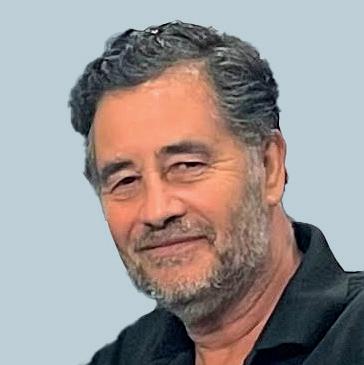
“Upgrading doesn’t have to be stressful with end-to-end support from PSLT, which offers a full-service solution” Graham Bertrand, CEO, PSLT
Visualise. Plan. Install.
PSLT works with you to design custom floorplans that optimise training space, enhance flow and elevate the member experience. From initial concept to final install, we’re here to support your vision. Your equipment shapes your members’ experience and your brand reputation. With DHZ and PSLT, you can upgrade with confidence by calling +44 (0)1782 280855 or emailing sales@pslt.co.uk. More: www.hcmmag.com/DHZ
PSLT fitness-kit.net keyword


Tap into HCM ’s comprehensive supplier directory and profiles to get in touch with the industry’s leading suppliers of products and services to power your business

CLICK HERE to search for a supplier on HCM’s Company Profiles Hub












CLICK HERE to visit the HCM Handbook Company Profiles









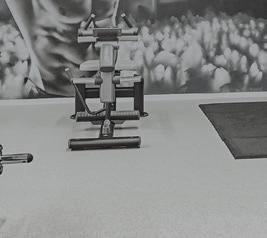


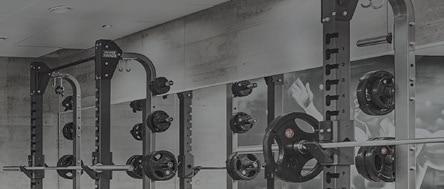
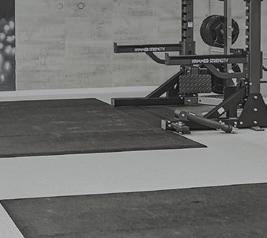
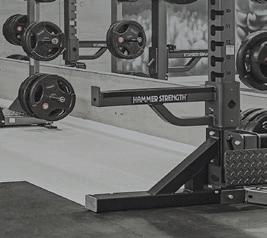







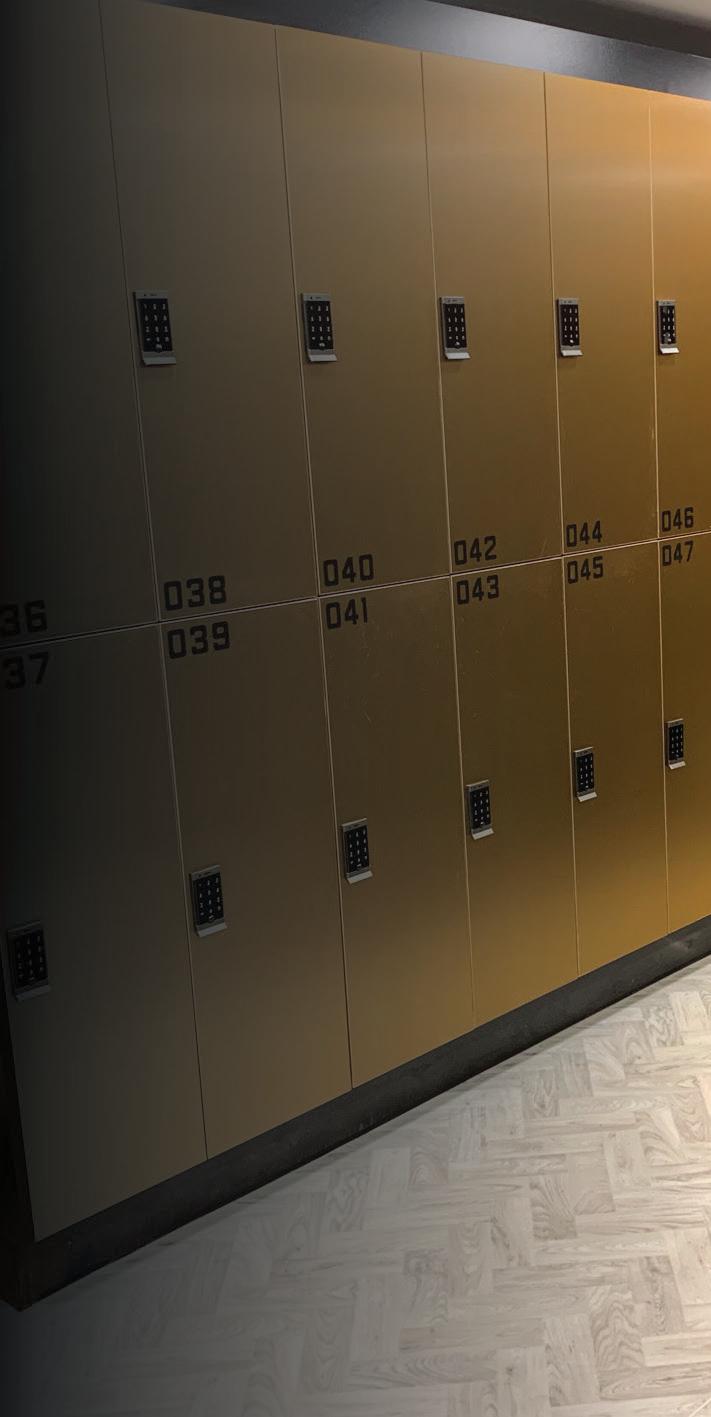



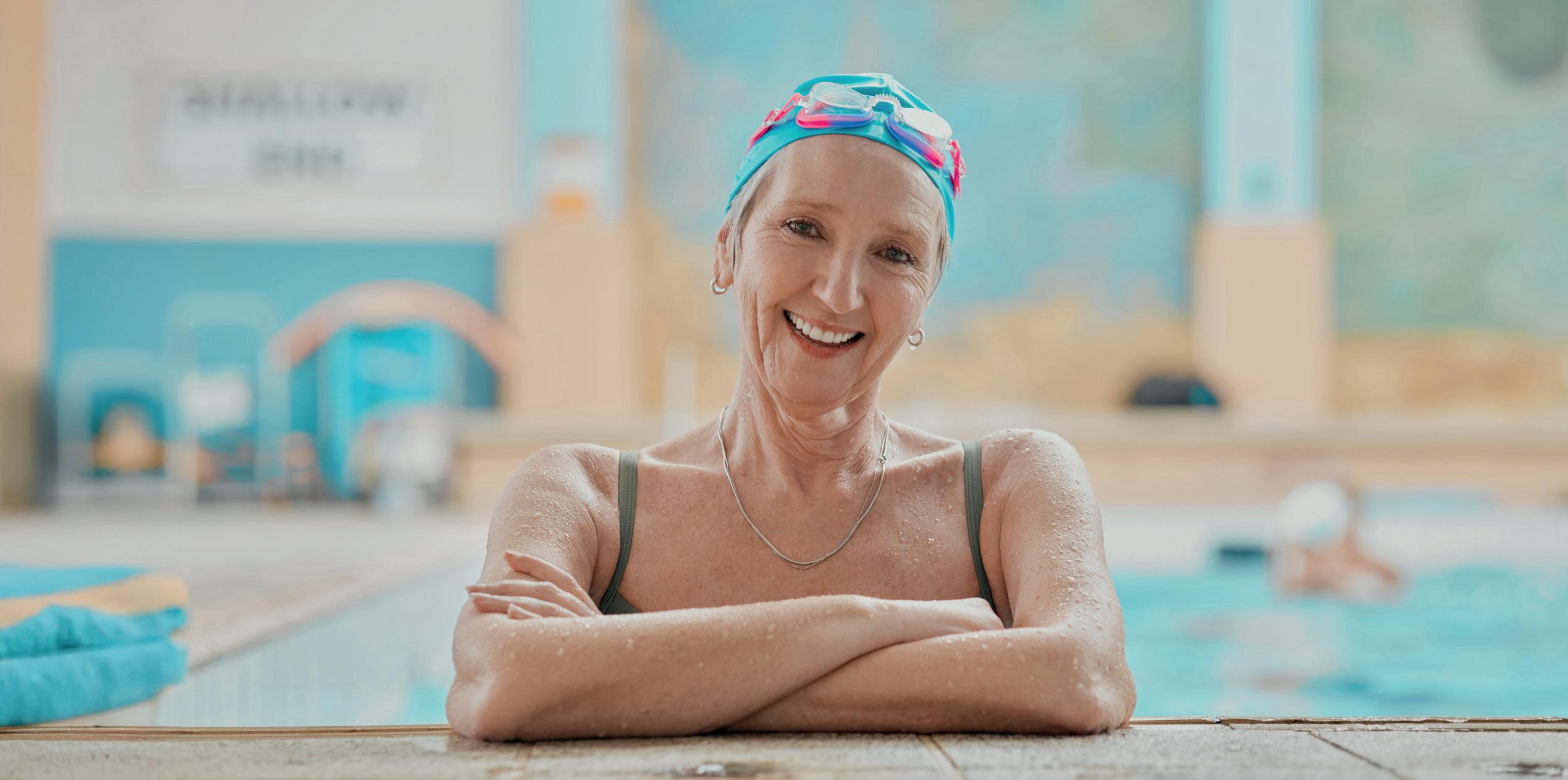
Broken hearts are real and exercise, such as swimming and indoor cycling, can help heal them, says a research team from the University of Aberdeen
Aworld-first study has found that cognitive behavioural therapy (CBT) and exercise can successfully treat Takotsuba syndrome, also known as a broken heart.
University of Aberdeen researchers have recently completed the world’s first randomised trial of treatments for the syndrome, that is often mistaken for a heart attack, even by medical professionals.
Scientists believe the phenomenon occurs as a reaction to a surge of adrenaline to the heart after extreme emotional or physical stress, although some cases have no known trigger. The heart may not return to normal and patients have twice the risk of death compared to the general population.
Funded by the British Heart Foundation (BHF), the university has been studying the illness since 2010. Researcher Professor Dana Dawson says: “This is the strongest interaction of where mental state affects physical health that we know of in medicine.”
results of the study
The results of the trial – which compared 12 weeks of CBT, 12 of exercise and 12 of standard care – involved 76 patients with an average age of 66, of whom 91 per cent were women. Patients were randomly assigned to receive CBT, the exercise programme, or standard care. All continued to receive the care and treatment recommended by their cardiologist.
The CBT group had 12 one-to-one weekly sessions, as well as daily support if needed, while
This is the strongest interaction of where mental state aff ects physical health that we know of in medicine
the exercise group completed a structured exercise programme which included indoor cycling, treadmills, aerobics and swimming. The number of sessions and intensity were increased each week. Researchers used an imaging technique, called 31P-Magnetic Resonance Spectroscopy, which allowed them to study how patients' hearts were producing, storing and using energy – the heart’s metabolism. Previous research had shown that patients with Takotsubo syndrome have a significant impairment to how their hearts handle energy and that this persists long term. However, the imaging showed that after 12 weeks of CBT or exercise, there was an increase in the amount of fuel available to the hearts, which was not seen in people who had standard care.
The average distance patients could walk in six minutes increased, as well as their VO2 max, in both the exercise and CBT group. In contrast, there was little change in the group that received standard care. Researchers will now test whether the treatments improve patients’ health, and reduce their risk of premature death, over a longer period. ●
More: www.hcmmag.com/brokenheart








































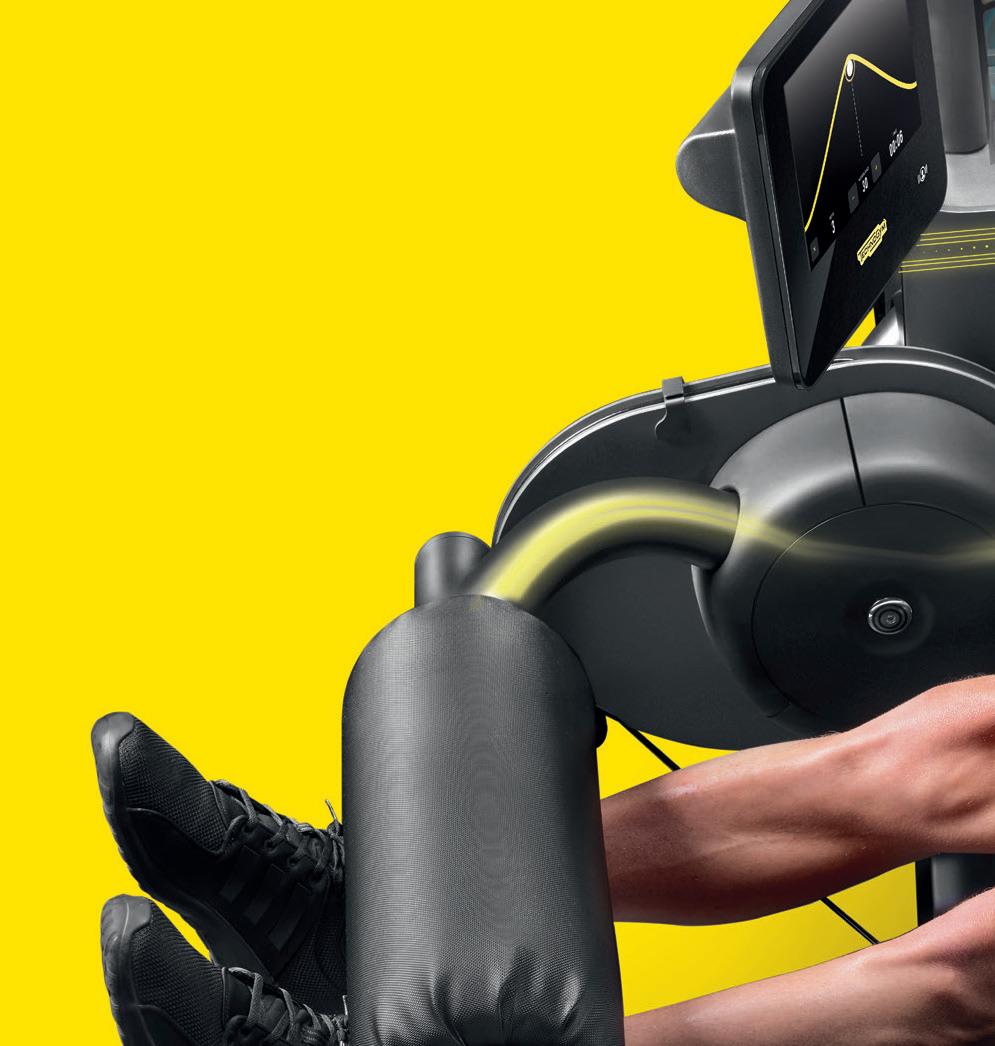
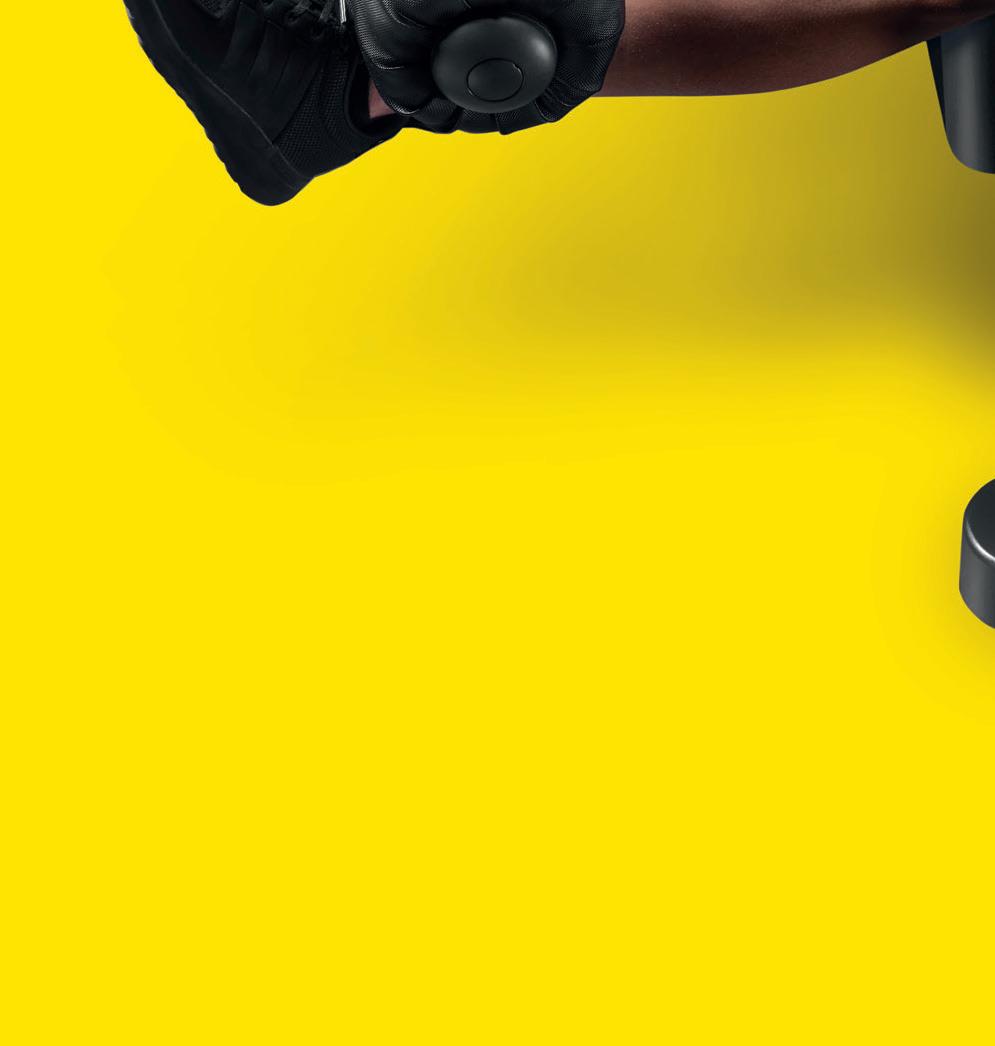

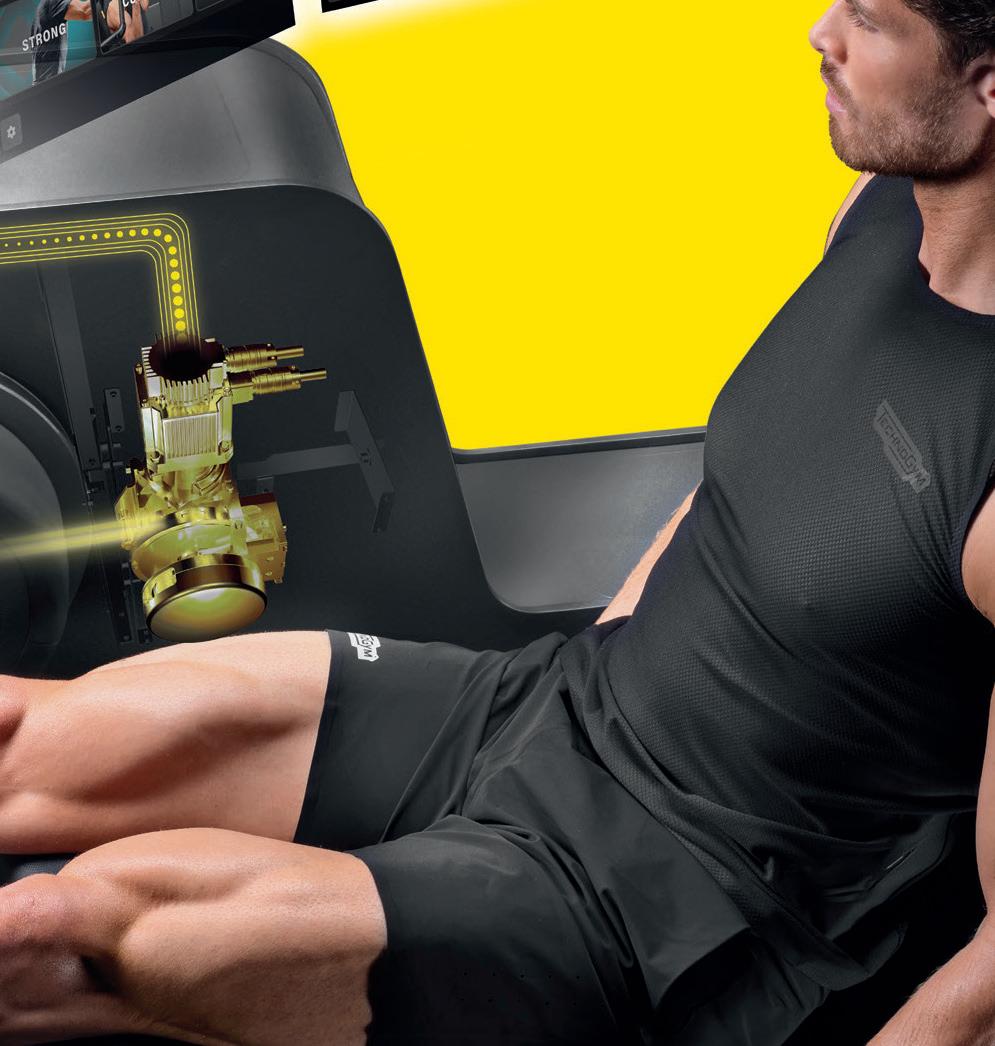

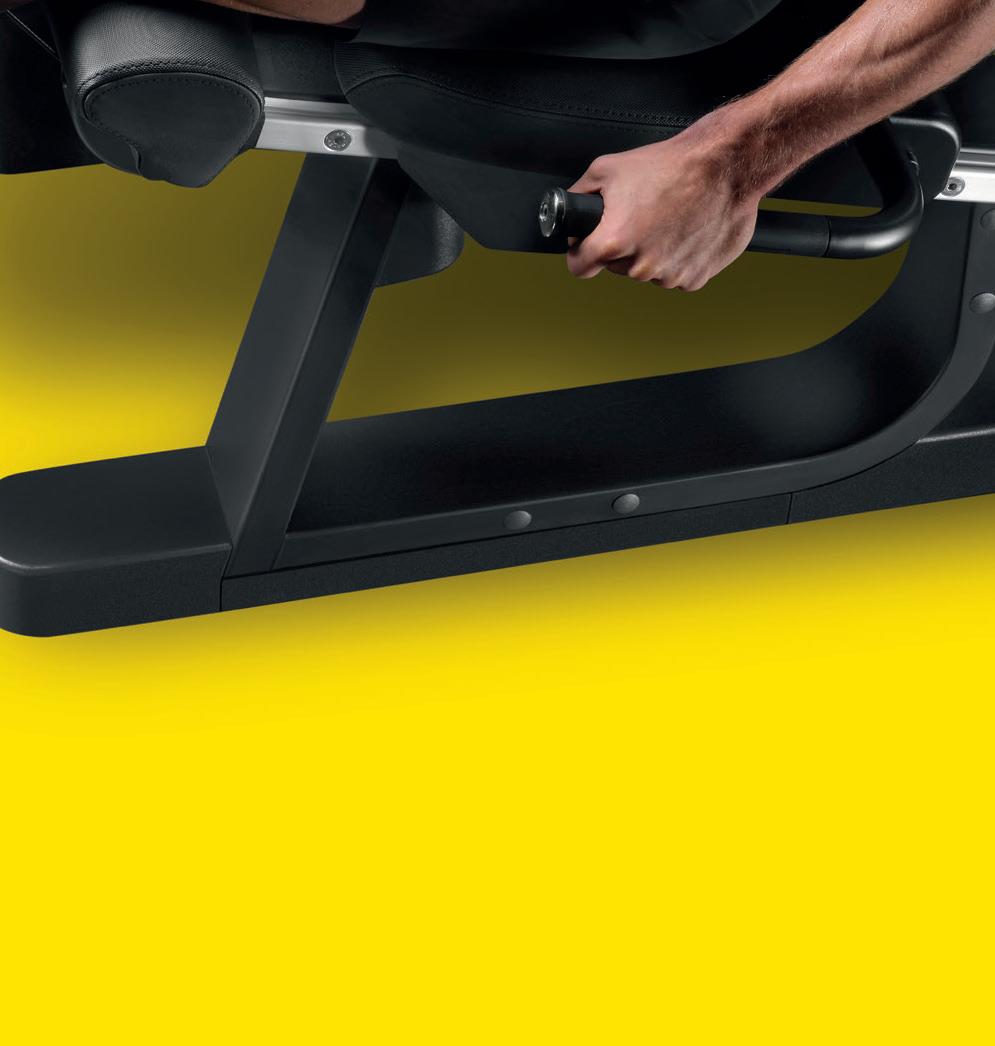
Avoid the most common strength training mistakes and supercharge your workouts. Thanks to the patented Biodrive system, select your goal and automatically receive the optimal resistance and biofeedback for it, along with the correct workload, range of motion, tempo, and rest time. Biostrength adapts to you for +30% results in the same time.





